index card
description: card stock cut to a standard size, used for recording or storing small amounts of data
348 results
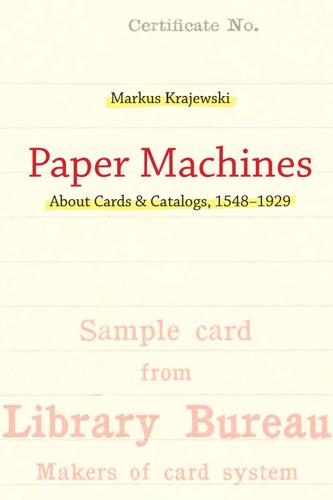
Paper Machines: About Cards & Catalogs, 1548-1929
by
Markus Krajewski
and
Peter Krapp
Published 18 Aug 2011
“Money does not pulsate in the financial veins with the same regularity as in humans, but shares with the latter that a momentary blockage can cause danger or death.”56 A disturbance in the materiality of the flow of thought, one might add, is the threat of outdated, missing, or faulty index cards. It is the insufficient quantity of index cards that leads to effacement or malnourishment. “I feed the computers with my data.” Only in their sheer abundance can citations create something new. The database emits, donates blood, gives life, on a massive scale. The circulation of index cards thrives on abundance as well—the more the better. “I am the database. Bleeding in the crowd.” 57 Balance Sheet In their time, men like Moser could proudly refer to their index cards as a text-generating technology, contributing to the Enlightenment with an almost uncanny production rate.
…
In this book, I seek to write this history from the material, thus allowing many voices to be heard, naturally at the risk of discordant polyphony. However, as the task consists of tying together episodes involving an arrangement of paper slips and their respective links, I will allow index cards to lead the way.7 This very box of index cards may leave some issues aside owing to the limited scope of the study—and sometimes simply owing to lack of information. Its first deficiency is thus an inability to write a universal story of index cards. Therefore, the trajectory does not begin at the dawn of history, and does not describe Mesopotamian, Egyptian, Greek, or Roman methods of cataloging stored texts. Also excluded is the famous library of Alexandria with its equally famous librarian Callimachus, who affixed inventories of texts on clay pinakes on the shelves, as well as the Roman laterculi or administrative registers.8 For neither are paper machines—both use different materialities, the by far more valuable and costly papyrus on the one hand and clay on the other.9 Instead, we begin card index history in the sixteenth century, with an alleged origin that, all misgivings about choosing one such entry notwithstanding, can serve as a provisional starting point for paper catalogs, even though one could have started earlier.
…
Nor is this study able to remedy a lack that Foucault proclaimed in a footnote: “Appearance of the index card and development of the human sciences: another invention little celebrated by historians.”10 Although one development, the “make-up of the human sciences,” serves as a methodological example for this book, a direct connection to the appearance of the index card could not be made unambiguously. The plan had been to fulfill the promise of that footnote and develop the transfer between librarians and businesspeople around 1890 in an appendix to the evolution of the index card. Yet this plan fell victim to lack of space. In such a chapter one would have found not only the development of the materiality of the index card from paper scrap to cardboard.

Bird by Bird: Some Instructions on Writing and Life
by
Anne Lamott
Published 1 Jan 1994
When I get stuck or lost or the jungle drums start beating in my head, proclaiming that the jig is about to be up and I don’t know what I’m doing and the well has run dry, I’ll look through my index cards. I try to see if there’s a short assignment on any of them that will get me writing again, give me a small sense of confidence, help me put down one damn word after another, which is, let’s face it, what writing finally boils down to. There are index cards on my desk that record things I thought of or saw or remembered or overheard in the last week or so. There are index cards from a couple of years ago. There is even one index card from six or seven years ago, when I was walking along the salt marsh between Sausalito and Mill Valley.
…
When a child comes out of your body, it arrives with about a fifth of your brain clutched in its little hand, like those babies born clutching IUDs. So for any number of reasons, it’s only fair to let yourself take notes. My index-card life is not efficient or well organized. Hostile, aggressive students insist on asking what I do with all my index cards. And all I can say is that I have them, I took notes on them, and the act of having written something down gives me a fifty-fifty shot at having it filed away now in my memory. If I’m working on a book or an article, and I’ve taken some notes on index cards, I keep them with that material, paper-clip them to a page of rough draft where that idea or image might bring things to life.
…
And so, if you hold some space open, an image may come to you. Then, for goodness sakes, jot it down. I have an index card here on which is written, "Six years later, the memory of the raw fish cubes continued to haunt her," which I thought might make a great transitional line. But I have so far not found a place for it. You are welcome to use it if you can. I eventually throw away a lot of my index cards, either because I use what’s on them in a paragraph somewhere or because it turns out that the thought wasn’t all that interesting. Many index cards on which I write in the middle of the night tend to be incoherent, like some incredibly bright math major thinking about oranges or truth while on LSD.
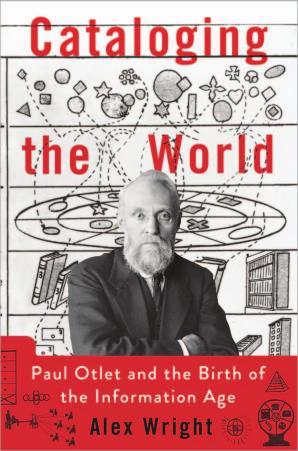
Cataloging the World: Paul Otlet and the Birth of the Information Age
by
Alex Wright
Published 6 Jun 2014
There was as yet no reliable mechanism for copying such large numbers of index cards 77 C ATA L O G I N G T H E WO R L D other than typing them out by hand (Otlet and La Fontaine offered a cash prize of 500 francs to anyone who could design a machine capable of reproducing index cards in large numbers). Eventually they invested the considerable sum of 22,000 francs in a costly printing scheme that never bore fruit. Instead, the IIB ended up distributing copies of the bibliography in book form, with a set of instructions directing subscribers to take out their scissors, cut up entries by hand, and paste them one-by-one onto index cards. Even four centuries later, Gessner’s indexing technique was proving remarkably durable.
…
In Otlet’s day, microfilm may have qualified as the most advanced information storage technology, and the closest thing anyone had ever seen to a database was a drawer full of index cards. Yet despite these analog limitations, he 14 I ntrod u ction envisioned a global network of interconnected institutions that would alter the flow of information around the world, and in the process lead to profound social, cultural, and political transformations. By today’s standards, Otlet’s proto-Web was a clumsy affair, relying on a patchwork system of index cards, file cabinets, telegraph machines, and a small army of clerical workers. But in his writing he looked far ahead to a future in which networks circled the globe and data could travel freely.
…
In 1876, Dewey established a company called the Library Bureau, whose mission was to sell to libraries and other organizations supplies such as catalog cards, drawers, “bureau boxes,” and other material to help companies implement his scheme. The company also encouraged businesses to adopt its index-card systems for their internal record keeping, claiming that they would realize efficiency gains of up to 50 percent. By 1893, the firm had opened a new office in Chicago and had plans to expand to London and Philadelphia. In 1895, the Library Bureau invested in its own factory, expanding from the production of index cards into a wider range of business equipment designed to help organizations of all stripes manage their collective intellectual capital: cabinets, trays, embossing equipment, and a range of other office supplies.
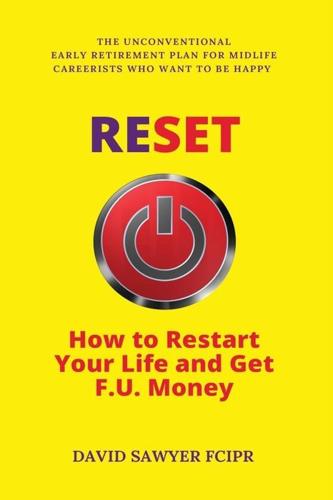
Reset: How to Restart Your Life and Get F.U. Money: The Unconventional Early Retirement Plan for Midlife Careerists Who Want to Be Happy
by
David Sawyer
Published 17 Aug 2018
Along the way, thousands of insights, and an untold amount of calmness, have been lost through complicated systems that, although started with best intentions, have fallen by the wayside after a few weeks. This all changed when I discovered the bulldog-clip-and-ruled-index-cards approach. I have plastic (and shoe) boxes[115] full of index cards for: life in general; RESET; and getting with the digital programme, complete with index-card-size subdividers. Now, whenever I have a thought worth capturing, I write it on an index card in either marker pen or biro (depending on the length of the thought), and place in the relevant box. I use index cards for books, blogs, conversations I overhear at the club, memories, etc. They’re in my coat pocket when I fetch the kids from school.
…
Ryan Holiday[116], Anne Lamott[117], Robert Greene[118], Oliver Burkeman[119], Ronald Reagan, Vladimir Nabokov[120] and Ludwig Wittgenstein[121] all use (d) the humble index card to catalogue and organise their thoughts. If you’re serious about embarking on this digital journey, buy a hundred-pack of 127 x 76mm ruled index cards for less than a pound, rescue a shoebox from the attic and stick a few marker-penned notecards on their end to act as dividers. Write a “My Digital Box” label on the top of the shoebox, and you’re off. Index cards capture what you think about the world and leave your mind clear to do things. The secret to going digital: index cards. #5 Listen As a midlife professional, what is your biggest life-energy-leech on a weekday?
…
Happiness 2. Fears 3. Life’s a Struggle 4. Finding Meaning 5. On Purpose 6. Values and Your Worldview 7. Plan and Goals 8. Part I Index Card Part II: Going Digital – How to Future-Proof Your Career 9. Trapped in “Digital or Die” Land 10. PR: a Case Study 11. How to Master Your Digital Fear: a 25-Point Plan 12. Part II Index Card Part III: Declutter Your Life 13. Digital Declutter 14. Mental Declutter 15. Physical Declutter 16. Part III Index Card 17. Halftime Downer Interval Part IV: Getting F.U. Money – a Plan 18. Structure 19. You’re Not alone – Money is the Commonest Problem 20.

The Card Catalog: Books, Cards, and Literary Treasures
by
Library Of Congress
and
Carla Hayden
Published 3 Apr 2017
Henriette Avram’s work in developing MARC (Machine-Readable Cataloging) during the 1960s enabled discrete bits of structured data to be encoded and transmitted across long distances, an important advancement in the birth of the Internet. But the Internet also owes its existence, in part, to those who came even earlier and envisioned and implemented standardized index card catalogs. Paul Otlet was one of those visionaries. Born in Belgium in 1868, Otlet, a lawyer, was fascinated by bibliographic techniques and the potential for organizing information using standard index cards. Although he operated on the periphery of the library community and was drawn to various classification schemes, he developed an idea of bringing together the entire world’s knowledge into a searchable system.
…
One would need to venture farther into the stacks to find the Main Card Catalog. Opening a drawer and flipping through the well-worn cards, many handwritten and filled with marginalia containing valuable information not to be found in an Internet search, leaves one with a sense of awe at how catalogers distilled so much information onto simple 3-by-5-inch index cards—cards that still sit neatly filed, waiting to reveal the treasures hidden in the hundreds of miles of Library stacks on Capitol Hill. —PETER DEVEREAUX Writer-Editor, The Library of Congress Die Bibliothek der Universität Leyden La bibliothèque de l’université de Leyde. Jan Cornelis Woudanus, circa 1570-1615.
…
Excavations beginning in the late nineteenth century uncovered thousands of these tablets—filled with epic poems, hymns, fables, and myths. One tablet, found near the Sumerian city of Nippur and dated around 2000 B.C., was clearly identified as a library catalog by renowned Sumerian history and language expert S. N. Kramer. At just 2 1/2 by 1 1/2 in (6.5 by 4 cm), the tablet foreshadowed the use of small index cards in cataloging, and it was divided into two columns listing the titles of sixty-two literary works. Among these titles was the oldest surviving piece of Western literature, The Epic of Gilgamesh, which predates Homer’s Iliad and Odyssey by more than fifteen hundred years. The epic poem follows the adventures of the legendary king of Uruk through fierce battles and tender moments of friendship and grief as he attempts to make sense of his life.
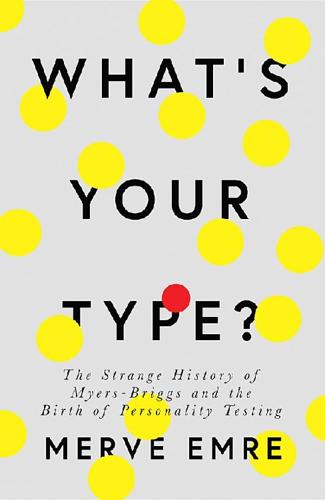
What’s Your Type?
by
Merve Emre
Published 16 Aug 2018
To discover the shade that best suited you, Katharine urged her reader to write down each type and its traits on a 3˝ × 5˝ index card, spread the cards across a flat surface, and arrange them vertically from most descriptive to least descriptive. Later, Isabel would further standardize the work of self-discovery with a questionnaire, but for now, Katharine believed that her readers possessed enough self-awareness to navigate her descriptions of Jung’s types on their own, sliding index cards up and down their dining room tables. The extraverted (E) sensing (S) type was an “extreme realist,” she summarized, “valuing above all material possession and concrete enjoyment.”
…
Introverted (I) intuitives (N) could be found among the world’s “philosophers, religious leaders and prophets, artists, queer geniuses and cranks.” Their impulsive attitudes were counterbalanced by the practicality of the extraverted (E) thinkers (T), the “reformers, executives, systematists, and men of applied science.” If her reader recognized himself in one of these descriptions, he was to move the index card to the very top of the table, where it would stay until it was displaced by another, more appropriate type description. In its insistence on self-discovery as a civilizing form of self-mastery, “Meet Yourself” modeled a new genre of writing known as popular psychology: self-help in an era when the public demand for psychological counsel far outstripped the number of psychologists available to provide it.
…
She believed she had made peace with her specialty in life, and, for the next several years, she would remain unencumbered by the kinds of psychological burdens that descended upon her mother and her amateur practice. CHAPTER FIVE Desperate Amateurs Like many analytic psychologists in the 1920s and 1930s, Katharine Briggs was fond of analyzing people’s dreams—indeed, she had developed a thoroughly scientific method of doing so. Every morning, she would remove a 3˝ × 5˝ index card from a stack she kept by the bed and turn expectantly to Lyman, who would then relay everything he remembered of the people, places, and events that had impressed themselves upon his sleeping mind. Katharine would then list the “dramatis personae”—the characters—in Lyman’s dreams before ascribing to each of them a deeper, more incisive meaning.
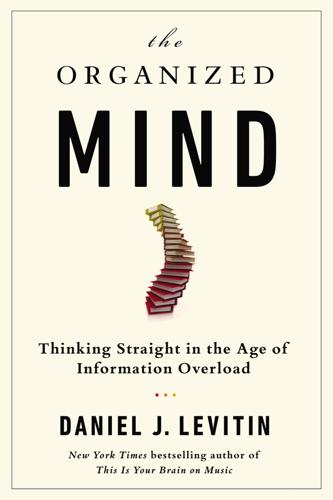
The Organized Mind: Thinking Straight in the Age of Information Overload
by
Daniel J. Levitin
Published 18 Aug 2014
And importantly, “when information is organized in small chunks that can be accessed and sequenced at random it becomes much more valuable than when you have to take it in serial form. . . . They [the index cards] ensured that by keeping his head empty and keeping sequential formatting to a minimum, no fresh new unexplored ideas would be forgotten or shut out.” Of course our heads can never be truly empty, but the idea is powerful. We should off-load as much information to the external world as possible. Once you have a stack of index cards, you make it a point to sort them regularly. When there are a small number, you simply put them in the order in which you need to deal with them. With a larger number, you assign the index cards to categories. A modified version of the system that Ed Littlefield had me use for sorting his mail works: Things to do today Things to do this week Things that can wait Junk drawer It isn’t the names of the categories that are critical, it is the process of external categorization.
…
Some people go crazy with the index card system and extend this to use different-colored cards for the different categories. But this makes it more difficult to move a card from one category to another, and the whole point of the 3 x 5 system is to maximize flexibility—any card should be able to be put anywhere in the stack. As your priorities change, you simply reorder the cards to put them in the order and the category you want. Little bits of information each get their own index card. Phaedrus wrote a whole book by putting ideas, quotes, sources, and other research results on index cards, which he called slips.
…
If more information will remove that uncertainty, then figure out what that information is and how to obtain it, then—to keep the system working for you—put it on an index card. Maybe it’s talking to a few more homes, maybe it’s talking to other family members. Or maybe you just need time to let the information set in. In that case, you put a deadline on the decision card, say four days from now, and try to make the decision then. The essential point here is that during your daily sweep through the cards, you have to do something with that index card—you do something about it now, you put it in your abeyance pile, or you generate a new task that will help to move this project forward. The index card system is merely one of what must be an infinite number of brain extension devices, and it isn’t for everyone.
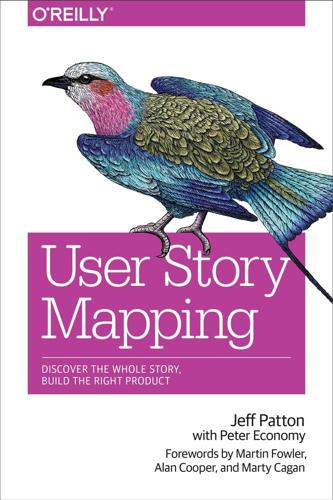
User Story Mapping: Discover the Whole Story, Build the Right Product
by
Jeff Patton
and
Peter Economy
Published 14 Apr 2014
(Addison-Wesley Longman Publishing) describe the story process best: Card Write what you’d like to see in the software on a bunch of index cards. Conversation Get together and have a rich conversation about what software to build. Confirmation Together agree on how you’ll confirm that the software is done. If it sounds simple, it’s because it is. Just remember, simple isn’t easy. 1. Card Imagine you’re responsible for working with a team to get some software built. Imagine that software as best you can. Then, for each thing users want to do with the product, write a card. You’ll end up with a bunch of them. Kent’s original idea was to write them on index cards because it’s easy to organize a bunch of cards on a tabletop.
…
We could even ask everyone, “Do you all agree with what’s written there?” and we might all say, “Yes! Yes, we do.” However, if we get together and talk, you can tell me what you think and I can ask questions. The talking goes better if we can externalize our thinking by drawing pictures or organizing our ideas using index cards or sticky notes. If we give each other time to explain our thoughts with words and pictures, we build shared understanding. It’s at this point, though, that we realize that we all understood things differently. That sucks. But at least now we know. It’s not that one person is right or wrong, but that we all see different and important aspects.
…
Document to Help Remember I’ve heard people joke, “We’re using an Agile process because we’ve stopped writing documents.” It’s a joke for people who know, because a story-driven process needs lots of documents to work. But those documents don’t always look at all like traditional requirements documents. It takes talking and sketching and writing and working with sticky notes or index cards. It’s pointing to documents we brought into the conversation and marking them up with highlighter and scribbled notes. It’s interactive and high energy. If you’re sitting at a conference table while a single person types what you say into a story management system, you’re probably doing it wrong.

A Place for Everything: The Curious History of Alphabetical Order
by
Judith Flanders
Published 6 Feb 2020
F is for Firsts: From the Birth of Printing to Library Catalogues in the Fifteenth to Sixteenth Centuries 7. G is for Government: Bureaucracy and the Office, from the Sixteenth Century to the French Revolution 8. H is for History: Libraries, Research and Extracting in the Seventeenth and Eighteenth Centuries 9. I is for Index Cards: From Copy Clerks to Office Supplies in the Nineteenth Century 10. Y is for Y2K: From the Phone Book to Hypertext in the Twentieth and Twenty-first Centuries Timeline Bibliography Footnotes Notes Index List of Illustrations IN THE TEXT 1. A round robin letter of 1621, petitioning for the right of Huguenots to settle in the New World. 2.
…
They put the state, the ruler, at the centre of everything (an old idea), and then bureaucratized all of it (a new one). To do so, they broke with thousands of years of custom, moving from the bound manuscript and the printed ledger to the most basic unit, the precursor to so much of alphabetization in the future: the index card. 8 H is for History Libraries, Research and Extracting in the Seventeenth and Eighteenth Centuries In the mid-twentieth century, the medievalist C.S. Lewis summed up his view of the period he had studied for so long: ‘[M]ediaeval man,’ he wrote, ‘was not a dreamer . . . He was an organizer, a codifier, a builder of systems.
…
For in the new world of science and technology, of the Enlightenment and of secular values, it had become obvious to many that there was not one single, divinely ordained route to knowledge, nor one single path of learning. Rather, readers, students and the learned could all, via the neutrality of alphabetical order, carve out their own paths. 9 I is for Index Cards From Copy Clerks to Office Supplies in the Nineteenth Century Between 1750 and 1850 the population of Europe increased by 70 per cent, from around 167 million to 284 million. In North America over the same period, the population soared from 2 million to 26 million.1 Driving this demographic boom, and in turn being driven by it, was increased trade.
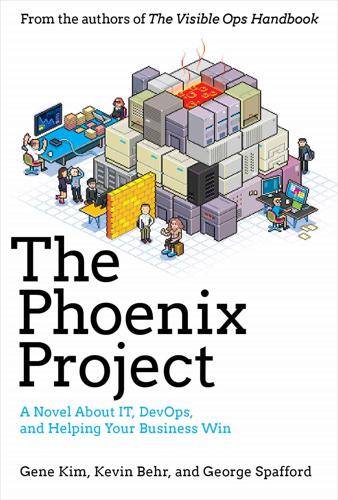
The Phoenix Project: A Novel About IT, DevOps, and Helping Your Business Win
by
Gene Kim
,
Kevin Behr
and
George Spafford
Published 14 Jul 2013
Thinking furiously, I finally say, “Let’s take a ten-minute break.” When we reconvene the meeting, I say, “We are not leaving this meeting without a list of authorized and scheduled changes that we’re implementing in the next thirty days. “As you can see, my assistant has brought in a pile of blank index cards. I want each group to write down every change they’re planning, one change per index card. I want three pieces of information: who is planning the change, the system being changed, and a one-sentence summary. “I’ve drawn a calendar on the whiteboard where we will eventually post approved changes according to their scheduled implementation,” I continue.
…
I tell him about my attempts to get some sort of change process going and my attempt to elevate the discussion above how many fields there were on the change form, which then resulted in getting people to put their intended changes on index cards and our need to juggle them on the board. “Very good,” he says. “You’ve put together tools to help with the visual management of work and pulling work through the system. This is a critical part of the First Way, which is creating fast flow of work through Development and IT Operations. Index cards on a kanban board is one of the best mechanisms to do this, because everyone can see WIP. Now you must continually eradicate your largest sources of unplanned work, per the Second Way.”
…
* * * I try to wave away the stench of failure as I walk to the CAB meeting. I’m still thinking about how I’m going to break the bad news to Wes and Patty when I walk into the conference room that Patty has coined the Change Coordination Room. All thoughts of Steve disappear when I see what’s there. Almost every area of the wall is now covered in whiteboards. Index cards cover nearly every inch of the whiteboards on two of the walls. It’s not just one deep—in some places there are hooks attached to the board, with ten cards hanging off them. On the conference room table are twenty, maybe even thirty, more piles of cards. On the far side of the table, two guys who work for Patty have their backs to us, studying a card.

Pale Fire
by
Vladimir Nabokov
Published 1 Jan 1962
JAMES BOSWELL, the Life of Samuel Johnson Contents Cover Other Books by This Author Title Page Copyright Dedication Foreword Pale Fire A POEM IN FOUR CANTOS Canto One Canto Two Canto Three Canto Four Commentary About the Author Books by Vladimir Nabokov Foreword Pale Fire, a poem in heroic couplets, of nine hundred ninety-nine lines, divided into four cantos, was composed by John Francis Shade (born July 5, 1898, died July 21, 1959) during the last twenty days of his life, at his residence in New Wye, Appalachia, U.S.A. The manuscript, mostly a Fair Copy, from which the present text has been faithfully printed, consists of eighty medium-sized index cards, on each of which Shade reserved the pink upper line for headings (canto number, date) and used the fourteen light-blue lines for writing out with a fine nib in a minute, tidy, remarkably clear hand, the text of his poem, skipping a line to indicate double space, and always using a fresh card to begin a new canto.
…
I stared at his powdered cheeks, at the magical flower in his buttonhole where it had passed through a succession of different colors and had now become fixed as a white carnation, and especially at his marvelous fluid-looking fingers which could if he chose make his spoon dissolve into a sunbeam by twiddling it, or turn his plate into a dove by tossing it up in the air. Shade’s poem is, indeed, that sudden flourish of magic: my gray-haired friend, my beloved old conjurer, put a pack of index cards into his hat—and shook out a poem. To this poem we now must turn. My Foreword has been, I trust, not too skimpy. Other notes, arranged in a running commentary, will certainly satisfy the most voracious reader. Although those notes, in conformity with custom, come after the poem, the reader is advised to consult them first and then study the poem with their help, rereading them of course as he goes through its text, and perhaps, after having done with the poem, consulting them a third time so as to complete the picture.
…
And I’ll turn down eternity unless The melancholy and the tenderness Of mortal life; the passion and the pain; The claret taillight of that dwindling plane Off Hesperus; your gesture of dismay 530 On running out of cigarettes; the way You smile at dogs; the trail of silver slime Snails leave or flagstones; this good ink, this rhyme, This index card, this slender rubber band Which always forms, when dropped, an ampersand, Are found in Heaven by the newlydead Stored in its strongholds through the years. Instead The Institute assumed it might be wise Not to expect too much of paradise: What if there’s nobody to say hullo To the newcomer, no reception, no 540 Indoctrination?
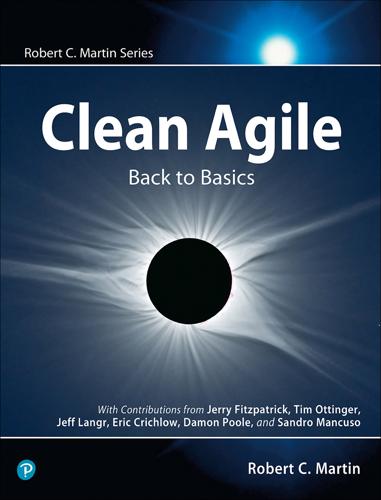
Clean Agile: Back to Basics
by
Robert C. Martin
Published 13 Oct 2019
This is one of Ron Jeffries’ definitions of a story. Typically, we write the story on an index card. I know, I know. Why in the world would we use such ancient and primitive tools when we have computers and iPads and…? It turns out that being able to hold those cards in your hands, pass them across a table to each other, scribble on them, and otherwise handle them is immensely valuable. Automated tools do sometimes have their place, and I’ll talk about them in another chapter. For the moment, however, think of the stories as index cards. Please remember: World War II was managed3 on index cards, so I think the technique scales. 3. Well, to some extent anyway.
…
Great tools do the following: Help people accomplish their objectives Can be learned “well enough” quickly Become transparent to users Allow adaptation and exaptation Are affordable We hold up Git here as an example of a great tool…as of 2019. You may be reading this in some future year, so remember that the landscape changes. Physical Agile Tools Agilists are known for using whiteboards, tape, index cards, markers, and various sizes of sticky notes (small and flip-chart-size) for visual management of their work. These simple “hand implements” have all the qualities of a great tool: They help make work in progress visible and manageable. They’re intuitive—no training required! They require negligible cognitive overhead.
…
Yet, despite being feature rich and commercially successful, ALM tools utterly fail at being great. This failure provides a good cautionary tale. Great tools can be learned “well enough” quickly: ALMs tend to be complicated, usually demanding up-front training. (Hmm. We’re trying to remember the last index card training we attended.) Even with training, team members must often resort to searching the internet to figure out how to accomplish tasks that ought to be simple. Many acquiesce to the tool’s complexity, punt on digging any deeper to figure things out, and end up tolerating slow, clunky ways of working.
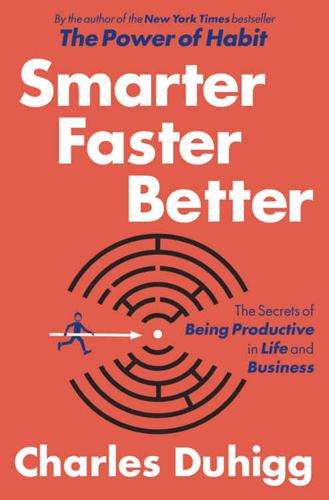
Smarter Faster Better: The Secrets of Being Productive in Life and Business
by
Charles Duhigg
Published 8 Mar 2016
Once, when the writer Michael O’Donoghue was inordinately proud of an obscene commercial parody, Michaels ordered it read at eighteen different rehearsals—even though everyone knew the network’s censors would never let it on the air. “I remember walking up to Lorne once and saying, ‘Okay, here’s my idea, it’s a bunch of girls at their first slumber party and they are telling each other how sex works.’ And Lorne said, ‘Write it up,’ just like that, no questions asked. Then he took an index card and put it on the board for the next show.” That sketch—which appeared on Saturday Night Live on May 8, 1976—became one of the show’s most famous pieces. “I was on top of the world,” said Miller. “He’s got this social ESP. Sometimes he knows exactly what will make you feel like the most important person on earth.”
…
Another attempt was suspended in 2010 after auditors concluded it would cost millions more simply to figure out why the system wasn’t working. A few years before Janssen was kidnapped, the agency’s databases were still so outdated that most agents didn’t even bother inputting the bulk of the information they collected during investigations. Instead, they used paper files and index cards, like their predecessors decades before. Then, in 2012, the bureau had rolled out Sentinel. Simply put, it was a system for sorting and managing evidence, clues, witness testimony, and the tens of thousands of other little pieces of information agents collected every day. Sentinel was tied into analytical engines and databases that the bureau and other law-enforcement agencies had developed to look for patterns.
…
In fact, the EI was succeeding because teachers had been ordered to set aside those slick data tools and fancy software—and were told instead to start manipulating information by hand. Each school, under orders from the central office, had established a “data room”—in some cases, an empty conference room, in others, a large closet that had previously contained cleaning supplies—where teachers had to transcribe test scores onto index cards. They were told to draw graphs on butcher paper that was taped to walls. They ran impromptu experiments—Do test scores improve if kids are placed in smaller reading groups? What happens when teachers trade off classes?—and then scribbled the results onto whiteboards. Rather than simply receiving information, teachers were forced to engage with it.

Kanban in Action
by
Marcus Hammarberg
and
Joakim Sunden
Published 17 Mar 2014
They can be big posters with charts showing the progress of a project, walls of index cards detailing the actions from a workshop, or whiteboards with columns showing a workflow, with stickies representing the work items. They’re placed so that the team can always see them, but they should also be easily accessible to stakeholders outside the team. The information radiator should be easy to keep up to date, so that it’s constantly updated with the necessary information and worth visiting. This is why many teams prefer hand-drawn charts and low-tech equipment such as whiteboards, papers, stickies, and index cards. Perhaps more importantly, this also makes it easy to continuously experiment with and improve the information radiator to make it fit your particular context.
…
Why not create a good information radiator for all of this? Kanban teams use a lot of information radiators, but one that stands out as the most common and prominent is the board itself. 3.2.1. The board The basic board is a whiteboard or some empty wall space where you put up stickies or index cards to visualize your workflow and how the work is progressing. Update it frequently, so everyone can see and act on the most current information. Using a big board not only makes it a good information radiator, but also makes it easy for a group of people to simultaneously move things around, to discuss what is happening, to create new work items, and so on.
…
In order to get a better overview of who’s working on what and the status of the work, you visualize the work—thereby making information visible that previously wasn’t. By far the most common way to track work items is to create a small card that represents the work that is being done. It can be an index card or a sticky note[1]: anything that is easy to work with and move around on a board, such as a white board. Cards on a board are a simple yet powerful way to see progress, bottlenecks, and queues happening in your workflow—and to make it in-your-face apparent to everyone what is happening. 1 For example, a Post-it® Note.
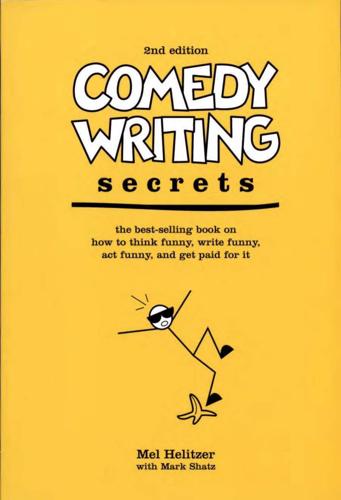
Comedy Writing Secrets
by
Mel Helitzer
and
Mark Shatz
Published 14 Sep 2005
—Alan Coren To keep track of ideas and potential material, the humorist's toolbox typi¬ cally includes the following items: a note pad, index cards, a tape recorder, and a computer with Internet access. If you hope to sell your writing, you'll need a copy of Writer's Market, the bible of the publishing industry. Regardless of the tools you use, you'll need to devise a system for organizing your writing. The traditional method is to organize jokes by topics using some type of filing system. Milton Berle and Bob Hope each had a vault containing more than six million jokes on index cards sorted by topic. The digital alternatives to index cards are database or spreadsheet programs. 16 Comedy Writing Secrets If you plan to write more elaborate humor (such as columns, arti¬ cles, or scripts), there are a variety of software programs that can aid your writing.
…
It's critical that you complete these exercises now, because they will be used throughout the next few chapters. •List your ten favorite comedians and humorists, and use the Internet to search for jokes or quotes by each of these individuals. • After you amass twenty jokes, write each joke on an index card. On the back of each card, identify the subject or target of the joke, and explain why you think the joke is funny. This exercise will help you become aware of the format of successful jokes and provide you with insight into your own comedic preferences. • Collect ten to fifteen cartoons or comic strips and tape each one on a separate piece of paper.
…
. • found missing • living dead • good grief • working vacation • larger half • soft rock • extinct life • Microsoft Works • plastic glasses • alone together • exact estimate • taped live • small crowd • even odds SHOWTIME Words are the instruments or humorists, and mastering the subtleties of language is a necessary step to becoming a successful humor writer. Use the following exercises to practice your POWs. • Search a dictionary for ten words that you do not know the definitions for. Don't look at the definitions! Write each word on an index card, and on the back of the card, create a logical but whimsical definition. • Search the Internet for clichés, proverbs, or common phrases that relate to the potential humor targets you identified in the last chapter. Compile a list of ten items. Using the techniques described in this POW: Play on Words 73 chapter, reform the clichés into jokes by changing the original ending or adding on to the phrase.

When the Air Hits Your Brain: Tales From Neurosurgery
by
Frank Vertosick
Published 1 Jan 1996
Several minutes later, a frenetic figure darted to the table, his tray rattling in front of him, the coffee flying out of his cup. He had a boyish face and blond hair. This was clearly Eric, the intern, late for morning card rounds. Carl cast a perturbed look at the intern, pulled his own stack of index cards from his lab coat pocket, and began the daily litany. “Beckinger, room nine.” Eric flipped through his cards, locating Beckinger. I surmised that Beckinger was someone on the floor—Eric’s responsibility. “She’s fine, afebrile, no headache, no face pain, wound is dry. She’s now four days out from surgery.”
…
As I expected, the problem for the night. Surgical soap stained her scrawny little body orange from her neck to feet. Heating lamps dangled above the bed, to restore warmth to her frigid body. She looked like a little cornish hen roasting under the heat lamps of a delicatessen. Maggie handed me an index card. “Here, I’ve calculated the doses of the resuscitation drugs for her weight. I think everything is there—epi, bicarb, bretylium…The nurses know the defib settings, they’ll help you with that. You’ve taken infant CPR? Good. You’ll need it. She’s going to have a rough night, but if she makes it twelve or twenty-four hours, she has a shot.
…
I escorted him down the hall to Andy’s room. “I’ve got something to show you.” We went into the room, where Andy lay motionless, his belly bulging and his eyes closed. He still had a tracheal breathing tube and had not stirred a muscle since his Monday surgery. “So?” Gary was impassive as he flipped through his index cards of patient data. I vigorously rubbed Andy’s chest with my knuckles, which prompted Andy to open his eyes and grab at my arm. The chief resident was startled. “Jesus Christ, the poor bastard’s awake.” “That’s right,” I said, flashing a grin. I pulled a large wad of toilet paper from my white lab jacket and handed it to Gary.

Word by Word: The Secret Life of Dictionaries
by
Kory Stamper
Published 14 Mar 2017
And so we begin to define. As we grow, we grind words into finer grist. We learn to pair the word “cat” with “meow”; we learn that lions and leopards are also called “cats,” though they have as much in common with your long-haired Persian house cat as a teddy bear has with a grizzly bear. We set up a little mental index card that lists all the things that come to mind when someone says the word “cat,” and then when we learn that in parts of Ireland bad weather is called “cat,” our eyes widen and we start stapling little slips of addenda to that card. At heart, we are always looking for that one statement that captures the ineffable, universal catness represented by the word “cat,” the thing that encompasses the lion “cat” and the domestic-lazybones “cat” and the bad weather in Ireland, too.
…
At Merriam-Webster, every editor has the same set of tools at their desk: a personalized date stamp, with your last name and the date, which is how you sign and date any physical thing that crosses your desk; a fistful of pens and pencils (including a few stubby old Stabilo pencils, formerly used to mark insertions and deletions on shiny-papered galleys and now hoarded against the coming Pencil Apocalypse); and a box of three-by-five index cards in pink, yellow, white, and blue. The colors are not to make your tan-gray cubicle festive; they have a purpose. White cards are for citations, any little slip of English usage that you want to make note of. Blue cards are for production reference. Yellow cards, or buffs, as we call them, are for drafted definitions only.
…
At Merriam-Webster, the citation files are both paper and electronic; the paper citation files take up a solid third of the floor and date back to the mid-nineteenth century. I dragged my finger over the drawer labels until I found the one that housed all the paper citations for “irregardless,” then slid it open. It’s pretty unlikely, I thought, plucking a stack of index cards from the file, that “irregardless” was an intensive form of “regardless,” but I should do my due diligence. Almost immediately, I ran across this snippet of use: I remembered the magnitude of his problems—problems I was just beginning to truly understand—as a black man and as an artist, growing up poor, forced to endure the racist terrorism of the American South.

Fluent Forever: How to Learn Any Language Fast and Never Forget It
by
Gabriel Wyner
Published 4 Aug 2014
Some cards’ final intervals will wobble between two and four months. This doesn’t turn out to be a big deal; if you have a problem remembering a card, it will return often enough to work its way into your long-term memory, and if not, then huzzah, you remembered it. Here’s what you’ll need: • A whole bunch of index cards (at least a couple thousand) • A large index card box or file • Eight index card dividers, labeled “New,” “Level 1,” “Level 2,” and so on, up to “Level 7” • A calendar • A trusty set of pens and/or pencils (colors can help you make more memorable pictures) Your index file will look like this: The Rules of the Game Your Leitner box is a flash card game.
…
You’ve also downloaded and installed my demo deck, so your main job involves finding information and recordings, putting them in the right boxes, and clicking the Add Flash Cards button. If you’ve chosen a Leitner box, you’ve read Appendix 3, gone out to your local office supply store, and purchased your materials. You have an index card file-box full of dividers, a stack of blank index cards, some pencils, and a calendar in front of you (today is day 1!). You also remember my earlier caveat: Since paper flash cards can’t talk, you’re going to take extra care to learn a phonetic alphabet and to listen to recordings of example words when you write your flash cards.
…
(Three feet tall, between twenty-two and forty pounds.) Could the dodo fly? (Nope.) And so on. The more ways you study the same information, the better you know your material. I want you to become an expert in your language, but you should have some fun in the process. So I’m going to make some changes to this tired, index-card-shaped theme. First and foremost, we’re sticking all of your flash cards into an SRS, which will tell you when to study each and every card. As we discussed in Chapter 2, this makes them a lot more effective and a lot more fun. You’re playing a constant game with yourself, trying to see how long you can go before you forget one of your cards.
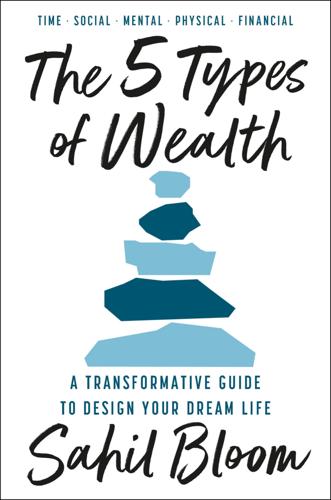
The 5 Types of Wealth: A Transformative Guide to Design Your Dream Life
by
Sahil Bloom
Published 4 Feb 2025
I find myself turning to it regularly, especially when I have a lot on my plate and need to reset my focus. How to Simplify Your To-Do System: The Index Card Pillar: Attention You can test every fancy productivity system in the world, or you can use the simple strategy that works for junior analysts and billionaires alike: an index card. Marc Andreessen, the successful technology founder and investor, is a proponent of this simple strategy. In an essay on his personal productivity, he wrote, “Each night before you go to bed, prepare a 3 x 5 index card with a short list of 3 to 5 things that you will do the next day.”[11] Ideally, this is a list of important tasks that directly contribute to your long-term values or goals (items identified in the top half of the Eisenhower Matrix).
…
A few common Time Wealth anti-goals to avoid on your journey: Spending too much of my time on low-value, energy-draining activities Being so busy that I’m unable to prioritize time with the people who truly matter Losing the spontaneity in my life as I pursue my most important priorities Here are twelve proven systems for building Time Wealth. 1. The Time Wealth Hard Reset | Awareness 2. The Energy Calendar | Awareness and Attention 3. The Two-List Exercise | Awareness and Attention 4. The Eisenhower Matrix | Awareness and Attention 5. The Index Card To-Do System | Attention 6. Parkinson’s Law | Attention 7. The Anti-Procrastination System | Attention 8. The Flow State Boot-Up Sequence | Attention 9. Effective Delegation | Attention and Control 10. The Art of No | Control 11. The Four Types of Professional Time | Control 12.
…
As a rule of thumb, it should be three unless there is a very specific reason for it to be more. The fanciest productivity systems often require a lot of thinking and maintenance. If you’re spending time thinking about your productivity system, you’re focusing on movement over progress. The simple index card strategy harnesses the core principles of focus and momentum to allow you to get more of what matters done. Always remember: Simple is beautiful. How to Eliminate Time Waste: Parkinson’s Law Pillar: Attention Parkinson’s law is the idea that work expands to fill the time allotted for its completion.
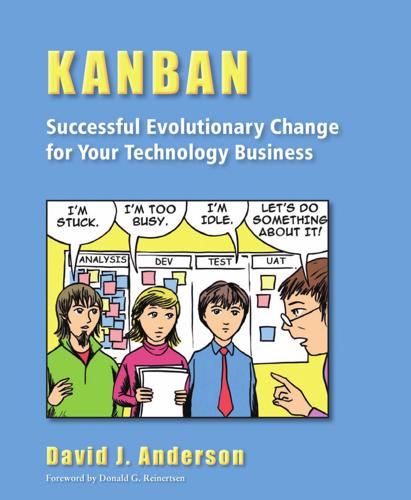
Kanban: Successful Evolutionary Change for Your Technology Business
by
David J. Anderson
Published 6 Apr 2010
This is a specific example of reducing the chance-cause variation in the Extreme Programming method by asking the team to standardize user story writing around a given template. By doing so, Tim changed the rules of the game. The original rules asked team members to write stories on index cards in narrative form, and the new rules asked them to continue with index cards but to follow a specific sentence format. These changes are quite clearly under the influence and control of local managers. They are internal to the system. The size of a user story is controlled by chance-cause variation. Work Item Type Mix When all work is treated the same, and perhaps called by a single type, there is likely to be greater variation in size, effort, risk, or other factors.
…
More often the signal is generated from a software work-tracking system. Chapter 6 provides examples of the mechanics of kanban systems as they apply to IT work. Card walls have become a popular visual control mechanism in Agile software development, as shown in Figure 2.1. Using either a cork notice board with index cards pinned to a board, or a whiteboard with sticky notes to track work-in-progress (WIP) has become commonplace. It’s worth observing at this early stage that despite some commentary in the community to the contrary, these card walls are not inherently kanban systems. They are merely visual control systems.
…
Class of service determines priority within the system. Classes of service allow for a self-organizing, value- and risk-optimized approach to prioritization and “re-planning.” Typical Class-of-Service Definitions Classes of service are typically defined based on business impact. Different-colored sticky notes, index cards, or tickets are assigned to each class and clearly signify the class of service of any given request, as in Figure 11.1; otherwise, separate swim lanes are drawn on the card wall to signify membership in a class of service. Figure 11.1 Card wall showing colored tickets to signify class of service Each class of service comes with its own set of policies that affect how items are prioritized when they are pulled through the kanban system.

The Internet Is Not the Answer
by
Andrew Keen
Published 5 Jan 2015
There’s nothing high-tech about either the office’s dingy, cramped rooms or the electric typewriters, rotary telephones, and primitive switchboards on all of its desks. In spite of Mielke’s order to network its information, much of Stasi’s data in 1989 was still confined to handwritten or typed index cards. The museum even has an index card on display written by Mielke’s secretary explaining what the Stasi chief liked to eat for breakfast. But for all its millions of meticulously transcribed index cards, East Germany’s former ministry of surveillance is as much an introduction to the digital future as it is a look back at the analog past. As a museum displaying how technology was used to acquire other people’s data, the Stasi museum—in our age of data-hungry multinationals like Google and Facebook and big data agencies like NSA and GCHQ—has contemporary relevance.
…
Erich Honecker, the head of the East German Communist Party, who liked to think of his country as more technically advanced than the capitalist West, even though its main business model and source of foreign currency was selling its citizens to West Germany, wanted to “start collating computerized files and reports” on all sixteen and a half million people in East Germany.2 The historian Victor Sebestyen describes this as a “computerized snooping system.” Its intention was to digitize the 39 million index cards and 125 miles of documents containing more than 2 billion sheets of paper.3 The goal was a computer system that knew everything about everyone in the country. By the mideighties, Mielke’s Stasi had become the largest company in East Germany, employing around 100,000 full-time snoops and at least another half a million active informers.
…
It never occurred to him that billions of people globally might freely give up their most personal data. And he didn’t understand that there were much more scalable strategies for aggregating people’s photos than by disguising cameras inside watering cans. No, to create a truly global crystal man, it wasn’t enough to put a hundred thousand spies on your payroll and have 39 million handwritten index cards. On the Internet, an electronic world of increasingly intelligent connected machines that Nicholas Carr calls a “Glass Cage,” there are billions of “gläserne Menschen.” And, it seems, they are all willing to work for free. The Eyes of the Venetian In Las Vegas, there isn’t a casino built around the theme of either East Germany or the Berlin Wall, surprisingly enough.
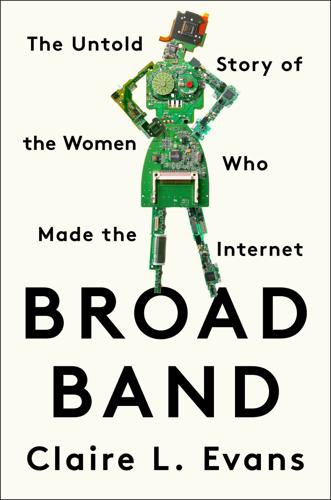
Broad Band: The Untold Story of the Women Who Made the Internet
by
Claire L. Evans
Published 6 Mar 2018
The Berkeley Barb ran back-page ads for resistance organizations, and a group called the Haight-Ashbury Switchboard had even built a sophisticated phone tree in the late 1960s, linking human “switchboards” to one another to help distraught families track down their wandering hippie kids. This grew into an informal network of interest-specific Switchboards in the Bay Area, one of which, the San Francisco Switchboard, had offices at Project One. With a couple of phones and boxes of index cards, it coordinated extensive group action for quick-response incidents like the 1971 San Francisco Bay oil spill—an early version of the kind of organizing that happens so easily today on social media. Resource One took up where these efforts left off, even inheriting the San Francisco Switchboard’s corporate shell.
…
She was intrigued by the sheer volume of information, and the seemingly Sisyphean task of organizing it into a useful database. Realizing she was more interested in information itself than in chemistry, she took a job at Stanford helping scholars with technical research—gathering reprints and running around to different libraries before summarizing her findings on index cards, much as a search engine works today. At Stanford, Jake worked in a basement lab. It wasn’t long before an upstairs neighbor, Douglas Engelbart, began popping down to her office for organizational advice. Engelbart had invented a computer system called NLS (oNLine System) in the late 1960s, a predecessor to the modern personal computer in both form and philosophy, and the first system to incorporate a mouse and a keyboard into its design.
…
“And I’d say, ‘What are all those people doing upstairs, staring at television sets?’” Whatever it was, it made technical research look boring. One day, when Engelbart came down to visit her office, Jake asked him for a job. He told her he didn’t have one, but he kept her in mind and, six months later, he came back. “I have a job now,” he announced. It had nothing to do with index cards; instead, Douglas Engelbart introduced Jake Feinler to the wild new world of networked computing. Her life would never be the same. In the fall of 1969, one of Engelbart’s machines had been on the receiving end of the first transmission between two host computers on the ARPANET. The connection crashed halfway through, truncating that very first Internet message from LOGIN to the somewhat more prophetic LO.

The Mad Man: Or, the Mysteries of Manhattan
by
Samuel R. Delany
Published 1 Jun 2015
And in the letters I wrote back, I pretended—to him, to myself—I, too, was galvanized: Dear Irving, Maybe what would pull my thesis together is a chapter on the relation between cantos seven through nine of Adler’s long poem “Meridian” and Hasler’s two “predicate negation” papers. After all, the poem and the papers were all written in the summer of ‘71—when Hasler and Adler were together at Breakers’ Point. The fact is, I’ve already got more than forty pages of notes and a box of index cards on the topic. To sit down, to put it into readable shape—possibly to show it to the Old Poet herself for comment (you say she’s suddenly become amenable to us—well, to you—after all this time) might get my part of the project on track! And it wouldn’t impinge on your work .... It also galvanized Almira Adler.
…
The paradox was—to me—that I’d have trusted the scholar who’d first inquired of her far more than I would have the scholar of today—and, though I could not have said so to him, I suspected Mossman felt the same. That scholar had had a purpose, a passion, a sense of enterprise. The scholar of today had a jumble of notes, a welter of contradictory information: in my case that was five plastic boxes full of index cards labeled “problems” and not a jot of drive to solve them—in short, what / had, at any rate, was the imponderable wreckage of a project, over which your current scholar sat and gazed, like a sphinx whose ineffable secret was that the years’”work” making me, in the eyes of friends and colleagues, if not of people like the Old Poet and Mossman, a “serious Hasler scholar,” had also made me—in my own eyes—a gibbering, jerking, half-blind creature, buried under the contradictions, stalled in the gaps, paralyzed by the sheer unknowability of the fast-fading shadows that were the dense, lingering texts of Timothy Hasler.
…
Here in Ann Arbor the good weather and the snow pulse, one after the other—a day of one, a day of the other, now filling the streets with students, now all but emptying them of everything but wind ... Really, I wasn’t paying a lot of attention to what I was reading. It was more like taking in a sentence here, another there. ... The daunting stack of index cards in their red rubber band that so far make up “The Mad Man” have sat by my bed, accusing me of their incompletion, now in Chicago, now at Breakers’ Point, now in New York. 256 have so far been completed—though I haven’t really worked on it in a couple of months ... ... In four thousand years, writing has made of us a social animal to dwarf the bee and the ant ... ...

Learn Python the Hard Way
by
Zed Shaw
Published 1 Jan 2010
Notice that you used your functions the way you use things like exists, open, and other "commands". In fact, I've been tricking you because in Python those "commands" are just functions. This means you can make your own commands and use them in your scripts too. Extra Credit Write out a function checklist for later exercises. Write these on an index card and keep it by you while you complete the rest of these exercises or until you feel you do not need it: Did you start your function definition with def? Does your function name have only characters and _ (underscore) characters? Did you put an open parenthesis ( right after the function name?
…
Here's a tip on how to memorize something without going insane: Do a tiny bit at a time throughout the day and mark down what you need to work on most. Do not try to sit down for two hours straight and memorize these tables. This won't work. Your brain will really only retain whatever you studied in the first 15 or 30 minutes anyway. Instead, what you should do is create a bunch of index cards with each column on the left on one side (True or False) and the column on the right on the back. You should then pull them out, see the "True or False" and be able to immediately say "True!" Keep practicing until you can do this. Once you can do that, start writing out your own truth tables each night into a notebook.
…
What I've done here is written out all the Python symbols and keywords that are important to know. In this lesson take each keyword, and first try to write out what it does from memory. Next, search online for it and see what it really does. It may be hard because some of these are going to be impossible to search for, but keep trying. If you get one of these wrong from memory, write up an index card with the correct definition and try to "correct" your memory. If you just didn't know about it, write it down, and save it for later. Finally, use each of these in a small Python program, or as many as you can get done. The key here is to find out what the symbol does, make sure you got it right, correct it if you do not, then use it to lock it in.

Discardia: More Life, Less Stuff
by
Dinah Sanders
Published 7 Oct 2011
Keep that fare amount and $20—enough for an emergency taxi ride—separate from the rest of your cash in your wallet. Set yourself up for smooth sailing even when the seas get rough. Don’t give yourself a hard time for not keeping things in your head. Make a list. Your brain isn’t meant to carry all that stuff around; it’s meant for thinking and working on the stuff on your list. Keep some index cards or other small note-taking supplies with you and put them next to the phone and the computer. Write yourself notes. Leave yourself voicemails. Send yourself emails. It’s fine. No one remembers everything. Really. Symptom #6: Procrastination Solution #6: Bottom Line: Deeds are Better Joining a Facebook group about creative productivity is like buying a chair about jogging.
…
Keep the core items at the ready If you have different kits for different purposes—for example, a purse, a laptop bag, and an errand satchel—set each up with the things you always need so you only have to transfer your unique items when you head out. I move my wallet, phone, and key ring to the appropriate bag knowing that it already has a pen, handkerchief, index cards for notes, business cards, and a comb. This is one place a little redundancy makes a lot of sense. Optimize for what you really do need often and what would be a serious hassle if you needed it and didn’t have it. Then keep fine-tuning to keep up with changes. It’s amazing how fast you can collect random stuff and carry it around constantly.
…
Now my instinctive action corresponds to my desired result. Once again, grease the slope toward where you want to be so that your easiest, most automatic behavior takes you there instead of hitting a wall. Got an annoying commute? Upgrade it by carrying music, earphones, reading material, and the means to jot down notes about ideas. (A smartphone, index cards, and a pen will give you all this functionality.) Peppermints or other flavorful scented candy can also reduce the impact of an unpleasant situation. Maybe that sweaty guy fresh from his gym has nowhere else to sit on the train than beside you, but at least you don’t have to spend the whole ride smelling him.
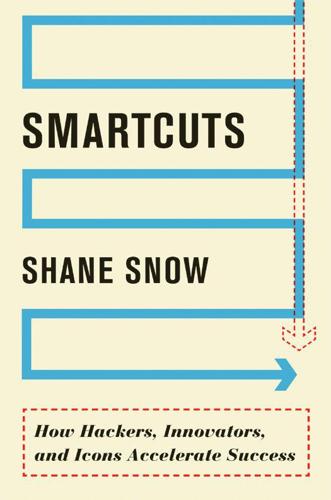
Smartcuts: How Hackers, Innovators, and Icons Accelerate Success
by
Shane Snow
Published 8 Sep 2014
While his brothers experimented with cigarettes and alcohol, young Edwards began fixating on something a little lower to the ground: sneakers. By sixth grade, he was drawing shoes every day. He drew them on three-by-five index cards. “It was the perfect size to draw a shoe on,” he said. He would sit a shoe down in front of him and try to copy it perfectly. He’d study the footwear of his sports heroes, like Pittsburgh Steelers running back Franco Harris, who wore PONY shoes. All through middle school, Edwards kept sketching. His math teacher, Mrs. Weathers, often busted him drawing sneakers during class. She would take the index cards away. When he got to high school—countless sketches later—he was nudged out of art class because he was better than the teacher.
…
To his delight, the temp agency placed him as a file clerk at LA Gear, a shoe brand founded in 1983 by a man named Robert Greenberg. Day in and out, Edwards filed paperwork. But one day, the company installed suggestion boxes around the office to solicit employee feedback. One of the boxes was right by his desk. Edwards began putting his index cards into it. Every day, he dropped a new shoe sketch through the slit of that wooden box, asking for feedback on each design. Nobody responded. But Edwards persisted. After six months, Greenberg called Edwards into his office. On his desk was a stack of Edwards’s sketches. What school did you learn to do this at?
…
D’WAYNE EDWARDS USED ALL the principles of Smartcuts to change his and others’ lives, sometimes intentionally, often not. He made his own path, found leverage to do more in less time, and swung for the fences. And now his students are paying it forward. What we put on our feet matters. But what Edwards has done transcends footwear. More than 20 years after he started putting those index cards in the LA Gear suggestion box, he’s sold all the shoes he could dream of. What matters most at the end of the day is not how many sneakers he’s shipped, but how many people he’s helped become a little bigger or better. I hope we, too, can use the principles in this book to improve our lives and careers.

Marriage and Lasting Relationships With Asperger's Syndrome: Successful Strategies for Couples or Counselors
by
Eva A. Mendes
Published 1 Sep 2015
If the children are with us, which they always are, I’m even more on edge.” In order to ease things for John, his wife and him came up with a detailed, written sequence of events and a list of “to dos” for him on each leg of the trip. I advised John to write everything on a three by five (about 7 cm by 12 cm) inch index card. “Armed with the index card in my pocket, I had a much better trip this time,” John reported, “I felt less anxious knowing I had a plan for what was next.” Medications Medications can alleviate anxiety, treat depression, and even reduce the obsessiveness and rage that the partner with ASD might struggle with.
…
THE APPRECIATION AND GRATITUDE EXERCISE™ 1.Each partner may separately create a list of things that they appreciate and are grateful for in their partner. This list can include anything and everything; nothing is too big or small! Don’t worry if you only start with a few items. 2.Write down the list on a piece of paper or index card, or use your smartphone or computer, to easily access it—at least twice a day. The more places you post it, the more likely you are to use it. 3.As you practice appreciation and gratitude, every day, twice a day, it can easily become second nature to how you think. You may find that you are more easily able to notice the positive qualities and behaviors of your partner.
…
APPENDIX I THE APPRECIATION AND GRATITUDE EXERCISE™ 1.Each partner may separately create a list of things that they appreciate and are grateful for in his/her partner. This list can include anything and everything; nothing is too big or small! Don’t worry if you only start with a few items. 2.You can either write down the list on a piece of paper or index card, or use your smartphone or computer, to easily access it—at least twice a day. The more places you post it, the more likely you are to use it. 3.As you practice appreciation and gratitude, every day, twice a day, it can easily become second nature to how you think. You may find that you are more easily able to notice the positive qualities and behaviors of your partner.
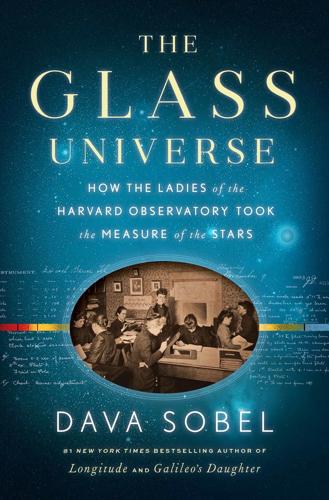
The Glass Universe: How the Ladies of the Harvard Observatory Took the Measure of the Stars
by
Dava Sobel
Published 6 Dec 2016
In the interim she filed them by telescope and by type—the chart plates that mapped each section of the sky, the group spectra, the individual bright spectra, the star trails, and so on—each one in a brown paper envelope, each envelope labeled by number, date, and other identifying details, all of which were repeated on index cards in a card catalogue. Rather than pile the plates in columns, she stood them on edge for easy access. Reason to revisit one or another stored plate arose daily as the assistants examined, measured, discussed, and performed computations upon each new batch of photographs. When, for example, Mrs. Fleming spotted a spectrum that struck her as characteristic of a variable star, she did not need to wait for future observations to confirm her hypothesis.
…
Miss Cannon collected all the magnitude determinations made by coworkers and correspondents, and merged them with those of enthusiasts at overseas observatories, from Potsdam to Cape Town, who published their results in professional journals such as the Astronomische Nachrichten and the Monthly Notices of the Royal Astronomical Society. Since 1900, when she took charge of Harvard’s variable star card catalogue, she had added twenty thousand new index cards. In 1903 she turned the whole unwieldy database into a series of tables that could be read by any interested party. Miss Cannon’s opus, “A Provisional Catalogue of Variable Stars,” appeared in the Annals and enjoyed immediate wide distribution. Numerous other variable star catalogues, including three by Seth Carlo Chandler, had preceded Miss Cannon’s, and yet she called hers “provisional.”
…
Miss Cannon’s Acousticon carbon hearing aid enabled her to enjoy all these things. Sometimes she brought Miss Leland or another coworker home from the observatory to lunch with “Sissie.” As Miss Cannon searched the deep space of the map plates for new variables, she continued her telescope observations and augmented her index card collection. Having twice updated her “Provisional Catalogue of Variable Stars” to append the new crops of 1903 and 1904, she hardly expected her “Second Catalogue of Variable Stars,” published in 1907, to be her final word on the subject. Miss Cannon was a census taker in the midst of a population explosion.

Dirty Work
by
Gabriel Weston
Published 5 Jun 2013
Surely, my judges wouldn’t look this equable if she were dead? All the room settles for a moment around my fear, and my fear changes too. Oh, please don’t let me be undoctored. Do not strike me off, erase me, make me nothing. I was good at all those exams. I kept boxes of index cards, packed full of medical facts, all colour-coded. And now I will prepare the ghosts of index cards in my mind. A pink for my patient. A blue for me. I will record only crucial facts since I know I cannot expect to catch every detail. With this wandering, this unravelling, there is only so much I can achieve. The middle-aged woman, who reminds me of Boadicea, is a surgeon called Miss Mansfield.
…
I looked at what they wore. When others went to the canteen for lunch, I headed for the library and surreptitiously ate my sandwiches while reading a big book with a jazzy font called Gems of Clinical Governance from cover to cover. When I needed the loo, I took an extra minute there to study one of the index cards I carried in my pocket at all times, which outlined key steps for handling every emergency of my specialty. On my way home in the evening, I stopped at the municipal pool and mouthed my responses to classic interview questions, my lips billowing oddly against the chlorine, staring goggle-eyed at the steep slant of the pool’s base as if I were facing my interviewers, undeterred by the plasters and occasional panty-liner I saw dotted there.

Testing Extreme Programming
by
Lisa Crispin
and
Tip House
Published 15 Apr 2003
How does this relate to my project? I can keep track of a story on an index card, but what if my management is in a different location and wants to see this information? What if I'm doing a project for an external customer, and stakeholders at that organization want to see the stories? This tool would allow them to do that. What business problem is it solving? How does it solve it? Index cards work great for small, self-contained projects, where everyone who needs to know the status of a story can simply walk in and look at the index cards and talk to the team. If my team is split across two or more locations, I need some way for everyone to see the stories.
…
These data and metrics are available to all interested stakeholders online. For example, if an upper-level manager of the business wants to know how the current iteration is progressing, he can log into XTrack and see. Teams split across various locations can track tasks, stories, and iterations for a project. Using index cards or some other offline means of documenting these artifacts won't work if team members aren't all located in the same place. It maintains historical information about each project. For example, the team can look back during a retrospective and see whether they're getting better at accurately estimating stories.
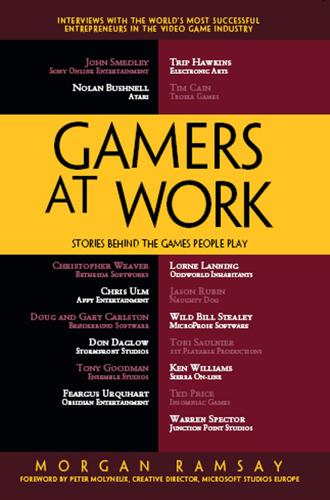
Gamers at Work: Stories Behind the Games People Play
by
Morgan Ramsay
and
Peter Molyneux
Published 28 Jul 2011
Earl got a series of index cards. He had a college kid help him do it. He had index cards on how each pitcher did against each hitter. Earl had more detailed statistical knowledge than other managers did, and he used that to influence his decisions. That’s thinking mathematically. There was one time sitting in his office, which was one of the great experiences in my life. Imagine you’re sitting with one of the most famous thinkers in the world on a topic that you’re interested in, and he reaches into his desk and pulls out a stack of index cards. If it were economics, that stack of index cards might be what won him the Nobel Prize.
…
If it were economics, that stack of index cards might be what won him the Nobel Prize. Earl Weaver is in the Hall of Fame. One of the reasons he’s in the Hall of Fame is because of his stacks of index cards. He reached into his desk, pulled out his index cards, and showed them to me, which he normally wouldn’t do. That was a fabulous, fabulous moment. Eddie and I had access to that level of feedback from Weaver, so that was fabulous. La Russa is a very different sort of a manager. People would say that you couldn’t have two managers who were successful but who were more different. Their careers only overlapped for a few years in baseball, but what they have in common is that they both think very mathematically.

Small Space Organizing: A Room by Room Guide to Maximizing Your Space
by
Kathryn Bechen
Published 1 Jan 2012
When I redecorated my bathroom in all-white this past year, I bought several small white vases and pitchers. I stood my hair gel and hand lotion in the vases and put my reading glasses in a pitcher. Another pitcher holds my cell phone while it’s recharging. I bought a white china serving tray to use on my hubby’s bathroom vanity to hold his keys, eyeglasses, and the love notes I write him on index cards. Pump soap dispensers are always neater and more sanitary than soap dishes. Clear glass containers with lids attractively hold cotton balls and prevent them from getting dusty. I use a clear antique spoon holder to store Q-tips. I have also put them in an antique floral creamer that was just the right size.
…
If you love color, why not buy purple file folders and colored paperclips? (Although be aware that colored file folders often go out of vogue and then go out of stock.) My own home office supplies, for example, include green polka-dotted binder clips, a beautiful peach floral clipboard, brightly colored index cards for notes, floral notepads, hot-pink mailing envelopes, and of course, my favorite hot-pink roller ball pens! The point is, whatever your taste, you can find it these days in office supplies—so why not integrate them into your home office to make it more fun? Office Equipment and Supply List To make it easy for you to shop, I’ve included a list of office equipment and supplies on pages 227–29.
…
Home Office Equipment and Supplies List Desk Area Comfortable desk with drawers Comfortable desk chair Office armoire Attractive slipcover for desk chair All-in-one machine (or separate machines) Computer and printer Fax machine Phone Cell phone Drawer trays to divide and hold supplies in desk (silverware trays work great) Paper clips Binder clips Highlighters (yellow are best as they do not show through on photocopies) Post-it flags to mark pages in books or on photocopies Scotch tape Carton cutter Post-it notes in several sizes and colors Pencil sharpener Rubber bands Letter divider to hold envelopes, Post-it notes, etc. Mugs to hold pens, letter opener, etc. Wall calendar Task lighting Stapler Staples Pens (Uni-ball brand roller ball pens are great and come in several colors) Scissors Paintbrush to dust desk and computer keys Index cards for capturing ideas and taking notes Pencils Phone message pad Business card holder Business cards Notecards with your logo to write thank-you notes Legal size mailing envelopes Letterhead or stationery Small spiral notebooks for notes Notepads Glue stick Liquid Paper correction fluid Postage stamps and holder Paperweight Calculator Bold permanent marker pen Planner calendar with address book (either paper or electronic—whatever works for you) Caddy to hold hanging file folders Manila file folders Manila file pockets Green hanging files Green hanging files—box bottom Clear label holders for green hanging files Bookcases Three-ring binders with clear pocket on front (1", 2", 3" sizes in white) Handheld label maker for binder labels Three-hole punch Bookends Photo boxes (hold a lot of miscellaneous supplies and can be labeled by topic) Wicker baskets (hold supplies nicely) Magazine holders Files Two-drawer cabinets are low and can be put side-by-side like a credenza and the top used to sort papers etc.
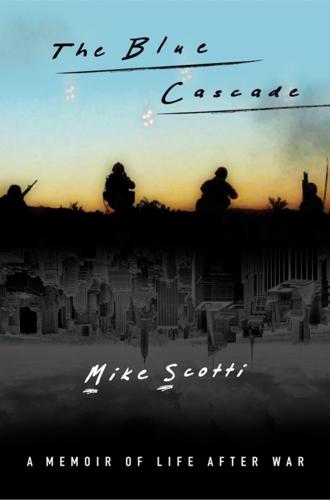
The Blue Cascade: A Memoir of Life After War
by
Mike Scotti
Published 14 May 2012
But I had used the momentum of the exercise and all of its bathing and cleansing properties, and the compassion of people who were now my friends, to reboot it. I had pressed a button and sent a shockwave of good chemicals through my system—just as an infantry battalion, when it’s fighting the way it should be, sends a shockwave through its enemy. After the run, I climbed the stairs to my apartment and grabbed an index card and a marker. I wrote the word on the index card and taped it to my mirror underneath the other pieces of paper. And when I read it, my heart skipped a beat. Reset. * * * My mom called me one day and said she wanted to tell me a story about my dad. “Your father had an idea the other night of writing a story about what it’s like for parents when their child goes to war.
…
O’Brien Chief Credit Officer Global Head of Credit Risk Management Member—Chairman’s Board and Management Council He was just a few rungs from the very top of the entire 63,000-employee, $60-billion-per-year multinational investment bank. He was like a general. A guy like that could snap his fingers and change your whole life, I thought. After asking the HR folks if they needed any help, I headed inside to review the list of MDs that I had scribbled using a small golfer’s pencil on the single 3 × 5 index card that I carried in my pocket. The index card was less bulky than a notebook and didn’t ruin the lines of my suit. It was also easy to quickly and discreetly check between ass-kissing circles because it didn’t need to be unfolded. One of my buddies showed up a few minutes later. Our conversation easily accompanied the stress and mild form of insanity that was the fall MBA recruiting season.
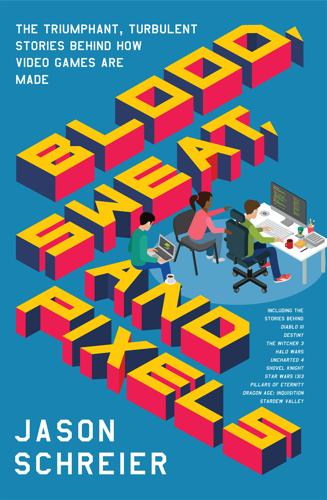
Blood, Sweat, and Pixels: The Triumphant, Turbulent Stories Behind How Video Games Are Made
by
Jason Schreier
Published 4 Sep 2017
During this process, Straley and Druckmann brought in a rotation of designers and cowriters, both to help plot the story and so they’d get a feel for who could replace them as directors when they eventually left the project. For weeks, they’d meet in the same room, assembling index cards on a big board that became their Uncharted 4 bible. Each index card contained a story beat or scene idea—one midgame sequence, for example, was just called “epic chase”—and taken together, they told the game’s entire narrative. “One thing we’ve never done here is sat down and written down an entire script for the whole game start to front,” said Josh Scherr, a writer who sat with Straley and Druckmann for many of these meetings.
…
“They had a plan, a clear plan, and they expressed it to the team. It instilled confidence. As sad as it was to see the team that had such a long history with the franchise leaving, [we could] see the future and the light at the end of the tunnel.” Over the next few weeks, Straley and Druckmann sat in a conference room and stared at index cards, trying to craft a new version of Uncharted 4’s story. They’d decided to keep Nathan Drake’s brother, Sam, but they wanted to make him less of a villain. Instead, he’d serve as a temptation, as the catalyst that got Nathan Drake out of domesticity and back to his treasure-hunting ways. They kept the antagonist Rafe, too, writing him as a rich, spoiled brat who was fueled by jealousy for Drake’s success.
…
“We all wanted to make sure that, because this was the last Nathan Drake game we were making, it was going to go out with as much stuff as we possibly could.” Nowhere was this more evident than their E3 demo, which became the Uncharted 4 team’s biggest milestone as they entered 2015, following a successful showcase at PSX. This would be the “epic chase” from their index cards—a wild ride through the streets of a fictional city in Madagascar, showcasing the game’s complicated new vehicles and explosions. In the weeks leading up to E3, Uncharted 4’s artists and designers worked nonstop hours trying to make everything click. Once a week (and sometimes once a day) the whole E3 team would meet up in the theater to go over their progress.

Fortune's Bazaar: the Making of Hong Kong: The Making of Hong Kong
by
Vaudine England
Published 16 May 2023
The other daughter, Lucy, married Lo Cheung Shiu, thereby tying the Zimmern line to the Ho Tung. 9 The Chronicle & Directory for China, Japan & the Philippines, etc., 1868–1939; 1871, p. 152. 10 A family story is that George died when he rode a bicycle, then new in town, down steep Garden Road, straight into the harbor. Carl T. Smith Collection, Index Card 51-878, conversation with James S. Lowcock, retired headmaster of DBS, November 1, 1990. 11 Author correspondence, Dr. Ron Zimmern, January 2020. 12 This included Sir Robert Ho Tung and members of the Ruttonjee, d’Almada e Castro, Tso, Mok, Fung, and other families. 13 Hong Kong Stock Market History Project, Interview with Francis R. Zimmern, Former Chairman of the Hong Kong Stock Exchange 1972–77, November 14, 1996. 14 Carl T. Smith Collection, Index Card 50-117. 15 Interview, Kim Fenton, March 21, 2018. 16 Interview, Patsy Fenton, March 23, 2018, at 114 Waterloo Road. 17 Cicely Kotewall-Zimmern, “Recollections of My Life,” p. 62. 18 Ibid., p. 66. 19 John and Doris’s father, George Lambert Fenton, traded in Macao, where he took Portuguese nationality.
…
CO129/411, no. 27973, July 31, 1914. 29 JMA, J1/15/2, January 23, 1936; J1/9/4, August 20, 1936. 30 HSBC Archives (London), HQ HSBCK 0003-0001 and 0002, Grayburn Letters, June 20, 1936, January 25, and November 20, 1937, etc. 31 John Darwin in Robert Bickers and Christian Henriot, New Frontiers: Imperialism’s New Communities in East Asia 1842–1953, pp. 257–58. 32 John Darwin, After Tamerlane: The Rise and Fall of Global Empires 1400–200, p. 416. 33 Elizabeth Sinn and Christopher Munn, eds., Meeting Place: Encounters Across Cultures in Hong Kong, 1841–1984, p. 172. 34 Ibid., p. 154. 35 Ibid., p. 171. 36 Ibid., p. 172. 37 Ibid., pp. 172–73. 38 CO129/478, letter by Stubbs, September 16, 1922; CO129/462, July 29, 1920. 39 Pomfret, “Raising Eurasia,” p. 330. 40 www.youtube.com/watch?v=U_4fQwlcrBQ. 10: THE EURASIANS 1 Samuel’s mother, Cheung or Yip, was at some point also the second wife of Sin Tak Fan in a union that produced no children (Carl T. Smith Collection, Index Card 39-783, citing Elizabeth Sinn). His descendant James Lowcock told Anthony Sweeting, October 22, 2007, that “a particular Scottish merchant loved his ‘Chinese wife and family’ so much that, when he had to leave Hong Kong due to ill-health, he begged his replacement to look after them. The newly arrived merchant did much more than that; he married the woman and gave his name to her children, thereby establishing a rather complex provenance for this particular Eurasian family.”
…
Lopes, “Inter-imperial Humanitarianism: The Macao Delegation of the Portuguese Red Cross during the Second World War.” 27 Interview, Norma d’Almada Remedios, March 16, 2018. 28 Hongkong News, March 29, 1942. 29 Communication with Brian Edgar, June 2013. 30 Howard Elias, Jewish Historical Society, October 15, 2018; China Mail, July 6, 1938. 31 Carl T. Smith Collection, Index Card 76-1322; South China Morning Post, June 14, 1948. Those named are Vivian Benjamin, Leontine Ellis, S. D. Gerzer, Sarah Gubbay, Dr. Rudolf Hoselitz, H. B. Joseph, H. Lipkovsky, A. Samuel, Leo Weill, and Reginald Goldman from the Hong Kong Volunteers, I. L. Goldenberg of the RNVR, and D. Kossick of the Civil Defence. 32 Gunn, ed., Wartime Macau, pp. 147, 153. 33 See Gosano’s memoir, Hong Kong Farewell, for his modest account of his wartime heroism, pp. 25–29, and his bitterness at second-class citizenship under the British.
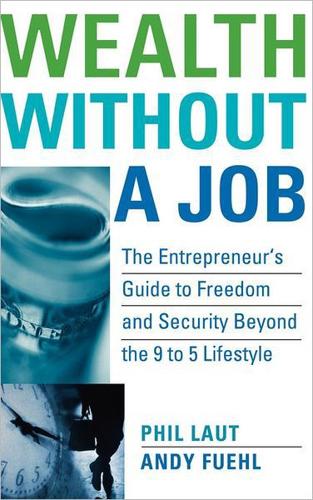
Wealth Without a Job: The Entrepreneur's Guide to Freedom and Security Beyond the 9 to 5 Lifestyle
by
Phil Laut
and
Andy Fuehl
Published 12 Sep 2004
Change your interpretation of fear to “GET READY.” Fear means you should get ready to meet the challenge at hand. NO MORE PROCRASTINATION METHOD Here is a method we learned from our friend, author and teacher Jeffery Combs. Do this right away. Gather together: • A supply of index cards or sticky notes • Paper clips • A supply of dollar bills Write down the tasks you are currently avoiding, one for each index card or sticky note. Then write down the date and time when you want to complete each one. An example might be: Graphics designed and organized for my new book. Noon Friday April 4, 2005 Make sure to state the goal, date, and time precisely, as in the example, so that your mind has no doubt about what you mean.
…
EXERCISE: DEVELOP YOUR SMART GOALS Take a few minutes right now and write down your top five goals. Make sure they are SMART. Take action now to achieve what you desire and deserve. No more procrastinating! The way to achieve your goal is to take massive action now. Do you want to cheat yourself or treat yourself? Once you have your SMART goals written, copy them onto a 3-x-5 index card. Carry the index card with you. Any chance you get, take out your goals and read them. The more you do this, the more your unconscious mind will grasp on to them and make them a reality for you. Read your goals at least twice a day—once when you wake up and right before you go to sleep. Make sure you have a good mental image of what your goals are.

Among Schoolchildren
by
Tracy Kidder
Published 14 Jun 1989
"Felipe, you did all these problems by yourself! A light went on up there in the old attic, huh? You should be proud of yourself. Are you proud of yourself?" Felipe shrugged coyly. He did look proud, but Chris was prouder than he, faintly smiling from her desk at the volatile, black-haired, gleaming child. She printed out on index cards the steps to long division, and taped the one that read COMPARE to Manny's handsome forehead. That made Manny grin and, for the time being anyway, remember. Her introduction to astronomy was, she felt, far and away the best of her science lessons so far: a tour of the solar system with charts and glossy photographs, the children arguing loudly with each other when Arabella, playing Galileo before the Inquisition, suggested that the sun might be larger than the earth, and Chris chuckling to herself and lifting her eyebrows and saying, "We'll find out."
…
Chris herself sometimes felt a great desire to glue Claude's glasses to his nose, shake him by the shoulders, and say, "Forget the illnesses, forget the fishing, forget the excuses. Concentrate on what you're doing right now!" She had to keep on him. But she had to do it gently. The boy was enough of an outcast as it was. Chris taped an index card to the top of Claude's desk: DON'T FORGET TO COPY YOUR ASSIGNMENT! Claude was very happy with the card and kept fingering it, but he didn't usually follow its command, at least not yet. Chris kept lecturing him, but she did it quietly and in private. First thing in the morning, she would call Claude to her desk, ask him for the work he owed, and then tell him she was disappointed.
…
One day Chris heard her say to Ashley that if Ashley's spelling partner was out, Ashley should work with another group—she could work with Kimberly's. Chris thought, "I'm seeing little sparks out of Kimberly. Now if I could just grab them..." And was something like a change coming over Claude? He had lovingly fingered the index card Chris had taped to his desk top, the one with the message DON'T FORGET TO COPY THE ASSIGNMENT! The card had peeled up. Now it had vanished—to where, Claude couldn't say. The red piece of construction paper on which Judith had recorded Claude's bet with Dick still lay on the counter under the window.
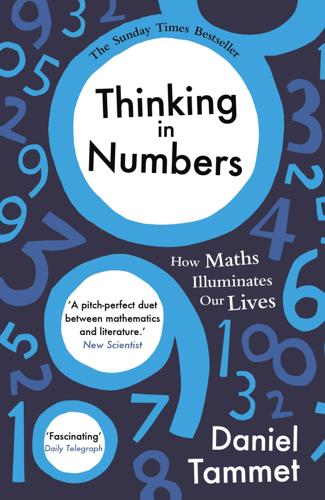
Thinking in Numbers
by
Daniel Tammet
Published 15 Aug 2012
A new story he would frequently write backwards, starting out from its final lines. Lolita, Nabokov’s most famous (and infamous) novel, began life on a long series of three-by-five-inch index cards. He sketched out the story’s closing scenes first. On subsequent cards Nabokov jotted down not only paragraphs of text but also plot ideas and other bits of information; on one, a chart of statistics on the average height and weight of young girls; on another, a list of jukebox songs; on a third, an illustration of a revolver. Every so often Nabokov would rearrange his index cards, searching for the most promising combination of scenes. The number of possible permutations would have been immense.
…
Three of Nabokov’s cards can be rearranged in a total of six different ways: (1, 2, 3), (1, 3, 2), (2, 1, 3), (2, 3, 1), (3, 1, 2), (3, 2, 1), while ten cards (equivalent to between two and three printed pages in a book) would be capable of permuting into more than three and a half million sequences. To compose only four or five pages (equivalent to the contents of about fifteen index cards) would require a choice from among some 1.3 trillion variations. Lolita runs to sixty-nine chapters and over three hundred and fifty pages, which means that the number of its potential versions exceeds (by an almost unimaginable margin) the number of atoms that make up our universe. Of course, many of these potential Lolitas would simply not have been viable.

Casino
by
Nicholas Pileggi
Published 13 Aug 2015
DeLuna was an armed robber and hit man, but he had the soul of a bookkeeper: he kept meticulous notes of his travels and itemized all his expenses on three-by-five index cards and in notebooks. The names of the people were in code, but they were easily decipherable. Allen Glick was called Genius. Lefty Rosenthal was called Crazy—which DeLuna misspelled as “Craze.” Joe Agosto of the Tropicana was Caesar—misspelled “Ceasar.” In late 1977, DeLuna and Carl Civella flew to Chicago to meet with the boss, Joe Aiuppa, and the underboss, Turk Torello. “Talk was of Genius taking the place for himself,” DeLuna wrote on his index card, thus documenting the mob’s first attempt to get rid of Allen Glick by having him buy them out.
…
And yet, eight years later, the whole thing blew up in the parking lot on East Sahara Avenue. PART ONE Betting the Pass Line 1 “My pals thought I was the messiah.” LEFTY ROSENTHAL DID not believe in luck. He believed in the odds. In the numbers. In probability. In the math. In the fractions of data he had accumulated copying team statistics onto index cards. He believed that games were fixed and that referees and zebras could be bought. He knew some basketball players who practiced the art of missing basketball rim shots for hours every day, and he knew players who bet the middles between the odds spread and got a return of 10 percent on their money.
…
“You know how you go to a relative’s house and they haven’t thrown anything away for years?” said one Kansas City police officer. “That’s what the basement was like. He was probably one of those guys who said, ‘You’ll probably never know when you’ll need it.” In a locked room in the basement, agents found notebooks, steno pads, hotel note pads, index cards, all of them covered with neatly written notes in red or black ink, dated, and neatly itemizing all of DeLuna’s expenses. The messages are in code, but the code was easily deciphered once it was matched to surveillance and wiretapped conversations. The notes showed the breakdown and distribution of the skim—to 22, or Joe Aiuppa of Chicago; to Deer-hunter, or Maishe Rockman of Cleveland; to Berman, or Frank Balistrieri of Milwaukee; to ON, or Nick Civella of Kansas City.

Polaroids From the Dead
by
Douglas Coupland
Published 1 Jan 1996
Cannot be used against you. 310 207-XXXX Benedict Canyon house for rent. 4-bdrm, hdwd floors, quiet patio, 2-car garage. $1,800/month Westec patrol officer seeks guest house for rent. [Various index cards touting home computer training, home security systems and pizza ovens. A vogue for home pizza ovens seems to have apparently come to an end.] 1976 Porsche 911S Targa. $10,000 Ted Soqui/Sygma One has a hunch that in 1964 the same billboard harbored index cards offering dance lessons, free kittens and piano lessons. The local newspaper, the Brentwood News, a puree of local chitchat fueled by real-estate-driven editorial, follows Brentwood’s home sales minutiae with seemingly pornographic fidelity, chronicling monthly the ebb and flow of land capital followed by ads for local properties.
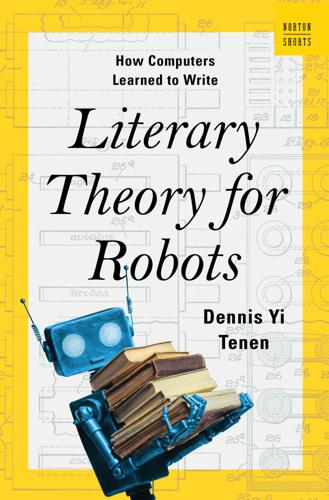
Literary Theory for Robots: How Computers Learned to Write
by
Dennis Yi Tenen
Published 6 Feb 2024
These tools were missing from the scholarly record because authors who made it out of the “fiction factory” rarely revealed the dirty secrets of their trade. Painting by the numbers diminished the myth (and the earning potential) of any artist. It wasn’t good for one’s career. And so the world marveled at Vladimir Nabokov’s exceptional use of index cards in the making of his novels, while the pages of the Editor routinely pushed ordinary articles about “using index cards to author your bestseller,” alongside advertisements for home card-filing furniture. Now, I did hunt down and read most of the books above, so you don’t have to. Some of them were pretty bad. Others offered reasonable advice. The techniques proposed within—the machinery, so to speak—generally fell into one of several categories.
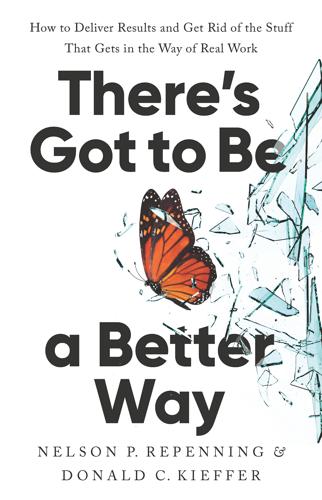
There's Got to Be a Better Way
by
Nelson P. Repenning
and
Donald C. Kieffer
Published 26 Aug 2025
There were no major investments in IT, reorganization, or training. Instead, the whole project required about thirty dollars’ worth of string, clothespins, and index cards. The staff’s enthusiasm soared. Within a year of implementing these changes, the entire Fannie Mae closing process took about six days. As one of the core staff managers said to Caroline, “I had no idea how much we underestimated the capability of our team.” The Close Line Caroline explains, “We put each task on an index card and hung it on string on the wall using mini-clothespins. It looked like a clothesline in the neighbor’s backyard, so we laughed and called it the ‘Close Line.’
…
Everyone was on the same page about what needed to be done and why. Low-priority and legacy activities disappeared. At every session, the group recalibrated and realigned. Confidence in the plan and its execution rose. Making the flow of work visible, whether it is putting parts on the main aisle or clipping index cards to a piece of string, can transform an organization’s culture. It is hard to keep quiet when everyone is staring at the same set of gaps, issues, and redundancies, and those gaps, issues, and redundancies are staring right back. People naturally join in to put the pieces together. As Caroline said, when asked to reflect on the process, “It felt like a cross between playing a board game and working a jigsaw puzzle.”
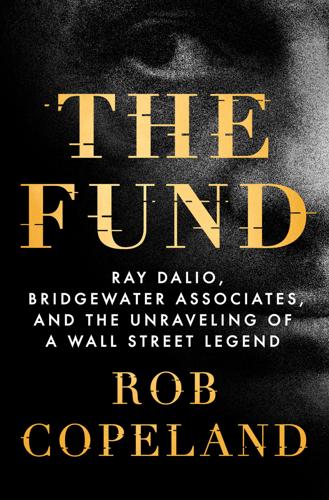
The Fund: Ray Dalio, Bridgewater Associates, and the Unraveling of a Wall Street Legend
by
Rob Copeland
Published 7 Nov 2023
He often brought up new ideas; in one instance, he told a Bridgewater team to imagine training everyone to be a ninja, and then cloaking everyone in different colors, rather than sashes, to denote the best fighter. At Bridgewater the most important, overarching assessment would be called believability. At one confab with McDowell several months into the project, Dalio took out an index card and jotted the word believability at the top, circling it several times, and drawing squiggly lines running down from it. Believability would be an amalgamation of all the ratings in each category and be listed in bold type at the top of the baseball cards. People at Bridgewater with high believability in certain categories would have their ratings of others counted more heavily than others.
…
.… That’s like taking your shoe size, adding it to your body temperature, and adding it to the time of day, and then dividing by three, and having it to the third decimal point, and thinking you have discovered something.” That analogy didn’t seem to land, so McDowell tried another. “These ratings are not like a blood test that actually tells you what your white cell count is. They are approximations. They are just people’s opinions of each other.” Dalio looked at McDowell, then gestured to the index card, the lines dribbling down from top to bottom. “Believability cascades. You should have done this. I just did your job for you.” Dalio walked out. * * * BY NOW McDowell had figured out that when Dalio said he had a solution to a problem, it was best not to argue. McDowell pledged to give believability a shot.
…
McDowell explained to Dalio that this was a sign the system was working, that Bridgewater was fishing out the pockets of talent in its ranks—exactly as Dalio had asked him to do. Dalio’s voice made no secret of his irritation. Why doesn’t believability cascade from me? McDowell thought back to Dalio’s index card drawing. He realized that Dalio hadn’t been sketching out the mere concept of believability on top. He had drawn himself quite literally at the head, bestowing believability to all beneath him. The fix was obvious. McDowell assigned an underling to go into the software and program a new rule. Dalio himself would be the new baseline for believability in virtually all important categories.
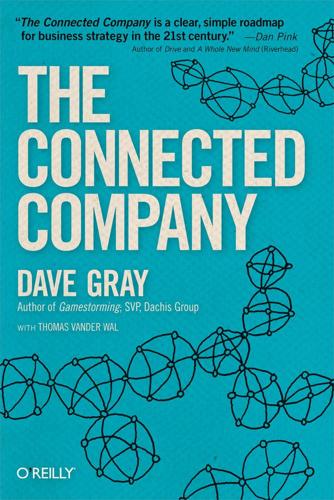
The Connected Company
by
Dave Gray
and
Thomas Vander Wal
Published 2 Dec 2014
And though the task was impossible, I did try to speak to everyone, understand every company, and read every book and article that was suggested. My desk piled high with books, papers, and transcribed interviews, which were soon were marked, folded, plastered with sticky notes, and supplemented with boxes and boxes of cross-referenced index cards, diagrams, and sketches. So many people contributed to this effort that it would be impossible to recognize them all in such a small space. But I must single out a few people whose contributions loom large. The book would not have happened without a series of conversations with Thomas Vander Wal, which led to my initial blog post, “The Connected Company.”
…
You can read more about Morning Star on their website, or in the excellent HBR article by Gary Hamel, “First, Let’s Fire All the Managers.” The Nordstrom Way Nordstrom is a publicly traded, high-end retailer known for excellent service, with revenues of about $9 billion a year. Nordstrom’s employee handbook is so short and simple that it can fit on an index card. It states: “Use your best judgment in all situations. There will be no other rules.” Nordstrom salespeople are free to make their own decisions, although Nordstrom’s strong culture of putting the customer first provides a guiding light for all to steer by. That customer service culture is at the core of Nordstrom’s success.
…
When setting parameters, the simplicity or complexity of the rules can expand or reduce the latitude people feel that they have to do their jobs. Rules that people can keep in their heads are easier to follow and easier to share. Here is the Nordstrom employee handbook in its entirety, written on an index card: WELCOME TO NORDSTROM. We’re glad to have you with our Company. Our number one goal is to provide outstanding customer service. Set both your personal and professional goals high. We have the great confidence in your ability to achieve them. Nordstrom rules: Rule #1: Use your good judgment in all situations.

Hot Lights, Cold Steel: Life, Death and Sleepless Nights in a Surgeon's First Years
by
Michael J. Collins
Published 1 Feb 2005
I was terrified that at any moment it might go off and a frantic nurse would scream, “Doctor, come quickly! Mr. Arnold’s TQF is trans-debilifying on his acute dorsi! His TKA is UTO’d! For God’s sake, hurry!” I spent the rest of the day reviewing charts, slowly gleaning bits of information, jotting down on my ever-present index cards things like “TKA="Total" Knee Arthroplasty,” “ORIF="Open" Reduction Internal Fixation,” “UTO="Upper" Tibial Osteotomy.” Some things, however, defied my best efforts to decipher them. “Patient is TTWB,” I read. Too tired with bending? Three times without bleeding? Terribly thirsty without beer? How in the hell did I know?
…
But someday my turn would come—and I’d better be ready. I studied harder than I had ever studied before—partly because I was ashamed of my ignorance, partly because I realized that patients’ health and lives would soon depend on me, and partly because I actually liked this stuff. I was falling in love with orthopedics. Every night I took out the index cards upon which I had jotted down questions and notes. I went over them one by one, often waking at 2:00 or 3:00 A.M., my head slumped forward on the desk, drool staining the page I had been reading. I would stagger to bed and curl up next to Patti for a few hours. The next morning I would start all over again.
…
The little boy’s body was lying naked on a metallic table in the center of the room. The man was obviously performing the postmortem. He held a Dictaphone in his left hand, a tape measure in his right. I introduced myself. We said a few words and then went about our business. I examined the boy and scribbled a few notes on the index card I carried in my shirt pocket. Lying pale and naked on that table, he didn’t look like a little boy anymore. He looked like a dead body. The pathologist adjusted his glasses and went on with his dictation. “Severe cranial contusion involving the right temporoparietal region…” This was too much for me.
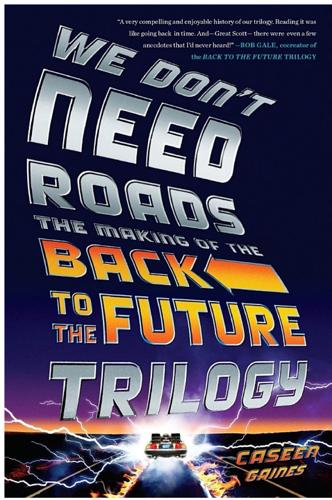
We Don't Need Roads: The Making of the Back to the Future Trilogy
by
Caseen Gaines
Published 22 Jun 2015
A few weeks earlier, when I reached out to Christopher Lloyd’s manager, he asked me if Zemeckis was on board. A line was drawn in the sand: The day I spoke to the director would be the day an interview would be scheduled with the Doc. Challenge accepted. I hung up the phone with Lloyd’s rep and retrieved the index card with Zemeckis’s agent’s phone number written on it, a three-by-five piece of card stock that had been haunting me ever since I’d scribbled on it four months earlier. Without jumping through too many hoops, I got a hold of Zemeckis’s assistant, who promptly scheduled a half-hour interview for us, with only one request: “We respectfully ask that you contain the time to the thirty minutes which we have allotted.”
…
After a few minutes of monologue, his partner gave him a nudge, stopping Bob Z just long enough for the two to be offered a development deal at Columbia to expand their idea into a screenplay. Within a few days, the two got to work. “Bob and I always sat in the same room, usually our office, and talked through everything,” Gale says. “We would first outline the movie on index cards and put them up on a corkboard on the wall. Once we had a structure and plan for the film, we’d start with the first scene and talk it through. We’d work out the dialogue in each scene together, and I’d make detailed notes.” “It was a true collaboration,” Zemeckis adds. “We were very much in sync, and when a good idea got sparked, it was pretty much just back-and-forth, talking everything through.
…
His girlfriend’s name is Suzy, his mother’s is Eileen, Marty travels back to 1952, and his parents have their first kiss while the band Lester & the Moonlighters plays Eddie Fisher’s 1951 single “Turn Back the Hands of Time” at the Springtime in Paris dance. Frank Price still thought the general conceit of the movie was good, but believed the screenplay was too rough around the edges. The Bobs, ever hopeful, went back to their office with index cards in tow. “Inevitably, our opinion regarding our own first rough draft was that it was terrible,” Gale says. “This was true with every script we’d ever written. We proceeded to revise, deconstruct, and overhaul the work.” A second draft was completed on April 7. Price thought their second go-around was better, but he passed on giving Future the green light.

Singular Intimacies: Becoming a Doctor at Bellevue
by
Danielle Ofri
Published 31 Mar 2003
The smudges and wrinkles and stains bespoke weighty duties that surmounted any possible fashion statement a crisp clean coat could offer. Li-Chan wore the sleeves crammed up past her elbows, ready for important intern work at a moment’s notice. The coat itself was a monument to economy and proficiency. The side pockets bulged with syringes, gauze pads, alcohol swabs, and IVs. The breast pocket was jammed with index cards, pens, EKG calipers, and the tiny blue Facts and Formulas book. The eighty-two pages of microscopic print in that three-by-five-inch book contained everything from disorders of phosphorous metabolism to the calculations for fractional excretion of sodium. Page 30 was folded over for rapid access to Renal Tubular Acidosis—every intern had to be able to distinguish Type IV RTA from Types I and II.
…
When I was an intern I’d had to do all the horrible scut work for my patients, but I always had the relief of my resident, who made all the important decisions. No matter how awful things became, there was always my resident to turn to who seemed to know all the answers. Once the clock had struck 12:01 A.M. on July 1st, I had to come up with those answers myself. I consulted my freshly printed index cards. Harold Goode—homeless, shooter with a fever, admitted last night, empiric antibiotics for possible endocarditis. I had picked up the 16-West service this morning and didn’t know the patients yet, but I had to learn them quickly. Now I was the resident. Sarita was biting her lip to keep from crying outright.
…
Later that afternoon when Sarita and I were rounding, I was both shamed and relieved to see that the IV team had managed to get a scrawny IV in his arm. “Look at this one, baby.” Mr. Goode flaunted it at us. “You doctors don’t know shit about IVs. I been around. I been to Beth Israel. I know what’s up and I’ll be stickin’ with the IV team.” Sarita looked away hurriedly, pulling her index cards from her pocket and shuffling them haphazardly. I think she was trying to spare me the embarrassment. How I wished I could have sunk a 14-gauge IV into his deep brachial vein just at that moment. A really big, painful IV the size of a ballpoint pen—one stick, ram it in, no blood spilled. One solid IV barreling through all those scars and skin ulcers down to the damn obstreperous veins that I knew were lurking underneath his opaque, dark skin.
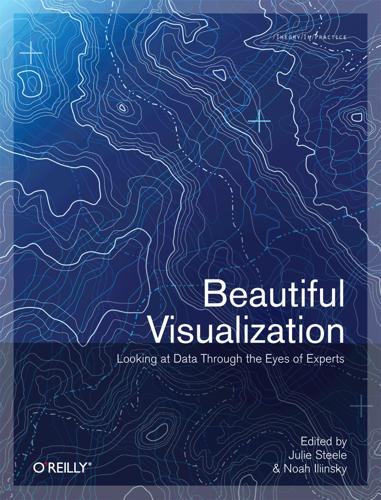
Beautiful Visualization
by
Julie Steele
Published 20 Apr 2010
Lombardi would meticulously comb through newspaper articles and magazines, recording his findings by hand. He had neither an API to pose his questions to, nor any kind of database or software to store his answers in. Instead, Lombardi amassed a collection of more than 14,000 index cards, on which all of his questions and answers were written and from which he drew his historical diagrams (see Figure 10-1 in Chapter 10). Unless you happen to have a few thousand index cards and a few weeks of spare time handy, we’re going to need to think of a faster way to manage all of our questions and answers. There are a number of different ways we could approach this on a computer, and a variety of different software tools and programming languages that would be up to the task.
…
Databases As Networks Structured data in the fields of art history and archaeology, as in any other field, comes in a variety of formats, such as relational or object-oriented databases, spreadsheets, XML documents, and RDF graphs; semistructured data is found in wikis, PDFs, HTML pages, and (perhaps more than in other fields) on traditional paper. Disregarding the subtleties of all these representational forms, the underlying technical structure usually involves three areas: A data model convention, ranging from simple index card separators in a wooden box to complicated ontologies in your favorite representational language Data-formatting rules, including display templates such as lenses (Pietriga et al. 2006) or predefined query instructions Data-processing rules that act according to the data-formatting instructions Here, we are interested first and foremost in how the chosen data model convention interrelates with the available data.

Is Everyone Hanging Out Without Me? (And Other Concerns)
by
Mindy Kaling
Published 1 Nov 2011
So, it turns out that keeping your eyes open is the key to learning to ride a bike. Once I mastered balance, my dad left me alone to do bike drills so I’d have it ingrained. “Doing drills until it’s ingrained” is actually a classic Indian technique of teaching children things that goes back to Sanskrit liturgical texts. Index cards and Sharpie pens are actually distinctly Indian cultural artifacts to me. I rode my bike, for hours, around the parking lot behind Beth Shalom. Let me remind you that this was before iPods. This was even before those bright yellow sports Walkmans. With no music to listen to, I just biked around in circles talking to myself like a kid on the cover of a Robert Cormier young adult novel, circling around puzzled Jewish families walking back to their cars.
…
The self-proclaimed no-holds-barred atmosphere reminds me of signs for strip clubs on Hollywood Boulevard: “We Have Crazy Girls. They Do Anything!” We don’t have to do anything. Let’s bar some holds. My Favorite Eleven Moments in Comedy WHEN I WAS a kid, I was obsessed with listing my favorite things. I kept an index card with all my favorite foods folded in my wallet, just in case anyone asked me what they were. Then when people walked away, I imagined they’d say: “Whoa, Mindy Kaling is so cool and self-actualized. McDonald’s pancakes are her favorite food, and she was able to tell me right away.” I was prepared for all kinds of potential fun situations when I was kid.

Loving Someone With Asperger's Syndrome: Understanding and Connecting With Your Partner
by
Cindy Ariel
Published 1 Mar 2012
Try appealing to his sense of logic; help him understand the tasks necessary for the smooth operation of your relationship system. Exercise 8.1 Developing Your Relationship Connection Through this exercise both you and your partner can gain some clear ways to express and feel your relationship connection. Use at least five slips of paper or 3 by 5 index cards to write things you do that help you to feel connected to your partner. Use additional slips of paper or cards to write at least five things you would like your partner to do that would help you feel connected to her. For example, you may need (and get) things like greetings on arrivals and departures, compliments, sitting or walking together, and e-mails.
…
Ask your partner for what you need in specific terms, such as a hug when she comes home each day. Perhaps she already does some things that you enjoy; make sure to offer appreciation and ask for her to continue doing them. Write the activities that you and your partner agree to do for each other on separate 3 by 5 index cards or slips of paper, and put a rubber band around them to keep them together. Make it a goal or a rule for you and your partner to randomly choose one statement or activity from the card pile to offer each other regularly. You can increase the frequency later, but for now start slowly. Focus on getting more of what you need without overwhelming your partner.

The Woman Who Smashed Codes: A True Story of Love, Spies, and the Unlikely Heroine Who Outwitted America's Enemies
by
Jason Fagone
Published 25 Sep 2017
The president of Harvard changed admissions rules to keep Jews out. Henry Ford launched an anti-Semitic weekly newspaper with a declaration that “the Jew is the world’s enigma.” Officers in the Military Intelligence Division of the War Department tracked intelligence reports about Jewish activities on index cards labeled “Jews: Race” and kept a central dossier on the “Jewish Question” that included documents like “The Power and Aims of International Jewry.” The MID men were William’s colleagues. So he treaded carefully in Washington, lest he provoke an anti-Semitic reaction that seemed to always be near.
…
Immediately after his funeral, in the now-empty house, she sat at William’s own desk, the one with the 1918 KNOWLEDGE IS POWER photo under the glass, and worked to complete the annotated bibliography of his papers. The task occupied her for eight to ten hours a day. She mourned her husband while writing crisp descriptions of his articles and books on index cards. She did it out of a sense of duty to William, who would have wanted the project completed, and she also hoped that the collection, once open to the public, would entice a first-rate historian to write a biography of William, a book to cement his reputation. The Marshall Library paid for a typist to help her one to two days a week and it still took months to finish the 3,002 cards for the 3,002 unique items in William’s collection.
…
The NSA sent representatives to the library twice, in 1979 and 1983, each time removing an unknown number of William’s items, but the Friedmans had done such a careful job of indexing that a sharp-eyed professor at Virginia Military Institute, Rose Mary Sheldon, noticed that about 200 of the 3,002 index cards were missing. Sheldon submitted a series of Freedom of Information Act requests that eventually prodded the NSA to release 7,000 additional Friedman documents. In the last two decades the agency has gotten more comfortable telling its history—today it holds public cryptologic history conferences and operates a museum—but it took a while, and in the meantime, the Friedmans had created this alternate archive, beyond U.S. government control, where anyone could learn about U.S. codebreaking.
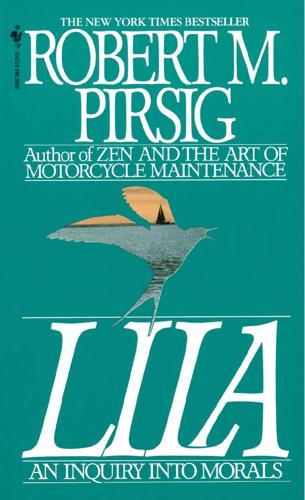
Lila: An Inquiry Into Morals
by
Robert M. Pirsig
Published 1 Jan 1991
The earlier slips began to merge about a common topic and later slips about a different topic. When enough slips merged about a single topic so that he got a feeling it would be permanent he took an index card of the same size as the slips, attached a transparent plastic index tab to it, wrote the name of the topic on a little cardboard insert that came with the tab, put it in the tab, and put the index card together with its related topic slips. The trays on the pilot berth now had about four or five hundred of these tabbed index cards. At various times he’d tried all kinds of different things: colored plastic tabs to indicate subtopics and sub-subtopics; stars to indicate relative importance; slips split with a line to indicate both emotive and rational aspects of their subject; but all of these had increased rather than decreased confusion and he’d found it clearer to include their information elsewhere.
…
Experiments have shown that spiders fed LSD do not wander around doing purposeless things as one might expect a hallucination would cause them to do, but instead spin an abnormally perfect, symmetrical web. That would support the de-hallucinogen thesis. But politics seldom depends on facts for its decisions. Behind the index card for the PEYOTE slips was another card called RESERVATION. There were more than a hundred RESERVATION slips describing that ceremony Dusenberry and Phædrus attended — way too many. Most would have to be junked. He’d made them because at one time it looked as though the whole book would center around this long night’s meeting of the Native American Church.

Priceless: The Myth of Fair Value (And How to Take Advantage of It)
by
William Poundstone
Published 1 Jan 2010
“The foisting of Psychology on Economics seems to me inappropriate and vicious,” he wrote. For several decades in the twentieth century, Fisher was probably America’s most famous economist. The public first knew him as the author of a bestselling self-help book with the earnest title How to Live. A successful inventor, Fisher devised an index card system, a precursor of the Rolodex, and came into a fortune when his index card company merged into Remington Rand (a typewriter company that eventually became the early computer company Sperry Rand). From his perch at Yale, Fisher pontificated on the issues of the day. He was for vegetarianism, prohibition, eugenics, and just about every nutty health regimen under the sun.
…
The market’s recent volatility, he said, was only a “shaking out of the lunatic fringe.” With the lunatics out of the market, prices were sure to rocket higher. “Stock prices have reached what looks like a permanently high plateau.” They hadn’t, and that statement trashed Fisher’s reputation just as the market decimated his index card fortune. Fisher believed it ought to be possible to predict prices with the rigor of a physicist. He must have been encouraged in this by his doctoral advisor, the reclusive physicist Josiah Willard Gibbs. Just as the volume of a gas can be computed from its pressure and temperature, Fisher aspired to predict prices from supply and demand.

Help for Women With ADHD: My Simple Strategies for Conquering Chaos
by
Joan Wilder
Published 18 May 2016
Some online Capture Systems, like Evernote, have a reminder function built in. Use your reminders to prompt motivation, not just memory – linking to images, meaningful quotes, or positive messages that will keep you from just swiping those notifications away. If you prefer paper over digital, try an old-school “tickler” file. Set up an index-card box or Pendaflex sorter labeled 1-31 and January-December, and you can pop in messages to your future self. (Of course, you have to remember to check the folders!) Here again, make the reminder engaging and inspiring so you don’t just skip over it. Photo postcards, quote-a-day or cartoon-a-day calendars work great for this, too.
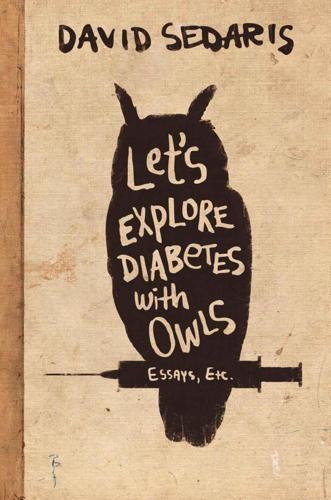
Let's Explore Diabetes With Owls
by
David Sedaris
Published 22 Apr 2013
I should have quit the restaurant and found something more substantial, but I told myself I needed the free time, needed it for my real work, my sculpture. This wasn’t completely unfounded. I’d been in a couple of juried shows, one at the state art museum. For a few hours every day I applied myself. I bundled sticks, I arranged things in cardboard boxes. I typed cryptic notes onto index cards and suspended them from my ceiling. I could have easily held a full-time job, then come home at night and tied twigs together, but in a way I needed the poverty, needed it as proof that I was truly creative. It was a cliché, of course, but one that was reinforced every time you turned around. People didn’t say “artist,” they said “starving artist,” so even if you weren’t doing anything of consequence, as long as you were hungry you were on the right track, weren’t you?
…
After that I called my parents, aware that I was stealing someone else’s news, and aware too of how dramatic I sounded. “Gretchen’s been attacked.” The officer who arrived began by saying that he’d been in my apartment once before. “It was a narcotics case, years ago,” he told me, looking from the kitchen to the living room, where dozens of index cards dangled from the ceiling. He took my sister’s statement, and as he drove off to canvass the area, our parents pulled up, my mother saying before she’d even set her purse down that this was all Gretchen’s fault. “Walking to the store at eleven o’clock at night, you were as good as asking for it!”

Daring to Rest
by
Karen Brody
When we see these archetypes, they often help us tap into our Wild Woman nature. They can also help us understand our behaviors and patterns. If you’d prefer to make your own deck of guidance cards, use your soul whispers. Simply write your soul whispers from days 1 through 20 on separate pieces of paper or index cards. If one day you aren’t able to practice yoga nidra or call in your Council of Women, you can simply pick a guidance card instead. First, hold all the cards (or soul whisper papers) in your hands and ask that they be used for your highest good and the highest good of humanity. Then spread out the cards.
…
In fact, many times in a live class, I will lay out laminated cards with all the Daring to Rest tools (see appendix 2) and encourage women to place them face down, breathe, and then with their left hands, pick a card. Then this is the Daring to Rest tool they practice after yoga nidra meditation. And guess what? They always receive the tool they need. You can do this too by writing the name of each tool/practice on an index card, turning the cards face down, and then picking a card. Simple, easy, and restful. Share Yoga Nidra with Others For many years, my husband worked for Heifer International, a charity committed to ending hunger and poverty. Most people know Heifer because of its catalog, which lists a variety of animals—like cows, goats, and chickens—you can choose to give to someone in a poor country.
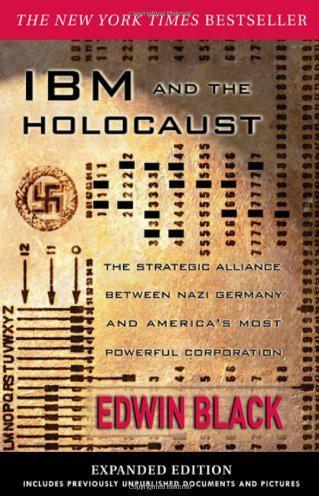
IBM and the Holocaust
by
Edwin Black
Published 30 Jun 2001
But IBM was in a unique commercial position. While Watson and IBM were famous on the American business scene, the company’s overseas operations were fundamentally below the public radar screen. IBM did not import German merchandise, it merely exported American technology. The IBM name did not even appear on any of thousands of index cards in the address files of leading New York boycott organizations. Moreover, the power of punch cards as an automation tool had not yet been commonly identified. So the risk that highly visible trading might provoke economic retaliation seemed low, especially since Dehomag did not even possess a name suggestive of IBM or Watson.101 On the other hand, the anticipated reward in Germany was great.
…
Although a network of Jewish and non-sectarian anti-Nazi leagues and bodies struggled to organize comprehensive lists of companies doing business with Germany, from importers of German toys and shoes to sellers of German porcelain and pharmaceuticals, yet IBM and Watson were not identified. Neither the company nor its president even appeared in any of thousands of hectic phone book entries or handwritten index card files of the leading national and regional boycott bodies. Anti-Nazi agitators just didn’t understand the dynamics of corporate multinationalism.64 Moreover, IBM was not importing German merchandise, it was exporting machinery. In fact, even exports dwindled as soon as the new plant in Berlin was erected, leaving less of a paper trail.
…
Personal data that could not be tabulated by an organization for lack of an on-site Hollerith system were assembled on simple handwritten cards, forms, or copied onto registries that were forwarded to race offices and security services for punching and sorting. Churches were among the leading sources of such information. Their antique, ornately bound church books were often bulky and difficult to work with so supply companies developed a variety of index cards in various sizes designed to facilitate the tracing of ancestry. Often the process was awkward and anything but fast.70 One small church office in Braunlage in the Harz Mountains was typical when it complained in a letter to the Reichssippenamt, the Reich’s leading raceology agency, that the cards were too small and the data too large.
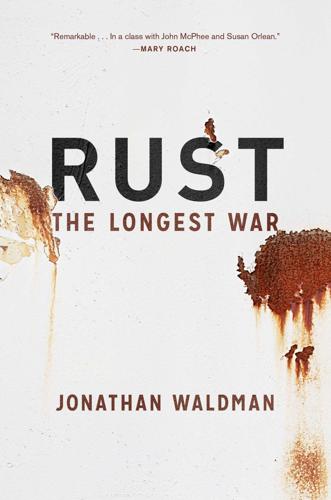
Rust: The Longest War
by
Jonathan Waldman
Published 10 Mar 2015
So he drank: he spent the next six years reading everything he could about metallurgy, starting with periodicals and journals about chemistry, barely stopping for a lunch of bread and dates. Next he read about manganese, and every process by which it could be detected in steel. Then he read about every other steelmaking element; all the while he kept index cards detailing what he had learned from each book. He developed his knowledge carefully, procedurally, accumulating as much as he could. Lab protocol stipulated that anyone who figured out how to save time could enjoy his savings as he wanted. Brearley got his day’s work done in a couple of hours, and spent the rest of the day reading and experimenting.
…
Then he engaged a second man, who knew all about hardening and tempering steel; then a third man who could neither make steel, nor analyse it, nor harden and temper it—but this last tested it, put his OK mark on it and passed it into service.” It was a disgrace. To Brearley, progress seemed like regress. Nobody cared about D.G.S. anymore. He felt like he was the only steelmaker left with his head screwed on right. His expertise was careful and deliberate, untainted. His index cards didn’t lie. In 1911 he wrote The Heat Treatment of Tool Steel, his third book—and dedicated it to his employer: “To Thos. Firth & Sons, Limited, in whose service labour and learning have been agreeably combined, from 1883 to the present time, these pages are respectfully dedicated by the author.”
…
He wrote his autobiography, as well as an unpublished children’s book, called The Story of Ironie. Actually, there was one more symbolic action. Before going on his first vacation (beyond Riga, he’d been to New York to serve as a witness, and Berlin for a conference on applied chemistry), at age fifty-eight, he piled up all of his index cards and a few hundred books and burned them in a great bonfire. Perhaps it seemed a fitting ritual to honor his mentor James Taylor, who’d recently died. Perhaps, tired of all the litigation pertaining to stainless steel, he lashed out in that strange way. He’d never been much of a servant to pencil and paper.

Decoding Organization: Bletchley Park, Codebreaking and Organization Studies
by
Christopher Grey
Published 22 Mar 2012
This in the services applied especially to the WRNS and ATS . . .’42. This generality is illustrated by the interviewee Vera, who, describing her recruitment interview, commented in passing on ‘the fact that I’d been to grammar school, that was of interest’, which seems, given the fact that the actual work she did was fairly routine filing of index cards, perhaps to suggest that it was social as much as educational standing which was being probed. In a not dissimilar way, Dora learned, after the war, that she had been identified for BP when the head of the secretarial college she had attended had been approached to identify ‘girls of integrity’ for confidential war work43.
…
For this reason, where a station was transmitting a weather report in a breakable cipher BP sometimes sought to ensure that the RAF did not bomb it and thus deprive the cryptanalysts of a reliable crib. 18. CCAC RLEW 5. 19. One, literal, conduit for this during the early days of the war was a wooden tray, propelled by string and a broom handle which passed decrypts from Hut 6 to Hut 3 (Welchman, 1982: 129). As with index cards in shoeboxes, this rather quaint system should not lead to the view, sometimes heard, that this was an ‘amateurish’ operation. 20. All information in the paragraph to this point is based upon TNA HW 14/145: 11–13. 21. TNA HW 3/119: 44. See HW 43/70: 112 for the analogous development of formalized training in Hut 6.
…
Hut 4: Section responsible for non-Enigma naval cryptanalysis and translating and analysing the results of this plus decrypted Naval Enigma material from Hut 8 and distributing the resulting intelligence to the Admiralty. Hut 6: Section breaking Army (Heer), Air (Luftwaffe or GAF) and Railway (Reichsbahn) Enigma. Hut 8: Section breaking Naval (Kriegsmarine) Enigma. Index: Card-based systems to store, cross-reference and retrieve information, extensively used at BP to handle enormous quantities of material from, for example, decrypts. Indoctrinated: The US term for enrolment into a particular secret or level of classified information, which as the war progressed became increasingly used at BP and supplanted the term enwised.
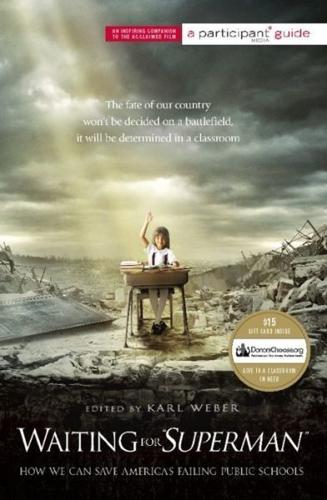
Waiting for Superman: How We Can Save America's Failing Public Schools
by
Participant Media
and
Karl Weber
Published 14 Jun 2010
At the Zone’s Promise Academy II, 100 percent of the third graders scored at or above grade level in the statewide math exams, and 100 percent of the Promise Academy I third graders were at or above grade level in math. Hmm, let’s see . . . 100 percent proficiency. Two different sets of schools. It’s hard to argue with reform that boosts the learning of not some, not many, but all students. A New Kind of Lottery One Monday morning while we were deeply immersed in rearranging colored index cards containing various story ideas on the wall in our edit bay, Davis came into the production office with an amazing idea. He’d just read an op-ed piece by New York Times columnist Thomas Friedman about a local SEED school and the lottery it used to select students for the coming year. The SEED schools are the only urban public boarding schools in the country, designed to provide underserved kids with a round-the-clock nurturing atmosphere.
…
Often the tension was almost too much to bear. At one lottery, I wanted to throw the bingo ball cage across the room—it didn’t look to me as if there were enough balls in the cage for each grade. There were simply not enough spaces. Another time, I watched a lottery official reach into a bin of folded index cards inscribed with individual names in Sharpie pen and accidentally grab two, only to shake one off and give a classroom seat to the student whose card was left in his hand. Whose card did he drop? Was it one of our kids? Did one of our kids just lose his or her chance at a good education? The lotteries with computer-generated numbers were no better.

Me Talk Pretty One Day
by
David Sedaris
Published 4 Jun 2001
I left promising to enroll in a French class and then forgot that promise as soon my plane landed back in New York. On the following trip I sanded the floors and began the practice of learning ten new words a day. exorcism facial swelling death penalty I found my words in the dictionary, typed them onto index cards, and committed them to memory while on my daily walks to the neighboring village. slaughterhouse sea monster witch doctor By the end of the month, I’d managed to retain three hundred nouns, none of which proved to be the least bit useful. The next summer we went to France for six weeks, and I added another 420 words, most of them found in the popular gossip magazine Voici.
…
When the cranes arrived to build a twelve-story hotel right outside our bedroom window, Hugh and I decided to leave New York for a year or two, just until our resentment died down a little. I’m determined to learn as much French as possible, so we’ll take an apartment in Paris, where there are posters and headlines and any number of words waiting to be captured and transcribed onto index cards, where a person can comfortably smoke while making a spectacular ass of himself, and where, when frustrated, I can lie, saying I never wanted to come here in the first place. Me Talk Pretty One Day AT THE AGE OF FORTY-ONE, I am returning to school and have to think of myself as what my French textbook calls “a true debutant.”

My Year of Rest and Relaxation: A Novel
by
Ottessa Moshfegh
Published 9 Jul 2018
Reva covered her ears. Someone brought her father a glass of water and helped him back to his seat. Then it was Reva’s turn to speak. She checked her makeup in her compact mirror, powdered her nose, dabbed her eyes with more tissues, then went up and stood at the rostrum and read lines off index cards, shuffling them back and forth as she sniffled and cried. Everything she said sounded like she’d read it in a Hallmark card. Halfway through, she stopped and looked down at me as though for approval. I gave her a thumbs-up. “She was a woman of many talents,” Reva said, “and she inspired me to follow my own path.”
…
The measly payments were running out anyway, so it wasn’t a huge loss. I threw the notice in the trash. There was a postcard from my dentist reminding me to come in for my yearly cleaning. Trash. There was the bill from Dr. Tuttle for my missed appointment—a handwritten postcard on the back of an index card. “November 12th no show fee: $300.” She’d probably forgotten all about it by now. I put it aside. I threw away a coupon to a new Middle Eastern restaurant on Second Avenue. I threw away spring catalogues from Victoria’s Secret, from J. Crew, from Barneys. An old water shut-off notice from the super.
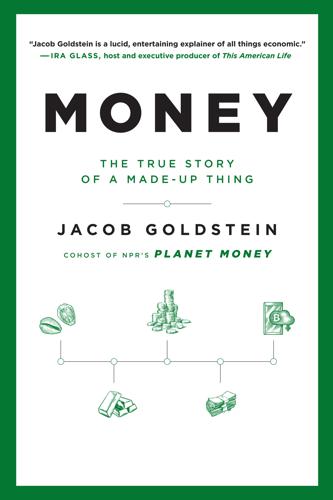
Money: The True Story of a Made-Up Thing
by
Jacob Goldstein
Published 14 Aug 2020
As he later wrote, in 1896 he “had not come to appreciate the evils of unstable money, nor how impossible it was for business men to provide against them through foresight alone.” Fisher became obsessed with the way changes in the value of the dollar could mess up people’s lives, and with figuring out ways to solve the problem. At his index-card company, he put his economic theories to work by tying employees’ wages to inflation and deflation. When prices went up, pay went up; when prices went down, pay went down. Employees’ inflation-adjusted pay stayed the same. (Raises were handled separately.) So rational! “As long as the cost of living was getting higher, the Index Visible employees welcomed the swelling contents of their ‘high Cost of Living’ pay envelopes,” Fisher wrote.
…
“The index of the dollar’s purchasing power gave to several million people every Monday morning the opportunity to read of the weekly change in the dollar.” If he wanted to win people over to his movement, Fisher realized he first had to change the way they thought about money. In the boom of the 1920s, Fisher sold his index-card company for a fortune, then invested that fortune in the booming stock market and watched it grow. He spent his money on his obsessions, including $20,000 a year on propaganda for stable money, and a full-time salary for a personal trainer and physician. The physician had invented a variation on volleyball that Fisher called “battle ball.”

Happy-Go-Lucky
by
David Sedaris
Published 30 May 2022
I hated being excluded, so between a brief visit in May 1997 and a much longer one the following August, I took a ten-session private French class taught by a petite, sharp-nosed thumbtack of a woman. Elise was Canadian, and we met twice a week in the World Trade Center. At around the same time, I started opening my Larousse dictionary, writing random nouns on index cards, and memorizing them on my daily walks. “Why did you learn the word bruise?” she groused one afternoon. “When is that going to come in handy?” In retrospect, I suppose I can see her point. Why master bruise before, say, umbrella? How many of us know, though, when learning a foreign language, what words and phrases might prove useful?
…
When Hugh and I lived in Normandy, he heard a local woman telling a friend about a mentally challenged man she often saw marching past her house. He wore headphones, she said, and looked at pictures while talking to himself. That, of course, was me, but they weren’t pictures I was holding. They were index cards with that day’s ten new French vocabulary words on them. In Sussex not long ago, an acquaintance approached me to share a similar story. Again I was identified as mentally challenged, this time because I was picking up trash and muttering to myself. Only I wasn’t muttering—I was repeating phrases from my Learn to Speak Japanese or Swedish or Polish audio program.
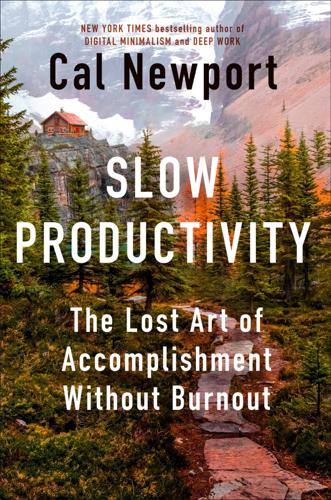
Slow Productivity: The Lost Art of Accomplishment Without Burnout
by
Cal Newport
Published 5 Mar 2024
Each sliver was placed in a plain manila folder that corresponded to its story component. The result was a stack of folders, each dedicated to a single subject, filled with scraps of paper that collectively contained every relevant fact, quote, or observation. Next, McPhee would label a three-by-five index card for each of these story components, and spread them on a sheet of plywood propped up between two sawhorses—“an essential part of my office furniture in those years”—so he could physically move them around in search of a workable structure for his story. Sometimes the right conceptual architecture would come to him in just a few hours.
…
This was not meant as a reactionary response to our current moment of overload, but instead a game plan for a viable replacement. It’s this practicality that I hoped to capture in the second tale of McPhee. In his careful and deliberate process of typing out his notes and slicing them into slivers, and then organizing index cards on a plywood board and arranging material ladderlike on a card table, we see the promise introduced under McPhee’s backyard ash tree transformed into something more systematic. Slowing down isn’t about protesting work. It’s instead about finding a better way to do it. * * * — I have two goals for this book.
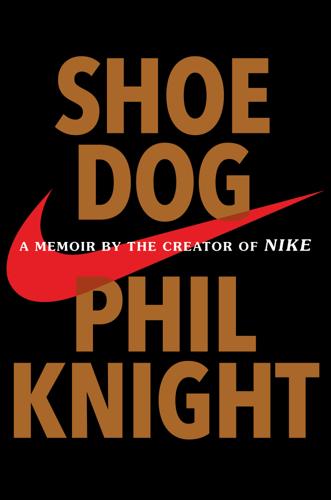
Shoe Dog
by
Phil Knight
Published 25 Apr 2016
He was anal, he recognized that I was not, and though he enjoyed complaining (to me, to my sister, to mutual friends), he saw that my managerial style gave him freedom. Left to do as he pleased, he responded with boundless creativity and energy. He worked seven days a week, selling and promoting Blue Ribbon, and when he wasn’t selling, he was beaverishly building up his customer data files. Each new customer got his or her own index card, and each index card contained that customer’s personal information, shoe size, and shoe preferences. This database enabled Johnson to keep in touch with all his customers, at all times, and to keep them all feeling special. He sent them Christmas cards. He sent them birthday cards. He sent them notes of congratulation after they completed a big race or marathon.
…
He’s converted an old barn into a five-story mansion, which he calls his Fortress of Solitude. Twice divorced, he’s filled the place to the rafters with dozens of reading chairs, and thousands and thousands of books, and he keeps track of them all with an extensive card catalog. Each book has its own number and its own index card, listing author, date of publication, plot summary—and its precise location in the fortress. Of course. Scampering and prancing around Johnson’s spread are countless wild turkeys and chipmunks, most of whom he’s named. He knows them all so well, so intimately, he can tell you when one is late in hibernating.
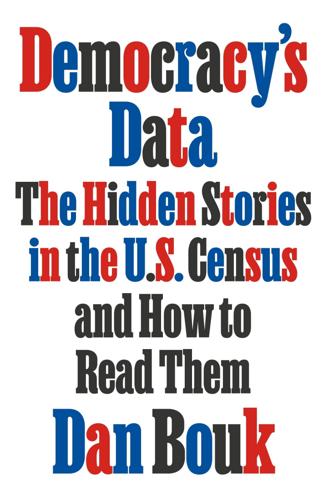
Democracy's Data: The Hidden Stories in the U.S. Census and How to Read Them
by
Dan Bouk
Published 22 Aug 2022
Interviewers might write down initial responses on a sheet of paper, for instance. Then a clerk might transfer those responses onto a more compact, mobile tool, like an index card. Such cards may seem to have been around forever, but they had to be invented: first to aid libraries in keeping track of their collections and later to help banks and insurance companies keep track of their customers. Eventually scientists, too, realized that this technology would allow them to organize information about their subjects.10 Another clerk might have, in past decades, translated the index card’s information into punched holes in a different paper card as part of a system for counting and sorting mechanically that was invented in the 1880s expressly for the U.S. census.
…
The same people who developed the card catalog for making a vast library’s holdings accessible realized in the late nineteenth century that stiff paper cards could create searchable inventories of entire populations. Melvil Dewey—of Dewey decimal system fame—started a company that got into the business of secretly sharing medical records among big U.S. insurance firms.48 Soon enough, the federal government also realized the power of the index card. That is nowhere better illustrated than in a photograph from the offices of Roosevelt’s crowning achievement: the Social Security Board (later renamed the Social Security Administration), where men in suits, suspenders, and vests leaf through card files containing wage records for tens of millions of Americans.49 Ordinary Americans could well be forgiven their fears that the government had gone dossier mad.
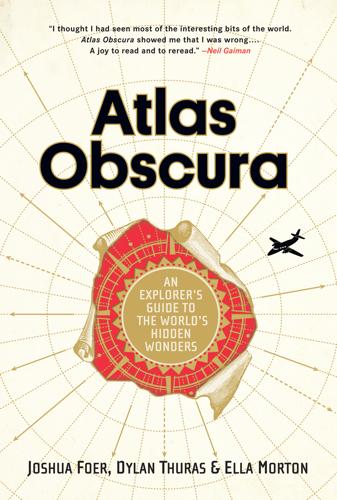
Atlas Obscura: An Explorer's Guide to the World's Hidden Wonders
by
Joshua Foer
,
Dylan Thuras
and
Ella Morton
Published 19 Sep 2016
The final blow came during the Nazi invasion of Belgium, when soldiers destroyed thousands of boxes filled with index cards and hung Third Reich artwork on the walls. Otlet died in 1944, his Mundaneum and World City mere memories. He is now regarded as one of the forefathers of information science—his vision of a globally searchable network of interlinked documents anticipated the World Wide Web. The remains of the Mundaneum—books, posters, planning documents, and drawers with original index cards—are now on display at the Musée Mundaneum in Mons. 76, rue de Nimy, Mons. The Mundaneum is a 15-minute walk from the Mons train station. 50.457674 3.955428 The Mundaneum, with its 12 million info-packed index cards, was the early-20th-century version of the internet.
…
Cold beer is provided for drinking. BELGIUM The Mundaneum MONS, HAINAUT The Mundaneum was, to put it mildly, an ambitious undertaking. Belgian lawyer Paul Otlet and Nobel Peace Prize winner Henri LaFontaine established the project in 1910 with the aim of compiling the entirety of human knowledge on 3 × 5-inch index cards. The collection was to be the centerpiece of a “world city,” designed by architect Le Corbusier, forming a nucleus of knowledge that would inspire the world with its libraries, museums, and universities. To address the daunting task of arranging bits of paper into a coherent compendium of world history, Otlet developed a system called Universal Decimal Classification.
…
The Mundaneum is a 15-minute walk from the Mons train station. 50.457674 3.955428 The Mundaneum, with its 12 million info-packed index cards, was the early-20th-century version of the internet. The Grottoes of Folx-les-Caves ORP-JAUCHE, WALLOON BRABANT Down a narrow staircase, 50 feet below the small town of Folx-les-Caves, are nearly 15 acres of human-made caves. Carved from tuff, or compressed volcanic ash, they were probably dug during the Roman era or the Middle Ages. In 1886, farmers began growing mushrooms in the cold, dark grottoes—the fungi grow there to this day. Prior to the mushroom era, the cave served as a refuge for bandits on the lam.
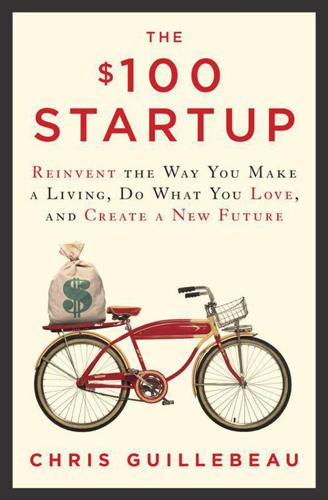
The $100 Startup: Reinvent the Way You Make a Living, Do What You Love, and Create a New Future
by
Chris Guillebeau
Published 7 May 2012
Net promoter score: What percentage of customers would refer your business to someone else? Some businesses choose more specific metrics. Brandy Agerbeck, the graphic facilitator we met in Chapter 7, earns her living through corporate and non-profit bookings. Every year she needs a certain amount of bookings, so she keeps a set of index cards to track this number. When the index cards fill up, she knows she’s good for a while and can focus on other things. Once or twice a month it’s good to take a deeper look at the business and record some metrics that should be improving over time. The kinds of things you’ll probably be interested in are more detailed sales figures, site traffic and social media, and the growth of the business.

User Stories Applied: For Agile Software Development
by
Mike Cohn
Published 1 Mar 2004
To estimate the stories, three programmers—Rafe, Jay and Maria—get together in a room with Lori, the customer. They bring along the story cards and a few dozen blank cards. The programmers talk about 19.1, clarify a few details on it by asking questions of Lori, and then each programmer writes his or her estimate on an index card. When everyone is done, each programmer holds his or her card up so everyone can see it. They’ve written: Rafe: 1 Jay: ½ Maria: 2 These three developers discuss their estimates. Maria explains why she thinks this story is worth two story points. She talks about how they’ll need to select a search engine, incorporate it, and only then be able to write the screens to fulfill the story.
…
For example, she may offer something along the lines of “I can see how that might be ten story points as you’re describing it but I think I’m asking for something much, much simpler. All I really want is …” Advanced Search On to 19.2, the advanced search. The programmers again write their estimates on index cards and turn them over at the same time showing: Rafe: 2 Jay: 1 Maria: 2 Rafe says the advanced search will take a little longer than the basic search because there’s more to search on. Jay agrees but says that since the basic search will have already been coded, it won’t take long to add the advanced search features.
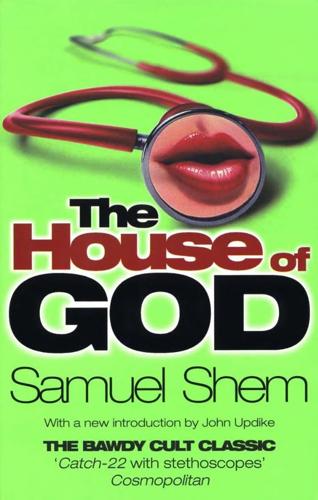
House of God
by
Samuel Shem
Published 1 Jan 1978
If you're smart, you'll use me. Like those dolled-up jets that cargo the gomers to Miami: I'm Fats, fly me'. Now, let's get on to the cardflip." The efficiency of the Fat Man's world rested on the concept of the three-by-five index card. He loved three-by-five cards. Announcing that "there is no human being whose medical characteristics cannot be listed on a three-by-five index card," he laid out two thick decks on the table. The one on the right was his. The duplicate deck on the left he split in three, and handed a stack to each of the new terns. On each card was a patient, our patients, my patients.
…
asked Potts. "To TURF is to get rid of, to get off your service and onto another, or out of the House altogether. Key concept. It's the main form of treatment in medicine. Just call up psychiatry, tell them about the Nazi stuff, don't mention the gut pain, and presto—TURF TO PSYCHIATRY." Ripping up the index card containing the Nazi-seeker and throwing the bits over his shoulder, the Fat Man said, "The TURF, I love it Let's go. Next?" Potts presented his last admission, a man of our age who'd been playing baseball with his son, and who, while trying to beat out a hard screaming line drive, had dropped down in the base path unconscious.
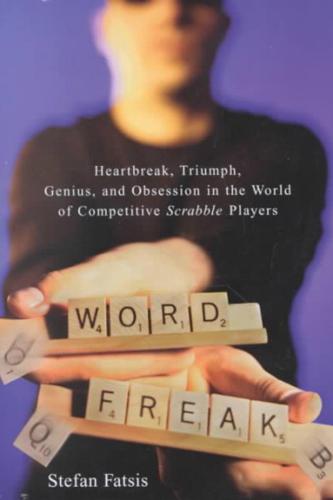
Word Freak: Heartbreak, Triumph, Genius, and Obsession in the World of Competitive ScrabblePlayers
by
Stefan Fatsis
Published 27 Jul 2001
It’s unclear which ones he’s downing at precisely this moment, but the possibilities seem endless. Plastic containers are scattered on the end tables, on the desk, next to the television, inside drawers. Zinc. Caffeine. Glucose. Glycine. Lphenylalanine. Pyroglutanic acid. Taurine. Tyrosine. Next to the sink, atop the toilet tank, spread across the bed. On a five-by-seven index card, Graham has written in one column the names of twenty pills to be taken in the morning on an empty stomach; in another column, he has listed seventeen more to be downed with breakfast. NADH. Glutamine. Herb for Men. Mega Mind. Gotu kola. Potassium. Graham squeezes a few drops of DMAE-H3 into a glass of cranberry-orange-flavored Blast Off II, a powdered amino-acid concoction containing twenty-one vitamins and minerals — and, more to the point, eighty milligrams of caffeine — per serving.
…
Lipoic acid. Ashwagandha. Healthy Greens. Coenzyme Q. Pygeum, a prostate drug promising “Natural Health Care for Men Over 50.” Suphedrine. Herbal Formula for Men. (“The reason I take this is it’s got ma huang, which is ephedrine, which is a stimulant,” Graham says, as if there were any doubt.) There are index cards plastered with obscure words. A Cookie Monster doll. A copy of the December 1993 issue of a Scrabble newsletter called Medleys which includes an article about that year’s world championships titled “On Crowns and Clowns.” The piece takes a potshot at Graham, who was then just emerging on the Scrabble scene but qualified for the event in New York nonetheless.
…
I have difficulty remembering names, images from my past, plots of novels, what I did last weekend. How can I, closing in on age thirty-five, start learning words? Where in my brain will I put them? I tote my new study aids to a weekend tournament in the resort town of Port Jefferson, on Long Island. I have my photocopied lists, my Franklin, and a stack of index cards on which I have written three-, four-, and five-letter words containing J, Q, X, and Z and some mnemonic aids. For JOTA, a Spanish dance, I write “JO ⫹ TA,” which are acceptable two-letter words. For JIMP, I write “JUMP IMP.” For ZARF, I underline ARF. Sitting on the john in the inn where the tournament is being staged, reading my cards, I say aloud, “JAPAN is good,” using proper Scrabble lingo.

Nine Pints: A Journey Through the Money, Medicine, and Mysteries of Blood
by
Rose George
Published 22 Oct 2018
“But it was not so simple to obtain in this way individuals whose Wassermann reaction was likely to remain permanently negative.” After Nurse Linstead gave her pint of blood to King’s College Hospital, the Olivers decided to do something radical. They would set up a register of reliable blood donors who would never ask for payment. Percy Oliver noted their names on a database, which in 1921 meant index cards, and each card would list contact details, plus the donor’s blood group and health history. Donors would be screened ahead of donating and their blood group noted. A telephone would be manned day and night. Hospitals would call for blood; the Olivers would have it brought to them, in the shape of a person.
…
Opening the vein, cutting down upon it, or levering it up, is forbidden.”69 It made more sense: a less invasive needle meant a donor could be reused, and a less painful procedure meant they would more readily volunteer in the first place. They began to set their scheme in motion, using their home as an office. (Percy Oliver continued to work for the council.) It was named the London Blood Transfusion Service, and “The Service” by its volunteers. It may have consisted of some index cards and a phone, but the Olivers’ operation was the world’s first voluntary blood panel and the beginning of a shift to a model of altruistic blood donation in Britain that has endured one hundred years. In the first year, only four donors were signed up and they were called upon only once.70 The next year, the donors numbered thirteen.71 In August 1922, a woman whose husband was dying at Guy’s Hospital was “reduced to stopping strangers in the street to ask them to give their blood.”
…
But possibly this last protest would not be supported by a majority of the association.”75 Even disgruntled donors rarely snitched on the hospitals, simply marking politely on their donor cards that they were unwilling to serve at the hospital again. Eventually, it was discovered that hospital staff assumed that donors were paid and so felt entitled to treat them carelessly. Logistics was another concern. Finding a donor on an index card was one thing; finding a donor who had a private telephone in 1920s London was much harder. (Even ten years into the service, when there were 2,050 registered donors, only 400 had a phone.76) The Olivers dealt with this with gusto. “When hospitals called,” wrote Kim Pelis, “they contacted donors by telegraph, constable, taxi-driver, and sometimes by bicycle.”77 Another option was the police force.
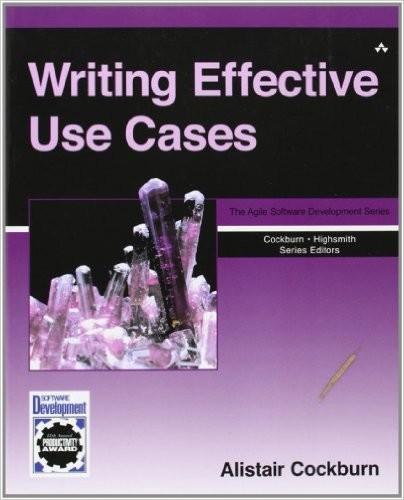
Writing Effective Use Cases
by
Alistair Cockburn
Published 30 Sep 2000
Each XP user story needs to be just detailed enough that both the business and technical people understand what it means and can estimate how long it will take. It must be a small enough piece of work that the developers can design, code, test and deploy it in three weeks or less. Once meeting those criteria, it can be as brief and casual as the team can get manage. It often gets written just on an index card. When the time comes to start working on a user story, the designer simply takes the card over to the business expert and asks for more explanation. Since the business expert is always available, the conversation continues, as needed, until the functionality is shipped. On rare occasion, a small, well-knit development team with full-time users on board will take usage narratives or the use case briefs as their requirements.
…
Some projects need next to no quality in the writing of the requirements document, because they have such good communications between users and developers: The Chrysler Comprehensive Compensation project team, building software to pay all of Chrysler's payroll using the "eXtreme Programming" methodology [Beck99], never went further than use case briefs. They wrote so little that they called them "stories" rather than use cases, and wrote each on an index card. Each was really a promise for a conversation between a requirements expert and a developer. Significantly, the team of 14 people sat in two (large) adjacent rooms, and had excellent in-team communications. The better the internal communications are between your usage experts and developers, the lower the cost of omitting parts of the use case template.
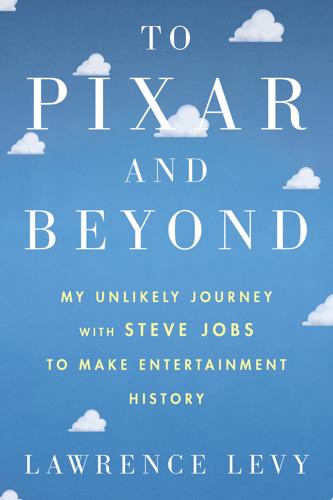
To Pixar and Beyond
by
Lawrence Levy
“Animation is really all about acting,” Ed explained. “Before the animators animate a character on screen, they will often act out the part in front of a mirror so they fully understand the movements they need to create on screen.” Ed walked me to Pixar’s storyboard department where rows upon rows of large cork boards were filled with index cards on which appeared hand-drawn scenes from the movie. Each storyboard represented a sequence from the film, and there seemed to be an endless number of them stacked against every wall, and every spare scrap of space. The quality of each drawing was remarkable, and there were thousands of them, all drawn by hand, all telling a little piece of the film’s story.
…
One illustration of this idea came early in the draft agreement in a clause called “Treatments.” This provision said, simply, that for each picture under the new agreement Pixar would submit to Disney one or more film ideas in the form of a treatment. But what would constitute a treatment? Could it be one line on an index card: “A father goes on an adventure to find his son; oh, and they’re both fish”? That probably wouldn’t make the cut. So the agreement spells out the details: a written treatment less than three pages that can be the basis for a screenplay. But Pixar often presented its treatments orally, using sketches and short storyboards.
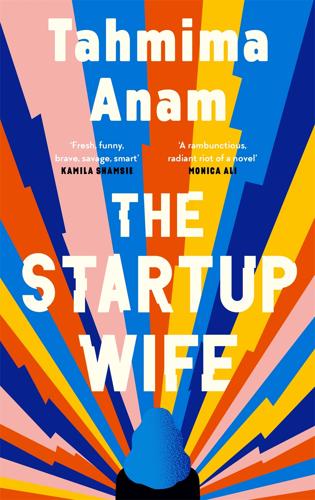
The Startup Wife
by
Tahmima Anam
Published 2 Jun 2021
“Welcome, Asha Ray, we are delighted to have you here,” the moderator says. She’s the same woman who interviewed Manishala Brown all those months ago, a kind of Smart Barbie, bleached-blond hair, big smile, oversize glasses. Right now she’s in millennial-pink everything and holding on to a set of index cards with her gleaming manicure. She introduces me, pointing out all my excellent accomplishments: “Your platform needs no introduction. Many of us have become frequent users of WAI. Tell us, how did you and your co-founder Cyrus Jones come up with the concept?” “WAI was totally Asha’s idea,” Destiny says.
…
“Cyrus, Julian Cabot, and I were just experimenting with the idea of using AI to give people a different social platform—we never thought we’d end up here.” Pink Fingernails asks a few more questions about how we got started. I tell her about the s’mores, about working long nights at Julian’s house, about dropping out of Dr. Stein’s lab. Then she flips to a new index card. “And do you personally come from a business background? Are your parents entrepreneurs?” “They are, actually. They came over here from Bangladesh in their twenties, right out of college. And now they run a small chain of pharmacies.” “What a sweet story. So I guess you’re used to mixing business with family life?
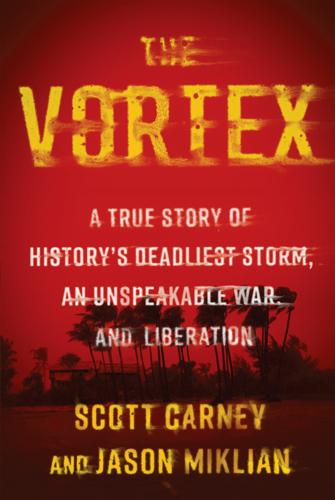
The Vortex: A True Story of History's Deadliest Storm, an Unspeakable War, and Liberation
by
Scott Carney
and
Jason Miklian
Published 28 Mar 2022
Most of the representatives and senators she spoke with were shocked. For many, it was the first time they’d even heard about it. Just after Operation Searchlight, Nixon cited executive privilege and effectively banned the US State Department’s own reports on the situation. Candy left Morgan’s office and jotted down notes from the meeting on an index card, with “THOMAS MORGAN (D)-Penn” scrawled across the top. She planned to fill out a card for the important representatives like Morgan—and all one hundred senators, too. Candy came to Washington with one goal: to get the United States to stop funding and arming West Pakistan. The Bengali diaspora beat her by a month, arranging small protest marches and fasts in front of the White House, but few paid attention.
…
She didn’t mind that she had next to no chance of success; no legislative branch had ever curbed a president’s foreign policy in this way. Then again, Candy didn’t care about history. Each morning, Candy walked to the Senate office buildings from her friend’s house in Georgetown, armed with her stack of index cards. Lobbyists were rare in the early 1970s, and security at the Capitol was more or less based on the honor system. So Candy just walked through their front doors and asked for a chat. Most of the senators, ninety-nine men and the lone woman, were sympathetic to the plight. A few, like Edward Kennedy, already knew about the genocide.
…
Each time Jon’s mom got a letter from her son, she carefully copied the contents in triplicate and sent them out to three people: her senator, her representative, and Candy. Candy used the evidence in her meetings as proof not only of the genocide but also of the American support for it. With Nixon preventing the State Department’s analysts from doing any real work, the senators counted on her information pipeline. Candy’s index cards filled up with neat notes, summarizing each senator’s pressure points. But while senators were supportive to her face, few lifted a finger after she left their office. Her best hope lay in Frank Church, a Democrat from Idaho. He had lived in Calcutta during World War II, where he served as an intelligence officer, supporting Tikka Khan and the rest of the Allies in the Burmese theater.

How Doctors Think
by
Jerome Groopman
Published 15 Jan 2007
I sat in the front row in the lecture hall and hardly moved my head, nearly catatonic with concentration. During my clinical courses in internal medicine, surgery, pediatrics, obstetrics and gynecology, I assumed a similarly focused posture. Determined to retain everything, I scribbled copious notes during lectures and after bedside rounds. Each night, I copied those notes onto index cards that I arranged on my desk according to subject. On weekends, I would try to memorize them. My goal was to store an encyclopedia in my mind, so that when I met a patient, I could open the mental book and find the correct diagnosis and treatment. The new interns gathered in a conference room in the Bulfinch Building of the hospital.
…
"Remember, be an ironman and hold the fort," the resident said to me, the clichés offered only half jokingly. Interns were to ask for backup only in the most dire circumstances. "You can page me if you really need me," the resident added, "but I'll be home sleeping, since I was on call last night." I touched my left jacket pocket and felt a pack of my index cards from medical school. The cards, I told myself, would provide the ballast to keep me afloat alone. I spent the better part of the day reading my patients' charts and then introducing myself to them. The knot in my stomach gradually loosened. But it tightened again when my fellow intern and supervising resident signed out their patients, alerting me to problems I might encounter on call.
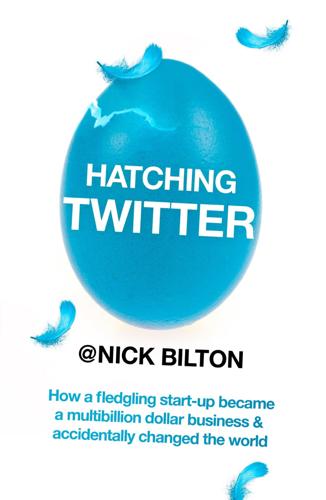
Hatching Twitter
by
Nick Bilton
Published 5 Nov 2013
One of the more corporate employees, Dom Sagolla, had been hired in October 2005 to help test new podcasting products. He had previously worked at the software giant Adobe and often used corporate jargon at Odeo, trying his best to help institute some organization. In one effort he created a grid of index cards on the wall near his desk. The top row listed all the employees’ names, then, trickling down, more index cards listed each person’s designated tasks for the week. As soon as Dom stepped away from his desk, engineers would slyly walk by, kneel over pretending to tie a shoelace or pick something up, and switch the cards around, placing jobs they didn’t want to do under someone else’s name.

The Cohousing Handbook: Building a Place for Community
by
Chris Scotthanson
and
Kelly Scotthanson
Published 1 Nov 2004
The secretary shall see that all members receive notice by phone, by first-class mail or in person of the time and place of meetings at least five days before regularly scheduled meetings. 2. No meeting may be convened without two thirds of the member households represented in person but the meeting may continue despite the withdrawal of enough members to leave less than a quorum. At the start of the meeting, a dated 5” x 8” index card shall be signed by all the members present and used to divide the card file into a section for each meeting. APPENDIX: SAMPLE DOCUMENTS 3. All members may participate in decision-making and voting on proposals. 4. Only one person has the right to speak at any one time during a meeting. Anyone else wishing to speak shall so indicate nonverbally and the recorder shall list them in the order they will be called. 5.
…
The order of business at meetings shall be: a) Call to order by facilitator and quiet time; b) Brief report of the last meeting by reviewing the agenda cards, short committee reports, announcements/comments and report of actions taken by the Management Board since the last meeting; c) Agenda items with tabled decisions first, followed by ongoing business, and last, new business; d) Announcement of next meeting time and place; e) Closure. 8. Only business on the agenda shall be considered during a meeting. For an item to be placed on the agenda it must be written on one side of a 5” x 8” index card and given to the facilitator at least one week before the scheduled meeting. For good reason, the facilitator may fill out an agenda card and place an item on the agenda if requested by a member no later than 24 hours before the meeting. 265 266 THE COHOUSING HANDBOOK 9. After an item has been disposed of, the recorder shall note the disposition and date on the back of the agenda card.
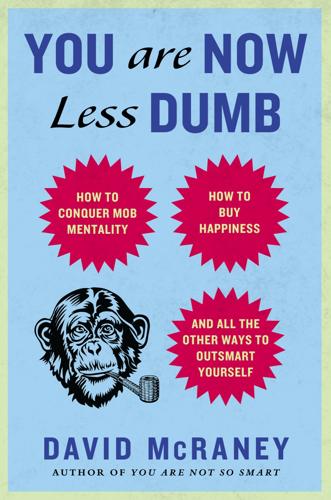
You Are Now Less Dumb: How to Conquer Mob Mentality, How to Buy Happiness, and All the Other Ways to Outsmart Yourself
by
David McRaney
Published 29 Jul 2013
In one category, subjects would be paid for being good at their task. In the other category, the subjects would be paid for completing a task. The subjects received twenty-six dice with letters on their faces instead of dots and a stack of index cards each with thirteen random letters. The subjects hit a timer and used their dice to make words from the letters on the cards. Once they had used nine letters or spent a minute and a half trying, they moved on to the next index card and kept repeating until the experiment ended. It was difficult but fun, and as the players kept going, they started to improve in their abilities. In the payment-for-competence category, Group A was told they were being paid based on how well they did compared with the average score.
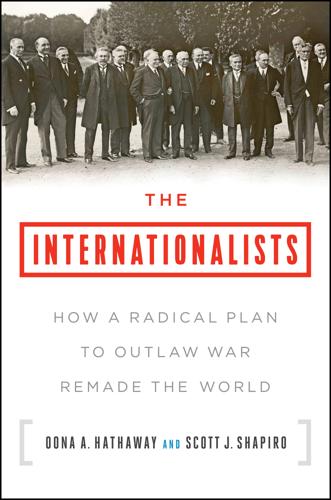
The Internationalists: How a Radical Plan to Outlaw War Remade the World
by
Oona A. Hathaway
and
Scott J. Shapiro
Published 11 Sep 2017
Schmitt repaid his generosity by engineering Kelsen’s dismissal a year later when the Nazis came to power. 3 A report compiled by the Allies after the war described Schmitt as Germany’s leading political scientist and one of the world’s greatest political writers, “a man of near-genius rating.” The report also called for his prosecution as a war criminal. 4 This index card shows the history of Schmitt’s internment by the United States Military Government at the Palace of Justice in Nuremberg (arrested March 20, 1947, released on May 6, 1947). 5 The dock at the International Military Tribunal in Nuremberg (center row, left to right: Hermann Göring, Rudolf Hess, Joachim von Ribbentrop, Wilhelm Keitel, Ernst Kaltenbrunner).
…
For more on the United Nations in historical context, see, e.g., Mark Mazower, Governing the World: The History of an Idea (New York: Penguin, 2012); Paul Kennedy, The Parliament of Man: The Past, Present, and Future of the United Nations (New York: Random House, 2006). 64. Grundgesetz der Bundesrepublik Deutschland [Constitution], Art. 26 (1949) (F.R.G.). 65. Nihonkōku Kenpō [Constitution], Art. 9 (1946) (Japan). 66. La Costituzione [Constitution], Art. 11 (1948) (Italy). TEN: FRIEND AND ENEMY 1. Index cards to the war crimes case files (”Cases Not Tried”), 1944–1948, and witnesses and defendants in war crimes cases, 1946–1948, Record Group 549, Records of United States Army, Europe 549.2, Records of U.S. Army, Europe (USAEUR) 1933–1964, Records of the War Crimes Branch of the Judge Advocate General Section, U.S.
…
Bendersky, “Carl Schmitt’s Path to Nuremberg,” 20. The discussion in this section is much indebted to Bendersky’s masterful discussion. 92. Duška Schmitt to Hermann Jahrreiss, April 1, 1947, cited in Reinhard Mehring, Carl Schmitt: A Biography, trans. Daniel Steuer (Cambridge, UK: Polity, 2014), 416. 93. Index cards to the war crimes case files (“Cases Not Tried”), 1944–1948 and witnesses and defendants in war crimes cases, 1946–1948, Record Group 549, Records of United States Army, Europe 549.2, Records of U.S. Army, Europe (USAEUR) 1933–1964, Records of the War Crimes Branch of the Judge Advocate General Section. 94.

The Shadow of the Wind
by
Carlos Ruiz Zafón
Published 15 Nov 2004
he said laughing. 'What did I say? Crooks.' The manager lay back in his chair and made another of his snoring noises. 'Would you happen to have the number of that PO Box?' 'According to the index card it's 2837, although I can't read my secretary's numbers. As I'm sure you know, women are no good at maths. What they're good for is—' 'May I see the card?' 'Sure. Help yourself.' He handed me the index card, and I looked at it. The numbers were perfectly legible. The PO box was 2321. It horrified me to think of the accounting that must have gone on in that office. 'Did you have much contact with Senor Fortuny during his lifetime?'
…
My father always showed an interest in his inventions and gave him manuals on mechanics or biographies of engineers like Eiffel and Edison, whom Tomas idolized. As the years went by, Tomas became very attached to my father and spent ages trying to invent an automatic system with which to file his bibliographic index cards, using parts of an old electric fan. He had been working on the project for four years now, but my father still showed great enthusiasm for its progress, because he didn't want Tomas to lose heart. When I first introduced Tomas to Fermin, I was concerned about how Fermin would react to my friend.
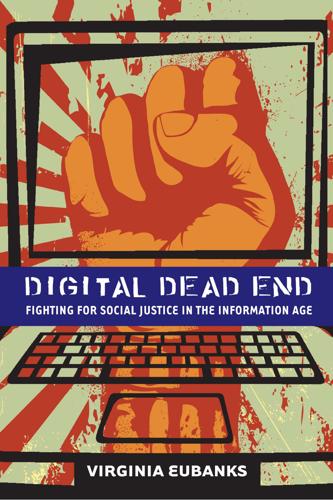
Digital Dead End: Fighting for Social Justice in the Information Age
by
Virginia Eubanks
Published 1 Feb 2011
Chapters 3 through 5 each deal specifically with an aspect of the relationship between technology and women’s poverty that was identified as central to social justice in an age of IT by the women in the YWCA community: policy and technology access; economic development and the high-tech, low-wage workplace; and welfare administration technologies. Though the data set was massive, most of my coding and analysis was done manually by writing in the margins of transcripts, using multicolored highlighters to group themes together, and creating conceptual index cards that I could move around to help identify and explore relationships within the data. Near the end of my writing process, I began using the qualitative data analysis software ATLAS.ti to make sure there weren’t relationships or insights in the data that I had missed. Appendix B: WYMSM Sample Agendas The following WYMSM meeting agendas and minutes are provided to give the reader a sense of the actual activities undertaken on a week-to-week basis by WYMSM.
…
Once we’ve established the number of groups to do each simulation, we want to ask for four to six volunteers who would be comfortable navigating through The Sims and reading/distributing the ROWEL activity. Barnyard Bingo (3 minutes) This may not be necessary once we’ve asked people what they want to do. Begin with four to six groups of index cards, each group with the name of an Appendix B 183 animal on it. First, we make sure that each of the navigators receives a different animal. Next, we ask residents if there is a specific simulation they want to do. (We keep them in mind when handing out the note cards so that they get one of the animals that the respective leader has.)

The Orchid Thief: A True Story of Beauty and Obsession
by
Susan Orlean
Published 1 Jan 1998
I ran my fingers up and down the smooth, rubbery orchid roots and up and down the nubbly mango bark, and then we went back in the house. Savilla opened a small file box and pulled out the index cards on which she records information about all the wild plants she’s collected. She handed me two cards. One said “Tiny Ghost Harrisella porrecta Collected 5/89 Big Cypress” and the other said “Polyrrhiza lindenii 5/89 Collected Big Cypress.” These were the plants that were on her mango tree. She put the index cards away and said there was one last chapter in the story of the seedpod. It takes about eight months for orchid seeds to germinate, and eight months after her seedpods were stolen Savilla received a letter from the curious man.
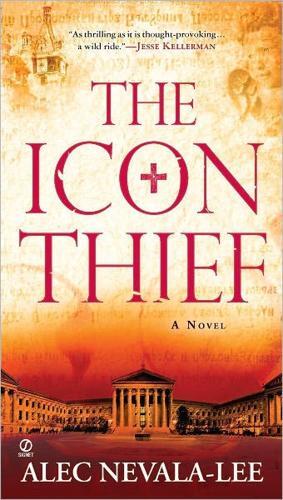
The Icon Thief
by
Alec Nevala-Lee
Published 1 Mar 2012
Then he headed back to the Five Points. 36 When the gallerina unlocked the door of the Lermontov Gallery, Maddy brushed past her without a word, heading for the office at the rear. The gallerina followed close behind, heels clicking against the floor, protesting this invasion of her sacred space. Maddy tuned her out. She couldn’t remember if the gallery had a security guard, but supposed that it probably did. Lermontov was at his desk, going over a stack of index cards with a blue pencil. As she entered, he set the cards aside. “Yes, my dear?” Maddy shut the door, stranding the gallerina in the hallway. “I need to talk to you.” After what seemed like the briefest of internal debates, Lermontov rose from his desk, went to the door, and opened it. The gallerina was waiting outside, a look of indignation on her perfect face.
…
Lermontov regarded him for a second, as if deciding whether to let him in. At last, he stood aside. “Come. We’ll talk in my office.” Ethan went into the gallery. Around them, the lights had been turned down, the gallerina’s counter deserted, as if awaiting the return of its resident goddess. In the rear office, Lermontov sat down at his desk, on which a number of index cards were arranged. “What can I do for you?” As Ethan took a seat, he noticed that a velvet curtain had been hung across one wall. The words began to come more easily. “It’s about Maddy. Has she tried to contact you since last night?” “No,” Lermontov said. “She came to see me on Wednesday afternoon, but I haven’t spoken to her since.
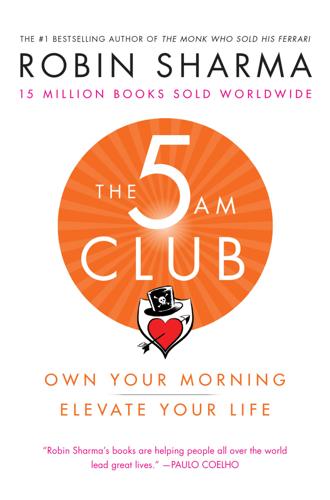
The 5 AM Club: Own Your Morning. Elevate Your Life.
by
Robin Sharma
Published 4 Dec 2018
Yet,” the homeless man responded, heightening the mystery of where he’d discovered much of his insight. The entrepreneur turned away from the artist and jotted down some of her thoughts into her device. The homeless man then reached into a pocket of his hole-ridden plaid shirt and produced a heavily used index card. He held it up like a kindergarten student at show-and-tell. “A distinguished person gave this to me when I was a lot younger, as I was starting my first company. I was a lot like you cats: dripping with dreams and set to make my mark on the world. Hungry to prove myself. Amped to dominate the game.
…
“You can lean on me,” the artist said tenderly. He placed a hand with a hippie ring on a pinky finger onto his heart as he spoke these words, looking both chivalrous and bohemian. The homeless man interrupted the intimate moment the two were sharing. “Here, read this,” he instructed as he handed over his index card. “It’ll be useful as you both rise to your next performance levels and experience everything that comes with this adventure into human leadership, personal mastery and creating a career of uncommon productivity.” In red lettering over the paper that had yellowed by the advances of time, it read: “All change is hard at first, messy in the middle and gorgeous at the end.”

The Glass Castle: A Memoir
by
Jeannette Walls
Published 15 Mar 2005
Dad built shelves all along the upper walls to store Mom's art supplies. She set up her easel under the stovepipe, right next to the back window, because she said it got natural sunlight—which it did, relatively speaking. She put her typewriters under another window, with shelves for her manuscripts and works in progress, and she immediately started thumbtacking index cards with story ideas to the walls. We kids all slept in the middle room. At first we shared one big bed that had been left by the previous owner, but Dad decided we were getting a tad old for that. We were also too big to sleep in cardboard boxes, and there wasn't enough room on the floor for them, anyway, so we helped Dad build two sets of bunk beds.
…
The cheapest cloth we could find cost seventy-nine cents a yard, and you needed more than two yards for a dress. It made more sense to buy thrift-store clothes, and they had the armholes in the right places. Mom also tried to make the house cheerful. She decorated the living room walls with her oil paintings, and soon every square inch was covered, except for the space above her typewriter reserved for index cards. We had vivid desert sunsets, stampeding horses, sleeping cats, snow-covered mountains, bowls of fruit, blooming flowers, and portraits of us kids. Since Mom had more paintings than we had wall space, Dad nailed long shelf brackets to the wall, and she hung one picture in front of another until they were three or four deep.

The Tunnel Through Time: A New Route for an Old London Journey
by
Gillian Tindall
Published 14 Sep 2016
The pointless brick wall that has replaced the house was given a different commemorative plaque in the 1970s, by which time the enlarged local authority of Tower Hamlets had acquired some notion of respect for the past – but not sufficient, it seems, to rebuild the house as it had been, or to construct anything worthwhile on the puddled parking lot that has replaced it. In the summer of 1963, five years after Cook’s house was destroyed, a girl is walking round Stepney with a pack of index cards in the little basket she uses as a handbag. She wears a checked cotton dress she has made herself, and flat sandals. Her plait of hair is pinned up. Young and energetic, she can walk several miles a day through the streets without effort, but she does not always have her mind entirely on what she is supposed to be doing.
…
Nor does she discover at the time that adjoining this cemetery, and still more hidden away from the surrounding streets behind high walls, is an Ashkenazi Jewish burial ground that is almost as old. Some of the local descendants of those who lie there are people she has recently met. She is employed by the Stepney Old People’s Welfare Association, on a casual basis, to check up on the names and addresses she has on the dog-eared index cards. How many of the old ladies, and a smaller number of old men, are still at their recorded addresses, and what state are they in? And, indeed, what state are the houses in – still tremulously there, or swept away by the Greater London Plan that is designed to change the old parish of Stepney beyond recognition?

How Not to Network a Nation: The Uneasy History of the Soviet Internet (Information Policy)
by
Benjamin Peters
Published 2 Jun 2016
Critics have accused its founder, Frederic Friedel, of having “ruined chess” because few games now occur that include new combinations of moves that are not found in “the Book.”46 The result is a new cold war tension of human players against the book, in which top chess players and their opponents know that, given almost any chess board arrangement, the best game they can play is played out in “the Book.” Botvinnik’s secret library of index cards that recorded global grandmaster games, saved exclusively for study by students at his Soviet school, did not migrate online, but it modeled what has become the global networked norm. Top players worldwide now memorize tens of thousands of recorded games and positions. All chess competitors now play aware of the networked heir of Botvinnik’s book and the humbling fact that most chess sequences have already been played before.
…
National technical networks connecting factories were approved but never realized at the same time that local computer centers in those factories were built but never interconnected—all because of coordination problems (our coordination problems are as great today as their solutions are subtle). Sophisticated chess algorithms outmaneuvered long-term national planning methods and even the occasional chess master, but never to the same effect as a simple notational system kept on index cards (and now online databases). Ministerial ecosystems of paperwork collided and proliferated, and the committee meeting—that omnipresent black box of bureaucracies (even written minutes leave opaque the logics of small-group decisions)—remains among the most undertheorized and delicate techniques governing modern private power networks.

The Last Best Cure: My Quest to Awaken the Healing Parts of My Brain and Get Back My Body, My Joy, a Nd My Life
by
Donna Jackson Nakazawa
Published 21 Feb 2013
I take the exercise one step further. I put the large five-by-seven index card on which I’ve written my three blessings under my pillow. Sometimes I have trouble falling asleep, or wake up in the middle of the night, or too early. There are times when I have so much on my plate—more than can be done—that as I wake I feel my heart beating in my head as if the lining of my brain were the skin of a drum. My sympathetic nervous system is churning up the PIN response before I’m even fully conscious. I can’t get back to sleep. But if I run my fingers over the now crumpled index card beneath my pillow on which I’ve written my three blessings, the lovely moments of the previous day come flooding back.

Dark Territory: The Secret History of Cyber War
by
Fred Kaplan
Published 1 Mar 2016
The following Wednesday morning, back in the White House, Reagan met with the secretaries of state, defense, and treasury, his national security staff, the chairman of the Joint Chiefs of Staff, and sixteen prominent members of Congress, to discuss a new type of nuclear missile and the prospect of arms talks with the Russians. But he couldn’t get that movie out of his mind. At one point, he put down his index cards and asked if anyone else had seen it. Nobody had (it had just opened in theaters the previous Friday), so he launched into a detailed summary of its plot. Some of the legislators looked around the room with suppressed smiles or arched eyebrows. Not quite three months earlier, Reagan had delivered his “Star Wars” speech, calling on scientists to develop laser weapons that, in the event of war, could shoot down Soviet nuclear missiles as they darted toward America.
…
Back at West Point, he worked on computers in the electrical engineering and physics departments. In the early 1980s, at the Naval Postgraduate School, in Monterey, California, he built his own computer and developed a program that taught Army personnel how to make the transition from handwritten index cards to automated databases. Soon after graduating, he was assigned to the Army Intelligence Center, at Fort Huachuca, Arizona, where he spent his first weekend memorizing the technical specifications for all the Army’s computers, then prepared a master plan for all intelligence and electronic-warfare data systems.
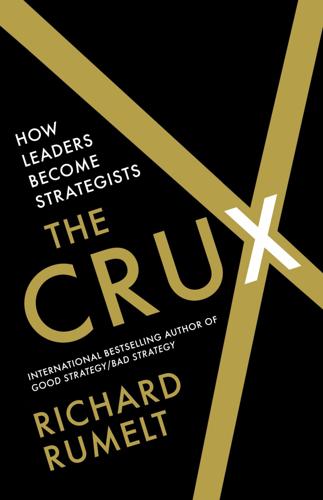
The Crux
by
Richard Rumelt
Published 27 Apr 2022
In college he was able to get a summer job writing code at Apple for the forthcoming Macintosh. After college he took a job at Oracle in customer service and was later promoted to vice president of the client/server division. While at Oracle, Benioff became familiar with Oracle’s OASIS system for customer- relationship management. Customer-relationship management systems started as index cards and evolved into computer databases in the 1970s. Such databases listed customers, contacts, order histories, evaluations, identification of leads, and other information useful in managing sales activities. Later, the databases began to include accounting, shipping, and other operations information.
…
One approach, detailed in the Intel exercise described in Chapter 4, is to formally evaluate both the importance and the addressability of each of a number of challenges. A second approach is to “take things off the table.” At one government agency, the group had developed a list of twenty-six “key” challenges. Each was noted on a five-by-eight-inch index card on the conference table. I told the group that we had to simplify down to five by physically taking twenty-one “off the table.” No one volunteered to remove any of the “key” challenges. I turned to the director and said, “This is where you earn your pay. It is up to you to pick the five most important.”
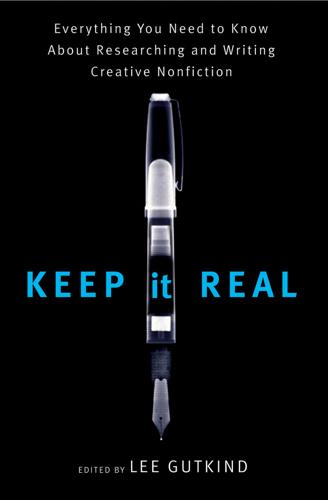
Keep It Real: Everything You Need to Know About Researching and Writing Creative Nonfiction
by
Lee Gutkind
Published 1 Jan 2008
Good, old-fashioned research and scholarship, either through immersion in a chosen subject à la John McPhee or through traditional print and electronic sources, are inescapable parts of a literary occupation. Yet creative nonfiction writers, especially beginners, often consider fact collecting and information gathering to be nothing more than the drudgery that must get done: the piles of handwritten index cards stacked on the card table; the color-coded file folders stuffed with assorted facts; the scraps of random details recorded on the pages of journals. All kept, but for what? Still, writers like John McPhee hang on to those “useless” factoids and half-forgotten notes culled from a variety of scholarly and personal sources, for they may come to life later in unexpected ways.

Do You Mind if I Cancel?: (Things That Still Annoy Me)
by
Gary Janetti
Published 21 Oct 2019
Does any of this matter when I’m twenty-four or twenty-five and going into Lend-A-Hand for an interview? It doesn’t. But it annoys me when I think of how much easier everything could’ve been. The Lend-A-Hand office is small and cluttered and there is one woman who works there. She sits behind a desk with a stack of index cards on them. Each card has an available job on it. They range from cleaning apartments to cater waiter for a private party—the most sought-after job she tells me, often involving large tips and the glamour that’s associated with serving cocktails to people who can afford to hire help. Getting into a wealthy person’s Upper East Side apartment is the perfect gateway to my career as a successful author I decide.
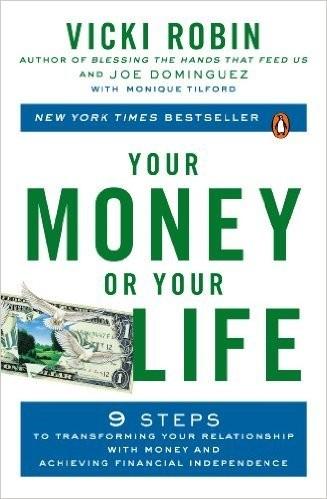
Your Money or Your Life: 9 Steps to Transforming Your Relationship With Money and Achieving Financial Independence: Revised and Updated for the 21st Century
by
Vicki Robin
,
Joe Dominguez
and
Monique Tilford
Published 31 Aug 1992
Kept by thrifty housewives for decades and made famous by Amy Dacyczyn, author of The Tightwad Gazette,10 a price book enables you to recognize quickly the cheapest prices of your most commonly purchased items. You can create your own system (some folks prefer a small loose-leaf binder, others like index cards) but the format is similar. Each item gets its own page (or index card) with the name of the item (e.g., “Peanut Butter”) at the top. Below that on one horizontal line, record the store name, product brand name, price, quantity and unit price. (The per-ounce unit price is often printed on the price tag on the shelf—or you can figure it out yourself).

In Our Own Image: Savior or Destroyer? The History and Future of Artificial Intelligence
by
George Zarkadakis
Published 7 Mar 2016
In 1910, Otlet envisaged the ‘Mundaneum’, the Library of Alexandria of the twentieth century.13 It would include everything – newspapers, books, pamphlets, photographs, even audio recordings. Otlet devised an indexing system that could catalogue and aid search and retrieval of this information. The system would be realised in a Universal Bibliography made up of fifteen million index cards stored in filing cabinets. To reduce the enormous size of his Bibliography, Otlet advocated the miniaturisation of documents on microfilm, and designed automated search systems to locate information – a precursor of contemporary search engines.14 All this information would be broadcast to users by radio, and stored in la Mondothèque, a workstation equipped with microfilm reader, telephone, television and record player.
…
Initially they offered him the Palais Mondial, a building in central Brussels, then later confined him to a corner of the building, only to finally evict him in 1924. In a sad outcome for a great vision, Otlet’s collection was mostly destroyed by the Nazis in 1940. But Otlet never lost faith in his project. It is said that in his old age he could be seen piling up jellyfish on the beach, and then placing on top an index card bearing the number 59:33: the code for Coelenterata in his Universal Decimal Classification. Paul Otlet is considered one of the visionaries of the information age, and yet his grand idea suffered from an obvious problem: what would happen to the Mundaneum if a great big bomb exploded on it? Wouldn’t that spell the catastrophic end of all human knowledge?

Digging Up Mother: A Love Story
by
Doug Stanhope
Published 9 May 2016
Everyone was bedraggled, sitting at highway salvage desks, yelling into phones. I noticed the manager had a water-bong on his desk. I guess I didn’t really need to wear the suit. In fact, I probably looked like a little tiny narc at first glance. The scam was selling toner. You had a lead on an index card for a small business along with the type of copying machine and the name of the person in charge of purchasing. The pitch went like this: “Yes, Barbara? Hi, this is Doug calling on the Xerox. How’s the copier working for you?” You don’t say you are calling from Xerox. You insinuate it. “The reason for the call is we just had a price increase for the toner and developer you use for the machine.
…
So when pay-day came, it was a gumball rally to be first to the nearest bank to cash it. If you were too late and there were insufficient funds, then you had to endure the process of finding a check-cashing place that didn’t have this company on file as deadbeats. Those pre-Internet days where everything was done on index cards in a Rolodex were golden when it came to scamming the system. I was there for less than a month before they shut down and fled but there were plenty more in town, and if one shut down, you’d have a job at another by the end of the day. Some were really shaky, some almost felt corporate. One had it down to such a science that you could only call people with certain first names—names that were generally of young people.
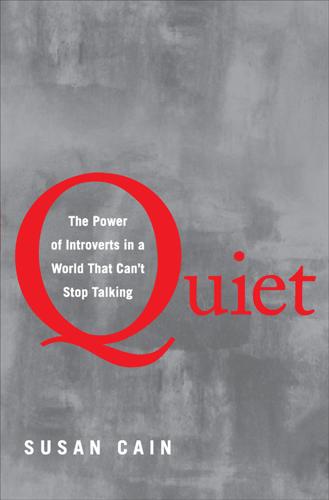
Quiet: The Power of Introverts in a World That Can't Stop Talking
by
Susan Cain
Published 24 Jan 2012
When he does find himself at other people’s parties, Edgar goes to great lengths to play his role. “All through college, and recently even, before I ever went to a dinner or cocktail party, I would have an index card with three to five relevant, amusing anecdotes. I’d come up with them during the day—if something struck me I’d jot it down. Then, at dinner, I’d wait for the right opening and launch in. Sometimes I’d have to go to the bathroom and pull out my cards to remember what my little stories were.” Over time, though, Edgar stopped bringing index cards to dinner parties. He still considers himself an introvert, but he grew so deeply into his extroverted role that telling anecdotes started to come naturally to him.
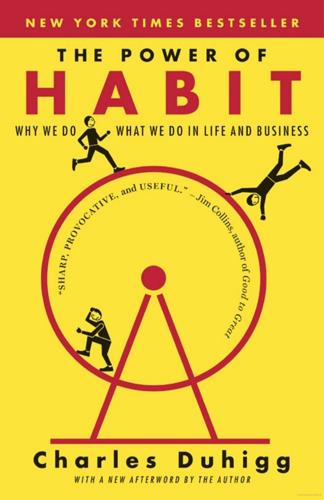
The Power of Habit: Why We Do What We Do in Life and Business
by
Charles Duhigg
Published 1 Jan 2011
When she had worked through all of the nails, she felt a brief sense of completeness, she said. That was the habit’s reward: a physical stimulation she had come to crave. MANDY’S HABIT LOOP At the end of their first session, the therapist sent Mandy home with an assignment: Carry around an index card, and each time you feel the cue—a tension in your fingertips—make a check mark on the card. She came back a week later with twenty-eight checks. She was, by that point, acutely aware of the sensations that preceded her habit. She knew how many times it occurred during class or while watching television.
…
Then Mandy was to search for something that would provide a quick physical stimulation—such as rubbing her arm or rapping her knuckles on a desk—anything that would produce a physical response. The cues and rewards stayed the same. Only the routine changed. MANDY’S NEW HABIT LOOP They practiced in the therapist’s office for about thirty minutes and Mandy was sent home with a new assignment: Continue with the index card, but make a check when you feel the tension in your fingertips and a hash mark when you successfully override the habit. A week later, Mandy had bitten her nails only three times and had used the competing response seven times. She rewarded herself with a manicure, but kept using the note cards.
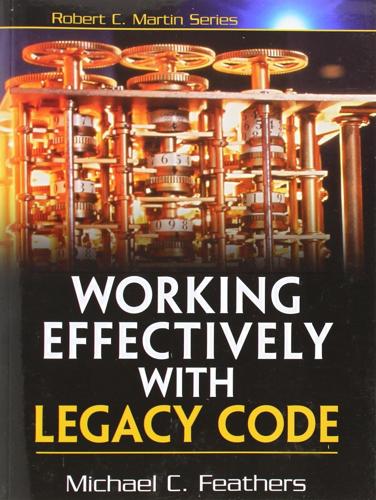
Working Effectively With Legacy Code
by
Michael Feathers
Published 14 Jul 2004
In the 1980s, Ward Cunningham and Kent Beck were dealing with this issue. They were trying to help people start to think about design in terms of objects. At the time, Ward was using a tool named Hypercard, which allows you to create cards on a computer display and form links among them. Suddenly, the insight was there. Why not use real index cards to represent classes? It would make them tangible and easy to discuss. Should we talk about the Transaction class? Sure, here is its card—on it we have its responsibilities and collaborators. CRC stands for Class, Responsibility, and Collaborations. You mark up each card with a class name, its responsibilities, and a list of its collaborators (other classes that this class communicates with).
…
Several years ago, I met Ron Jeffries at a conference. He’d promised me that he would show me how he could explain an architecture using cards in a way that made the interactions rather vivid and memorable. Sure enough, he did. This is the way that it works. The person describing the system uses a set of blank index cards and lays them down on a table one by one. He or she can move the cards, point at them, or do whatever else is needed to convey the typical objects in the system and how they interact. Here is an example, a description of an online voting system: “Here’s how the real-time voting system works. Here is a client session” (points at card).
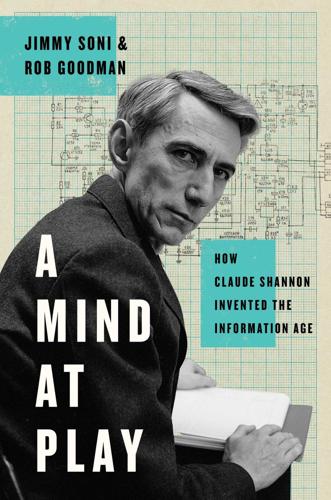
A Mind at Play: How Claude Shannon Invented the Information Age
by
Jimmy Soni
and
Rob Goodman
Published 17 Jul 2017
Few scientists had compiled better data on heredity and inheritance than eugenicists—in some ways, eugenics are to modern genetics as alchemy is to chemistry, the disreputable relative in the attic. Perhaps the best data set of all belonged to the Eugenics Record Office, which had spent a quarter century accumulating more than one million index cards bearing information on human traits and family trees. Many of those cards were the work of generations of field researchers; many more were volunteered by the subjects themselves, offered freely in return for advice on the fitness of their offspring. In a massive, fireproof vault the cards stood in their files row after row: traits of physiology (“biochemical deficiencies, color blindness, diabetes”), of personality (“lack of foresight, rebelliousness, trustworthiness, irritability, missile throwing, popularity, radicalness, conservativeness, nomadism”), of social behavior (“criminality, prostitution, inherited scholarship, alcoholism, patriotism, ‘traitorousness’ ”), and on and on.
…
Nature without nurture, for instance, was a study of identical twins raised apart; nurture without nature was a comparison of the intelligence of foster children and their foster parents. At twenty-four, her study of foster children led her to the contentious conclusion that variance in IQ was 75 to 80 percent inherited. Though Burks had no truck with eugenics, the million index cards at Cold Spring Harbor brought her there for the same reason they attracted Bush’s attention, and in the eugenics office’s last years, she published a reliable method of filtering out the garbage in the files to get at the usable data. Burks was, in other words, both an expert on and a model of intelligence; so her words carried some weight when, after reading some of his preliminary work on genetics, she wrote back to MIT that “surely Shannon is gifted—perhaps to a very high degree.”
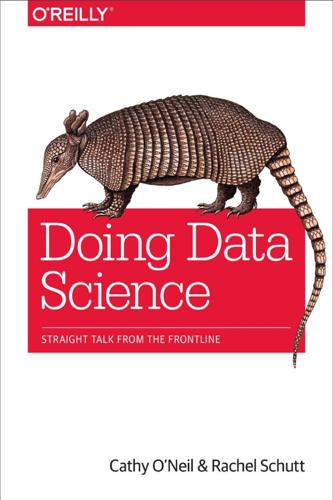
Doing Data Science: Straight Talk From the Frontline
by
Cathy O'Neil
and
Rachel Schutt
Published 8 Oct 2013
Nobody is an expert in everything, which is why it makes more sense to create teams of people who have different profiles and different expertise—together, as a team, they can specialize in all those things. We’ll talk about this more after we look at the composite set of skills in demand for today’s data scientists. A Data Science Profile In the class, Rachel handed out index cards and asked everyone to profile themselves (on a relative rather than absolute scale) with respect to their skill levels in the following domains: Computer science Math Statistics Machine learning Domain expertise Communication and presentation skills Data visualization As an example, Figure 1-2 shows Rachel’s data science profile.
…
Rachel’s data science profile, which she created to illustrate trying to visualize oneself as a data scientist; she wanted students and guest lecturers to “riff” on this—to add buckets or remove skills, use a different scale or visualization method, and think about the drawbacks of self-reporting We taped the index cards to the blackboard and got to see how everyone else thought of themselves. There was quite a bit of variation, which is cool—lots of people in the class were coming from social sciences, for example. Where is your data science profile at the moment, and where would you like it to be in a few months, or years?
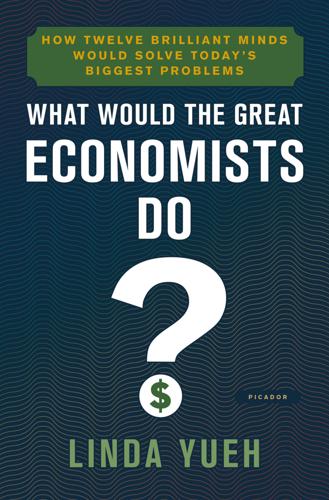
What Would the Great Economists Do?: How Twelve Brilliant Minds Would Solve Today's Biggest Problems
by
Linda Yueh
Published 4 Jun 2018
It would not have escaped his notice that his wife’s money was to a great extent maintaining his family’s standard of living. Fisher always thought that invention would be the key to making a personal fortune. He had tried many times, but his visible index card system was the breakthrough. It was a simple idea. He cut a notch at the bottom of an index card. These could be attached to a metal strip and mounted vertically, horizontally or even on a circular drum. It was a much more efficient way of finding records than flipping through boxes of cards. The concept had come to him in 1910, but he couldn’t find anybody to manufacture the device.
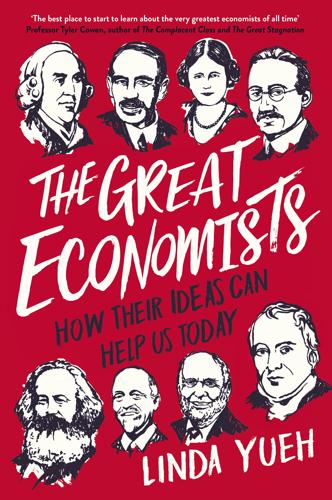
The Great Economists: How Their Ideas Can Help Us Today
by
Linda Yueh
Published 15 Mar 2018
It would not have escaped his notice that his wife’s money was to a great extent maintaining his family’s standard of living. Fisher always thought that invention would be the key to making a personal fortune. He had tried many times, but his visible index card system was the breakthrough. It was a simple idea. He cut a notch at the bottom of an index card. These could be attached to a metal strip and mounted vertically, horizontally or even on a circular drum. It was a much more efficient way of finding records than flipping through boxes of cards. The concept had come to him in 1910, but he couldn’t find anybody to manufacture the device.
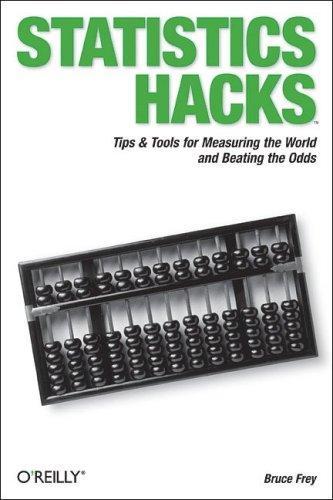
Statistics hacks
by
Bruce Frey
Published 9 May 2006
Zener decks have 25 cards with matching backs. The face of each card displays one of five symbols: a circle, cross, square, star, or wavy lines, as shown in Figure 6-7. Figure 6-7. Zener cards If you don't have a deck of these cards handy, you can make them pretty easily with a pack of blank index cards and a black magic marker. Just make sure that no one can see right through them (unless they are psychic, in which case they can see right through you, too). Make 5 cards of each symbol for a total of 25 cards. There are a few different ways you can use a shuffled deck of Zener cards to conduct an ESP test: One person tries to guess the order of the cards by announcing each one before it is turned over.
…
By the way, because your research interest is legitimate, you shouldn't have to worry about violating any Internet protocols. Throw a party When hosting a large party (Milgram would have loved it if you used a cocktail party, the inspiration for his original study), hand out supplies to your guests. Give them each a large index card and a pen. At the bottom of each card, list the name of a guest at the party. If guests don't know the person listed below, they should sign their name at the top of the card and hand it to someone else who they think might know the person. The process should continue, just as in the Milgram study, until the cards reach the person who is named on the bottom.
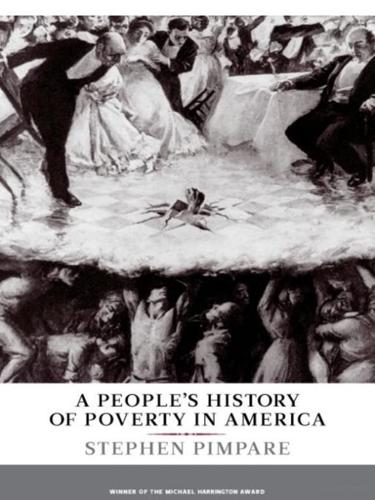
A People's History of Poverty in America
by
Stephen Pimpare
Published 11 Nov 2008
Some well-meaning neighbor secretly mailed a post card to the Charity society, telling of our plight. One day a stranger called. He was a slim fair-haired, young Christian with a brisk hurry-up manner and a stylish collar and necktie. He placed his umbrella against the wall, and shuffled through a bunch of index cards.... This was evidently one of the brusque young men who came from the Board of Health, or the Public School, or the Christian missions, or the settlement houses. They asked many questions, and one must answer them or go to jail.... “And so your husband is out of work? Is he kind to you? Does he drink?
…
His face was pale, he trembled with rage. He glared at the young blond question-asker, and shouted: “‘Get out of this house, mister! You have no business here. It is true we are poor, but that does not give you the right to insult us.” “I am not insulting you,” said the young investigator, blowing his nose and shuffling his index cards nervously, “I ask these questions in about fifty homes a day. It is just the regular form.” My father drew himself up proudly. “I spit on your regular form,” he said. “We don’t want any charity; we can live without it, mister.” . . . What he reported on his cards we never knew, but we were spared the indignity of any further visits by Organized Charity.
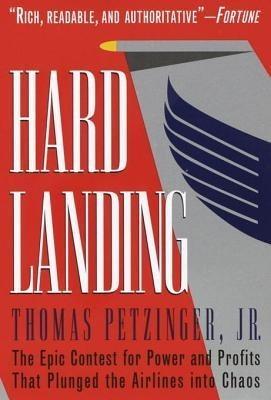
Hard Landing
by
Thomas Petzinger
and
Thomas Petzinger Jr.
Published 1 Jan 1995
After boarding a United flight, he would change into a cardigan sweater and then work the cabin of an airplane, asking pilots and flight attendants whether they were happy and what the airline could be doing better. Hearing any criticism or suggestion, he reached into his pocket for an index card and passed a note to an aide traveling with him. The card was delivered to the desk of the appropriate department head, who was required to take action and report back to the chairman. Eddie Carlson’s index cards “Ready Eddies,” people called them—became a symbol of management’s willingness to listen. In 1971 alone Carlson logged 186,366 miles on United, half of them in coach. This was, after all, a service business, so Carlson considered the views and attitudes of stewardesses of particular importance.
…
From its first day of operation Sabre began accumulating reels of information, the most detailed information ever compiled on the travel patterns emanating from every major city—by destination, by month, by season, by day of the week, by hour of the day—information that in the right hands would become exceedingly valuable in the industry that American sought to dominate. Those airlines that ignored the computer revolution did so at tremendous peril. One was Trans World Airlines. In 1966, four years after American was on-line with Sabre, clerks at TWA were still taking reservations by hand, on index cards. It was in that year that TWA hired a 30-year-old Bob Crandall from Hallmark Cards as its manager of credit and collections, though he would not stay in that position for long. TWA had contracted with Burroughs Corporation to develop a massive airline reservations system called George, as in, “Let George do it.”

Design Is a Job
by
Mike Monteiro
Published 5 Mar 2012
The goal is to expand your view of your job as a designer to include not just your talent, but the business and communication aspects as well. I made it a short book so you can get back to work. This book does not contain a “system.” At the end of this book you will not run out to buy forty-three index cards. You will not get real. You will not add five items to your bucket list. You will not have to adjust your social media strategy, nor will you unlock a secret. You will have more confidence in yourself and a deeper understanding of your craft. Why listen to me? I’ve been running Mule Design, along with my partner Erika Hall, for almost ten years.
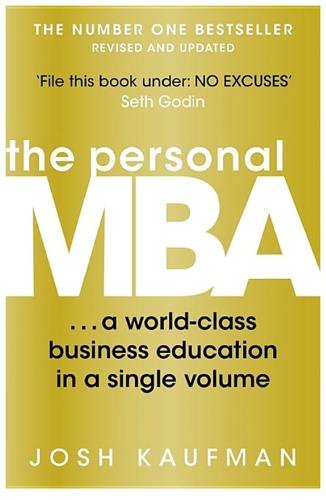
The Personal MBA: A World-Class Business Education in a Single Volume
by
Josh Kaufman
Published 2 Feb 2011
By taking a few minutes to identify a few tasks as particularly important, you’ll make it easier to focus on achieving them first. At the beginning of every day, create a list of two or three MITs, then focus on getting them done as quickly as possible. Keep this list separate from your general to-do list or task tracking system. I typically use a 3 × 5 index card or David Seah’s “Emergent Task Planner,”7 a free downloadable PDF that makes it easy to plan your day. When creating your list of MITs, it’s useful to ask a Self-Elicitation question : “What are the two or three most important things that I need to do today? What are the things that—if I got them done today—would make a huge difference?”
…
After breaking up the book into well-defined sections, it was much easier to make progress, since each individual task was less overwhelming. To keep yourself from feeling overwhelmed, track your projects and tasks separately. Here’s what I do: I always carry around a notebook that contains a 3 × 5 index card.9 The card contains a short list of my active projects. The notebook contains my to-do list: the next actions that will move my projects forward, which I process using a system called “Autofocus,” which was created by Mark Forster.10 The system helps me use my intuition to identify what I can do right now to make progress.
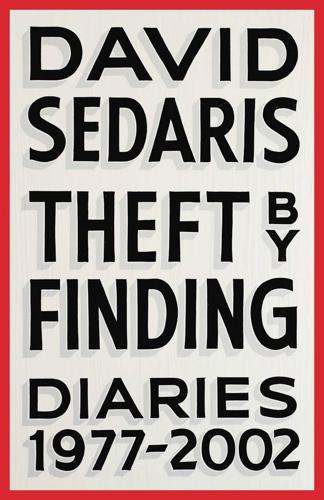
Theft by Finding: Diaries (1977-2002)
by
David Sedaris
Published 29 May 2017
I couldn’t work so just sat in the rocking chair and listened to him. August 6, 1996 La Bagotière Things are moving along at the house. Not only do we have water, but now there’s even a washing machine. This saves us from doing laundry in the tub, which always took forever, especially the wringing-out part. I’m continuing to put new vocabulary words on index cards. “What does that mean?” I keep asking Hugh as he’s talking to people. “How do you spell it?” He lost his patience a few hours after we arrived. In the morning we went to the small city of Flers and ran into R. and her husband, P. They’re a fit and attractive couple fifteen years older than us who feel that their friends should be equally youthful and good-looking.
…
August 14, 2000 La Bagotière Hugh went to Ségrie-Fontaine to see Jocelyn, who heard a rumor that I am retarded. It’s being spread by a woman in the village of Taillebois who’s seen me “looking at pictures and talking to myself.” “Il n’est pas normal,” she says. What she thinks are pictures are actually my index cards, and I’m testing myself on French vocabulary words, not having arguments with the little demons perched on my shoulders. The woman said that I’m not dangerous, which I guess is good. Apparently I’m one of those retarded people who can wander off for a few hours but still manage to find their way back home.
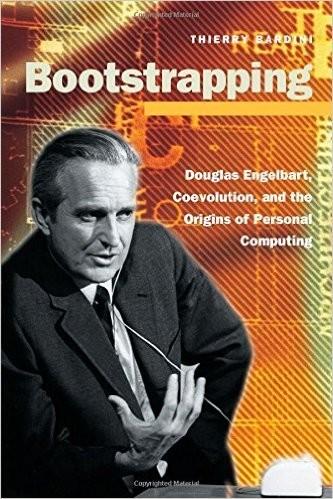
Bootstrapping: Douglas Engelbart, Coevolution, and the Origins of Personal Computing (Writing Science)
by
Thierry Bardini
Published 1 Dec 2000
Thus the problem of regression of the hand already exists today at the in- dividual if not the species level. (Leroi-Gourhan, 1993 [19 6 5], 255-56) Leroi-Gourhan parallels this evolution of the hand with the dynamic of the liberation of human memory via books, punched index cards, and other "memory-collecting machines." For him, the evolution started with the op- portunities provided by books, which he compares to "hand tools." Card in- dexes, on the other hand, are comparable to "hand-operated machines," while "punched index cards represent yet another stage, comparable to that of early automatic machines" (ibid., 264). About this later stage, he wrote: A punched card index is a memory-collecting machine.
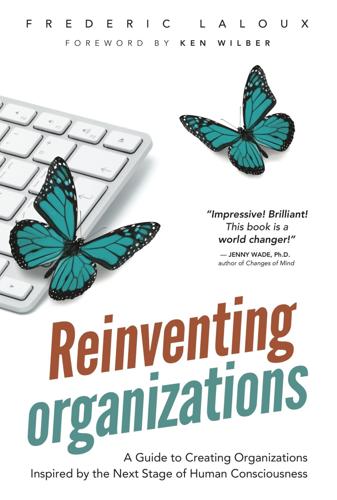
Reinventing Organizations: A Guide to Creating Organizations Inspired by the Next Stage of Human Consciousness
by
Frederic Laloux
and
Ken Wilber
Published 9 Feb 2014
These initial training modules are therefore expanded with follow-up training and workshops that are interwoven into daily life. At FAVI, Jean-François Zobrist used to chair a one-hour session every Friday morning, open to whoever wanted to join. The topic: An in-depth look at one of FAVI’s core organizational tools. (FAVI calls them fiches, or index cards, as they are literally available in the form of index cards to employees.) These include the purpose of the organization, its values, its decision-making mechanisms, and lean manufacturing techniques. Formats used by other organizations include team coaching (to work through some upset), company retreats, purpose circles, and values days.
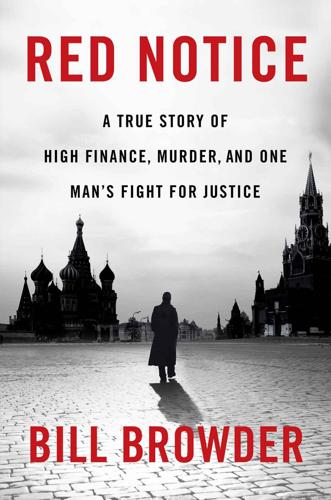
Red Notice: A True Story of High Finance, Murder, and One Man's Fight for Justice
by
Bill Browder
Published 3 Feb 2015
We sat and he politely asked me to go through the whole story. He listened intently, periodically scribbling notes on an index card, not saying a word. Only when I was done did he start talking, which was when I began to see how he’d earned his reputation. “Have you been to the Senate Foreign Relations Committee on this yet?” he fired at me in a low, staccato voice. “No. Should I have?” “Yes. Add them to the list.” He put a check mark next to one of the notes on his index card. “What about the House Committee on Investigations?” “No. Who are they?” I was starting to feel inadequate. “It’s a House committee that has virtually unlimited subpoena powers.
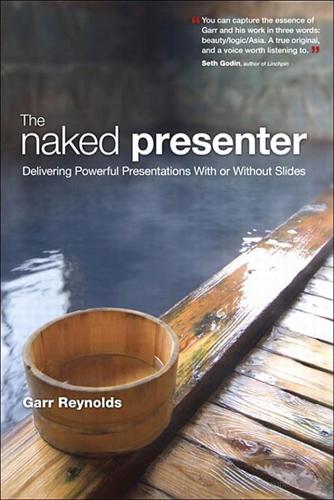
The Naked Presenter: Delivering Powerful Presentations With or Without Slides
by
Garr Reynolds
Published 29 Jan 2010
You need both a place and a set amount of time to quiet your busy mind, see things clearly, and link associations that you may have missed before. 2. Remove the distractions. Turn off your computer and unplug yourself from the grid. You’ll be amazed at your creativity and insights when you remove the sources of interruptions. 3. Go analog. Grab a sketch book, sticky notes, or index cards. Alternatively, place yourself in front of a large whiteboard. You do not need a computer—that comes later (if ever). College students prepare their presentation together by turning off the computer and sketching their ideas. Chapter 2 First Things First: Preparation 49 Wow! eBook <WoweBook.Com> 4.
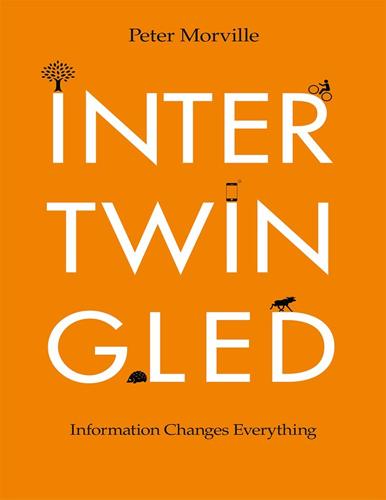
Intertwingled: Information Changes Everything
by
Peter Morville
Published 14 May 2014
We were exhilarated by co-learning and co-creation, and deeply inspired by the potential of this global network to lift us up and bring us together. Today, it’s easy to get lost in the streams of Facebook and Netflix, but back then it was all about the bridges. In 1934, Paul Otlet envisioned a scholar’s workstation that turned millions of 3 x 5 index cards into a web of knowledge by using a new kind of relationship known as the “Link.”lxiv In 1945, Vannevar Bush imagined the memex, a machine that enabled its users to share an associative “web of trails.”lxv In the early 60s, Ted Nelson coined “hypertext” and set out to build Xanadu, a non-sequential writing system with visible, clickable, unbreakable, bi-directional hyperlinks. lxvi Figure 3-1.

Overcoming Compulsive Hoarding
by
Jerome Bubrick
Published 31 Dec 2010
Do the actual steps of the experiment on a separate page in the notebook. When you finish each experiment, state your conclusions and develop a rational response to that automatic thought. Make a flash card for each automatic thought you test. Although you can do this in your notebook, we strongly recommend that you use index cards to make actual flash cards, because then you can easily view them while applying the techniques in the next chapter. On the front of each flash card, write Automatic Thought, and below that Cognitive Distortion. Label the back Rational Response. Then fill in the automatic thought and the type of cognitive distortion it represents on the front side, and write the rational response on the back.
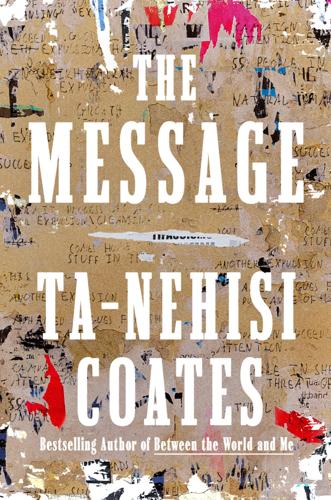
The Message
by
Ta-Nehisi Coates
Published 2 Oct 2024
I see her now as she was then, in her short natural and thick glasses, pushing her silver Volkswagen Rabbit down Liberty Heights, tapping the wheel and singing to the Pointer Sisters: “Well, Romeo and Juliet / Samson and Delilah / baby you can bet…” I heard it all in that car or on the turntables at home—Prince, Nina Simone, Carmen McRae, the Platters, the Drifters, John Coltrane, Jerry Butler, Taj Mahal, Joan Armatrading. My mother has an innate sense for craft, too. I have warm memories of the two of us at the kitchen table with Scotch Tape, index cards, scissors, Elmer’s paste, and wire hangers, all in service of science fair tri-folds, art class collages, or dioramas of history. She took up drawing for a while, and I would find her sketch pads scattered throughout the house. And now, all these years later, she’d found a forgotten one, too—and in it a portrait of my father, sitting sideways in a chair, his legs crossed, a fisherman’s cap on his head and a book in his hand.

Sleepwalk With Me: And Other Painfully True Stories
by
Mike Birbiglia
Published 11 Oct 2010
I’ve discovered since then that making fun of audience members is an entire genre of comedy. Comedians have entire acts that consist of pointed nuggets like, “Nice shirt, faggot!” To which the people around that gay-shirted audience member reply, “It’s so true! His shirt does suck! This guy’s a genius!” I’m standing on the sidewalk, holding a 3x5 index card with five bullet points. I’m desperately trying to figure out how I’m going to stretch this into thirty minutes. It says: “Stick Insects. Cookie Monster. A-Team. Teletubbies. Millionaire. Slash.” This was the material: Stick insects I’d hate to be a stick insect because all the other insects are always bumping into you because they don’t know you’re there, and you have to be like, “Watch it.”
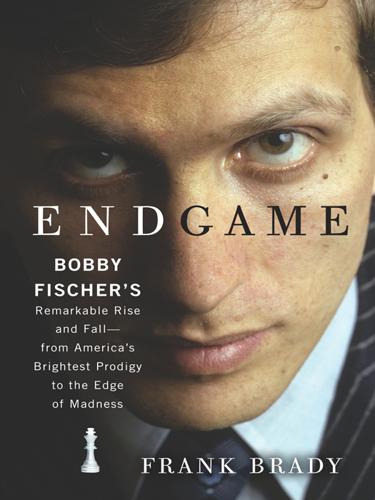
Endgame: Bobby Fischer's Remarkable Rise and Fall - From America's Brightest Prodigy to the Edge of Madness
by
Frank Brady
Published 1 Feb 2011
Spurning Abramov’s offer of an introduction to the city, Bobby asked to be brought immediately to the Tsentralny Shakhmatny Klub, the Moscow Central Chess Club, said to be one of the finest in the world. Virtually all of the strongest players in Moscow belonged to the club, which had been opened in 1956 and boasted a library reported to consist of ten thousand chess books and over one hundred thousand index cards of opening variations. Bobby simply couldn’t wait until he saw it all. Upon arriving at the club’s headquarters on Gogolsky Boulevard, Bobby was first introduced to two young Soviet masters, both in their early twenties: Evgeni Vasukov and Alexander Nikitin. He began playing speed chess in rotation with both, in a hallway on the first floor of the club, and won every game.
…
“It wouldn’t have made any difference,” Bobby responded. He then showed the Russian all of the variations he’d worked out during the adjournment. Soon, grandmasters Efim Geller and Robert Byrne jumped into the fray. There was a blur of hands as the four men made moves on a chess set hardly larger than an index card. At that moment Offenbach’s “Les oiseaux dans la charmille” filtered down from the stage. But the chess players seemed not to notice. Eventually, Fischer was given his two prize checks, one from the Icelandic Chess Federation and the other from James Slater, the millionaire whose eleventh-hour financial offer had saved the match.

Market Wizards: Interviews With Top Traders
by
Jack D. Schwager
Published 7 Feb 2012
Forty-five minutes into the interview, I began to think that things were going so well that Dennis would continue our conversation beyond the allotted hour. At exactly ten minutes before the end of the hour, my illusion was shattered. “I’ve only got about ten more minutes,” he said, “so if there’s still stuff that’s important you may want to get to it.” I shuffled through my index cards and quickly tried to identify some of the key questions I had not yet covered. Precisely at the end of the hour, Dennis said, “That’s about all the time I have, thank you.” One segment of questions I did not get to dealt with the political side of Dennis’ experiences. These topics included the Senate hearings on alleged manipulation of the soybean market by Dennis, the Roosevelt Institute, and the various political figures Dennis had known.
…
Often his responses were quite short. I felt like a photographer stalking a rare bird; one false step and the bird would fly off. I knew that, at some point, I would not be able to think of an immediate follow-up question. This happened about forty minutes into the interview. I quickly glanced down at my index cards, searching for a lead. Unfortunately, my eyes focused on a question I had already touched upon, and though I tried to ask it from a different perspective, it was too late. The game was over. Baldwin said he had to get going and excused himself. How did you first get interested in trading? I had taken some classes in commodities in graduate school.
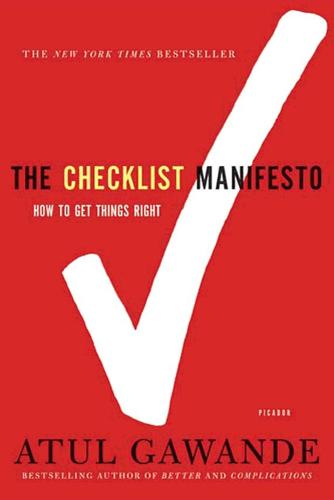
The Checklist Manifesto: How to Get Things Right
by
Atul Gawande
Published 2 Jan 2009
Using a checklist for takeoff would no more have occurred to a pilot than to a driver backing a car out of the garage. But flying this new plane was too complicated to be left to the memory of any one person, however expert. The test pilots made their list simple, brief, and to the point—short enough to fit on an index card, with step-by-step checks for takeoff, flight, landing, and taxiing. It had the kind of stuff that all pilots know to do. They check that the brakes are released, that the instruments are set, that the door and windows are closed, that the elevator controls are unlocked—dumb stuff. You wouldn’t think it would make that much difference.
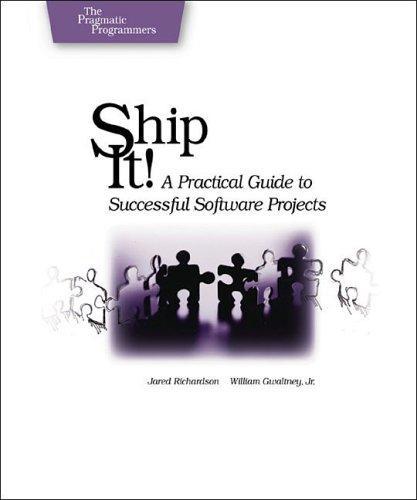
Ship It!: A Practical Guide to Successful Software Projects
by
Jared R. Richardson
and
William A. Gwaltney
Published 15 Mar 2005
Once it fell behind the desk, the “out of sight, out of mind” rule kicked in, and they forgot the issue. When you use an issue tracking system, you provide yourself with a safety net that Harry and Lloyd never had. Your issue tracking system is a bookkeeping detail. You need it to track what you’ve worked on, what you have and haven’t fixed, and what you plan to fix. A white board, index cards, or a spiral-bound notebook might handle your needs for a few months but not for any length of time, and these certainly don’t scale to the enterprise. How Do I Get Started? If you don’t currently have an issue tracking system, don’t wait. Don’t delay your transition until you can transfer every issue ever encountered.
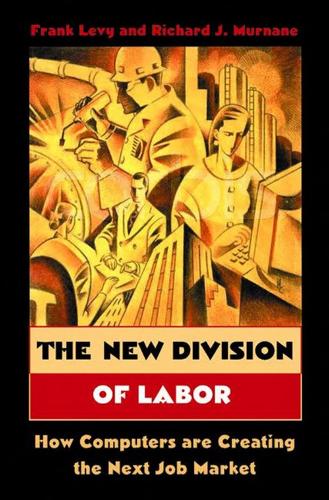
The New Division of Labor: How Computers Are Creating the Next Job Market
by
Frank Levy
and
Richard J. Murnane
Published 11 Apr 2004
Keefe asked one student to describe an alligator so that someone who had never seen one would know what it looked like. She asked other children to add to the description. She turned to a discussion of how the children could find information in books to answer their questions, and the importance of taking notes and organizing the information on index cards. In response to a question, one boy explained the importance of “not writing word for word from the books because that would be stealing another person’s writing.” The children then worked in pairs to collect and organize information on their animal. Ms. Keefe moved around the room, talking with pairs of students about the evidence they were finding, offering suggestions about organizing the information.
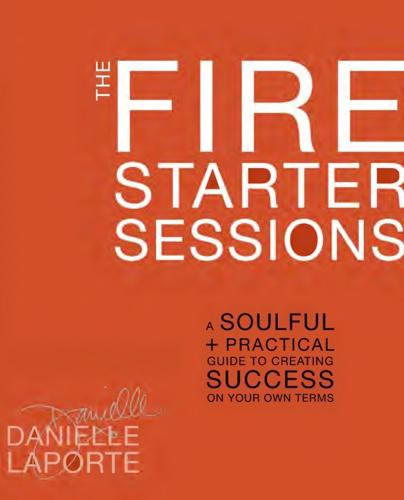
The Fire Starter Sessions: A Soulful + Practical Guide to Creating Success on Your Own Terms
by
Danielle Laporte
Published 16 Apr 2012
I raced home from the fire-walking workshop at midnight, under a full moon, with a note card tucked into my Levis: “I, Danielle LaPorte, walked on fire. I can do anything.” (The instructor had us write these cards; I went with it.) The idea was that anytime we felt less than heroic, we could look at that three-by-five index card stuck on our bathroom mirror, and remember that we bent matter with our minds and therefore have access to special people powers. Handy. Would I do it again? I hesitate. The evening of that fire walk seminar I asked some of the repeat walkers how the night went for them. I was really surprised to hear that some people burned their feet on what was their second or third time walking.

The Bedwetter: Stories of Courage, Redemption, and Pee
by
Sarah Silverman
Published 19 Apr 2010
Example: My friend Mark Cohen--every comic's favorite comic and the quickest mind anyone knew--grabbed a nickel from our table at the Washington Square Diner, stuck it on his forehead, and yelped, "Jewish Ash Wednesday!" Everyone laughed but me. I was upset. Cohen (Coco) rolled his eyes at me for ruining his fun, but I couldn't help it. I was hurt that he would perpetuate a stereotype like that. I know. Index card for my first joke after Jimmy Kimmel introduced me at the Hugh Hefner roast. It was the first time I remember meeting Jimmy (though he says we met once before). The truth is, from that time up to now, inside, I haven't changed. My outer shell may mutate, I may come to embrace the things that scare and upset me, but it all comes from the same place.

Grand: A Memoir
by
Sara Schaefer
Published 10 Aug 2020
In an instant we know she is going to die again, and I feel the horror of losing her once more, rushing in like a dust storm. And then I would wake up, choking on grief as intense as the day she died. I hated my brain. It seemed hell-bent on torturing me. During the day, I was trying to write a television pilot, and I had cleared off the kitchen table and covered it with index cards and books with titles like The Eight Characters of Comedy and The Nutshell Technique and Write to TV: Out of Your Head and onto the Screen. Spoiler alert: I could not get out of my head. Every time I tried to start writing, a stampede of bad thoughts would charge in. So instead of writing, I did what every doctor recommends: I spent hours robotically checking social media.

Agile Project Management With Kanban
by
Eric Brechner
Published 25 Feb 2015
Kanban can still work well for distributed teams through a virtual signboard online, but if you’re given the choice, sitting in close proximity near a physical signboard is better. After choosing a location for your signboard, it’s time to construct two columns for each step, plus a double-width column on the left for the work backlog. The columns for each step should be the width of a note card (sticky note or index card). You can use tape or markers to delineate the columns. Here’s what your signboard might look like. Looking back at the steps in the high-level routine that my teams use, notice how the first and last steps are treated differently from the middle steps. The first step, “Take an item from the backlog,” is replaced by a holding area for pending work.
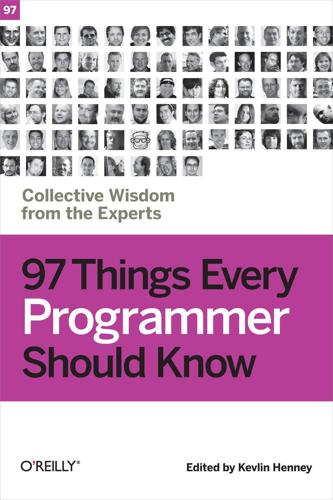
97 Things Every Programmer Should Know
by
Kevlin Henney
Published 5 Feb 2010
A GUI might disable or remove commands that make no sense in the current context, for example, or an API might eliminate argument-ordering problems by allowing parameters to be passed in any order. A good way to design interfaces that are easy to use correctly is to exercise them before they exist. Mock up a GUI—possibly on a whiteboard or using index cards on a table—and play with it before any underlying code has been created. Write calls to an API before the functions have been declared. Walk through common use cases and specify how you want the interface to behave. What do you want to be able to click on? What do you want to be able to pass? Easy-to-use interfaces seem natural, because they let you do what you want to do.

The Lights in the Tunnel
by
Martin Ford
Published 28 May 2011
The computer then in use was a state-of-the-art mainframe machine manufactured by the Amdahl Corporation. In my first computer programming course, we were assigned the task of writing and running a program using computer punch cards.7 To do this, you first went to the university bookstore and purchased a large box of blank punch cards. These were similar to, but a little longer than, standard index cards. You then wrote your program using pencil and paper, and took your blank cards to a card punch machine at the computing center. You inserted a blank card in the machine and entered, or “keyed in,” one line from your program. As you did this, the machine punched corresponding holes in the card.

Bacon: A Love Story: A Salty Survey of Everybody's Favorite Meat
by
Heather Lauer
Published 1 May 2009
The Internet is, obviously, a thrillingly comprehensive sea of 82 ~ BACON: A LOVE STORY information, and the community of food bloggers and critics is an incredibly active wave within that. I consult magazines, cookbooks, organic farming brochures and catalogs, the sides of food packaging, tattered and greasy index cards buried on the bottom shelves of pantries. If someone prepares a dish I have never encountered before, I have them write the recipe out.” Bacon recipes seem to come crawling out of the woodwork in droves for an appearance on The Bacon Show. It still is hard to believe that it is so easy to find a new bacon recipe every day.

Babel-17
by
Samuel R. Delany
Published 6 Jan 2014
She was going away. She was laughing like, as though, as if. He stood, losing her laughter, replaced by whirled bewilderment in the tides of his consciousness fading— V When they returned, Brass called, “Good news. We got who we wanted." "Crew's coming along," commented Calli. Rydra handed him the three index cards. "They'll report to the ship discorporate two hours before— what's wrong?" DaniI D.Appleby reached to take the cards. "I. . . she . . ." and couldn't say anything else. "Who?" Rydra asked. The concern on her face was driving away even his remaining memories, and he resented it, memories of, of.

War Is a Force That Gives Us Meaning
by
Chris Hedges
Published 31 Aug 2002
They bulldoze fields where bodies are buried, as they did in Srebrenica, dynamite mine shafts where bodies were dumped, or dissolve the corpses in acid. But the industrial-scale killing of the twentieth century makes such erasure difficult. And years later there often is a dogged and methodical effort, usually by lonely dissidents, to uncover the past. These statisticians wield with index cards the fate of despots, the return of historical memory and, finally, hope. I was taken to a school in northern Iraq days after Iraqi soldiers withdrew from the region following the Gulf War. Kurdish rebels there told me that under the concrete in the schoolyard were hundreds of bodies. They vowed to smash through the concrete and dig them up.

Land of Big Numbers: Stories
by
Te-Ping Chen
Published 2 Feb 2021
They’d found him. It was an elderly man out walking his border collie in the hills who’d made the report. Gao’s body was dangling from a tree, face black, clad in his leather jacket, ID and car keys in his breast pocket. He’d been there all night. His car had been found in the otherwise empty parking lot, an index card with my name and number written in his hand on the dashboard. I searched the apartment in disbelief for days, but there wasn’t anything else, no apology, no note of explanation. He had been private in almost everything, and he was private, too, in his death. The days proceeded in his absence: phone calls with friends and funeral homes, details that needed arranging.

The Passenger: Paris
by
AA.VV.
Published 26 Jun 2021
While a coach isn’t, strictly speaking, part of the ‘institution’ as such, Christophe Robert was none the less the artisan and the architect of the 2015 promotion to Ligue 2, and he shares the honours with his staff. In his office opposite the gym disorder reigns – desks piled high with computers, index cards, copies of the Le Parisien, a set of scales, a washbasin – and on his wall an Eric Cantona quote that is what it is and is less cryptic than his famous statement about seagulls and sardines: ‘I don’t play against a particular team. I play against the idea of losing.’ Robert’s role model is Arsène Wenger.

My Own Country: A Doctor's Story of a Town and Its People in the Age of AIDS
by
Abraham Verghese
Published 1 Jan 1994
For several weeks now—ever since Essie Vines had brought Gordon down to the emergency room—I had been going through the motions at the VA. Patients at the VA were interesting (though somewhat predictable), my research was going well, and I had my hands full with student and resident teaching. But I couldn’t stop fingering the index cards I now carried in my breast pocket: one each for Gordon, Ed and Bobby, Fred and Otis. One for Clyde McCray with Vickie’s name penciled in on the seventh card, awaiting the results of her test. I put a date on Fred and Otis’s cards and wrote their CD4 counts next to it. I spread the cards in my hand and wondered idly, How many cards I would be carrying next week?
…
You could shop in the mall, cut your hair in Parks & Belk, pick up milk in the Piggly Wiggly, bowl at Holiday Lanes, find bawdy entertainment at the Hourglass Lounge—and never know that one of my patients was seated right next to you, or serving you, or brushing past you in the parking lot, a deadly virus in his or her body that was no threat to you, but might nevertheless cause you to stand up and scream if you knew how close it was. My problem was the opposite: I saw AIDS everywhere in the fabric of the town; I wanted to pick up a megaphone as I stood in a checkout line and say, “ATTENTION K-MART SHOPPERS: JOHNSON CITY IS A PART OF AMERICA AND, YES, WE DO HAVE AIDS HERE.” My ubiquitous stack of index cards floated in front of my face at night. I could rattle off precisely where each person was in the downhill trajectory that was the natural history of HIV infection. The integers and the units of measurement—“liters,” “cells per cubic millimeter,” “grams per deciliter”—sometimes inhabited my dreams in a peculiar “dream-work” routine, as if I was on the eve of a math exam, a Cambridge tripos, truly a nightmare for one so disinclined toward mathematics as I.
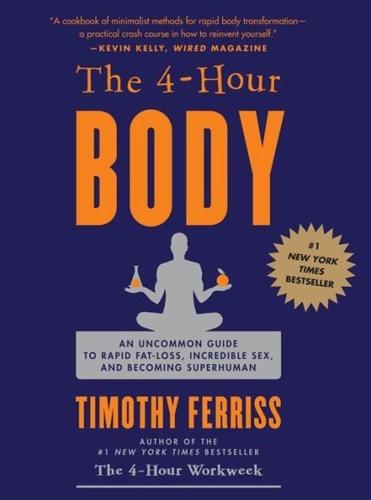
The 4-Hour Body: An Uncommon Guide to Rapid Fat-Loss, Incredible Sex, and Becoming Superhuman
by
Timothy Ferriss
Published 1 Dec 2010
Only I will remain. —Bene Gesserit “Litany Against Fear,” from Frank Herbert’s Dune For most of us, the how-to books on our shelves represent a growing to-do list, not advice we’ve followed. Several of the better-known tech CEOs in San Francisco have asked me at different times for an identical favor: an index card with bullet-point instructions for losing abdominal fat. Each of them made it clear: “Just tell me exactly what to do and I’ll do it.” I gave them all of the necessary tactical advice on one 3×5 card, knowing in advance what the outcome would be. The success rate was impressive … 0%. People suck at following advice.
…
I believe adiponectin is largely to thank for Ray’s muscle gain.17 Speculation notwithstanding, the research is in its early stages, so I’ll reserve adiponectin as an intellectual dessert for the geeks. My forays into its potential can be found in the online resources. BAT and my related torture experiments, on the other hand, are worth taking a closer look at. If the science gets too dense and you want the index card version, skip to “Ice Age Revisited—Four Places to Start” on this page. I won’t be offended. Fat-Burning Fat Not all fat is equal. There are at least two distinct types: white adipose tissue (WAT) and brown adipose tissue (BAT). WAT is what we usually think of as fat, like the marbling on a steak.
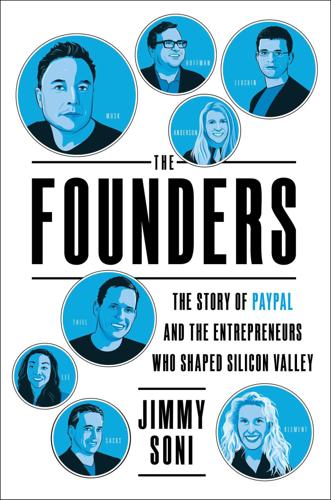
The Founders: The Story of Paypal and the Entrepreneurs Who Shaped Silicon Valley
by
Jimmy Soni
Published 22 Feb 2022
He also enjoyed pointing out that the URL was rare, one of only three single-letter .com URLs in the world at the time (the other two: q.com and z.com). Musk had a practical rationale for the name, too. He believed the world would soon be overrun with handheld devices—pocket-sized computers with index-card-sized keyboards. In this world, X.com was the ideal URL because a customer was only ever a few thumbstrokes from their full financial life. Musk’s conviction about X.com also stemmed from his consternation with the name “Zip2.” “First of all, what the hell does it mean? It’s literally one of the worst URLs you could possibly have.
…
” * * * eBay’s troubled relationship with payments long preceded its skirmish with PayPal. In the inaugural versions of eBay, founder Pierre Omidyar had simply trusted auction users to mail him their auction fees. eBay’s first employees recalled thousands of envelopes arriving in the office, some with nickels and dimes taped to index cards. Even as eBay grew, payments remained an afterthought. Reed Maltzman, an early eBay employee, recalled walking into a room of humming fax machines. When he asked what the fax machines were printing, he was told they were collecting credit card authorization receipts. The payments coated the office floor.
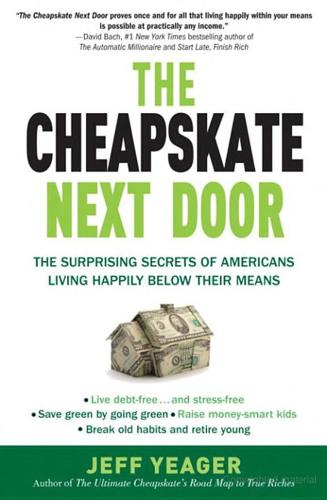
The Cheapskate Next Door: The Surprising Secrets of Americans Living Happily Below Their Means
by
Jeff Yeager
Published 8 Jun 2010
And, man, do cheapskates know their grocery prices, continually updating and expanding that databank stored in their frontal lobes. Fellow cheapskates might ask each other “What are you paying for peanut butter?” before they even say hello. If you don’t have that sixth sense naturally, make yourself a 3×5 index card listing recent “good prices” for items you buy regularly, and use it to evaluate prices when you go grocery shopping. Batch it and forget it: Whether a stockpiler or a spontaneous chef, when we cheapskates cook, we rarely make just a single serving. Batch-cooking is the name of the game. Double, triple, or even quadruple the recipe you’re making so you can freeze some for later.
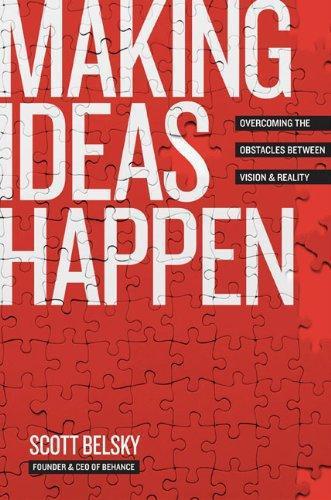
Making Ideas Happen: Overcoming the Obstacles Between Vision and Reality
by
Scott Belsky
Published 31 Mar 2010
Why throw away the evidence of your achievements when you can create an inspiring monument to getting stuff done? Some teams, including the Behance team, have created “Done Walls” covered with old Action Steps. We literally gather up the records of completed tasks from projects—often notebook pages of checked-off actions and index cards with descriptions of features we’ve added—and then we decorate certain walls with these artifacts. For us, the “Done Wall” is a piece of art that reminds us of the progress we have made thus far. When we feel mired in the thick of it all, we can look up and see the wake of progress that trails behind us.

PostgreSQL Cookbook
by
Chitij Chauhan
Published 30 Jan 2015
So, instead of rebuilding the index, you have to perform the following three steps: First, create an index identical to the one you wish to rebuild using the CREATE INDEX CONCURRENTLY option. Next, drop the old index. The final step is to rename the new index to the same name as the one that the old index had. The following code demonstrates the preceding steps: CREATE INDEX CONCURRENTLY card_index ON creditcard (cardno); BEGIN; DROP INDEX credit_card_idx; ALTER INDEX card_index RENAME TO credit_card_idx; COMMIT; Maintaining log files The information stored in log files can prove invaluable when diagnosing or troubleshooting problems. With the help of the information stored in the log files, you can identify the sources of the problems in the underlying database.
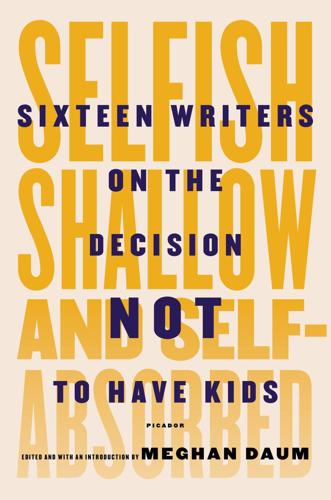
Selfish, Shallow, and Self-Absorbed: Sixteen Writers on the Decision Not to Have Kids
by
Meghan Daum
Published 29 Mar 2015
And when she warned me to keep the episode secret, I felt deeply ashamed. I’ve felt, ever since, like something is wrong with me. My view of myself as fucked up comes less from the actual hospitalization than from my mother’s reaction to it. * * * I had other depressive episodes. In tenth grade, I couldn’t write my English term paper. I had stacks of index cards filled with my notes and quotes from Thomas Hardy’s Tess of the d’Urbervilles, but I couldn’t focus enough to write the essay. It was my first long paper and I wanted it to be perfect. As the deadline approached, I panicked. I couldn’t sleep. I stayed up all night watching black-and-white reruns on Nick at Nite.
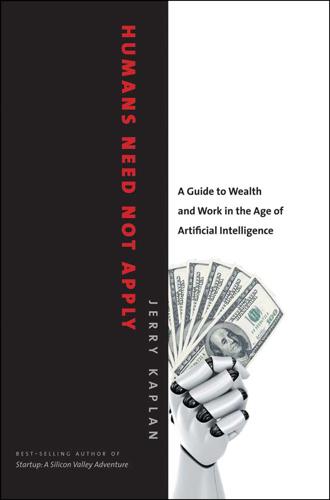
Humans Need Not Apply: A Guide to Wealth and Work in the Age of Artificial Intelligence
by
Jerry Kaplan
Published 3 Aug 2015
I would also like to acknowledge that the title for this book is not original—it is borrowed from an outstanding short video of the same name by the famously reclusive C. G. P. Grey. I’m a big fan. Check out his work on YouTube. Last but not least, thanks to my amazing wife, Michelle Petti-grew-Kaplan, for permitting me to jot down ideas on index cards during what might otherwise be construed as romantic moments. Let’s hope she doesn’t read the personal portions of this manuscript until it’s too late to make changes. Oops, forgot to mention the kids—Chelsea, Jordan, Lily, and Cami—hi, guys, guess what? I finished the book! Notes INTRODUCTION 1.
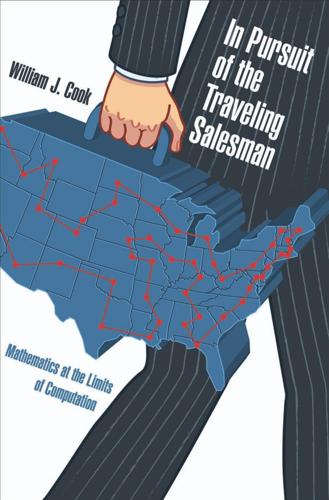
In Pursuit of the Traveling Salesman: Mathematics at the Limits of Computation
by
William J. Cook
Published 1 Jan 2011
The process runs as follows. The position of a point in the tour depends only on its relative position h on the spacefilling curve. The Georgia Tech team precomputed the value of h for a fine grid of (x, y) locations from a standard map of Atlanta. The list of active clients was stored on two sets of index cards, one sorted alphabetically and the other stored in the tour order, that is, by increasing value of h. To delete a client, his two cards are simply removed. To insert Figure 3.2 Spacefilling curve for Atlanta region. Image courtesy of John Bartholdi. The Salesman in Action a new client, the map is used to determine the (x, y) coordinates of the client’s location, the table is used to look up the corresponding value of h, and h is used to insert the client’s card into the tour order.

I Am Not Myself These Days: A Memoir
by
Josh Kilmer-Purcell
Published 7 Feb 2006
One is excited to get his time in the spotlight. The other looks like the kind of guy who never would normally do this sort of thing, but given the parade of empty glasses on his table, he’s probably amenable to most anything at this point. Just my type. “Aqua is so slutty . . .” CoCo says, reading off an index card. “. . . How slutty is she?!” the crowd roars back on cue. “Aqua is so slutty,” CoCo continues, “the federal government has declared her bedroom a ______.” The sound guy starts up the theme song while the contestants begin thinking up their answers. I scribble my answer on 98 I Am Not Myself These Days a card.
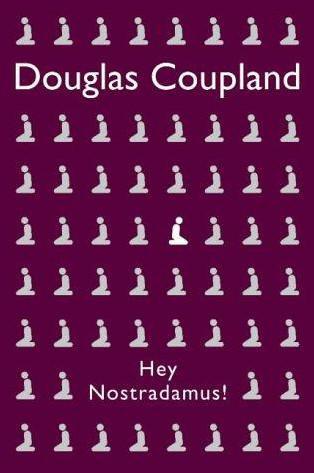
Hey Nostradamus!
by
Douglas Coupland
Published 1 Jan 2003
Truth was, Jason and I were doing everything in there that weekend, but I have to admit that for a moment or two I enjoyed watching Lauren squirm at my nonresponse. In any event, I was far too preoccupied to have any sort of conversation. I told Lauren I had to go to my homeroom and sequence some index cards for an oral presentation later that afternoon on early Canadian fur trappers, and I left. In homeroom I sat at my desk and wrote over and over on my pale blue binder the words GOD IS NOWHERE/GOD IS NOW HERE/GOD IS NOWHERE/GOD IS NOW HERE. When this binder with these words was found, caked in my evaporating blood, people made a big fuss about it, and when my body is shortly lowered down into the planet, these same words will be felt-penned all over the surface of my white coffin.

Unfamiliar Fishes
by
Sarah Vowell
Published 22 Mar 2011
(Imagine all the entries on Wikipedia being written by Steve Jobs, Doris Lessing, Garry Wills, Jay-Z, and what’s-his-name, that string-theory guy.) The entire laborious enterprise of the Encyclopédie was illumined by curiosity. Thinking about it again was a sort of homecoming for me, a return to my freshman goose bumps over Candide. I tracked down Denis Diderot’s mission statement for the encyclopedia and wrote it on a purple index card I tacked up next to my desk as a talisman: “All things must be examined, debated, investigated without exception and without regard for anyone’s feelings.” Hawaiians, I discovered, take a different approach to collecting, discussing, and presenting information. One afternoon I was sitting at my desk in New York, noodling around the Internet, trying to nail down the meaning of the Hawaiian word kupuna.

To Show and to Tell: The Craft of Literary Nonfiction
by
Phillip Lopate
Published 12 Feb 2013
One of the best parts about researching is that it inspires in you an obligation to finish your writing project, if only to serve faithfully the scholarly materials to which you have become so attached. It is no longer all about you, but about them too, as though they had somehow become your offspring when you weren’t watching. “Print me, Papa,” beseech those index cards, those notepads, those Post-its. The Lyric Essay Ambivalence being the essayist’s nectar, I am happy to find some immediately in taking up the subject of the lyric essay. I mistrust the lyric essay; I welcome it; I don’t know what it is. First, mistrust. Since the nonlyric or shall we say the classical essay, against which the lyric essay is being posited by way of contrast, is an amazingly fluid, shape-shifting, language-engorging form, what is ostensibly so new about the lyric essay per se?
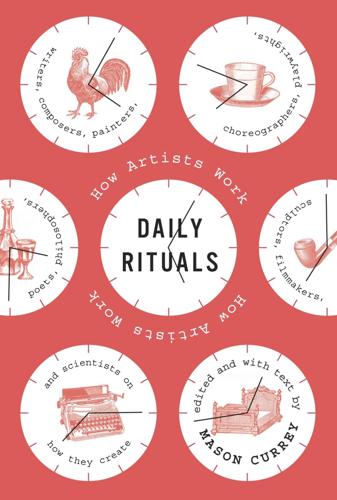
Daily Rituals: How Artists Work
by
Mason Currey
Published 22 Apr 2013
I have one free hour and then an hour’s walk. Then 2 hours’ practice, and then I retire with the chickens. Thus I have only about 4 hours a day for composition. Too little!” Vladimir Nabokov (1899–1977) The Russian-born novelist’s writing habits were famously peculiar. Beginning in 1950, he composed first drafts in pencil on ruled index cards, which he stored in long file boxes. Since, Nabokov claimed, he pictured an entire novel in complete form before he began writing it, this method allowed him to compose passages out of sequence, in whatever order he pleased; by shuffling the cards around, he could quickly rearrange paragraphs, chapters, and whole swaths of the book.
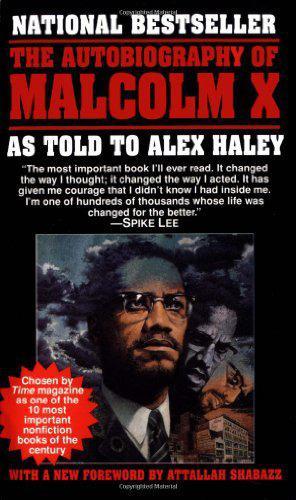
The autobiography of Malcolm X
by
Malcolm X; Alex Haley
Published 15 Aug 1999
I was thinking that I might have to advise the publisher that I simply couldn't seem to get through to my subject when the first note of hope occurred. I had noticed that while Malcolm X was talking, heoften simultaneously scribbled with his red-ink ball-point pen on any handy paper. Sometimes it was the margin of a newspaper he brought in, sometimes it was on index cards that he carried in the back of a small, red-backed appointment book. I began leaving two white paper napkins by him every time I served him more coffee, and the ruse worked when he sometimes scribbled on the napkins, which I retrieved when he left. Some examples are these: “Here lies a YM, killed by a BM, fighting for the WM, who killed all the RM.”
…
Malcolm X worked hard not to show it, but he was upset. “There is nothing more frightful than ignorance in action. Goethe,” he scribbled one day. He hinted about Cassius Clay a couple of times, and when I responded only with anecdotes about my interview with Clay, he finally asked what Clay had said of him. I dug out the index card on which the question was typed in advance and Clay's response was beneath in longhand. Malcolm X stared at the card, then out of the window, and he got up and walked around; one of the few times I ever heard his voice betray his hurt was when he said, “I felt like a blood big-brother to him.” He paused.

Space Odyssey: Stanley Kubrick, Arthur C. Clarke, and the Making of a Masterpiece
by
Michael Benson
Published 2 Apr 2018
Kept waiting one afternoon due to an alleged problem with a piece of recording equipment, Kubrick took in the mumbo-jumbo technical explanation offered by Derek Cracknell, digested it, waited a few more minutes, and then said, “The next time the sound mixer’s late back from lunch, just tell me.” Regularly stopping assistants such as Ivor Powell in the hallway, the director would pull out a set of index cards and ask for status updates as he shuffled rapidly through them, plowing through innumerable bullet points covering various aspects of the production. Powell quickly learned that if he didn’t know something, he should say so rather than risk bluffing. When Kubrick asked for a technical explanation, he homed in mercilessly on fuzzy thinking or partial accounting by people who should know better.
…
Depending on the nature of the backing artwork, those changing patterns could manifest kinetic striations (for example, Scientific American diagrams that had been enlarged and colorized), or morphing, organic undulations (colorful reproductions of op art paintings), or spidery, strobing, jagged-edged abstractions (electron microscope images of plant stems or insect mandibles). Some image categories were chosen by Kubrick himself, as attested by a surviving set of index cards dating to April 1967 and filled with his scribbled notes (“Doug—also use op-art and electron art”). Trumbull’s core innovation was to introduce that hurtling y-axis camera motion—an idea that Whitney hadn’t explored. It gave his slit scan footage its visceral sense of transport; the viewer was seemingly vaulted down scintillating corridors of cosmic space and time.
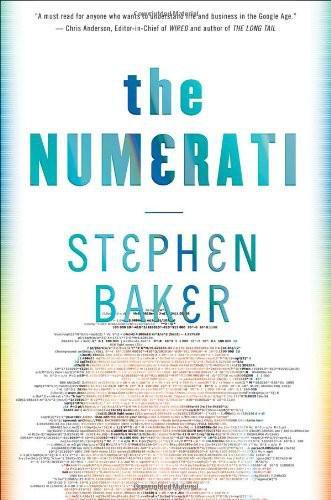
The Numerati
by
Stephen Baker
Published 11 Aug 2008
The only folks who can make sense of the data we create are crack mathematicians, computer scientists, and engineers. They know how to turn the bits of our lives into symbols. Why is this necessary? Imagine that you wanted to keep track of everything you ate for a year. If you're like I was in the fourth grade, you go to the stationery store and buy a fat stack of index cards. Then, at every meal you write the different foods on fresh cards. Meat loaf. Spinach. Tapioca pudding. Cheerios. After a few days, you have a growing pile of cards. The problem is, there's no way to count or analyze them. They're just a bunch of words. These are symbols too, of course, each one representing a thing or a concept.

Collider
by
Paul Halpern
Published 3 Aug 2009
Members of his cabinet, concerned about the fallout from the project’s asteroidlike impact on the budget, ardently tried to intercept it. With all of their strategic defenses, however, they could not shoot it down. At Reagan’s January 1987 announcement that he would support the SSC, he took out an index card and recited the credo of writer Jack London: I would rather be ashes than dust, I would rather my spark should burn out in a brilliant blaze, Than it should be stifled in dry rot. I would rather be a superb meteor, With every atom of me in magnificent glow, Than a sleepy and permanent planet.3 After reading the credo, Reagan mentioned that football player Ken Stabler, known for coming from behind for victory, was once asked to explain what it meant.
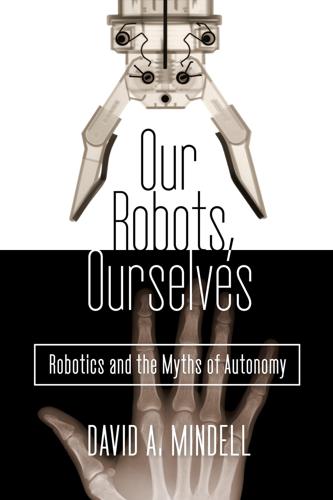
Our Robots, Ourselves: Robotics and the Myths of Autonomy
by
David A. Mindell
Published 12 Oct 2015
Big Safari developed the prototype into a fieldable system quickly and relatively cheaply, but it took years for Predator to be properly integrated into the air force’s acquisitions and logistics systems. The clunky flight manual for Predator was more than 1,500 pages long, and still left out critical information. The standard checklist, designed to sit on a pilot’s knee, comprised 198 pages of index cards. To fly the Predator, the air force needed a source of pilots. In 1995 the service reactivated a dormant group, the 11th Reconnaissance Squadron (which had operated drones in Vietnam and into the 1970s), to fly the Predator. It was led by a rated pilot—“rated” being the air force lingo for qualified aircrew, whether pilots or other specialties like navigators.

You'll Grow Out of It
by
Jessi Klein
Published 11 Jul 2016
I adored her because she was such a badass, and because she was a woman in comedy before there were enough women in comedy for anyone to bother counting them. I adored her because once you see A Piece of Work, the documentary about her life, it’s pretty much impossible not to love her. You see her filing her jokes on index cards in an enormous metal cabinet that spans a hallway of her hard-earned Upper East Side Versailles-style mansion and you think, I need to work harder, because this seventy-something lady is lapping me by the minute. I saw her perform live once, about eight years ago, when I was living in Los Angeles.
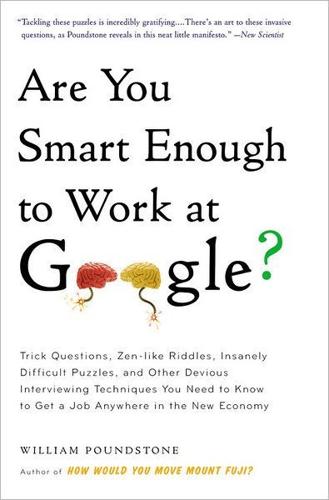
Are You Smart Enough to Work at Google?: Trick Questions, Zen-Like Riddles, Insanely Difficult Puzzles, and Other Devious Interviewing Techniques You ... Know to Get a Job Anywhere in the New Economy
by
William Poundstone
Published 4 Jan 2012
This is something like telling your grandmother how to build an iPad so clearly that she could make one. It can be done! It’s possible to explain a bare-bones implementation of RSA to a naive Bob who doesn’t know how to code. (I give the whole explanation in the “Answers” section.) A lean version of the instructions will fit on a three-by-five-inch index card, even a business card if you’ve got microscopic handwriting. The candidate who succeeds in drafting his RSA message to Bob will feel he’s knocked the ball out of the park. Not so fast. He’s just given the “Microsoft answer.” Eve or no Eve, Bob is sure to balk at following complicated instructions just for the mundane task of confirming a phone number.
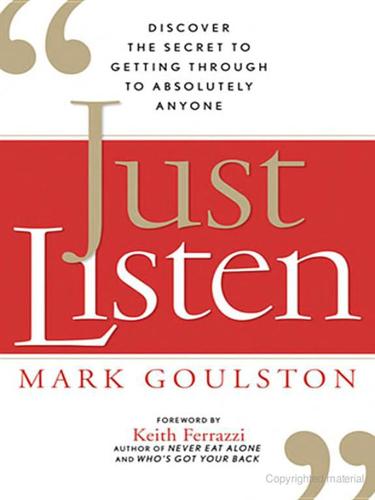
Just Listen: Discover the Secret to Getting Through to Absolutely Anyone
by
Mark Goulston M. D.
and
Keith Ferrazzi
Published 31 Aug 2009
If you don’t move quickly beyond these knee-jerk responses, you’ll set yourself up for future failure by convincing yourself either that (a) you’re an idiot who’ll keep screwing up or (b) the people around you are idiots who make you screw up and there’s nothing you can do about it. Instead of laying the groundwork for your next disaster, do something different the next time you make a mistake. Take out an index card, write down the following words, and fill in the blanks with your answers: This is a powerful approach because you’re not wallowing in self-blame or deflecting responsibility onto someone else—two traps that allow you to avoid looking honestly at what really happened and why. Instead, you’re reframing your experience in a way that leads to positive action.

Time Travel: A History
by
James Gleick
Published 26 Sep 2016
This far-future cosmic archeological perspective frames the nearer-future narrative, which we are meant to understand was written in the last days of papyr. The narrator himself seems to be a bewildered civilian navigating a paranoid military bureaucracy. We readers, knowing what we know about the sad fate in store for the written word, may smile grimly as clerks stamp index cards “classified,” documents tumble from mail chutes, envelopes shoot through pneumatic tubes, dog-eared folders vanish into metal safes, and paper tape snakes from computers. Of course, we recognize our own world, too. Rambling deeper and deeper into the labyrinth, the narrator stumbles upon a room full of books: “gray, crumbling” books on dusty, sagging shelves.
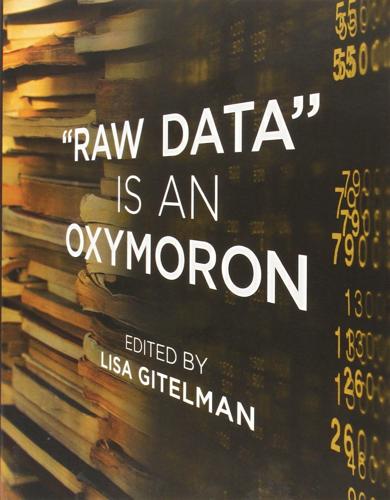
Raw Data Is an Oxymoron
by
Lisa Gitelman
Published 25 Jan 2013
Ihre Anlage und Führung, vol. 5 of Orga-Schriften, 2nd ed. (Berlin: Organisation Verlagsanstalt, 1922), 7f.: “A limp box is quickly worn out, it quickly becomes unsightly and then no longer allows the rapid and secure browsing which is the prime requirement for convenient card index management. . . . With index cards, which are often in daily use for years, the cheapest is always the best.” 18. See Deutsches Institut für Normung e.V. (DIN), Publikation und Dokumentation 2. Erschließung von Dokumenten, Informationsverarbeitung, Reprographie, Bibliotheksverwaltung, Normen, vol. 154 of DIN-Taschenbuch, 2nd ed.
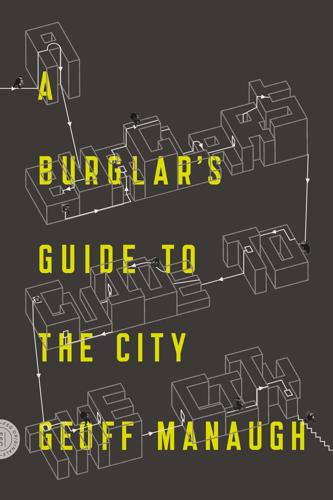
A Burglar's Guide to the City
by
Geoff Manaugh
Published 17 Mar 2015
In a short essay called “Every Move Will Be Recorded,” historian Grégoire Chamayou recounts a hypothetical system of urban surveillance devised by an eighteenth-century police officer named Jacques François Guillauté. In a book about police reform written for King Louis XV of France, Guillauté proposed thoroughly and rigorously updating the Parisian address system. This would require a behemoth piece of machinery that operated a bit like an oversize index-card file—or what Chamayou describes as a “huge archiving machine linked to a map in a central room”—and some arithmetical cartography. “Paris was to be divided into distinct districts,” Chamayou writes, “each receiving a letter, and each being subdivided into smaller sub-districts. In each sub-district each street had accordingly to receive a specific name.

Running the Dream: One Summer Living, Training, and Racing With a Team of World-Class Runners Half My Age
by
Matt Fitzgerald
Published 4 May 2020
And I’ll bet that same amount that there are plenty of you who’ve done this only to become frustrated because you’re not hitting the times in practice that some chart says you should be hitting if you want to run that particular time. Am I right?” Suddenly my mind flew back to last year’s bonfire. On that occasion, Steph asked each camper to write down three goals—a modest “C” goal, a more ambitious “B” goal, and an audacious “A” goal—on an index card and share them with the group. Unable to run at the time, I told my fellow campers that my “C” goal was to find a way to still race the Chicago Marathon in seven weeks. My “B” goal was, as I put it, “to run my fastest marathon since my fastest marathon,” which meant beating the time of 2:49:14 I’d run in Eugene in May.
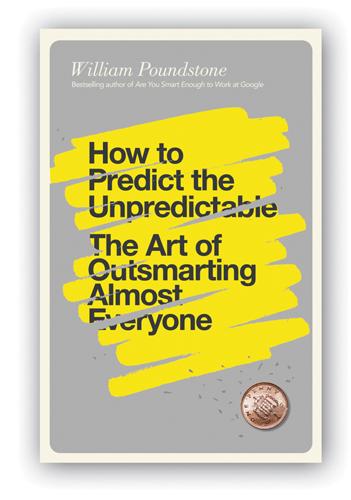
How to Predict the Unpredictable
by
William Poundstone
Ziemba’s group found that these numbers were also under-chosen: 1, 28, 34, 37, 45, 46, and 47. Here is a reasonable plan for achieving favorable bets in lotteries. You’ll be using up to eleven unpopular numbers, shown above. 1. First, select six numbers from this set at random. A low-tech way to do that is to write the numbers on index cards, shuffle them, and draw numbers. It should be clear by now that shuffling is preferred to a mental “random” pick. For Lotto, you’d use only the twelve numbers in the first two rows. Draw six numbers (without replacement) from the shuffled deck of twelve. For the main EuroMillions picks, you add fifty to the available numbers, drawing five.
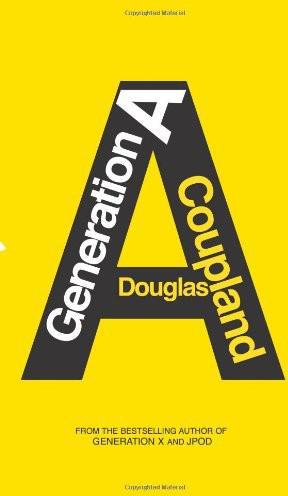
Generation A
by
Douglas Coupland
Published 2 Jan 2009
If you’re hot, people pay you shitloads to do TV and webcasts—he’d forgotten that. Also, one of my groupies, Rachel, had a capitalist edge and set up a killer commerce site selling Zack merchandise. Specifically, she would extract blood, mix it with vodka (a bit of alcohol helps, for some reason) and then quickly dip half an index card into the liquid. Once the cards dried, I autographed them. Two grand a pop; easiest money I ever made. Aside from my harem, another feature of those first golden weeks was visiting scientists who weren’t expecting to find a Playboy Mansion lifestyle deep within the armpit of Mahaska County. We’d be talking earnestly about my pre-sting diet, my pesticide usage or my ancestry, and a girl would come walking in wearing a thong and my old varsity jacket.

Never Panic Early: An Apollo 13 Astronaut's Journey
by
Fred Haise
and
Bill Moore
Published 4 Apr 2022
At the right time, for effect, I would drop a pencil and while retrieving it turn off the fuel valve on the deck for one engine. The engine would continue to run for a bit from the fuel in the lines and then suddenly sputter and quit. The student had to handle the shock of losing an engine and respond accordingly. During night-flying missions, I slid my window open just a bit and secretly held an index card in the gap. The flapping and shredding of the paper sounded like a structural failure. As a result, I never had a student flunk their final check ride. * * * — CHAPTER 4 BACK TO SCHOOL AND INTO NASA Before my discharge in August 1956, when I was twenty-two years old, I wrestled with what I should do next.

Principles of Web API Design: Delivering Value with APIs and Microservices
by
James Higginbotham
Published 20 Dec 2021
Dedicate the next columns to each of the three components, “When, I want to, so I can.” Finally, add a fifth column for notes. Since many spreadsheets support collaborative editing, multiple people can review, comment, and contribute as needed. ■ Documents – Documents are also useful, though they are a bit less structured. They are useful when teams wish to mimic an index card style for capturing job stories. Start with a heading that indicates the job story identifier, such as a number or brief description. Place each of the three components of a job story, “When, I want to, so I can”, on a separate line for readability. Leave room for capturing additional insights or details as a list of bulleted items.
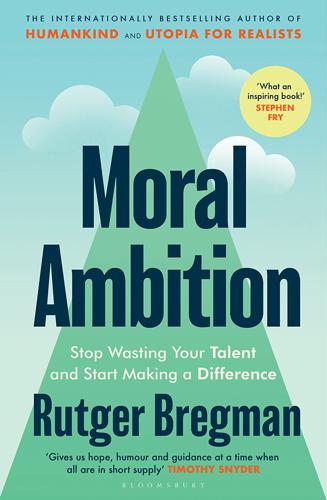
Moral Ambition: Stop Wasting Your Talent and Start Making a Difference
by
Bregman, Rutger
Published 9 Mar 2025
Rustin was described by a contemporary as ‘one of the five smartest men in America’.50 Despite that, he was never pulled on stage by his fellow activists, because he was gay. They feared his sexual orientation would somehow prove a liability to the movement, though insiders knew Rustin was integral to its success. Or take Rachelle Horowitz, the 24-year-old law student responsible for transportation to the march. She built a huge system of lists and index cards to keep track of all the travel. ‘You could call her at three o’clock in the morning, and say, “Rachelle, how many buses are coming from New York? How many trains coming out of the South? How many buses coming from Philadelphia? How many planes coming from California?” And she could tell you.’51 Or what about Patricia Worthy, the law student who’d worked so hard on the march, she slept through MLK’s historic speech?
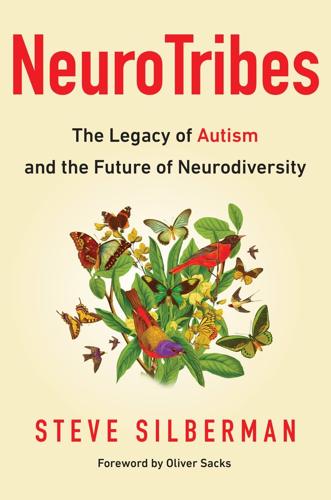
NeuroTribes: The Legacy of Autism and the Future of Neurodiversity
by
Steve Silberman
Published 24 Aug 2015
Meanwhile, the counterculture of the Bay Area was also evolving, though technologically it was still stuck in the precomputer era, depending on classified ads in underground newspapers, bulletin boards, telephone switchboards, and the post office for community organizing. It disturbed Felsenstein that valuable information was perpetually getting lost: if someone compiled a list of essential names or a box of helpful index cards and then went off to India to find a guru, the data he or she had accumulated tended to go astray. It occurred to him that computer networks could perform many of the functions of personal filing systems but much faster and better—and they didn’t forget anything. Felsenstein was also fascinated by social critic Ivan Illich’s notion of promoting the use of tools that would facilitate “conviviality”—one of many aspects of social interaction that Felsenstein had always found difficult and confusing.
…
Because it was widely believed that autistic children were incapable of learning—a misconception largely caused by their being warehoused in institutions for the “feebleminded,” where education was not on the agenda—Rimland assumed that his experimental treatment was responsible for Mark’s improvement: “We think it is mostly due to Deaner,” he informed Kanner. He even canceled plans to bring Mark to Minneapolis for an evaluation by Kanner, “since Mark’s taking of Deaner has resulted in such striking improvement that additional diagnosis of autism might be difficult.” — AFTER FIVE YEARS OF RESEARCH, Rimland had filled enough notebooks and index cards to open a medical library himself. He began compiling his observations into a monograph that he planned to call “Kanner’s Syndrome of Apparent Autism.” As the paper got longer and longer, he started mimeographing it and sending it out to experienced researchers in the field for comments and criticism.
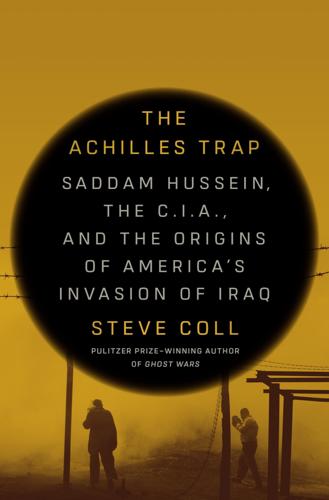
The Achilles Trap: Saddam Hussein, the C.I.A., and the Origins of America's Invasion of Iraq
by
Steve Coll
Published 27 Feb 2024
He would meet ranking members of Congress in both parties, appear on national news shows, and sit down privately with the defense secretary, the C.I.A. director, the secretary of state, the vice president, and Ronald Reagan himself. National Security Adviser Robert McFarlane prepared Reagan with a nuanced briefing memo and a handful of talking points printed on index cards that the president could consult during the meeting. McFarlane conveyed the optimism and illusions that had come to saturate American thinking about Saddam by late 1984. Iraq “has moved away from radical anti-Western domestic and foreign policies,” he wrote. “As the chief barrier to the spread of Iranian-supported Islamic fundamentalism, Iraq is promoting regional stability in the course of securing its own defense.”[27] On November 26, Reagan greeted Aziz in the Oval Office and posed smiling with him for photographs before ushering his guests to chairs and couches.
…
McFarlane, Secretary of State Shultz, and three other aides joined the president. Nizar Hamdoon was in the small Iraqi delegation. Aziz conveyed Saddam Hussein’s thanks to President Reagan “for agreeing to establish relations. This visit represents a very good beginning.” The only awkward moment came when Reagan appeared to deviate from his index cards to ask a question about the Israeli-Palestinian conflict. The United States had concluded that the bulk of the Palestinians were moderate in their outlook, Reagan said. “What motivates the radicals?” he asked. “Is it a power play?” “The Middle East is very complicated,” Aziz answered gingerly.
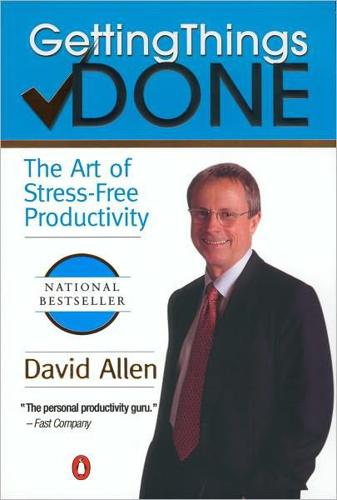
Getting Things Done: The Art of Stress-Free Productivity
by
David Allen
Published 31 Dec 2002
If these aren’t specifically next actions that can go directly on your action lists, you’ll still need to capture and organize them somewhere that makes sense. Of course the most critical tools for ensuring that nothing gets lost is your collection system—your in-basket, pad, and paper (or equivalents) at work and at home, and in a portable version (an index card) while you’re out and about. You need to hold all your ideas until you later decide what to do with them. Tools and Structures That Support Project Thinking No matter at what level project ideas show up, it’s great to have good tools always close at hand for capturing them as they occur.
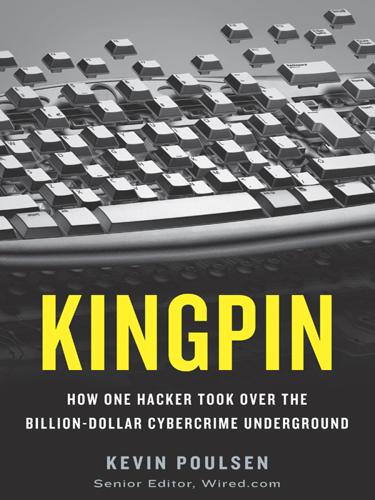
Kingpin: How One Hacker Took Over the Billion-Dollar Cybercrime Underground
by
Kevin Poulsen
Published 22 Feb 2011
Clara reluctantly admitted she lived there; her face fell when Watts told her it was his next stop. With Clara’s house keys and a new search warrant in hand, the detectives arrived at the Aragon home and began their search. In Chris’s home office, they found an unlocked safe in the closet. Inside were two plastic index-card cases crammed with counterfeit cards. There were more cards in the bedroom, bundled in rubber bands and stashed in the night table. An MSR206 rested on a shelf in the family room, and in the connecting garage, a box of purses sat on the floor next to the fitness machine. Aside from the dining room and bathrooms, the only space in the house clean of evidence was the boys’ comfortable bedroom.

The Wikipedia Revolution: How a Bunch of Nobodies Created the World's Greatest Encyclopedia
by
Andrew Lih
Published 5 Jul 2010
It was called WildCard then. I was blown away.”14 In HyperCard, Cunningham saw a tool that could help him with his knowledge-sharing project. “I wanted something kind of irregular, something that 48_The_Wikipedia_Revolution didn’t fit in rows and columns.” HyperCard used the idea of a “stack” of virtual index cards, in which the user could easily create new cards, create links between them, and place content on them. Putting a picture, sound, or video onto a card was as easy as inserting it and dragging it around on the screen. You could also put virtual buttons on cards that could respond to clicks and other commands.
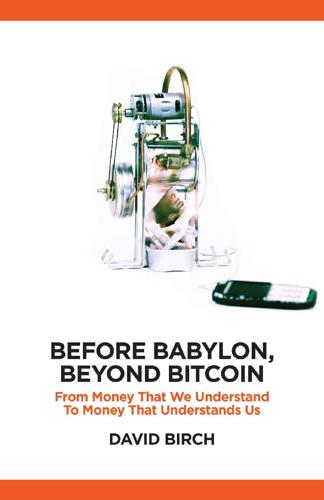
Before Babylon, Beyond Bitcoin: From Money That We Understand to Money That Understands Us (Perspectives)
by
David Birch
Published 14 Jun 2017
Yes, social media includes a variety of incredible new technologies and yes we can use them for all sorts of exciting new purposes, but it is what they are doing to identity that will be disruptive in business, commerce and government. Facebook, LinkedIn, Twitter, Tumblr and the rest are already demonstrating just how our identity paradigm is changing. Identity is becoming a concept built on networks, rather than index cards in a filing cabinet. We already use these social networking identities, albeit in primitive ways, to log in and browse around on the web. We could find ourselves using them for ‘serious’ business soon. Why shouldn’t I be able to log in to the Benefits Agency using my Facebook identity? This might be very convenient for me and it might also be very convenient for the Benefits Agency, but right now the Benefits Agency couldn’t really be sure it was me because it has no way of identifying the ‘legal me’ online, and neither has Facebook.

The Pleasure of Finding Things Out: The Best Short Works of Richard P. Feynman
by
Richard P. Feynman
and
Jeffrey Robbins
Published 1 Jan 1999
In this particular case, we worked out all the numerical steps that we were supposed to, that the machines were supposed to do, multiply this, and then do this, and subtract that. And then we worked out the program, but we didn’t have any machine to test it on. So what we did, I arranged, was a room with girls in it, each one had a Marchant. But she was the multiplier and she was the adder, and this one cubed, and so we had cards, index cards, and all she did was cube this number and send it to the next one. She was imitating the multiplier, the next one was imitating the adder; we went through our cycle, we got all the bugs out. Well, we did it that way. And it turned out that the speed at which we were able to do it–we’d never done mass production calculating and everybody who’d ever calculated before, every single person, did all the steps.
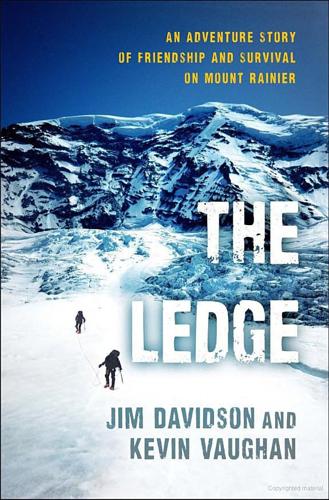
The Ledge: An Adventure Story of Friendship and Survival on Mount Rainier
by
Jim Davidson
and
Kevin Vaughan
Published 26 Jul 2011
WE PULL INTO the White River Ranger Station, just about eight miles northeast of Rainier’s summit. It’s Wednesday afternoon, June 17. Seeing the rustic building among the giant conifers triggers my memories of having been here nine Junes before. Mike and I check with the rangers about the conditions on the mountain, the weather forecast, and recent climbs. We fill out little index cards, listing our names and addresses, the route we plan to take, and emergency contact information for our families. I jot down Gloria’s name and our home number. My unmarried wanderlust friend lists his parents in Oklahoma. An hour later, in the White River Campground, we dump out all our gear, talking about what to take and what to leave—a blending of risk assessment and climbing confidence and gut instinct.

The Big Book of Backyard Cooking: 250 Favorite Recipes for Enjoying the Great Outdoors
by
Betty Rosbottom
Published 1 Mar 2004
Remove from the refrigerator 10 minutes before serving and sprinkle with remaining chives. DEEP SOUTH BARBECUE SAUCE This barbecue sauce is an old family recipe that I discovered by accident when sorting through a stack of old folders in the back of a filing cabinet. There on a tattered and yellowed index card I found directions handwritten by my late father-in-law (who grew up in western Louisiana, near the Texas border) for the celebrated barbecue sauce he slathered on his ribs. This sauce, which is slightly tart and has no smokiness, is different from most commercial ones, which are sweet with smokey undertones.
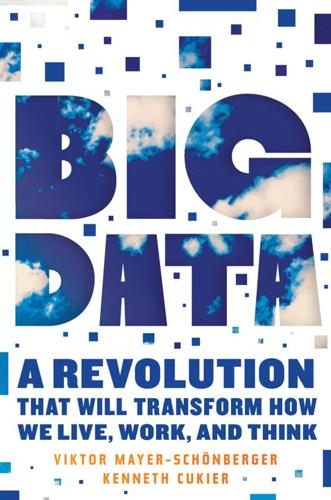
Big Data: A Revolution That Will Transform How We Live, Work, and Think
by
Viktor Mayer-Schonberger
and
Kenneth Cukier
Published 5 Mar 2013
Employing around a hundred thousand full-time staff, the Stasi watched from cars and streets. It opened letters and peeked into bank accounts, bugged apartments and wiretapped phone lines. And it induced lovers and couples, parents and children, to spy on each other, betraying the most basic trust humans have in each other. The resulting files—including at least 39 million index cards and 70 miles of documents—recorded and detailed the most intimate aspects of the lives of ordinary people. East Germany was one of the most comprehensive surveillance states ever seen. Twenty years after East Germany’s demise, more data is being collected and stored about each one of us than ever before.
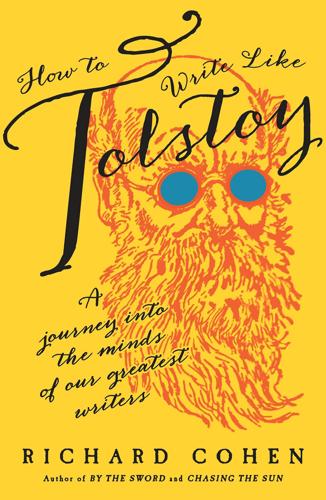
How to Write Like Tolstoy: A Journey Into the Minds of Our Greatest Writers
by
Richard Cohen
Published 16 May 2016
It was written as a rebuttal to “Fiction as One of the Fine Arts,” a lecture given by Sir Walter Besant, in which Besant argued that plot is more important than characterization. “the characters have been required”: E. M. Forster, Aspects of the Novel, pp. 126–27. How does one get the emotional and narrative arcs to mesh? Peter Dunne, in his book Emotional Structure: Creating the Story Beneath the Plot, recommends that you write the headline of a scene on an index card and jot a few notes about the action, being careful to hit only the high points. Turn the card over and write a headline for the emotional content of this scene and jot a few notes about how the emotions change. Turning the card over in this way forces you to consider what your character would really feel in this situation, and connects the inner and outer conflict in a simple yet powerful way.
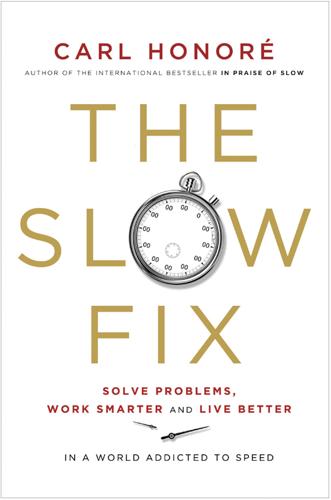
The Slow Fix: Solve Problems, Work Smarter, and Live Better in a World Addicted to Speed
by
Carl Honore
Published 29 Jan 2013
The gymnasium is a reminder that this is an Assembly convened for the people by the people. Posters warn pupils not to smoke, litter or rollerblade. A disco ball hangs from the rafters above, ready for the next dance night. Through the wall you can hear squeaking trainers and the yelps of children playing basketball. Jugs of water and stacks of yellow index cards for taking notes sit on tables around the gymnasium. My place is on Table K along with a software engineer, an unemployed labourer, a chartered auditor, a trainee architect, a music student, a marketing manager, an interior designer and Katrin Jakobsdottir, the young minister for Education, Science and Culture.

How to Be Champion: My Autobiography
by
Sarah Millican
Published 16 Apr 2018
It was a great environment to be myself in. My new self. And we did a show that night – God knows how. To a lovely, receptive crowd, I read my monologue aloud. The paper I held shook with the aftershock of my crazy heartbeat. That’s why if you see me do new material now, I read it from a notebook or index cards. Books and cardboard do not shake like paper does. Luckily I stopped there and didn’t end up with a plank of wood or a brick with my notes scrawled on. I read the monologue and parts of it were brutal, and parts, it turns out, were hilarious. I went into the ladies’ loos after my set and jumped up and down in a cubicle.
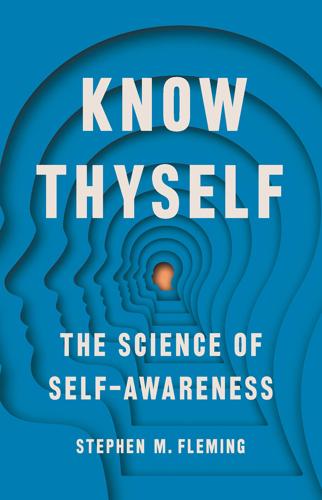
Know Thyself
by
Stephen M Fleming
Published 27 Apr 2021
My strategy was to sit in the carrels of my college library with a textbook open, writing out the strange vocabulary on sheets of paper: Purkinje, spiny stellate, pyramidal; circle of Willis, cerebellar vermis, extrastriate cortex. I would then go through with a colored highlighter, picking out words I didn’t know. In a final step, I would then (time and willpower permitting) transfer the highlighted items onto index cards, which I would carry around with me before the exam. This worked for me, most of the time. But looking back, I had only blind faith in this particular approach to exam preparation. Deciding how to learn in the first place is a crucial choice. If we don’t know how to make this decision, we might inadvertently end up holding ourselves back.

Waco Rising: David Koresh, the FBI, and the Birth of America's Modern Militias
by
Kevin Cook
Published 30 Jan 2023
Chief negotiator Noesner settled into the Bureau’s command post in a windowless airplane hangar on the technical-college campus, the site of a former air force base. He commandeered a private room where a supervisor—often Noesner himself—would sit near the man on the phone, listening in and passing him suggestions on index cards. Another member of the negotiating team made sure the tape recorder was working properly. A fourth agent took notes, keeping track of key points in their discussions with the Davidians—usually Steve Schneider and Koresh, who did most of the talking. At 4:48, as arranged, Koresh sent two more children out to the white sedan waiting by the water tower.
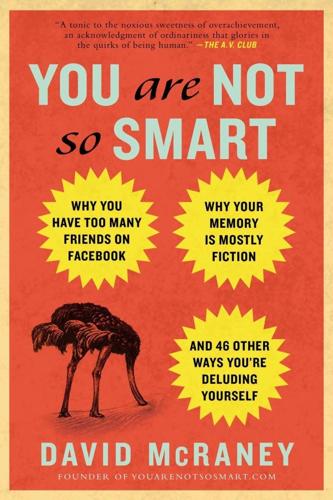
You Are Not So Smart
by
David McRaney
Published 20 Sep 2011
Gilovich, Medvec, and Savitsky figured the effect was so powerful it made you feel as if the imaginary spotlight could penetrate your gestures, words, and expressions and reveal your private world as well. They had Cornell students divide into groups. An audience would listen as individuals read questions from index cards and then answered them out loud. They either lied or told the truth based on what the card said to do on a label only they could see. Audience members were told they would get prizes based on how many liars they detected. Liars would say something like “I have met David Letterman.” They then had to guess how many people could tell they had lied, while the audience tried to figure out who out of the five were fibbing.
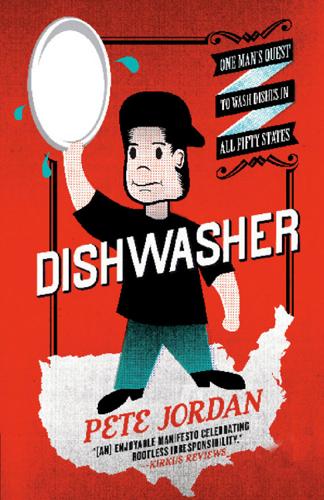
Dishwasher: One Man's Quest to Wash Dishes in All Fifty States (P.S.)
by
Pete Jordan
Published 1 May 2007
Then some girl whined to me, “The nonfat milk is warm.” A Three-Day Soaker 41 This was no way to land a dish job—a job where I could wear my own grubby clothes and avoid the gabby customers. At 7:05 a.m., I grabbed my shirt and escaped with a vow to never again wear company garb. A couple days later, I studied dozens of three-by-five-inch index cards on the campus ride board. One read: “Two guys driving up to Alaska looking for a third person to help share the cost of gas.” I called them and was told they were heading up to find work in the oil spill cleanup. It was April 1989. A few weeks before, the oil tanker Exxon Valdez had struck a reef and dumped at least ten million gallons of crude oil into the Prince William Sound.
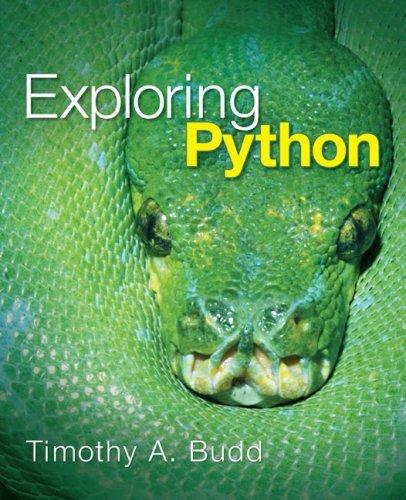
Exploring Python
by
Timothy Budd
Published 17 Feb 2009
Match each action (verb) with an agent (noun). That is, match each what with a who. A useful tool in this process is the CRC card. The letters in the name stand for Class, Responsibility, and Collaborators. We will explain only the first two of these. For each agent (noun) write the name of the agent on an index card. Below this write a short English language description of the responsibilities of this agent. A collection of scenarios and CRC cards is a good starting place for the process of designing a new application. Walk through the scenarios, and for each action (verb) make sure you have identified an agent (represented by a CRC card) responsible for performing the action.
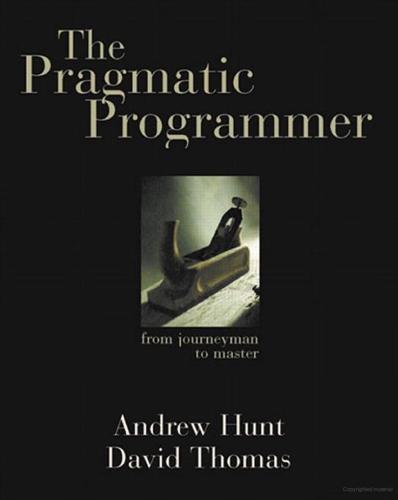
The Pragmatic Programmer
by
Andrew Hunt
and
Dave Thomas
Published 19 Oct 1999
Prototyping Architecture Many prototypes are constructed to model the entire system under consideration. As opposed to tracer bullets, none of the individual modules in the prototype system need to be particularly functional. In fact, you may not even need to code in order to prototype architecture—you can prototype on a whiteboard, with Post-it notes or index cards. What you are looking for is how the system hangs together as a whole, again deferring details. Here are some specific areas you may want to look for in the architectural prototype: Are the responsibilities of the major components well defined and appropriate? Are the collaborations between major components well defined?
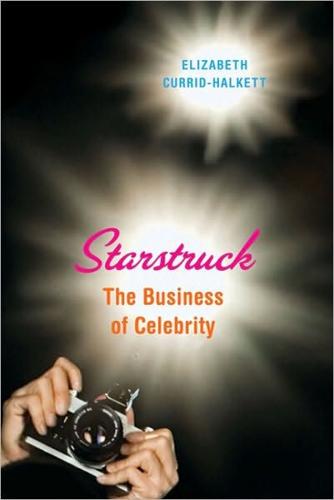
Starstruck: The Business of Celebrity
by
Currid
Published 9 Nov 2010
Eric turned to a fellow staffer, a young, pretty blond girl, and asked, “Do you have any of those media passes left? We’ll use those for backup.” With barely a beat between request and delivery, she proudly reached into her enormous Prada handbag and produced a handful of hot pink passes the size of index cards with Senator Clinton’s name emblazoned across the top and MEDIA in boldface on the bottom. Thanks to Eric and his friendly fellow staffers, there I was with backups to backups of access to see one of the most important public figures in the world. Senator Clinton’s speech was impassioned and exhilarating in the way that television can never quite capture.

Capitalism Without Capital: The Rise of the Intangible Economy
by
Jonathan Haskel
and
Stian Westlake
Published 7 Nov 2017
Other gyms contained machines like the Nautilus, the original fixed-weight machine, invented by Arthur Jones in the late 1960s. If you were to look around a gym of the time, you might be surprised to see many similarities to today’s gym. Granted, there might be fewer weight machines and they would be less advanced. Membership would be recorded on index cards rather than on a computer; perhaps the physical fittings would be more rough-and-ready, but otherwise many of the business’s visible assets would look the same: some workout rooms, some changing rooms, some equipment. But if we return to our 2017 gym and look more closely, we’ll notice a few differences.
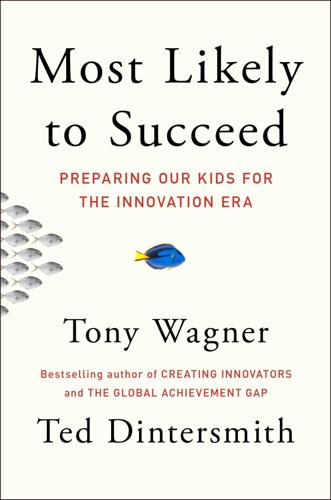
Most Likely to Succeed: Preparing Our Kids for the Innovation Era
by
Tony Wagner
and
Ted Dintersmith
Published 17 Aug 2015
As they turn to SMART Boards, iPads, online courses, and flipped classrooms, it would appear our schools are on the cutting edge. These advances prompt some pundits to predict that it’s just a matter of time before teachers are obsolete. But these “innovations” are all variants of ineffective passive education. Sure, it’s easier to tee up cards on an iPad than have a teacher or tiger parent write them out on index cards. It’s easier to have kids do multiple-choice quizzes online with instant feedback than to grade quizzes by hand. It’s easier to plop students down in front of an online lecture where their brain waves go dead than to have them attend a live lecture . . . where their brain waves go dead. But passive is still passive.

The Battery: How Portable Power Sparked a Technological Revolution
by
Henry Schlesinger
Published 16 Mar 2010
The engineers and scientists who dream up all the fancy spy gear spend a lot of time worrying about batteries. While surprising, it also made perfect sense. James Bond was never seen popping into a drugstore for a couple of AAs to power up his gadgets, but something had to power them. The espionage book was a lengthy project, but during my downtime I began making notes about batteries on small index cards. One slim stack of cards very quickly turned into two, then grew into four, and soon expanded into eight. The answer to each question seemed to prompt four more questions. Clearly there was more to batteries than we generally realize. A little more research revealed that there was almost nothing written about batteries for the nontechnical reader.
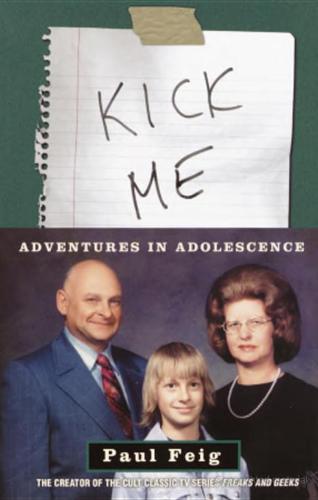
Kick Me: Adventures in Adolescence
by
Paul Feig
Published 23 Sep 2002
But now, sitting in his den with him, as he leafed through the pages and pages of nightclub jokes he had stored up over the past thirty years, I felt closer to him than I had ever felt in my life. Simply put, he and I were bonding over comedy. “Okay, here’s a good one to open with,” he said as he brought over a three-by-five index card out of the kitchen recipe box that made up his “joke file.” He told me the joke, an acceptably off-color anecdote about an elephant eating cabbages in a garden, and I listened, laughed, and then memorized every pause and inflection he put into his delivery. I knew I was learning from the master, or at least the only joke master I had access to, and I treated him with the proper amount of respect and deference.

The Real Doctor Will See You Shortly: A Physician's First Year
by
Matt McCarthy
Published 6 Apr 2015
I was deliriously sleep-deprived, but this had nothing to do with that. “I’m deeply sorry, but it has never been communicated to anyone that she’s suffering. And I can’t have a translator just following me around.” He clenched his teeth. “It was communicated to me. And there are phone translators in every room.” He scribbled down a phone number on an index card and handed it to me. “Use it.” I looked at the numbers and tried to wrap my head around what was happening. I took a deep breath. “Okay.” He closed his eyes and sighed. “That’s it. That’s all I have to say. I’ll give you one more chance to get this right.” Then what? I was too scared to ask. 28 Two days later I found myself sitting cross-legged in a group circle in Palisades, New York, at the intern retreat, where for twenty-four hours we were given a much-needed respite from hospital life.
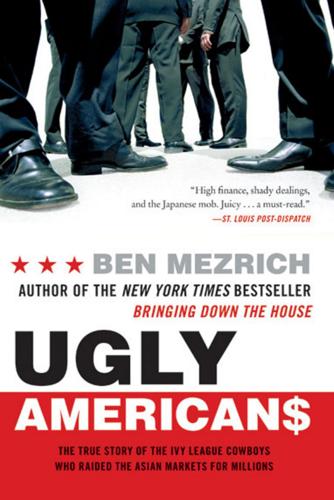
Ugly Americans: The True Story of the Ivy League Cowboys Who Raided the Asian Markets for Millions
by
Ben Mezrich
Published 3 May 2004
It seemed more the setting for an interrogation than an interview. From recent experience, Malcolm knew that these things tended to be a little bit of both. In the past week, he’d been to fourteen interviews, most of them taking place within four blocks of where he was sitting. His pockets were full of index cards with addresses and contact information. Investment banks, consulting firms, start-ups, insurance companies: he’d sent his résumé out to almost every open finance position listed in the Princeton alumni office and had been making the forty-five-minute New Jersey Transit trip from Mercer County nearly every morning since.
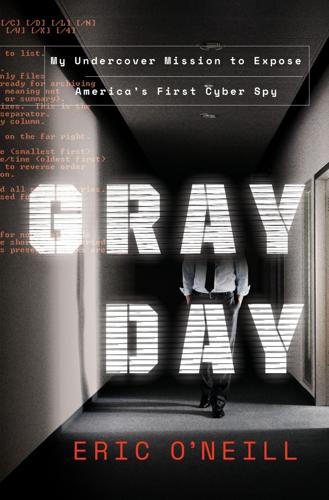
Gray Day: My Undercover Mission to Expose America's First Cyber Spy
by
Eric O'Neill
Published 1 Mar 2019
My life became a relentless series of Excel spreadsheets and long flights. Within a few months, I knew I’d fallen off my path. A year to the day after I’d started, I walked into my boss’s office and quit my consulting job. My Navy dreams had passed me by, but I could still serve my country. I filled out index cards and mailed them to every alphabet agency I could find in the phonebook. The FBI, NSA, Secret Service, and DEA all sent back thick applications that I fed into my old typewriter. (The CIA never responded. Their loss.) I decided to focus my efforts on the FBI and the DEA. In the early ’90s, you had to be at least twenty-five to become an FBI special agent, but my application had caught the attention of the SSG.
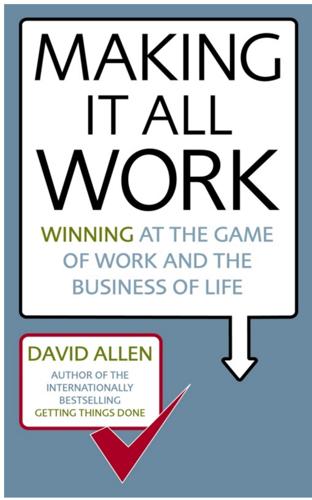
Making It All Work: Winning at the Game of Work and the Business of Life
by
David Allen
Published 30 Dec 2008
A simple, numbered list of our twenty-plus standards of best behavior works fine. On the individual level, a list of personal affirmations or a written personal “credo” would be ideal. How you organize the list may depend on how you want to be reminded of the contents—for years I maintained a set of 3 × 5-inch index cards, each with its own affirmation, held together by a rubber band. I could carry the batch with me and reaffirm the statements whenever I wanted to be inspired or had a moment to work on my own self-programming. Now I simply keep a list on my computer, synchronized to my PDA. Vision Where and in what form would it be wise to keep track of long-term success images and goals?

Digital Photography Hacks
by
Derrick Story
Published 15 Apr 2004
ISO 400 requires much less light for a good picture than ISO 100 requires. Take more than one picture of each object. Then, after you upload the photos to your computer, pick the shot that has the largest file size [Hack #47] . The bigger the file size, the sharper the picture will be. Use pink 3" 5" index cards. Pink cards reflect less light than white ones do. This will make them easier to read, because they will require about the same exposure as the objects you're photographing. Finally, remember to update your home inventory at least once a year to keep it current. Hack 81 Rental-Car Tips and Other Auto Hacks A camera phone can help you prove that you didn't put those dents in a rental car.
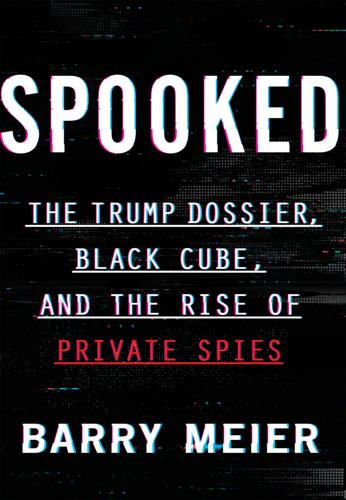
Spooked: The Trump Dossier, Black Cube, and the Rise of Private Spies
by
Barry Meier
Published 17 May 2021
He had also jury-rigged a miniature video camera that was now concealed behind his tie and he had audio recorders in his pockets. THE LUNCHEON WENT ON for about ninety minutes. John Scott-Railton and Michel Lambert both spoke in French and the supposed consultant, who said he had grown up in Morocco, described how his work regularly took him to Africa. He came across to Scott-Railton as bumbling. As he spoke, he took index cards from his jacket pocket and kept referring to them as though they contained prompts. He also pointed a pen toward Scott-Railton that the researcher suspected contained a recording device. Lambert probed for details about Citizen Lab, including where the group got its financial support and how it chose its targets.

Orange Sunshine: The Brotherhood of Eternal Love and Its Quest to Spread Peace, Love, and Acid to the World
by
Nicholas Schou
Published 16 Mar 2010
WHEN BOB ROMAINE joined the Laguna Beach Police Department in February 1971, the war on the town’s hippie culture that began with Neil Purcell’s high-profile bust of Timothy Leary in Dodge City had been raging for more than two years. A tough but jovial former marine and Korean War combat veteran, Romaine had been busting hippies in south Orange County with military zeal, building a detailed profile of each suspected drug dealer he arrested, copying down every name in their address books on four-by-five-index cards, stowing them away for future use. When Purcell heard about Romaine’s exploits, he persuaded Romaine to join him and Detective John Saporito in their crusade against the Brotherhood of Eternal Love. “He was a very aggressive, strong-willed field deputy,” Purcell says of Romaine. “If there was a robbery all points bulletin that went out, he was the guy who could spot the thief.
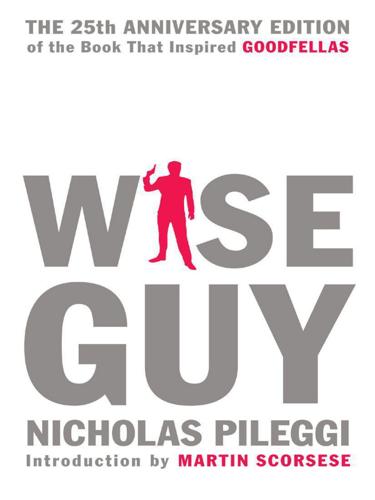
Wiseguy: The 25th Anniversary Edition
by
Nicholas Pileggi
A year after Henry Hill’s arrest I was approached by his attorney, who said that Hill was looking for someone to write his story. At that point I had been writing about organized-crime figures for most of my career as a journalist and had gotten bored with the egomaniacal ravings of illiterate hoods masquerading as benevolent Godfathers. In addition, I had never heard of Henry Hill. In my office are four boxes of index cards upon which I compulsively jot the names and various details of every major and minor organized-crime figure I run across in the press or court dockets. When I looked in it I discovered I had a card on Hill, dated from 1970 and misidentifying him as a member of the Joseph Bonanno crime family. And yet, from the mountain of data the feds had begun to compile about him since his arrest a year earlier and the importance they attached to him as a witness, it was clear that Henry Hill was at least worth meeting.

The Sixth Extinction: An Unnatural History
by
Elizabeth Kolbert
Published 11 Feb 2014
They started with a cluster of bats hanging at the widest part of Guano Hall. On closer inspection, Smith noticed that most animals in the cluster were already dead, their tiny feet hooked to the rock in rigor mortis. But he thought he saw some living bats among the corpses. He called out the number to von Oettingen, who’d brought along a pencil and some index cards. “Two lucis,” Smith said. “Two lucis,” von Oettingen repeated, writing the number down. Smith worked his way deeper into the cave. Von Oettingen called me over and gestured toward a crack in the rock face. Apparently at one point there had been dozens of bats hibernating inside it. Now there was just a layer of black muck studded with toothpick-sized bones.

The Warhol Economy
by
Elizabeth Currid-Halkett
Published 15 Jan 2020
Even though my sister was already impatient, we still had to wait for Ryan McGinness, who was attending the opening with us. Ryan eventually showed up, tall and lanky with his big boyish grin that made his tardiness positively charming. Jeffrey let us in, where we were met by a compilation of Basquiat’s work, from sketches on index cards to advertisements for the now closed Mudd Club to massive paintings, many of them complete with his signature symbol—the outline of a king’s crown. The crowd comprised an array of different characters, including graffiti artists like Lee Quinones and DAZE, who had been Basquiat’s contemporaries, major art dealers and collectors and media gatekeepers like Carlo McCormick, senior editor for Paper magazine, along with directors like Charlie Ahern, in addition to a multitude of actors, artists, and scenesters.
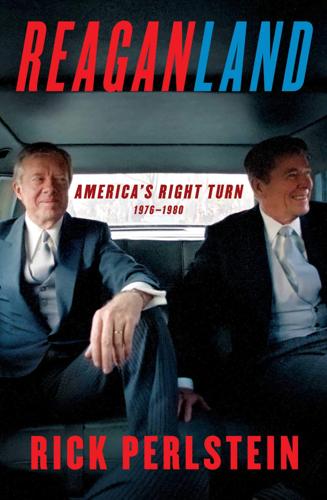
Reaganland: America's Right Turn 1976-1980
by
Rick Perlstein
Published 17 Aug 2020
It causes me to lose my eye contact.” On important occasions, his wife Nancy accompanied him—and “as she watches her husband give the speech she has heard countless times before,” a reporter marveled, “her look of rapt, wide-eyed adoration never falters.” The same jokes, set down on the same stack of four-by-six index cards he’d been compiling since the 1960s, some of them yellowed with age. (A doctor had pronounced Reagan “sound as a dollar.” He fainted straightaway. The reason the Little Old Lady Lived in a Shoe was because property taxes were so high. “The dollar’s shrunk, the dime hasn’t changed. You can still use it for a screwdriver.”
…
Then, finally, the same, glorious soaring perorations about America’s ineluctable rendezvous with destiny as God’s shining city on a hill, as the last best hope of man on earth—and then the same ecstatic, electric ovation, as if their Rotary club, Republican organization, or trade group had been touched by the hand of God. There might be a question and answer period with the audience; attendees scribbled questions on index cards to be posed by the master of ceremony. (Once—again, only once—Deaver tried to show the boss the cards in advance. Reagan frowned and threw them in the garbage: “Mike, you can’t hit a home run on a softball.”) And, usually, beforehand or afterward, a fifteen-to-twenty minute “press availability”—for which the preparations were also rigorously prescribed: the room cooled to fifty-five degrees an hour prior to start time to counteract the TV lights’ heat; backdrop light blue or beige (“ideal for TV cameras”), free from “fancy decorations that distract from the speaker”; a “reliable volunteer” posted outside with orders to admit “bona fide press,” banning “well-wishers and friends” who might cause undue distraction.
…
Reportedly, Reagan’s handlers had considered the idea, which Sears rejected because it would only call attention to his age, though another advisor said it was “something we might consider at a later date.” One problem was that Reagan was delivering pretty much the same speech he had since the Kennedy administration. When he started in once more to shuffling those now famous yellowed index cards, the traveling press would groan, brace themselves for the same dubious statistics, corny one-liners, and bromides they had heard so many times before—and dismiss what one called the “docile Chautauqua circuit lecture campaign of tried-and-true one-liners” as sheer laziness. But this was a key component of John Sears’s strategy: doing the exact same thing he always did was supposed to insinuate the conclusion that Reagan’s victory was so predetermined, he needn’t even campaign.
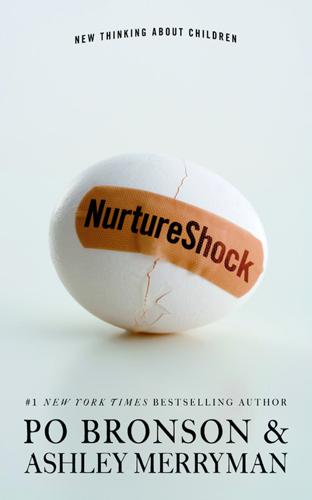
NurtureShock: New Thinking About Children
by
Po Bronson
and
Ashley Merryman
Published 2 Sep 2008
But once Morgan spent a year in the classroom of a hypercritical teacher, she could no longer unwind at night. Despite a reasonable bedtime of 9:30 p.m., she would lay awake in frustration until 11:30, sometimes midnight, clutching her leopard-fur pillow. On her fairy-dust purple bedroom walls were taped index cards, each a vocabulary word Morgan had trouble with. Unable to sleep, she turned back to her studies, determined not to let her grades suffer. Instead, she saw herself fall apart emotionally. During the day, she was crabby and prone to crying easily. Occasionally Morgan fell asleep in class. Morgan moved on from that teacher’s classroom the next year, but the lack of sleep persisted.

Top Secret America: The Rise of the New American Security State
by
Dana Priest
and
William M. Arkin
Published 5 Sep 2011
The mission description seemed too intentionally bland, Arkin thought, and a logistics agency was an odd place for a new policy office to be. The paper trail indicated that the $15 million had initially been deleted because the DPAO’s duties were seen as redundant with the work of other agencies, but then had been mysteriously restored. Arkin wrote “Defense Policy Analysis Office” at the top of an index card and put it in his Secret Units box, where it remained for nearly a year, until one day a source sent him two CD-ROMs’ worth of unclassified and “For Official Use Only”1 documents for a different project he was working on. There, in the thousands of documents from the newly created Northern Command, was a single page mentioning a civilian liaison officer from DPAO who had been assigned to another bit of alphabet soup—“N/NC-J39.”
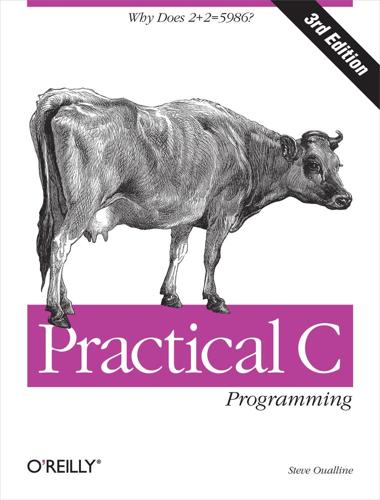
Practical C Programming, 3rd Edition
by
Steve Oualline
Published 15 Nov 2011
One way around this problem is to declare an array of pointers, and then sort the pointers: /* Pointer to the data */ struct mailing *list_ptrs[MAX_ENTRIES]; int current; /* current mailing list entry */ for (current = 0; current = number_of_entries; ++current) list_ptrs[current] = &list[current]; /* Sort list_ptrs by zip code */ Now, instead of having to move a 226-byte structure around, we are moving 4-byte pointers. Our sorting is much faster. Imagine that you had a warehouse full of big heavy boxes and you needed to locate any box quickly. You could put them in alphabetical order, but that would require a lot of moving. Instead, you assign each location a number, write down the name and number on index cards, and sort the cards by name. Command-Line Arguments The procedure main actually takes two arguments. They are called argc and argv[16]: main(int argc, char *argv[]) { (If you realize that the arguments are in alphabetical order, you can easily remember which one comes first.) The parameter argc is the number of arguments on the command line (including the program name).

The Virgin Way: Everything I Know About Leadership
by
Richard Branson
Published 8 Sep 2014
Addressing this very common affliction, Twain spoke about a rightly timed pause being every bit as critical and effective as choosing the right words. ‘The right word may be effective, but no word was ever as effective as a rightly timed pause.’ Before the teleprompter arrived on the scene, I always used to work from index cards. David Tait, who would usually write my speeches for Virgin Atlantic in the US, used to take delight in sticking in the odd strategically placed card that in big letters would just say ‘PAUSE’ to ensure I stopped long enough to let a point sink in with the audience – low-tech, for sure, but highly effective nevertheless.
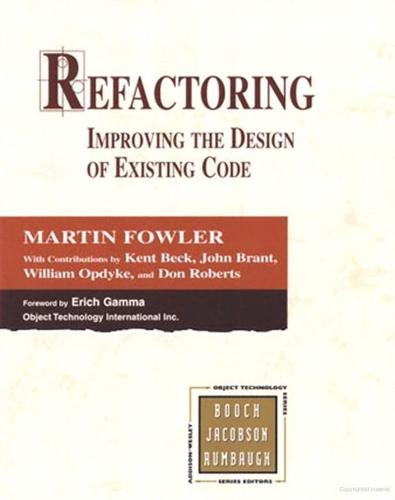
Refactoring: Improving the Design of Existing Code
by
Martin Fowler
,
Kent Beck
,
John Brant
,
William Opdyke
and
Don Roberts
Published 9 Mar 2012
When you refactor, you will inevitably discover cases in which the code doesn't work right. You'll be absolutely certain of it. Resist temptation. When you are refactoring, your goal is to leave the code computing exactly the same answers it was when you found it. Nothing more, nothing less. Keep a list (I always have an index card beside my computer) of things to change later—test cases to add or change, unrelated refactorings, documents to write, diagrams to draw. That way you won't lose those thoughts, but you won't let them mess up what you are doing now. 335 Bibliography References [Auer] Ken. Auer "Reusability through Self-Encapsulation."

Ultimate Sales Machine
by
Chet Holmes
Published 20 Jun 2007
I bought the issue of Premiere magazine that lists "the 100 most powerful people in Hollywood." Gee, there it was, my Dream 100 list, and someone had already done the work for me. Then I subscribed to Hollywood Creative Directory, which gives you all the contact information for anyone of substance in Hollywood. Next I had one of my assistants make up index cards for me with all their contact data, and I began my process. I called the CEOs of all the major studios, including Paramount, Disney, Warner Bros., Universal, and Sony Pictures. Using the techniques we'll go over in Chapter Nine, I was able to get seven out of 11 of the biggest CEOs in Hollywood on the telephone.

Busting Vegas: The MIT Whiz Kid Who Brought the Casinos to Their Knees
by
Ben Mezrich
Published 26 Sep 2005
Twelve square inches of white paper marred by poorly stenciled black ink, daggered to aging cork by a half-dozen brightly colored pushpins. Crumpled at the edges, creased and yellowed by too many fingers, nearly lost and overwhelmed by a sea of other makeshift advertisements bleeding out across the pockmarked board: yellow construction-paper parchments offering cheap guitar lessons; pink and blue index cards heralding last-minute apartment rentals; still-warm photocopied flyers scalping concert tickets; dot-matrix cuneiform listings spiriting intramural sports teams that nobody wanted to join. And there, in the middle of it all: MAKE MONEY OVER THE SUMMER. PLAY WITH THE MIT BLACKJACK TEAM. SATURDAY MORNING, APRIL 12.

Maphead: Charting the Wide, Weird World of Geography Wonks
by
Ken Jennings
Published 19 Sep 2011
There was one just fifty miles from his home, he saw, and an hour later, he was bouncing along a boulder-strewn logging trail in his less-than-rugged Saturn SL2. At the end of the trail, he continued on foot through a sunbaked clear-cut, on the hottest day of the summer. “I had very limited water with me,” he says. “It was horrible. A horrible trip.” But the thrill of finding the stash—an index-card box hidden behind a stump—made the whole ordeal worth it. “Walking down the hill, I thought, well, the first thing I need to do is prepare people, so they’re not as inexperienced and unprepared as I was.” Ulmer and the other early GPS scavenger hunters had already decided that “geocache” was a better name for their treasures than “GPS stash”—drug mules and potheads have stashes, but old-timey explorers and French-Canadian trappers have caches!
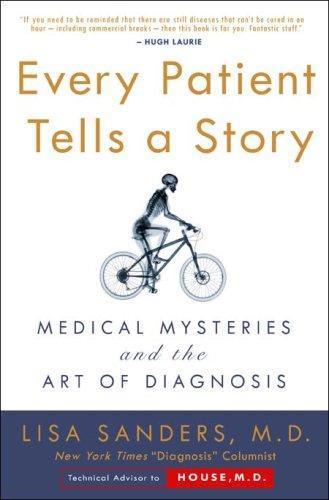
Every Patient Tells a Story
by
Lisa Sanders
Published 15 Jan 2009
But none of those seemed to fit. There were other, less likely possibilities. Rheumatoid arthritis can come on like this, as can lupus. Justin Thompson, the intern working with me that month, had admitted Freeman for her earlier hospitalization. When I asked him about her, he wearily flipped through a stack of index cards that he pulled from his pockets. “Right. We tapped her knee and cultured her up,” he said, meaning that they’d drawn fluid from her knee, which should offer some clues, and had sent off some of the fluid, as well as her blood and urine, to check for evidence of infection. “I thought it was gonorrhea,” the intern stated flatly.

The Trade of Queens
by
Charles Stross
Published 16 Mar 2010
Miriam, sick at heart, sat in one corner of the command post, listening—the fast, military hochsprache was hard to follow, and she was catching perhaps one word in three, but she could follow the general sense of the discussion—and watching as Riordan took reports and consulted with Olga and issued orders, as often as not by radio to outlying sites. The headquarters troops had set up a whole bunch of card indexes and a large corkboard, startlingly prosaic in a field headquarters in a fire-damaged farmhouse, and were keeping a written log of every decision Riordan handed down. A hanging list of index cards had gone up on one wall, each card bearing a name: Baron Henryk, Baron Oliver, Dowager Duchess Thorold-Hjorth. Miriam carefully avoided trying to read the handwritten annotations whenever a clerk updated one of them. Ringleaders they might be, and in some cases bitter enemies, but they were all people she knew, or had known, at court.
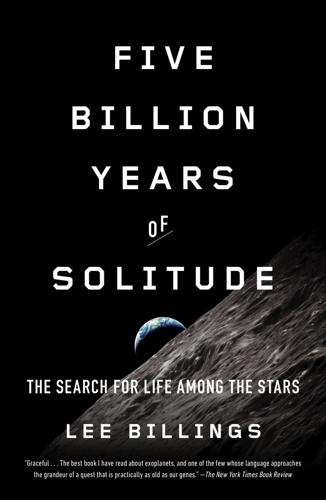
Five Billion Years of Solitude: The Search for Life Among the Stars
by
Lee Billings
Published 2 Oct 2013
The house was a spacious three-story affair with a cozy screened-in porch and large backyard ringed with trees. Inside, Max and Alex greeted us from the living-room floor, sprawled on their bellies, brown-haired and barefoot, assembling Legos and scribbling in coloring books. Their babysitter packed her things and bid us goodnight. Seager pulled a sheet of poster board and some index cards from a nearby pile of papers. It was a game she had made with her children; “ALIENOPOLY” was handwritten in block letters across the poster board, above an image of a smiling, slug-like alien with eyes on stalks. Instead of buying Boardwalk and Park Place, players could individually purchase the planets of the Gliese 581 system, or the worlds of Alpha Centauri.
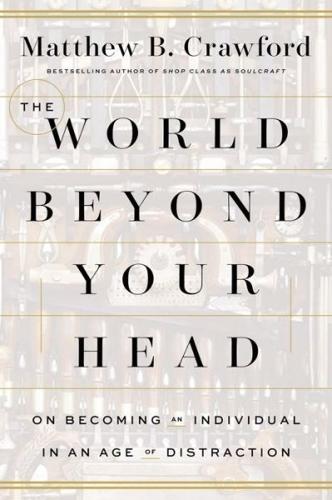
The World Beyond Your Head: On Becoming an Individual in an Age of Distraction
by
Matthew B. Crawford
Published 29 Mar 2015
We all know how easy it is for a life to go off track when we are left to our own devices, and that is why those of us with means do what we can to jig the way for our children. I worked for one of the test-prep companies for about six months, coaching students for the SAT and GRE tests. The intellectual content of what I was offering was pretty close to zero—a few tips that could be put on one side of an index card. But the classes and tutoring sessions provided an institutional setting that forced students to show up and do practice tests. The benefit was mostly one of providing a jig for hire that helped relieve students of the burden of self-regulation. It also helped to relieve parents of the burden of discipline.
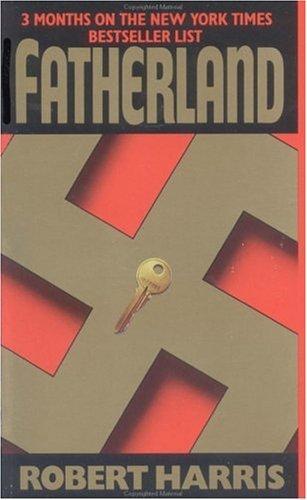
Fatherland
by
Robert Harris
Published 5 Jun 1993
By this means a record was kept of which Kripo investigator had requested which file, and at what time. His interest would be there for the Gestapo to see, a full eight hours after he had been ordered off the Buhler case. Further evidence of his lack of National Socialist discipline. It could not be helped. The registrar had pulled out a long wooden drawer of index cards and was marching her square-tipped fingers along the tops of them. "Stroop," she murmured. "Strunck. Struss. Stülpnagel. . ." March said, "You've gone past it." She grunted and pulled out a slip of pink paper. " 'Stuckart, Wilhelm.' " She looked at him. "There is a file. It's out." "Who has it?"

Stasiland: Stories From Behind the Berlin Wall
by
Anna Funder
Published 19 Sep 2011
‘Yes,’ he says, ‘I’ll be sixty-three shortly,’ as if to say, ‘and I’m out of here.’ He tells me that this work started in 1995, after the sacks of material had sat around in Berlin for five years. Fifteen thousand sacks were found at Normannenstrasse in January 1990. They contained shredded and hand-ripped files, index cards, photos and unwound tapes and film. Herr Raillard has arranged for me to take coffee with some of the workers. I am keen to meet the puzzle people. I ask him how many there are, and whether they are all women, as I have heard. ‘Oh no,’ he says, ‘but there are probably more women than men.’ He is cautious and exact, and asks his secretary to check the numbers.

A Bit of a Stretch: The Diaries of a Prisoner
by
Chris Atkins
Published 6 Feb 2020
I interrogate him about how he’s escaped K Wing, and he reveals that room moves are organised in an office on the Twos landing. I sprint downstairs and burst through the door as politely as I can. One of the more affable screws is peering up at a huge wooden board on the wall that is straight out of a 1950s hotel. There are hundreds of little slots representing all the cells on Trinity, and index cards showing where each prisoner lives. ‘Afternoon, guv. My cellmate’s moving to H Wing, are there any more spaces?’ The screw looks at me quizzically, with one eyebrow raised. ‘Are you on full-time work?’ I brandish my slip. ‘I’m about to start dry lining.’ ‘What’s dry lining?’ I’m not ready for this curveball.
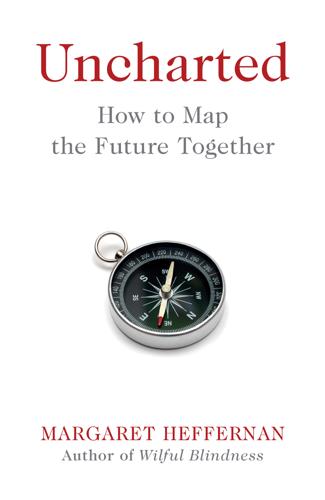
Uncharted: How to Map the Future
by
Margaret Heffernan
Published 20 Feb 2020
So he created indexes, aggregates of data he hoped would reveal overall patterns in economic activity. It was impossible to collect everything so he needed to be selective. But how could he identify representative data when he didn’t know what the whole contained? Whatever he chose, Fisher’s theory required mountains of data. He packed his home with employees collecting it on index cards. What his homemade indices revealed was volatility – in prices and in markets. So Fisher became obsessed by a search for stability – where did it come from, what influenced it and what sustained it? How could stable currencies be realised? The more data he collected, the more questions emerged, all needing answers before Fisher could hope to anticipate where the economy was going.

No Regrets, Coyote: A Novel
by
John Dufresne
Published 1 Jun 2014
Had a rehearsal to get to. Plus she’d have to take time off from work. So long, I said. Plus it would expose her to shame in the community. After a quick rehearsal spent on blocking and ironing out a few rough spots, I drove home. I saw that Red had put his name on my mailbox. He had written P. Soileau on an index card and affixed it with clear shipping tape. I asked him what the P stood for, and he told me Pableaux, and he spelled it for me. He pointed at the gray and glowing briquettes in the hibachi and asked me to join him for supper. Hot dogs. Fabulous, I said. I’ll bring the beer. And bring some diced onions if you have any, he said.

Tunnel 29
by
Helena Merriman
Published 24 Aug 2021
He might know things, however small, which could be useful. He stands up, walks to the back of the room. ‘Which military company was this?’ ‘Telecommunications,’ says Joachim. ‘News division.’ The American walks to a large metal unit at the back of the room and opens the top drawer. Inside, a neat row of index cards. He pulls one out. ‘Is the company chief in that unit still Senior Lieutenant Schmidt?’ Joachim is impressed; the CIA officer knows the names of all the senior army officials in the unit Joachim had been trained in, though their titles are out of date. ‘He’s now a major,’ says Joachim, feeling useful.
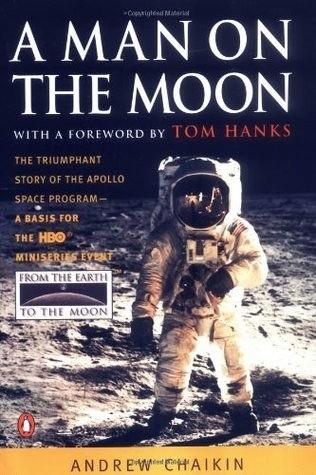
A Man on the Moon
by
Andrew Chaikin
Published 1 Jan 1994
Silver devised a rake to sift small rock samples from the soil; they fought that too. It was understandable; every pound in that lunar module was worth precious seconds of hover time; it was a matter of safety. But here again, Scott was the geologists’ best ally. He would reach into his shirt pocket and pull out an index card already brimming with “action items” and add one more, and he’d knit his brow with a kind of mock concern and say to Silver, “We’ll work it, Professor.” Most of all, Scott made time for the field trips. The training had intensified since the spring. By summer, the trips were no longer merely teaching exercises; in his drive to get ready, Scott pushed Silver to make them more like true simulations, and the men wore backpacks, cameras, and radios.
…
Nowr he and the other geologists were here, not as spectators to thrill vicariously to their students’ adventure, but to participate in the exploration itself. All morning, Gordon Swann and his Surface Geology Team had followed the unfolding moonwalk with the precision of battlefield commanders. One man, wearing headphones, took notes on index cards, jotting down every rock collected, ev en picture taken, every comment pertaining to geology. Another listened to the astronauts’ descriptions and made annotated sketches, which were then thrown onto the wall by an overhead projector. Another marked down the astronauts’ positions on a map that w as projected onto another wall.

Total Recall: My Unbelievably True Life Story
by
Arnold Schwarzenegger
and
Peter Petre
Published 30 Sep 2012
It wasn’t sufficient just to tell myself something like “My New Year’s resolution is to lose twenty pounds and learn better English and read a little bit more.” No. That was only a start. Now I had to make it very specific so that all those fine intentions were not just floating around. I would take out index cards and write that I was going to: • get twelve more units in college; • earn enough money to save $5,000; • work out five hours a day; • gain seven pounds of solid muscle weight; and • find an apartment building to buy and move into. It might seem like I was handcuffing myself by setting such specific goals, but it was actually just the opposite: I found it liberating.
…
She was much more of a girl-next-door type than a femme fatale: blonde, tan, and wholesome. She was studying to be an English teacher and obviously wasn’t just looking for a fun time. Her girlfriends who were dating guys in law school and med school thought I was strange, but Barbara didn’t care. She admired me for writing down goals on index cards. Barbara’s parents were wonderful to me. At Christmas, each family member had a gift for me—and later, when I brought Franco with me, gifts for him too. Barbara and I went to Hawaii, London, and New York together. When Barbara graduated in 1971 and came to LA to start work, Franco was getting ready to move out.
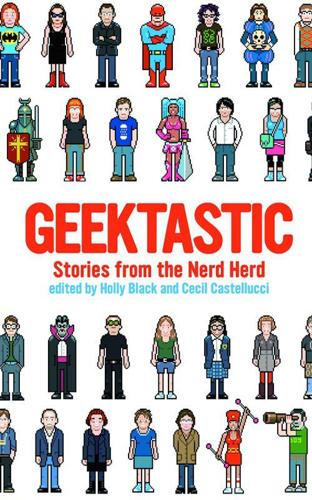
Geektastic: Stories From the Nerd Herd
by
Holly Black
and
Cecil Castellucci
Published 1 Aug 2009
Passion deep down that is not just a passion for attention or a passion for being able to decide who gets to sit at the drama table in the cafeteria or a passion for cast parties. Do you know I’ve memorized every play we’ve done since I got to this school? I’m not talking about the parts I wanted. I mean the whole play. Every day I make Adam give me a cue from one of the index cards I’ve made. I don’t even know what play it’s from before he says it, but he gives me a cue and I know the next line. I just know it. You can test me, if you want, when we’re done here. Some might say I shirked my responsibilities by putting Scotty on the board at what you might call the last minute.

The new village green: living light, living local, living large
by
Stephen Morris
Published 1 Sep 2007
It may take you several months to figure out a system that works for you and your family. I’ve been doing it for 13 years, and my system has evolved over time. It can be done, and it is the centerpiece of the program. STEP 3: WHERE IS IT ALL GOING?: In this step you take all those monthly figures that you’ve got written on scraps of paper, Post-it notes, or index cards, and tabulate them. Create your own monthly balance sheet with income and expenses in categories that work for your situation. You’ll want categories for housing, transportation, food, health care, other services, and material goods. You can make each category as general or as specific as you want.

Network Security Through Data Analysis: Building Situational Awareness
by
Michael S Collins
Published 23 Feb 2014
A whois query for oreilly.com $whois oreilly.com <boilerplate> Domain Name: OREILLY.COM Registrar: GODADDY.COM, LLC Whois Server: whois.godaddy.com Referral URL: http://registrar.godaddy.com Name Server: NSAUTHA.OREILLY.COM Name Server: NSAUTHB.OREILLY.COM Status: clientDeleteProhibited Status: clientRenewProhibited Status: clientTransferProhibited Status: clientUpdateProhibited Updated Date: 26-may-2012 Creation Date: 27-may-1997 Expiration Date: 26-may-2013 <more boilerplate> Registered through: GoDaddy.com, LLC (http://www.godaddy.com) Domain Name: OREILLY.COM Created on: 26-May-97 Expires on: 25-May-13 Last Updated on: 26-May-12 Registrant: O'Reilly Media, Inc. 1005 Gravenstein Highway North Sebastopol, California 95472 United States Administrative Contact: Contact, Admin nic-ac@oreilly.com O'Reilly Media, Inc. 1005 Gravenstein Highway North Sebastopol, California 95472 United States +1.7078277000 Fax -- +1.7078290104 Technical Contact: Contact, Tech nic-tc@oreilly.com O'Reilly Media, Inc. 1005 Gravenstein Highway North Sebastopol, California 95472 United States +1.7078277000 Fax -- +1.7078290104 Domain servers in listed order: NSAUTHA.OREILLY.COM NSAUTHB.OREILLY.COM You’ll note that a whois entry for a domain returns an enormous amount of boilerplate information. You will also find that the information returned has no particular fixed format—whois information is the electronic equivalent of 3×5 index cards. Depending on who owns the card and how they decide to administer it, you may get phone numbers and biographies, or nothing at all. A good way to get a feel for the differences in registration is to take a look at the registration files for different countries. There is no central whois database—instead, depending on the top-level domain, whois information may be maintained by any of a number of whois servers.

Time Travelers Never Die
by
Jack McDevitt
Published 10 Sep 2009
Could Shel provide a list of friends and associates? Did his father have any enemies that he knew of? Had anyone ever threatened him? Because the investigators could construct no easy explanation for the robes—there were six—they removed them. They also boxed everything that had been on top of the desk, including his index cards and the Rolodex. Even the pens went away. A day later, Thursday, the Inquirer got the story. EMINENT PHYSICIST MISSING, read the headline. There was no mention of the locked doors and windows. The FBI arrived Friday with a search warrant. “Strictly routine,” they told him. “But your father did some consultation work for the government, so naturally we’re interested.”

The Inevitable: Understanding the 12 Technological Forces That Will Shape Our Future
by
Kevin Kelly
Published 6 Jun 2016
But I got an aha! from his marvelous notion of hypertext. He was certain that every document in the world should be a footnote to some other document, and computers could make the links between them visible and permanent. This was a new idea at the time. But that was just the beginning. Scribbling on index cards, he sketched out complicated notions of transferring authorship back to creators and tracking payments as readers hopped along networks of documents, in what he called the “docuverse.” He spoke of “transclusion” and “intertwingularity” as he described the grand utopian benefits of his embedded structure.

Is the Internet Changing the Way You Think?: The Net's Impact on Our Minds and Future
by
John Brockman
Published 18 Jan 2011
I am also the only nonlocal. The computer helps me and corrects my spelling without being prompted. Example/Scene 2 Years ago, when I was an architecture student and wanted to know about, say, Guarino Guarini’s importance as an architect, I would go two flights down at Avery Library, get a few index cards, follow the numbered instructions on them, and find two or four or seven feet of books on a shelf dedicated to the subject. Then I would look at a few cross-referenced words on those cards, such as “Mannerist architecture,” go down another aisle in the same room, and identify another few feet of books.
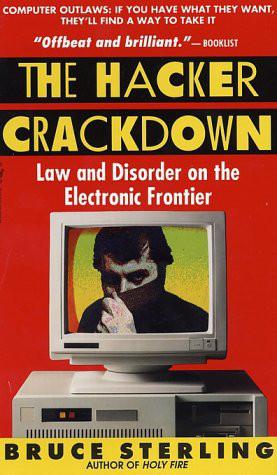
The Hacker Crackdown
by
Bruce Sterling
Published 15 Mar 1992
"And how can I reach you?" "Oh," Stanley says, in the same rapid voice, "you don't have to reach, uh, me. You can just call the cops. Go straight to the cops." He reaches into a pocket and pulls out a greasy piece of pasteboard. "See, here's my report on him." I look. The "report," the size of an index card, is labelled PRO-ACT: Phoenix Residents Opposing Active Crime Threat.... or is it Organized Against Crime Threat? In the darkening street it's hard to read. Some kind of vigilante group? Neighborhood watch? I feel very puzzled. "Are you a police officer, sir?" He smiles, seems very pleased by the question.
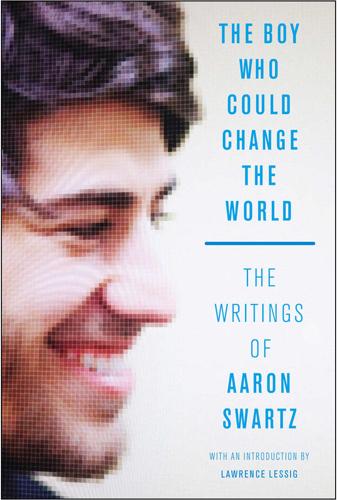
The Boy Who Could Change the World: The Writings of Aaron Swartz
by
Aaron Swartz
and
Lawrence Lessig
Published 5 Jan 2016
Heritage, for example, publishes an annual telephone directory featuring thousands of conservative experts and associated policy organizations (The Right Nation, 161). And if looking up somebody is too much work, Heritage maintains a 24-hour hotline for the media, providing quotes promoting conservative ideology on any subject. Heritage’s “information marketing” department makes packages of colored index cards with preprinted talking points for any conservative who plans to do an interview (The Right Nation, 167). And Heritage computers are stocked with the names of over 3,500 journalists, organized by specialty, who Heritage staffers personally call to make sure they have all the latest conservative misinformation.
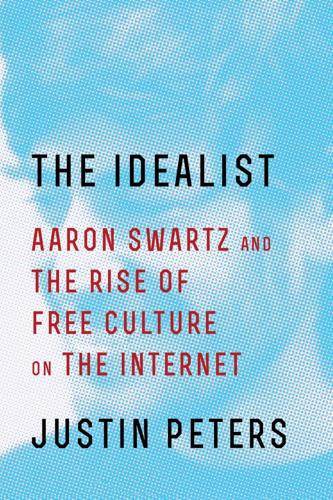
The Idealist: Aaron Swartz and the Rise of Free Culture on the Internet
by
Justin Peters
Published 11 Feb 2013
“Even the friends that helped me thot [sic] I was nuts, and that it would never work.”34 But even Hart’s enemies acknowledged his sincerity and dedication. Hart spent much of his adult life surviving on income he received from renting out rooms in his cluttered house to college students and forgoing traditional employment to spend his days and nights apostolizing e-books from his basement office. His walls were adorned with index cards onto which he had inked various aphorisms in block lettering with a thick black marker. Marcus Aurelius: A PERSON CAN NOT LEARN WHAT S/HE ALREADY KNOWS OR THINKS S/HE KNOWS. H. G. Wells: ULTIMATE COURAGE IS BRAVERY OF THE MIND. William Blake: I MUST INVENT MY OWN SYSTEM OR BE ENSLAVED BY OTHER MEN’S.35 For Michael Hart, the digitization of public-domain literature was a vocation in its original sense: a spiritual calling to a movement.
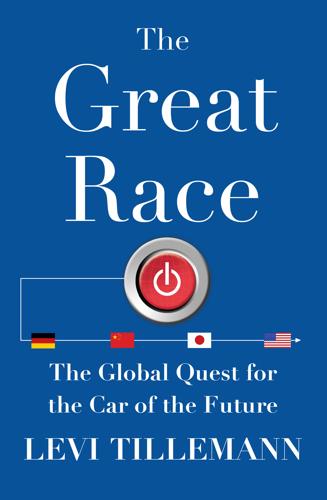
The Great Race: The Global Quest for the Car of the Future
by
Levi Tillemann
Published 20 Jan 2015
Someday in the not too distant future, Levandowski’s humble pizza delivery Prius may be seen as the Elijah to a new, better era of human mobility. Transformation We cannot yet predict but we can readily imagine some of the consequences of this transformation. The vehicle technologies developed and deployed over the coming two decades will fundamentally transform our lives. Not long ago, people kept large rolodexes of index cards alphabetically organized with the names and addresses of friends, family, and colleagues. People memorized phone numbers and communicated via pay phone. Today our smartphones can tap into troves of information that are, for practical purposes, limitless. This information is what lubricates the gears of the twenty-first-century economy.
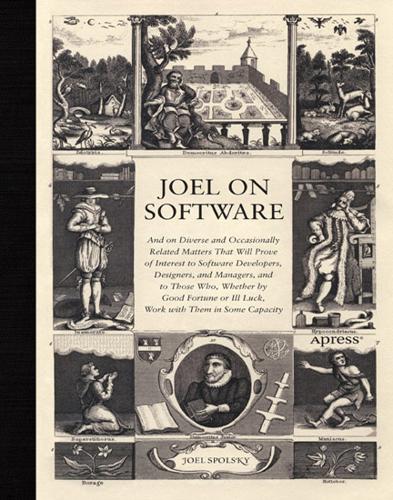
Joel on Software
by
Joel Spolsky
Published 1 Aug 2004
Paper prototypes are dramatically cheaper than anything you can do with software tools, and you can even do real usability tests; you just stand behind the sheet of paper with a good eraser, a pencil, and scissors. As your usability subject tells you what they do ("click there!") you can swap things around on the fly. Need to test a wizard? All you have to do is make a sheet of paper for each page of the wizard and prepare some index cards with possible error messages. For more about paper prototyping, read Carolyn Snyder's book4 on the subject. It is an essential reference for anyone designing user interfaces, and it's well written to boot. __________ 4. Carolyn Snyder, Paper Prototyping: The Fast and Easy Way to Design and Refine User Interfaces (Morgan Kaufmann, 2003).

Building Microservices
by
Sam Newman
Published 25 Dec 2014
Do you start seeing odd circular references? Do you see two services that are overly chatty, which might indicate they should be one thing? A great technique here is to adapt an approach more typically taught for the design of object-oriented systems: class-responsibility-collaboration (CRC) cards. With CRC cards, you write on one index card the name of the class, what its responsibilities are, and who it collaborates with. When working through a proposed design, for each service I list its responsibilities in terms of the capabilities it provides, with the collaborators specified in the diagram. As you work through more use cases, you start to get a sense as to whether all of this hangs together properly.
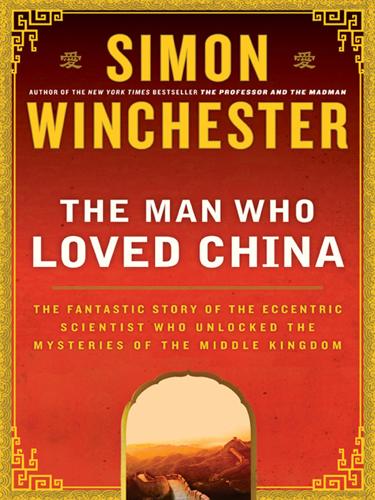
The Man Who Loved China: The Fantastic Story of the Eccentric Scientist Who Unlocked the Mysteries of the Middle Kingdom
by
Simon Winchester
Published 1 Jan 2008
Needham proceeded in a patient, methodical, ruthlessly efficient way. He was an extraordinarily well-organized man. He was, for a start, a copious and fanatically driven note taker and file maker. In the piles of boxes that remain today in his archives in Cambridge are dozens of green steel card indexes, most of them filled nearly to bursting, not with index cards bought by the quire from stationers, but with menu cards from teahouses that he was forever cutting up in a process he called “knitting”—snipping, slicing, and folding—which would drive mad those uninitiated few who might accompany him to the café for a cup of Typhoo and a toasted tea cake. He would sit there cutting, cutting, smoking, and cutting—and a day later the cards would all be stacked in their boxes, each one covered with details, in his almost perfect copperplate, about arcane creations from China’s distant past.

Enigma
by
Robert Harris
Published 15 Feb 2011
'I went back to the hut and wrote my note to you. Delivering that took the rest of my meal break. Then it was a matter of getting back into the Index Room whenever I could. We deep a daily log of all intercepts, made up from the blists. One file for each day.' Once again she rummaged in her bag and withdrew a small index-card with a list of dates and numbers. 'I wasn't sure where to start so I simply went right back to the beginning of the year and worked my way through. Nothing recorded till February the 6th. Only eleven interceptions altogether, four of which came on the final day.' 'Which was what?' 'March the 4th.

Choked: Life and Breath in the Age of Air Pollution
by
Beth Gardiner
Published 18 Apr 2019
Lyndon Johnson was the brass-knuckled majority leader then, though, and Muskie had crossed him, so he found himself assigned to the backwater of Public Works instead.5 He’d seen Maine’s rivers poisoned by paper mills, so he asked to set up an Air and Water Pollution subcommittee, and he became its chairman, staking out jurisdiction no one else had claimed. His panel convened hearings on the awful air, taking testimony in cities all over America. In those days, Tom Jorling tells me, pulling a stack of index cards from his shirt pocket to demonstrate, the main way to gauge pollution levels was to hold up a color-coded card and eyeball it to judge which panel best matched the sky. Muskie’s hearings set out to determine why previous attempts to address the problem, a series of clean air laws in the 1950s and ’60s, had failed.
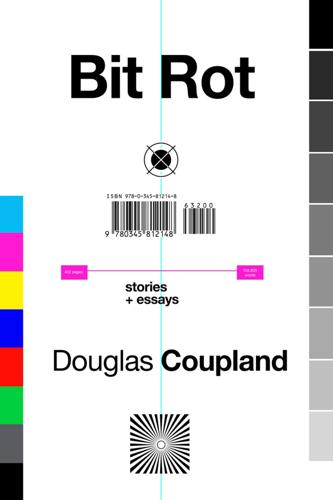
Bit Rot
by
Douglas Coupland
Published 4 Oct 2016
I mentioned that in 1967 we kindergartners had been asked to colour in the new Canadian flag. It’s not an easy flag to draw; the maple leaf in the middle is more of a corporate clip-art logo than it is, say, a US star or a Japanese rising sun. Three decades later, when I was on a book tour in the United States and Canada, I handed out index cards and red pens to people attending the event and asked them to draw the Canadian flag. I was thinking a lot about Canadian identity then and wanted to see how people in both Canada and the United States saw it in their minds. And…basically, everyone drew a pot leaf because nobody really knew how to draw a maple leaf.
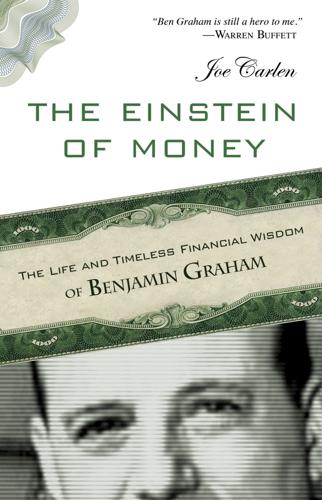
The Einstein of Money: The Life and Timeless Financial Wisdom of Benjamin Graham
by
Joe Carlen
Published 14 Apr 2012
Revealingly, this state of affairs was a great annoyance to Graham: “I was very impatient to start, my brothers having taken insufferable airs because they were in school and I was still a baby.”2 It seems that his drive and competitive spirit had already found expression at a fairly young age. In September 1900, Graham entered the first grade at New York City's Public School 157 on the corner of St. Nicholas Avenue and 123rd Street. Even though the subject matter consisted of learning letters and small words from index cards, Graham stood out immediately from his classmates. With respect to both aptitude and attitude, his teachers recognized that Graham was a student of uncommon caliber. At that time, elementary school classes were divided into two half-year sections, which commenced in September and January respectively.
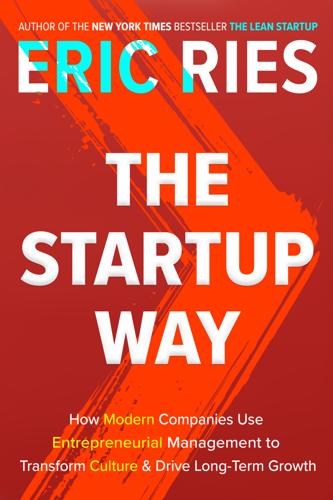
The Startup Way: Making Entrepreneurship a Fundamental Discipline of Every Enterprise
by
Eric Ries
Published 15 Mar 2017
I also couldn’t get them to set up an innovation accounting dashboard (see Chapter 9). I couldn’t even convince them to agree on their leap-of-faith assumptions. I said: “Let’s find a way to prove that you’re right. You’re planning on getting a lot of sales at the trade show. Let’s have everyone write down on a three-by-five index card how many sales they think the company will get.” I then asked the team to put their predictions into a sealed envelope, which we would revisit the week after the show. The only aspect of Lean Startup theory I could get them to buy into was to treat their upcoming launch as an experiment, with at least one hypothesis attached.
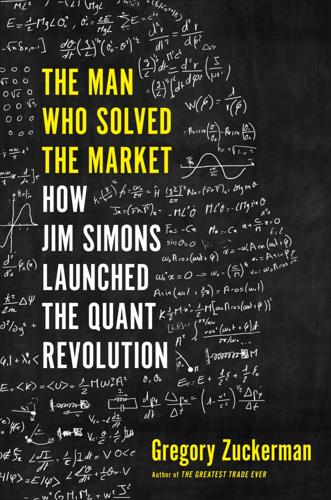
The Man Who Solved the Market: How Jim Simons Launched the Quant Revolution
by
Gregory Zuckerman
Published 5 Nov 2019
On a visit to Chicago, a staffer caught someone standing above the Eurodollar-futures pits watching Medallion’s trades. The spy would send hand signals whenever Medallion bought or sold, enabling a confederate to get in just before Simons’s fund took any actions, reducing Medallion’s profits. Others seemed to have index cards listing the times of day Medallion usually transacted. Some on the floor had even coined a nickname for Simons’s team: “the Sheiks,” a reflection of their prominence in some commodity markets. Renaissance adjusted its activity to make it more secretive and unpredictable, but it was one more indication the firm was outgrowing various financial markets.
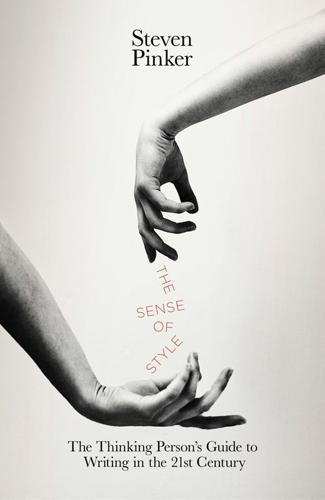
The Sense of Style: The Thinking Person's Guide to Writing in the 21st Century
by
Steven Pinker
Published 1 Jan 2014
Sometimes she may be lucky enough to begin with a firm grasp of the hierarchical organization of her material, but more often she will have an unruly swarm of ideas buzzing in her head and must get them to settle down into an orderly configuration. The time-honored solution is to create an outline, which is just a tree lying on its side, its branches marked by indentations, dashes, bullets, or Roman and Arabic numerals, rather than by forking line segments. One way to fashion an outline is to jot your ideas on a page or on index cards more or less at random and then look for ones that seem to belong together. If you reorder the items with the clusters of related ideas placed near one another, then arrange the clusters that seem to belong together in larger clusters, group those into still larger clusters, and so on, you’ll end up with a treelike outline.

Through the Glass Ceiling to the Stars: The Story of the First American Woman to Command a Space Mission
by
Eileen M. Collins
and
Jonathan H. Ward
Published 13 Sep 2021
They locked down the failed unit in Discovery’s payload bay to return to Earth for analysis. The final spacewalk of the mission began differently from our original plans. While analyzing the photos taken during the rendezvous pitcharound, engineers discovered two gap fillers protruding between tiles on Discovery’s belly. The gap fillers were about the size and thickness of an index card. Somehow, they had worked loose during launch. They stuck out far enough to create airflow disturbances that might cause an issue during reentry. They had to be removed. For the only time in space shuttle history, NASA was going to send an astronaut underneath a space shuttle during flight. I can’t say enough about the incredible work done by the backroom teams in Houston to prepare for this unusual spacewalk.
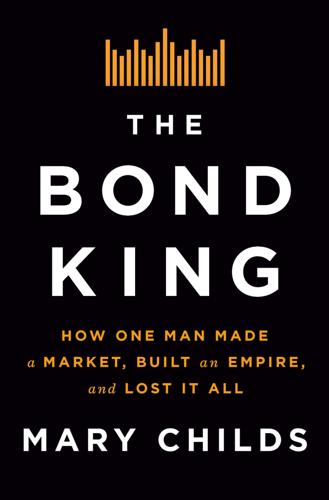
The Bond King: How One Man Made a Market, Built an Empire, and Lost It All
by
Mary Childs
Published 15 Mar 2022
I’m from Virginia, where you could plausibly show up on the doorstep of a person recently hurt or wronged with a casserole. And, as luck would have it, I had just visited a contact who’d given me a Tupperware container full of homemade seven-layer brownies—her grandmother’s recipe, even, written out on an index card in a pinched cursive just like my grandma’s. I decided that doorstepping with baked goods in hand felt adjacent to acceptable. People do that! So, disgusted and ashamed but armed with the cousin of an excuse, I drove up the steep incline of the Pacific Coast Highway, past a beach with the ocean’s crashing waves, toward the staggering cliffs onto which Bill Gross’s house was said to cling.
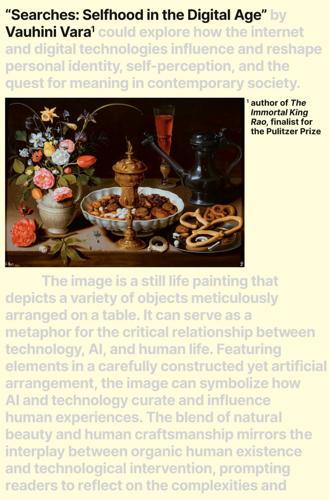
Searches: Selfhood in the Digital Age
by
Vauhini Vara
Published 8 Apr 2025
It was in this context that when the modem’s shrieking gave way to silence, and Lily introduced me to my first America Online chat room, in which strangers from all over the world could meet other strangers, each human being manifesting on-screen only as their chosen screen name, everyone’s messages jostling democratically against everyone else’s in the same index card–sized window, I found myself utterly enchanted. This was, I thought, the most exciting invention I had seen in my life. This period had a name: the Eternal September. In the formative years of the internet, in the 1980s and early 1990s, old-school internet users who hung out on message boards would get irritated every September when freshmen showed up at universities, received their campus-based internet accounts for the first time, and flooded the message boards.
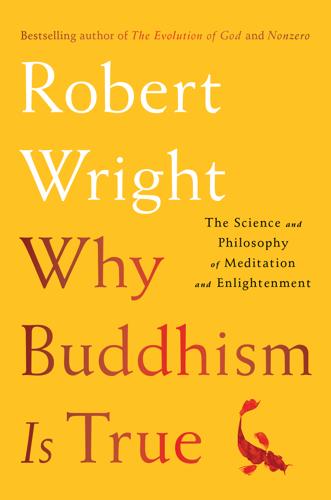
Why Buddhism is True
by
Robert Wright
I remember reaching to open an aged screen door and suddenly feeling as if I were watching a movie—one of those scenes where an ultra-close-up shot of something ordinary signals something momentous to come. Of course, nothing momentous came, unless you count the next dramatic visual experience, which tended to come soon. Once, on that first retreat, I was in my dorm room, jotting observations on index cards, when I looked up at the drawn window shade and recorded this: “While writing this card, get dazed by beauty of mottled pattern—sun hitting it through trees and screen. Feels like a narcotic.” Speaking of pharmaceuticals: if I’m going to sing the praises of meditation retreats, I’m obliged to mention possible side effects.
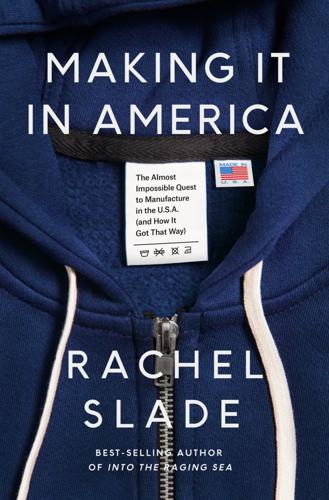
Making It in America: The Almost Impossible Quest to Manufacture in the U.S.A. (And How It Got That Way)
by
Rachel Slade
Published 9 Jan 2024
It was so cold in the attached barn where they cut fabric that first year, she says, that Ben had to hold a hair dryer to thaw the oil in the cutting machine while she worked. They made eighty capes. Then it was time to sell. Dory soon discovered that Maine Maid’s wholesale customer list, written on index cards, kept in a folder, was completely outdated. She would have to rebuild it from scratch. She traveled to boutique shows, selling to small retail buyers, and within a year and a half had enough work that she could hire more neighborhood women to come over to the house and learn the craft. Dory ran her first print ads—tiny spots that simply read: “Wool capes made in Maine”—in the New Yorker and Yankee magazines.

This Is Only a Test: How Washington D.C. Prepared for Nuclear War
by
David F. Krugler
Published 2 Jan 2006
For example, the Coast and Geodetic Survey (within the Department of Commerce) was essential because it provided charts used by the Navy and the Air Force. Likewise, during wartime the military expected to use the mapping capability of the Geological Survey (within the Department of the Interior). The Civil Service Commission’s investigative unit, which had compiled a file of 5.5 million security index cards and 2.5 million “subversive activity information cards” by 1955, was also considered wartime essential. Even the Housing and Home Finance Agency was essential because of its $2.5 billion mortgage portfolio (circa 1955). Rather than list all known wartime essential executive agencies, I refer to them individually as needed.
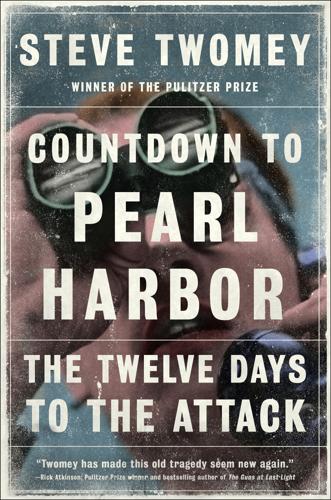
Countdown to Pearl Harbor: The Twelve Days to the Attack
by
Steve Twomey
Published 1 Nov 2016
They were especially eager to know the travels of American warships, just as American intelligence labored to know theirs. On a wall at Main Navy, a large map of the Pacific had been divided into sectors, each named, and stickpins tracked the locations of the Imperial Fleet as best they could be discerned through radio analysis. Index cards recorded the history of each ship’s movements. Well before being told to use the grid, for example, the Honolulu consulate had reported to Tokyo on February 21 that “the capital ships and others departed from Pearl Harbor on the 13th and returned on the 19th.” In June, the consulate noted, “two English converted cruisers entered Pearl Harbor.”

Leaving Orbit: Notes From the Last Days of American Spaceflight
by
Margaret Lazarus Dean
Published 18 May 2015
It touches down, its tile-covered flank flashing by me like a shark flashing by the window of an aquarium. Atlantis has released its drogue chute and is slowing—still moving fast, but slowing, slowing. Slowing, slowing. Stops. “Mission complete, Houston.” This is the voice of the commander, Chris Ferguson. He speaks carefully, a little self-consciously, like he’s reading off index cards prepared in advance. His language is slightly off here; usually the commander says “Wheel stop,” not “Mission complete.” “After serving the world for over thirty years, the space shuttle has earned its place in history. It’s come to a final stop.” “We copy your wheels stopped, and we’ll take this opportunity to congratulate you, Atlantis, as well as the thousands of passionate individuals across this great, space-faring nation who truly empower this incredible spacecraft, which for three decades has inspired millions around the globe,” replies another voice (capcom Butch Wilmore).

Together
by
Vivek H. Murthy, M.D.
Published 5 Mar 2020
For them, this was just another day at a busy urban hospital, but for me, it was a day I’d remember for the rest of my life. My head was stuffed full of medical facts and trivia that I’d gathered from medical school. My pockets were overflowing with tools, including a stethoscope, ophthalmoscope, tuning fork, reflex hammer, Pocket Medicine handbook, three black ballpoint pens, blank index cards for recording patient details, a list of phone numbers for key hospital services, and laminated cards filled with algorithms for everything from cardiac resuscitation to the treatment of diabetic ketoacidosis. Yet none of those cards and manuals mentioned the most common ailment I was about to encounter among my patients.

Checkpoint Charlie
by
Iain MacGregor
Published 5 Nov 2019
I was quite a long way from Kennedy… but there, in the distance, was this slim young man on whose shoulders the future of the Western world rested—the future of the world rested.” Kennedy had been practicing a specific line he hoped to use depending on how his words were received, enlisting the help of RIAS head Robert Lochner, who himself had witnessed the Wall being erected in August 1961. Now, swept along by the crowd before him and glancing at his index card where he had scribbled the correct phonetic pronunciation he desired, the president uttered his famous words: All free men, wherever they may live, are citizens of Berlin, and therefore, as a free man, I take pride in the words, “Ich bin ein Berliner.” The explosion of noise was deafening as sections of the crowd rushed toward the stage.

Heaven Is a Place on Earth: Searching for an American Utopia
by
Adrian Shirk
Published 15 Mar 2022
And then, I’m not sure if I hallucinated this or not, she smiled, gave a little tender laugh looking down at me, and touched the back of her index finger to my cheek, like she was my mother. Our new friend Pareesa arranged for us to meet her best friends—Alyssa and Zach—at a bar, and halfway into the night she said, “OK, the reason I brought you all here tonight is so we can talk about utopia!” She gave us index cards to sketch our ideas on. Within one week, the five of us were all hanging out regularly, having dinners, going to plays, dancing at an Iranian New Year’s party, having multiple weekend-long hangouts at our place in Woodlawn. On Easter Sunday, Alyssa, a long-lapsed Catholic, corralled us to a four-hour mass at a cathedral in the West Village, during which I lit my hair on fire with a vigil candle.

The Next Great Migration: The Beauty and Terror of Life on the Move
by
Sonia Shah
He shot photographs of his research subjects, clothed, and then when Osborn demanded that he needed them to be posed naked for his exhibit, unclothed. Race mixing “from the standpoint of the Whites or Chinese,” he wrote confidently in private correspondence, “is a failure of course.” But to figure it out for sure, he’d need more time to sift through the mountains of data, scribbled on index cards, overwhelming in volume, and yet stubbornly cryptic. While Sullivan couldn’t attend the conference, he’d sent photographs, face casts, and charts, which curators assembled into a display on the “race problem in Hawaii,” along with statistics and photographs contrasting “pure” Hawaiians, Chinese, Japanese, and Portuguese people with the “mixtures” they’d sired.
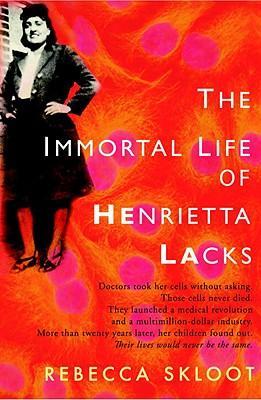
The Immortal Life of Henrietta Lacks
by
Rebecca Skloot
Published 2 Feb 2010
When we got outside, Cliff shook his head and picked up fragments of a broken sign. One piece said WE LOVE, the other said MOM. Some of the family tombstones were homemade from concrete; a few were store-bought and marble. “Them’s the folks with some money,” Cliff said, pointing to a marble one. Many graves were marked with index-card-sized metal plates on sticks with names and dates; the rest were unmarked. “Used to be we’d mark them graves with a rock so we could find em,” Cliff told me. “But the cemetery got cleaned out one time with a bulldozer, so that pretty much cleared those rocks on away.” There were so many people buried in the Lacks cemetery now, he said, they’d run out of room decades ago and started piling graves on top of each other.
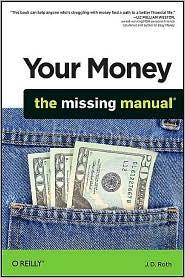
Your Money: The Missing Manual
by
J.D. Roth
Published 18 Mar 2010
You can use this same technique to track goals in your favorite text editor or spreadsheet program (including Google Docs; see the previous section). Other people like visual reminders of their progress. You can draw a debt thermometer and stick it to the fridge, or write your annual savings goal on an index card and tape it to the bathroom mirror. Or create a chart with 360 checkboxes—one for every mortgage payment—and check off the boxes one by one as you make payments. There are many ways to track the progress toward your financial goals, and no one method is right for everyone. Go with whatever works for you.

The Unwritten Rules of Social Relationships: Decoding Social Mysteries Through the Unique Perspectives of Autism
by
Temple Grandin
and
Sean Barron
Published 30 Sep 2012
What is interesting to note is that for children, adolescents and adults with ASD who have a stronger degree of emotional-relating ability, their intellectual abilities can be so clouded by the emotional chaos that even some of the simpler social interactions—like asking for help—need to be formally taught, and constantly reinforced. Sean continues on: I got my first paying job when, at age nineteen, I walked into the Los Angeles Valley College placement office and scanned the three-inch-by-five-inch index cards listing various job openings available in the San Fernando Valley. On a whim, I took the first one I saw, which described an opening for a teacher’s assistant at a private preschool in nearby Northridge. I talked to Frank, the director, a young, soft-spoken man. “Are you currently taking any child development courses?”

The Great Halifax Explosion: A World War I Story of Treachery, Tragedy, and Extraordinary Heroism
by
John U. Bacon
Published 7 Nov 2017
By 11:00 a.m., Simmonds had equipped a hundred men with shovels, axes, saws, and ladders from his store, and sent them by boat with orders to clear a passage through the rubble on Barrington Street, a major artery. Supervising this work, Colonel Simmonds recognized another need that wouldn’t have occurred to him if he hadn’t been on the scene. He sent a messenger back to his company to get all the three-by-five index cards they had to record where each article or corpse had been found and tie the label to the object or the body itself. They tagged the corpses and piled them on the side of the road three high until they could figure out where to move them. But due to Halifax’s lack of preparation, civic institutions were immediately overwhelmed by the tasks in front of them.

Dreaming in Code: Two Dozen Programmers, Three Years, 4,732 Bugs, and One Quest for Transcendent Software
by
Scott Rosenberg
Published 2 Jan 2006
The patterns movement approached software development as a craft; it held, as veteran computing columnist Brian Hayes wrote, that “programmers are like carpenters or stonemasons—stewards of a body of knowledge gained by experience and passed along by tradition and apprenticeship.” Patterns advocates like Cunningham and Beck brought hands-on practicality to a field that desperately needed it. For instance, to tame the complexity of object-oriented coding, Cunningham and Beck proposed that programmers design a new program by laying out index cards—one per software object—on a table. “These have the advantages that they are cheap, portable, readily available, and familiar,” they wrote. “We were surprised at the value of physically moving the cards around. When learners pick up an object, they seem to more readily identify with it and are prepared to deal with the remainder of the design from its perspective.

Factory Girls: From Village to City in a Changing China
by
Leslie T. Chang
Published 6 Oct 2008
Some women favored men from Guangdong Province, who would bring the benefits of local residency, while others felt a local man would have too much leverage over them. Men didn’t care about residential status. Women had many more demands than men. The members of the Making Friends Club filled out index cards with their personal information and what they wanted in a mate. The card listed a member’s occupation and marital status and personal details like height, weight, and health. It also included characteristics that could appear only on a Chinese matchmaking application, such as political identity, apartment ownership, and the health and financial standing of one’s family members.

Beggars in Spain
by
Nancy Kress
Published 23 Nov 2004
“You sure smile a lot,” said the man next to her in first class, a business traveler who had not recognized Leisha. “You coming from a big party in Chicago?” “No. From a funeral.” The man looked shocked, then disgusted. Leisha looked out the window at the ground far below. Rivers like micro-circuits, fields like neat index cards. And on the horizon, fluffy white clouds like masses of exotic flowers, blooms in a conservatory filled with light. The letter was no thicker than any hard-copy mail, but hard-copy mail addressed by hand to either of them was so rare that Richard was nervous. “It might be explosive.” Leisha looked at the letter on their hall credenza.

Our Kids: The American Dream in Crisis
by
Robert D. Putnam
Published 10 Mar 2015
When Desmond was undecided about a medical career, rather than tell him what do to, Carl arranged for him to speak to some medical professionals and attend a six-week seminar. Simone is warm, but she can also be tough and interventionist. An episode from Desmond’s high school years in Georgia illustrates this facet of her parenting, as well as her ability to navigate tricky issues of race. While taking an economics exam, Desmond glanced at some index cards he had put on the floor. They were notes for his next class, but his teacher accused him of cheating. Desmond called his mom on his cell phone from school, and she immediately came to the classroom to ask what had happened. After discussing the situation with Desmond and Simone, the teacher agreed that he had misread it.
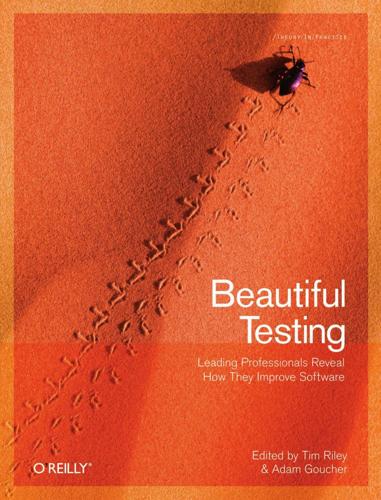
Beautiful Testing: Leading Professionals Reveal How They Improve Software (Theory in Practice)
by
Adam Goucher
and
Tim Riley
Published 13 Oct 2009
</div> <div style="height: 100%; border-left: 2em blue solid;"> The left border of this box must span the entire page content area. This box must be repeated on the second page. </div> </html> The reftest-print class works like a typical class definition. It defines a specific page layout, forcing the page to render as though it were printed on a set of 3 × 5-inch index cards. Since the purpose of the reftest-print class is to change the canvas size, it must be included in both the test and the reference markup. Unlike the asynchronous test in Table 19-3, there is no need to remove the reftest-print value. The test in Table 19-4 ensures that the total page height for the root element is calculated properly.

Wavewalker
by
Suzanne Heywood
Published 12 Apr 2023
Instead, when I’d glimpsed him between watches, he was usually playing games or climbing the mast. ‘Hey,’ he said. ‘Would you give me your history notes? Maybe I can revise from them.’ I looked at him. His arm, brown and muscled, rested next to mine, pale and thin. I’d spent hours transcribing my notes onto index cards, sorting them into bundles and stowing them next to my bunk. ‘That wouldn’t be very fair, would it?’ I said. ‘I guess not.’ Jon shrugged his shoulders. ‘I’ll just cram the other subjects instead.’ We remained side by side, contemplating the hard, blue sea while my stomach churned, and when the first smudge of the Woodlark Islands Archipelago appeared on the horizon, I went back below to start work again.
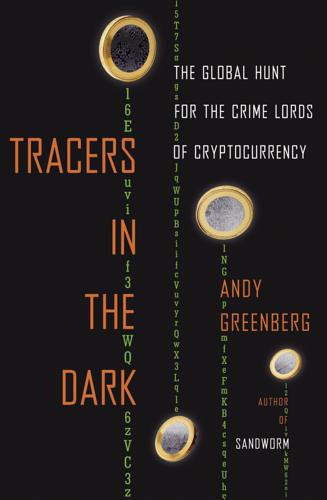
Tracers in the Dark: The Global Hunt for the Crime Lords of Cryptocurrency
by
Andy Greenberg
Published 15 Nov 2022
Soon she was reading about Linear A and Linear B, a pair of written scripts used by the Minoan civilization on Crete until roughly 1500 BC. Linear B had been deciphered only in the 1950s, thanks in large part to a classicist at Brooklyn College named Alice Kober who labored in obscurity over samples of the Bronze Age language for twenty years, writing her notes on 180,000 index cards. Meiklejohn became so obsessed with Linear A and B that she persuaded a teacher at her middle school to organize an evening seminar on the subject (only she and one friend attended). More tantalizing than even the story of Alice Kober’s work on Linear B, for Meiklejohn, was the fact that no one had been able to decipher Linear A, even after a century of study.
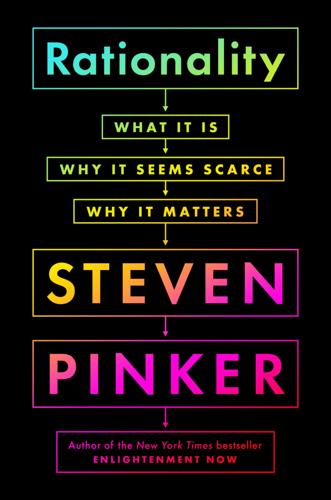
Rationality: What It Is, Why It Seems Scarce, Why It Matters
by
Steven Pinker
Published 14 Oct 2021
Used by permission of Beau Lotto The second is a shape illusion: the angles of the four elbows are identical, 90 degrees. The first takeaway is that we can’t always believe our eyes, or, more accurately, the visual System 1 in our brains. The second is that we can recognize our errors using System 2—say, by punching two holes in an index card and laying it over the first figure, and by aligning the corner of the card with the elbows in the second. Used by permission of Beau Lotto But the wrong takeaway is that the human visual system is a buggy contraption that constantly fools us with figments and mirages. The human visual system is one of the wonders of the world.

Madoff: The Final Word
by
Richard Behar
Published 9 Jul 2024
One can only speculate that the massive redemptions from investors during the 2007–08 global fiscal crisis were stressing her out. Whether or not she knew it was all a Ponzi, it was all starting to crumble. Bonventre, discussing the procedure in more depth, stated that Jodi Crupi kept cash figures on index cards. Regardless of whether he or Ruth took care of the bank reconciliation, when it was completed, he would “go downstairs and take a look at her cards just to make sure that the balance she showed on the card was the same as the one that we were using to do this reconciliation.” Lest a skeptic think that the only people at BLMIS who are offering up Ruthie Books are those who have been convicted of something, there was one witness in the Madoff Five case never charged with a crime: Winifred Jackson.

Before the Storm: Barry Goldwater and the Unmaking of the American Consensus
by
Rick Perlstein
Published 17 Mar 2009
As for the internal security paranoia, in Orange County, hundreds of engineers went home from working on top secret defense projects to children who could not know what their fathers had done at the office that day. The example was Los Alamos: it took only one disloyal American to hasten catastrophe. Local business leaders developed complete dossiers on the two thousand southern Californians identified as having once been Communist Party members. They had two million index cards for suspected—as Robert Welch coined it—comsymps. James Wallace was an ordinary representative of his community. Another was Walter Knott. Orange County residents loved to tell his story: An itinerant day laborer from one of the poorest families in Pomona, at age thirty-one Knott managed to rent a forlorn berry plot in Buena Park.
…
The pamphlets are ones that found their way into the vestibule of “Fighting Bob” Wells. McGirr, “Suburban Warriors,” 124-25. 126 A 1961 issue: ibid., 77. “Show me one, just one”: ibid., 35. North American Aviation’s lobbyist is noted in G. R. Schreiber, The Bobby Baker Affair: How to Make Millions in Washington (Chicago: Regnery, 1964), 10. 126 They had two million index cards: McGirr, “Suburban Warriors,” 49. 126 For the Walter Knott legend: author interview with Gus Owen; “One Man’s Crusade for Everybody’s Freedom,” Reader’s Digest, June 1964; and Roger Holmes, Fabulous Farmer (Los Angeles: Westernlore Publishers, 1956). For an IRS judgment against him for $60,000 for falsely claiming the Freedom Center as a business expense, see GRR, June 29, 1964. 127 For the boysenberry as welfare case, see Holmes, Fabulous Farmer. 128 For Reagan and TVA, see Reagan and Hubler, Where’s the Rest of Me?

American Prometheus: The Triumph and Tragedy of J. Robert Oppenheimer
by
Kai Bird
and
Martin J. Sherwin
Published 18 Dec 2007
Tamm (Hoover’s assistant), 8/27/43, 101-6005-8, Jean Tatlock FBI file, 100-190625-308. 233 “it has been determined”: An FBI document obtained under the Freedom of Information Act reveals that a wiretap was placed on Tatlock’s home phone on 9/10/43 (FBI radiogram NR 070305, 9/10/43). But Tatlock’s FBI file contains phone index cards dated August 1943, suggesting that perhaps Army Counter-Intelligence had already begun the phone surveillance (Jean Tatlock FBI file, FOIA no. 0960747-000/190-HQ-1279913, San Francisco (SF) 100-18382). There are index cards for at least some of her phone calls (dozens of pages are still classified). We learn little of substance. For instance, on 8/25/43, an unidentified woman who is apparently in the Marines calls Jean from New York City.
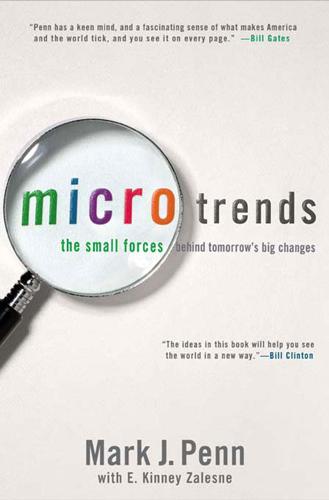
Microtrends: The Small Forces Behind Tomorrow's Big Changes
by
Mark Penn
and
E. Kinney Zalesne
Published 5 Sep 2007
They’re tired of having their kids come home from school and go, glazed-eyed, into their computer screens. They’re tired of BlackBerrys at the dinner table, drivers on cell phones, and iPods that prevent people from even noticing that other people are trying to talk to them. They are striking back, with their pens, legal pads, index cards, and scraps of paper in pockets containing all their to-do lists. They may be less outgoing than the Social Geeks, but they are standing firm for the old-fashioned obligation to look people in the eye and say hello—not just IM them, “how r u?” And they may be gaining ground. As of early 2007, the much touted plan to allow passengers to use cell phones on airplanes seems doomed.

Eternity
by
Greg Bear
Published 2 Jan 1988
Switching the screen back on, she surveyed the list. She had read or’looked through virtually all of the two hundred and seven books listed. This time, however, her eyes alighted on a title she had not read. She could have sworn it was newly added. It said simply, “READ ME NOW.” She called it up on the screen. The index card preceding the display of the first page told her the volume was three hundred pages in lengthmabout a hundred thousand 85 GREG BEAR words—and it was in Hellenic, not English, as all the other books in the cubes were. She halted the display of the index as she saw a flashing cursor next to a description she had not seen before.
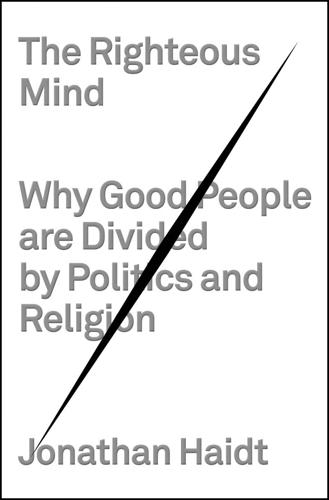
The Righteous Mind: Why Good People Are Divided by Politics and Religion
by
Jonathan Haidt
Published 13 Mar 2012
People are quite good at challenging statements made by other people, but if it’s your belief, then it’s your possession—your child, almost—and you want to protect it, not challenge it and risk losing it.19 Deanna Kuhn, a leading researcher of everyday reasoning, found evidence of the confirmation bias even when people solve a problem that is important for survival: knowing what foods make us sick. To bring this question into the lab she created sets of eight index cards, each of which showed a cartoon image of a child eating something—chocolate cake versus carrot cake, for example—and then showed what happened to the child afterward: the child is smiling, or else is frowning and looking sick. She showed the cards one at a time, to children and to adults, and asked them to say whether the “evidence” (the 8 cards) suggested that either kind of food makes kids sick.
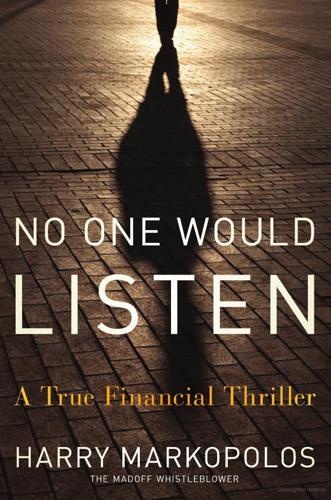
No One Would Listen: A True Financial Thriller
by
Harry Markopolos
Published 1 Mar 2010
But in my oral testimony I was a little more succinct, telling Senator Schumer, “In a nutshell, the SEC staff was not capable of finding ice cream in a Dairy Queen.” I was surprised that I was asked so few questions in this hearing. Senator Schumer seemed to focus on the other members of the panel. In fact, throughout the panel questioning Gaytri was handing me index cards with suggestions, but I really got very little opportunity to speak. Finally she started handing me cards urging me, “Jump in whenever you can.” The whole situation was unusual. The other senators had left after the first session and Schumer carefully controlled this panel. I’m sure he had his reasons.

Traders, Guns & Money: Knowns and Unknowns in the Dazzling World of Derivatives
by
Satyajit Das
Published 15 Nov 2006
In July 1993, Citron confidently predicted that interest rates would not rise and gave his reasons: ‘I am one of the largest investors in America. I know these things.’ 2 The truth was even more bizarre than normal. Citron was a drop-out from the University of Southern California, with limited knowledge or dealings with high finance. He maintained investment records on elaborate systems such as index cards and a calendar, and the most sophisticated analytical tool he used was a wristwatch calculator. (Ironically, the revered Fischer Black was also partial to wristwatch calculators.) At a personal level, Citron behaved oddly. He loved the colour turquoise: he dressed in turquoise, favouring paisley ties in the same colour.

The Panic Virus: The True Story Behind the Vaccine-Autism Controversy
by
Seth Mnookin
Published 3 Jan 2012
This is the autism shot, isn’t it? And he said, “No, that is ridiculous. It is a mother’s desperate attempt to blame something on autism.” And he swore at me. . . . And not soon thereafter, I noticed that change in the pictures: Boom! Soul, gone from his eyes. At that point, Winfrey picked up an index card. “Of course,” she said, “we talked to the Centers for Disease Control and asked them whether or not there is a link between autism and childhood vaccinations. And here’s what they said.” As she started to read, the screen filled with text. We simply don’t know what causes most cases of autism, but we’re doing everything we can to find out.

Eat, Pray, Love: One Woman's Search for Everything Across Italy, India and Indonesia
by
Elizabeth Gilbert
Published 1 Jan 2000
The Lazio fans always stop here on their way home from the stadium to stand in the street for hours, leaning up against their motorcycles, talking about the game, looking macho as anything, and eating cream puffs. I love Italy. 24 I am learning about twenty new Italian words a day. I’m always studying, flipping through my index cards while I walk around the city, dodging local pedestrians. Where am I getting the brain space to store these words? I’m hoping that maybe my mind has decided to clear out some old negative thoughts and sad memories and replace them with these shiny new words. I work hard at Italian, but I keep hoping it will one day just be revealed to me, whole, perfect.
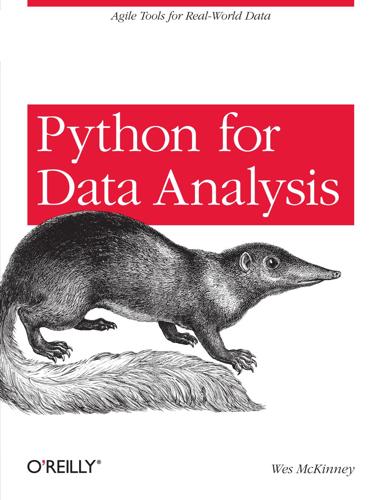
Python for Data Analysis
by
Wes McKinney
Published 30 Dec 2011
As a more fun example, here’s a way to construct a deck of English-style playing cards: # Hearts, Spades, Clubs, Diamonds suits = ['H', 'S', 'C', 'D'] card_val = (range(1, 11) + [10] * 3) * 4 base_names = ['A'] + range(2, 11) + ['J', 'K', 'Q'] cards = [] for suit in ['H', 'S', 'C', 'D']: cards.extend(str(num) + suit for num in base_names) deck = Series(card_val, index=cards) So now we have a Series of length 52 whose index contains card names and values are the ones used in blackjack and other games (to keep things simple, I just let the ace be 1): In [121]: deck[:13] Out[121]: AH 1 2H 2 3H 3 4H 4 5H 5 6H 6 7H 7 8H 8 9H 9 10H 10 JH 10 KH 10 QH 10 Now, based on what I said above, drawing a hand of 5 cards from the desk could be written as: In [122]: def draw(deck, n=5): .....: return deck.take(np.random.permutation(len(deck))[:n]) In [123]: draw(deck) Out[123]: AD 1 8C 8 5H 5 KC 10 2C 2 Suppose you wanted two random cards from each suit.
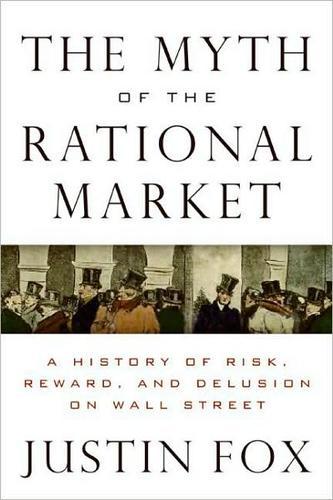
The Myth of the Rational Market: A History of Risk, Reward, and Delusion on Wall Street
by
Justin Fox
Published 29 May 2009
Babson had been an unsuccessful bond salesman in Boston before his battle with TB. Afterward he decided he might have better luck selling information about bonds rather than the bonds themselves. He started by digging up facts about obscure bond offerings and offering them to brokers. He then printed news about companies onto index cards that subscribers could file for easy access. This service evolved, after Babson sold it in 1906, into Standard Statistics (which after a later merger became Standard & Poor’s). Another of Babson’s businesses later became the National Quotation Bureau, a listing service for over-the-counter stocks that was the forerunner of the Nasdaq stock exchange.
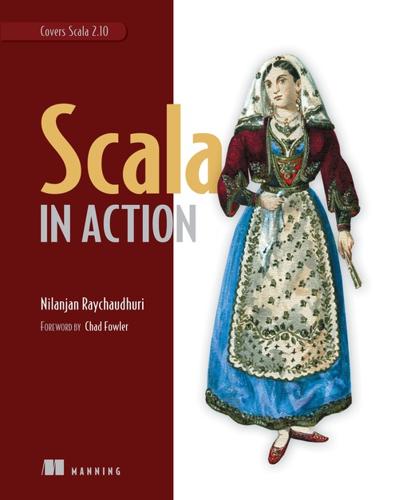
Scala in Action
by
Nilanjan Raychaudhuri
Published 27 Mar 2012
The essential idea behind the Kanban system is limiting the work in progress.[2] Stop starting and start finishing is an important mantra aimed at reducing the amount of work in progress and, ultimately, waste. Thanks to Agile software development methodology, the card wall (or notice board or whiteboard with index cards) has become popular, and you’ll use it to visualize the work in progress for user stories and backlog, and to determine who is working on what. But card walls aren’t necessarily a Kanban system unless there’s an explicit limit on work in progress and a signaling system to pull new work. 2 David J.
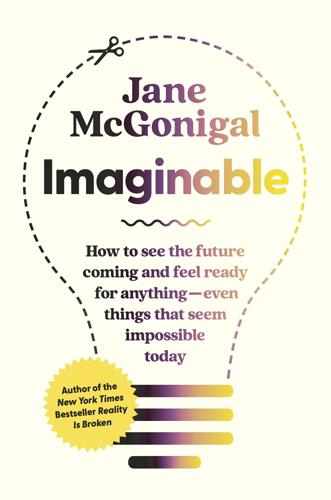
Imaginable: How to See the Future Coming and Feel Ready for Anything―Even Things That Seem Impossible Today
by
Jane McGonigal
Published 22 Mar 2022
As Alice Walker writes in her 1972 poem “Reassurance,” “I must love the questions / themselves / as [the poet] Rilke said / like locked rooms / full of treasure / to which my blind / and groping key / does not yet fit.”19 It’s enough, for now, to invite these questions into your mind. Let them simmer. Which ones spark your curiosity? Which ones make you angry? Which give you a flicker of hope? At my house, we have a wall next to our dining room table that we call the “question wall.” Everyone in our family writes down questions that come up on rainbow-colored index cards, which we then tape to the wall. It’s a way to remind ourselves what we’re curious about. Once a week or so, everyone grabs a card off the wall and starts Googling. Whenever you find a question in this chapter that really jumps out at you, write it down and hang it up somewhere you can see it often.

The Unicorn's Secret
by
Steven Levy
Published 6 Oct 2016
Since the 1890s, Bryn Mawr had supposedly allowed the students to regulate their own conduct. But the reality in 1965 was that, like most colleges then, parietals restricted an underclasswoman’s activities, especially first-year students. Jane Friedman, a classmate of Holly’s, recalls, with only slight hyperbole, that “when you went out at night, you had to sign out on an index card, giving something like ten pieces of information—everything from the hubcap size on the car of the person, to where you were going and when you were coming back. And if you weren’t back by a certain time, the so-called ‘Lantern Man’ would call the number you left to find out where you were.” But the period in which Holly Maddux attended Bryn Mawr saw more change in regulations than in the school’s previous eighty years.

Surveillance Valley: The Rise of the Military-Digital Complex
by
Yasha Levine
Published 6 Feb 2018
Interviews, polls, population counts, detailed anthropological studies of various tribes, maps, available weapons, migration studies, social networks, agricultural practices, dossiers—all this information poured out of ARPA’s centers in Vietnam and Thailand. But there was a problem. The agency was drowning in data: typewritten paper reports, punch cards, giant tape reels, index cards, and tons of crude computer printouts. There was so much information coming in that it was effectively useless. What good was all this intel if no one could find what they needed? Something had to be done. Chapter 2 Command, Control, and Counterinsurgency What separates military intelligence in the United States from its counter-parts in totalitarian states is not its capabilities, but its intentions.

Twitter and Tear Gas: The Power and Fragility of Networked Protest
by
Zeynep Tufekci
Published 14 May 2017
It was not possible for that number of people to stay in the city overnight, not only because of logistical difficulties but also because of political infeasibility given the hostility toward black people and the lack of accommodations in the largely segregated city before the Civil Rights Act of 1964. The details of transportation were many. Everything had to be done without modern computers; most of the clerical tasks were performed with paper forms and 3" × 5" index cards. The building in Harlem, New York, that served as the organizational headquarters of the march was filled with desks, telephones, mimeograph machines, and assistants borrowed from participating organizations. The young organizer charged with overseeing transportation worked so hard during the eight weeks before the event that she fell asleep from utter exhaustion on the day of the march.
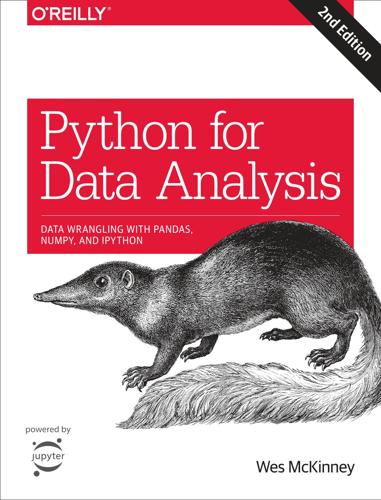
Python for Data Analysis: Data Wrangling with Pandas, NumPy, and IPython
by
Wes McKinney
Published 25 Sep 2017
To demonstrate, here’s a way to construct a deck of English-style playing cards: # Hearts, Spades, Clubs, Diamonds suits = ['H', 'S', 'C', 'D'] card_val = (list(range(1, 11)) + [10] * 3) * 4 base_names = ['A'] + list(range(2, 11)) + ['J', 'K', 'Q'] cards = [] for suit in ['H', 'S', 'C', 'D']: cards.extend(str(num) + suit for num in base_names) deck = pd.Series(card_val, index=cards) So now we have a Series of length 52 whose index contains card names and values are the ones used in Blackjack and other games (to keep things simple, I just let the ace 'A' be 1): In [108]: deck[:13] Out[108]: AH 1 2H 2 3H 3 4H 4 5H 5 6H 6 7H 7 8H 8 9H 9 10H 10 JH 10 KH 10 QH 10 dtype: int64 Now, based on what I said before, drawing a hand of five cards from the deck could be written as: In [109]: def draw(deck, n=5): .....: return deck.sample(n) In [110]: draw(deck) Out[110]: AD 1 8C 8 5H 5 KC 10 2C 2 dtype: int64 Suppose you wanted two random cards from each suit.
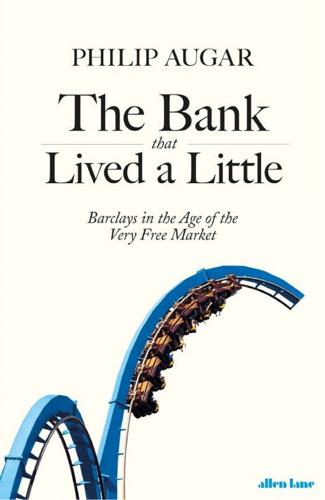
The Bank That Lived a Little: Barclays in the Age of the Very Free Market
by
Philip Augar
Published 4 Jul 2018
I am also hoping for the broadest possible response – emotional and rational – to the issues set out in this paper.’6 It was a dispassionate analysis deserving of full discussion, but he had not pre-sold it to the board. The atmosphere was uncomfortable as he outlined his thoughts, occasionally glancing at some notes on an index card. Middleton glanced across the table and saw Mobbs looking glum with his head in his hands. Lendrum had only recently joined the board and was shaking his head in disbelief. Were all board meetings going to be like this? Arculus, sitting next to Taylor, was heard to mutter: ‘Three hundred years of history’ and was seen wringing his hands.

Norco '80: The True Story of the Most Spectacular Bank Robbery in American History
by
Peter Houlahan
Published 10 Jun 2019
Bolasky ought to be holding off for backup, but so far he had not reported his exact position to Keeter. Was Bolasky headed straight into a 211 in progress all alone? Still on the phone with the Redlands Federal Bank teller who had reported the robbery, Gladys Wiza was furiously writing information on an index card. She slid the card in front of Keeter. Keeter looked down. Shit, he thought, now we got a real problem. CHRIS EVANS AND HER FRIEND JENNIE LEWIS WERE ON FOURTH STREET IN Evans’s black 1979 Chevy Camaro waiting for the light while checking out the cute deputy about to make a left turn in front of them.

First Time Ever: A Memoir
by
Peggy Seeger
Published 2 Oct 2017
Some of those banjo jokes are true. Spontaneity gave way to planning. The atmosphere sobered. Our full houses became half-houses then quarter-houses. Floor singers were cautious. Ewan and I internalised the Book when out on tour and became our own Audience Committee. For each concert we prepared five-by-eight-inch index cards on which the list of possibles had been culled from our master lists. On the other side of the card were columns of what we’d sung at that club before, so as not to risk repeating exactly what we’d sung on our previous visit. At home, we’d enter the night’s titles into our Programme Book, with income from sales of records at the bottom of the page.
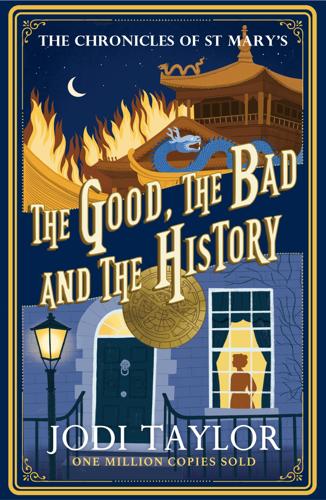
The Good, the Bad and the History
by
Jodi Taylor
Published 21 Jun 2023
I grinned at the guard and shifted to get out of Markham’s way. ‘The thing is . . .’ he said, unloading the contents of his pockets on to the table in a vain attempt to locate his card. For those who want to know what Markham keeps in his pocketses . . . an odd length of string, two pencils, three data cubes, two notebooks, a set of index cards held together with a rubber band, a small rock, a grubby rag, a pair of scissors, a piece of paper with ‘Don’t Forget’ written on it but no further clues as to what he wasn’t supposed to forget, a small model of an Egyptian cat – or a model of a small Egyptian cat, it could be either – a diary with hundreds of tiny pieces of paper dropping all over the floor, a com unit flashing its red power-warning light, a tube of mints, and a scratchpad so battered it shouldn’t, by rights, still be working.

Code Complete (Developer Best Practices)
by
Steve McConnell
Published 8 Jun 2004
If you make your design drawings on large flip chart paper, you can simply archive the flip charts in a convenient location—or, better yet, post them on the walls around the project area so that people can easily refer to them and update them when needed. cc2e.com/0513 Use CRC (Class, Responsibility, Collaborator) cards. Another low-tech alternative for documenting designs is to use index cards. On each card, designers write a class name, responsibilities of the class, and collaborators (other classes that cooperate with the class). A design group then works with the cards until they're satisfied that they've created a good design. At that point, you can simply save the cards for future reference. Index cards are cheap, unintimidating, and portable, and they encourage group interaction (Beck 1991). Create UML diagrams at appropriate levels of detail.

The Sum of All Fears
by
Tom Clancy
Published 2 Jan 1989
Ryan sat still for a minute or two, gunning down the rest of his drink, switching off the TV, and smiling to himself. He checked to make sure the house was locked and the security system armed. He stopped off in the bathroom to brush his teeth. A surreptitious check on her vanity drawer revealed a thermometer and a little index card with dates and temperatures on it. So. She wasn't kidding. She'd been thinking about this and, typically, keeping it to herself. Well, that was okay, wasn't it? Yeah. Jack entered the bedroom and paused to hang up his clothes, donning a bathrobe before joining his wife at the bedside. She rose to wrap her arms around his neck, and he kissed her.
…
Ding would lose his job, too, because he hasn't had the sense to keep his mouth shut like I told him to." "Shit," Ding commented, then looked embarrassed. "Excuse me, ma'am. John, this is a matter of honor. 'Cept for the Doc, I'd be fertilizer on some Colombian hilltop. I owe him my life. That counts more than a job, 'mano." Clark handed over an index card. "These are the dates of the operation. You may remember that when Admiral Greer died, Jack didn't make the funeral." "Yes! Bob Ritter called me, and-" "That's when it was. You can verify all of this with Mr Murray." "God!" It all hit her at once. "Yes, ma'am. All the garbage in these articles.
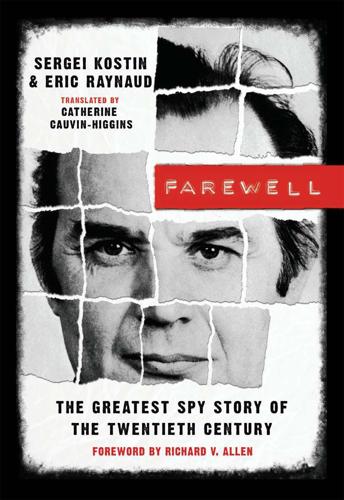
Farewell
by
Sergei Kostin
and
Eric Raynaud
Published 14 Apr 2011
If he turned down the offer, he had to leave; if he went along, he had to collaborate or operate as a double agent. This would have been a win-win situation for the DST. After the failed approach, Raymond Nart simply updated Vetrov’s file in the central database of the service. This was in fact a simple index card (we were still years away from computers and digital files) summarizing the history and basic information regarding the target. Before filing the dossier, Nart wrote an additional note in red: “If target reappears or asks for a visa, inform immediately R23,” the internal name code of Nart himself.10 In fairness to Prévost, it must be said that if Vetrov could have good memories of his relations with the French, it is also thanks to Prévost’s skillfulness, which does not preclude the possibility of friendly feelings toward his Soviet partner.
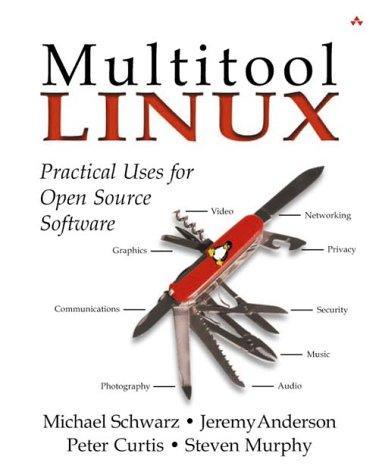
Multitool Linux: Practical Uses for Open Source Software
by
Michael Schwarz
,
Jeremy Anderson
and
Peter Curtis
Published 7 May 2002
It will help you focus on camera angles and avoid plot deviations and will serve as a guide as you shoot video footage and prepare graphic images or animations. There is really nothing Linux specific about this concept—it's just a good idea to do. As you become familiar with more Linux tools, you might try using them to create the storyboard images. I find it easier to simply scratch out my ideas onto 3 x 5 index cards. I'm no artist, but I get my point across. Lights, Camcorder, Action! Once you have an idea of what video you will need, it's time to head to the set and start shooting. For me, the set was the local R/C track. Luckily, the guys at the track were very nice and allowed me to walk all over the track to position my camera in various places for the best shots.

The Future of the Internet: And How to Stop It
by
Jonathan Zittrain
Published 27 May 2009
An IT ecosystem comprising fixed hardware and flexible software soon proved its worth: PC word processing software could be upgraded or replaced with better, competing software without having to junk the PC itself. Word processing itself represented a significant advance over typing, dynamically updated spreadsheets were immensely more powerful than static tables of numbers generated through the use of calculators, and relational databases put index cards and more sophisticated paper-based filing systems to shame.15 Entirely new applications like video games, beginning with text-based adventures,16 pioneered additional uses of leisure time, and existing games—such as chess and checkers—soon featured the computer itself as a worthy opponent.17 PCs may not have been ideal for a corporate environment—documents and other important information were scattered on different PCs depending on who authored what, and enterprise-wide backup was often a real headache.

Exploding the Phone: The Untold Story of the Teenagers and Outlaws Who Hacked Ma Bell
by
Phil Lapsley
Published 5 Feb 2013
“Beckley lived in a plush Miami Beach apartment house, five or six stories up, well insulated. There was no way to get in and do anything,” Sharp says. “We were pretty well restricted to phone record checks.” But the phone records were a treasure trove. Over a period of months Sharp amassed a 3x5 index card file—some twenty thousand cards’ worth—of every long-distance number Beckley called. “We didn’t know the term then,” Sharp says, “but what we really needed was a computer database.” Painstakingly, Sharp and his colleagues built a detailed map of Beckley and his associates. By combining this with other intelligence they formed a solid picture of his bookmaking operation.

No Such Thing as Society
by
Andy McSmith
Published 19 Nov 2010
The head of Leeds Criminal Investigation Department (CID), Chief Superintendent Dennis Hoban, knew at once that he was pursuing a very dangerous man; when he died in 1978, aged fifty-two, friends and colleagues suspected that the stress of the Ripper hunt had hastened his death.7 He deployed 137 officers, and within a year of the second murder the police had invested 64,000 hours, filled 6,400 index cards, made 3,700 house-to-house inquiries, checked up on 3,500 vehicles and taken 830 statements.8 By the end of 1980, there were 289 police officers working full time on the case, 188 in West Yorkshire alone. The problem was not lack of effort, but disorganization. Computers existed, but the police would not use them.

Poking a Dead Frog: Conversations With Today's Top Comedy Writers
by
Mike Sacks
Published 23 Jun 2014
You are, after all, turning around material for a program that airs that night. Days at a sitcom can sometimes be just as demanding. But other days—often the ones spent breaking stories—can feel downright leisurely. To an outside observer they look a bit like closing time at an opium den. Writers lounge on couches, staring at a bulletin board with index cards tacked to it and tossing out half-baked ideas. One or two people fall asleep. Snacks are available. But appearances in this case are deceiving. When I made the jump from late-night to scripted I was what you’d call inexperienced at writing sitcoms—or, if you were being less charitable, awful at it.

Chickenhawk
by
Robert Mason
Published 28 Mar 2005
“Sure,” said Stoddard. I threw my bag against the cloth wall and sat on it. Monk resumed filing his clippings. Ragged copies of Stars and Stripes, Newsweek, Time, and other magazines lay strewn in the dirt around his bedroll. He carefully cut each item with a Swiss army scissors, then flipped through alphabetized index cards to find its proper place. “Are you a writer?” I asked. “Monk, a writer?” Stoopy giggled. His belly and fat cheeks shook. I noticed chocolate stains on his lips and then saw the chocolate bar grasped in a grubby hand. “He thinks you’re a writer, Monk.” He laughed brightly. Monk shot him a glance that killed the laughter immediately.
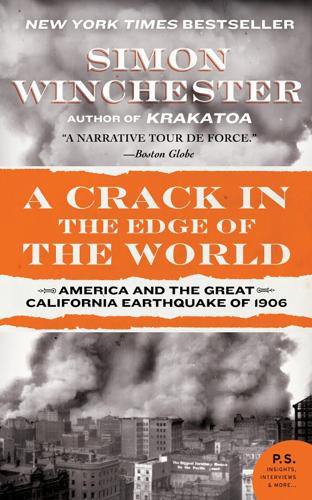
A Crack in the Edge of the World
by
Simon Winchester
Published 9 Oct 2006
Over the next two decades a number of amendments were added to the legislation – the most important, so far as it affected matters in 1906, was a liberalizing clause that allowed relatives of Chinese people who were already legally settled in America to go there to settle too. Until the spring of 1906 all would-be Chinese immigrants had been processed and interviewed in a small two-storey shed that belonged to the Pacific Mail Steamship Company on the San Francisco waterfront. It was there that immigration officials, armed with index cards giving the details of every Chinese-born American citizen already legally in the country, conducted Exclusion Act interviews with the arrivals, and did so with clinical efficiency: if the arrival turned out to have a father or brother already rightfully in America, then the official stamped them in; if not, they were first put in the lock-up, then marched down the docks and put back in the hold of a China-bound ship without further ado.
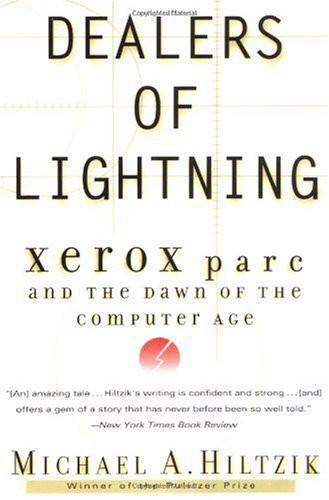
Dealers of Lightning
by
Michael A. Hiltzik
Published 27 Apr 2000
The first prototype of Superpaint went operational in Building 34 on April 10, 1973, just a few days after the Alto, which was being built in a basement room directly under his ground-floor video lab. While Cookie Monster was marching across the Alto screen to the delighted gasps of the PARC faithful and their visitors, Dick Shoup was seated alone before a black-and-white video camera, holding up an index card on which he had scrawled, “It works, sort of.” The system recorded the image of his face and the card in buffer memory in accurate detail—save for the bright red-orange of his droopy mustache and collar-length hair—and stored it on a conventional computer disk as a pattern of bits. (“It survives to this day,” he said in 1998.)

Solitary
by
Albert Woodfox
Published 12 Mar 2019
The dungeon could destroy every fragment of a man’s dignity and self-respect. The harsh conditions were so hurtful that strong men would cry. They broke. The only way anyone got out of the dungeon was if the colonel, who was head of security at Angola, let you out when he was making his rounds. He’d come every day, carrying a stack of index cards that had the names of prisoners on them and what each one had done to be put in the dungeon. He walked down the tier slowly. It played to the colonel’s ego to have that much control over our lives. Some prisoners stood in there for 30, 45, or 60 days, “under investigation.” Some men would beg for release in a childlike voice when they saw him, crying, “I’ll be good.

Sandy Hook: An American Tragedy and the Battle for Truth
by
Elizabeth Williamson
Published 8 Mar 2022
Infowars.com posted an article about Robbie Parker’s media appearance a day after Emilie’s murder, in which he reminisced about her life. father of sandy hook victim asks ‘read the card?’ seconds before tear-jerking press conference Robbie didn’t say any such thing. He had smiled and asked whether he should “start.” He did not use cue cards or index cards. He carried 8½-by-11-inch paper, the type you would use in a computer printer, folded in half lengthwise in his left hand as he approached the lectern. The sheets contained notes he had written himself. All this is clearly apparent to anyone who views his news conference, which lives on YouTube to this day.

Chief Engineer
by
Erica Wagner
Brooklyn Museum, Gift of Paul Roebling, 1994.69.2 Acknowledgments Like a bridge, a book is not in fact built by one person alone; there have been many along the way who have helped shepherd Chief Engineer to publication. I have been working on this project—or a version of this project—for longer than I sometimes care to remember: I still have a black box of index cards covered with notes taken in the New York Public Library when I was still at university and supposedly doing an English degree. There are quite a few people to thank. Of course I am indebted to the work of scholars who have gone before me. The work of David McCullough, Clifford Zink, and Henry Petroski has been especially valuable.

12 Strong: The Declassified True Story of the Horse Soldiers
by
Doug Stanton
Published 16 Apr 2009
Dean immediately wanted a Pakol hat. He shook the warlord’s hand, which was strong and papery, darkened by years of sun and war. For a thirty-eight-year-old, he looked like an older man. Dean thought he had warm eyes. “I’ve heard a lot about you,” Dean said, lying through his teeth. What he knew about the man would’ve fit on an index card. But he wanted Atta to know that he had the United States’ entire attention. Atta smiled and, through an interpreter, welcomed him and explained that he had been up all night planning his army’s movements. He surprised Dean by announcing that he was going to take a nap. Dean felt the air go out of the moment.
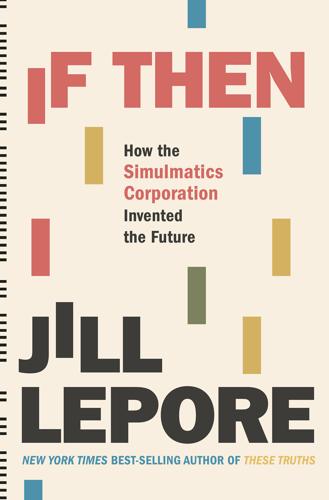
If Then: How Simulmatics Corporation Invented the Future
by
Jill Lepore
Published 14 Sep 2020
His office was in the East Wing, not the West Wing, and although the president occasionally consulted him, he was mostly there to bear witness, a court historian. “We’d better make sure we have a record over here,” Kennedy would say during meetings, and Schlesinger would dutifully take out the stack of eight-by-four-inch index cards he carried around in his pocket and begin taking notes. “He didn’t do a helluva lot,” Bobby Kennedy would say, “but he was good to have around.”41 Greenfield had already reached out to Newton Minow, the new chairman of the Federal Communications Commission. Two weeks after the election, Greenfield had sent Minow a list of “Possible Government Uses of Simulation”—tasks the Kennedy administration might hire Simulmatics to take on with departments of the federal government, from the Post Office Department (“model of mail flows”) and the Department of Health, Education, and Welfare (“model of epidemiology of addiction and delinquency”) to the Department of Labor (“model of future wage rate changes for different jobs”) and the Department of State (“model of voting in the United Nations to project likely blocs under different conditions”).
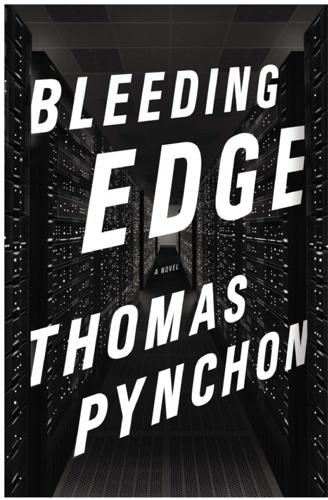
Bleeding Edge: A Novel
by
Thomas Pynchon
Published 16 Sep 2013
Driscoll Padgett is a freelance Web-page designer, “making it up as I go along, just like everybody else,” also temping as a code writer, for $30 an hour—she’s fast and conscientious, and the word has got around, so she’s more or less steadily in demand, though now and then there’s a gap in the rent cycle where she’s had to resort to the Winnie list, or index cards stuck up next to dumpsters, and so forth. Loft parties sometimes, though that’s usually for the cheap drinks. Driscoll was over at hwgaahwgh.com today looking for Photoshop filter plug-ins, having like many of her generation acquired a Jones which has led them off on scavenger hunts after ever-more-exotic varieties.

Politics on the Edge: The Instant #1 Sunday Times Bestseller From the Host of Hit Podcast the Rest Is Politics
by
Rory Stewart
Published 13 Sep 2023
She and Dolly Yang did a magnificent job of proofreading the 1,000 pages of the first draft, identifying errors on every page, and would greatly have improved the final version too, if they had been allowed to do so. Sasha and Ivo were kind about the weeks I spent apart from them struggling with the book, and Sasha saved me from an underwhelming title. Finally, Shoshana lived alongside this from the first stumbling passages composed at a cold table in a Scottish garden, through the index cards laid flamboyantly out on the dining room in Yale, to the days closeted in front of a giant monitor in Amman. She heard half the passages read aloud at lunch or dinner. She was alert to the storyline, tone, and my descriptions, and consistently wise in her suggestions. She did not lose faith and patience as every deadline was missed and it dragged into its third year.

Spies, Lies, and Algorithms: The History and Future of American Intelligence
by
Amy B. Zegart
Published 6 Nov 2021
Clapper enlisted as a Marine Corps reservist and eventually became a three-star Air Force general. But he started his signals intelligence career at the age of twelve, using toothpicks and his grandparents’ television set to intercept communications of the Philadelphia Police Department and tracking their activities, codes, and call signs on a homemade “database” of index cards.74 Gina Bennett is one of the world’s leading terrorism analysts. In 1993, she wrote the first intelligence assessment warning that Osama bin Laden was a rising terrorist threat. She’s also a mother of five kids who once went into labor while briefing National Security Advisor Condoleezza Rice.

Fodor's Essential Belgium
by
Fodor's Travel Guides
Published 23 Aug 2022
HMundaneum HISTORY MUSEUM | This UNESCO-recognized endeavor tells a little-known story. At the dawn of the 20th century, a pair of human-rights lawyers, Paul Otlet and Henri La Fontaine (Belgium’s only Nobel Peace Prize winner), had the idea for a paper database of all knowledge. They called it the Mundaneum. By 1972 it held 12 million bibliographic records (index cards). The building is now a fascinating museum. ERue de Nimy 76, Mons P065/315–343 wwww.mundaneum.org A€7 CClosed Mon. and Tues. Musée des Arts Décoratifs François Duesberg (Museum of Decorative Arts) ART MUSEUM | One of the true gems of the city is also one of the few private museums, its collection assembled across a span of 50 years by a Belgian lawyer, François Duesberg, and his late wife.

Essential Scrum: A Practical Guide to the Most Popular Agile Process
by
Kenneth S. Rubin
Published 19 Jul 2012
So what exactly are user stories? Ron Jeffries offers a simple yet effective way to think about user stories (Jeffries 2001). He describes them as the three Cs: card, conversation, and confirmation. Card The card idea is pretty simple. People originally wrote (and many still do) user stories directly on 3 × 5-inch index cards or sticky notes (see Figure 5.2). Figure 5.2. A user story template and card A common template format for writing user stories (as shown on the left in Figure 5.2) is to specify a class of users (the user role), what that class of users wants to achieve (the goal), and why the users want to achieve the goal (the benefit) (Cohn 2004).

The omnivore's dilemma: a natural history of four meals
by
Michael Pollan
Published 15 Dec 2006
For some reason the very real potential for disaster hadn't dawned on me earlier, or the fact that I was cooking for a particularly discriminating group of eaters, several of them actual chefs. Now, dawn on me it did, and it left me feeling more than a little intimidated. To give you a more comprehensive idea of exactly what I'd gotten myself into, here's the schedule I wrote out Friday evening on an index card: 8:00 brine the loin; shell and blanche and skin the fava beans. [Favas are one of nature's more labor-intensive legumes, requiring two separate peelings, with a blanching in between.] 9:00 make the bread dough. First rise. 10:00 brown the leg; prepare liquid for braise. 10:30 pit the cherries.
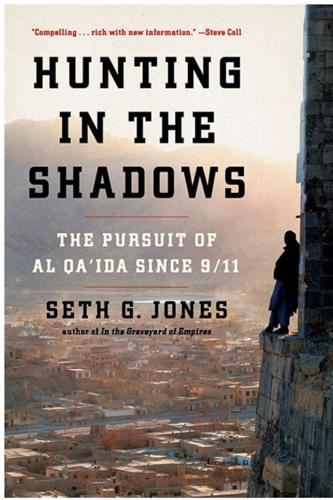
Hunting in the Shadows: The Pursuit of Al Qa'ida Since 9/11: The Pursuit of Al Qa'ida Since 9/11
by
Seth G. Jones
Published 29 Apr 2012
It illustrated why he was so treasured by al Qa’ida: he had a knack for chemistry, computers, and technology, which made him useful for everything from bomb making to propaganda. And he was eminently likable, even funny. “My name is Adnan,” he said, with a discernible Saudi accent, standing in front of a blackboard smeared with white eraser marks. He wore a striped, button-down shirt that hung loosely over his pants and sported a thin beard. He occasionally consulted index cards cradled in his hands. “First thing, I’m going to show, when we are jumpstarting a car we have two things. We have the good battery in your car, which is smiling here; and the dead battery in the dead car, which is angry here.” He pointed to the blackboard, where he had sketched two three-dimensional boxes that represented the batteries.

The Information: A History, a Theory, a Flood
by
James Gleick
Published 1 Mar 2011
Simpson was the sixth in a distinguished line, the editors of the Oxford English Dictionary, whose names rolled fluently off his tongue—“Murray, Bradley, Craigie, Onions, Burchfield, so however many fingers that is”—and saw himself as a steward of their traditions, as well as traditions of English lexicography extending back to Cawdrey by way of Samuel Johnson. James Murray in the nineteenth century established a working method based on index cards, slips of paper 6 inches by 4 inches. At any given moment a thousand such slips sat on Simpson’s desk, and within a stone’s throw were millions more, filling metal files and wooden boxes with the ink of two centuries. But the word-slips had gone obsolete. They had become treeware. Treeware had just entered the OED as “computing slang, freq. humorous”; blog was recognized in 2003, dot-commer in 2004, cyberpet in 2005, and the verb to Google in 2006.
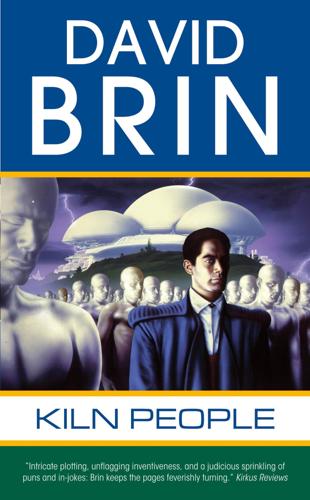
Kiln People
by
David Brin
Published 15 Jan 2002
Or the one who dwells within the ever-growing Standing Wave? The one who makes it possible by virtue of raw duplicating talent? The one who, you might say, was born for it? Hey, theoretical understanding is overrated. Anyway, as we/I amplify, grow, and spread, I can start to feel Maharal's knowledge, like a riffling breeze of index cards, all aflurry nearby, close enough to reach out and access -- Who says he should be the rider and I the steed? Why not the other way around? 51 Ceiling Fate ... as Greenie falls in ... It's kind of hard to move about when half of you has fallen off or broken down. Crushed and burned, shrunken and diminished, I had only partial function in one leg to help me haul myself upward along the fuselage of the skycycle, perching next to its cockpit, leaning in to fumble at whatever buttons I could reach.
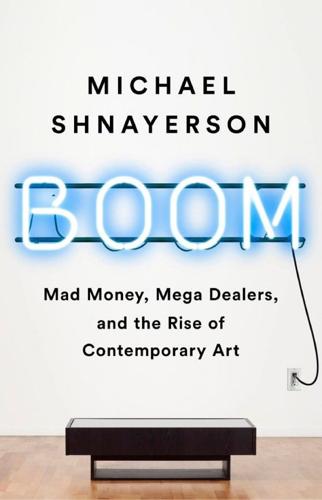
Boom: Mad Money, Mega Dealers, and the Rise of Contemporary Art
by
Michael Shnayerson
Published 20 May 2019
That was likely what the artist would have wanted: “I believe in temporary art wholeheartedly,” he said at one point.23 The estate did have the legal right to make more works if it chose, however, and in a sense the late artist had pointed the way. Typically, Flavin created editions of three or five identical pieces. But numerous editions, it turned out, lacked one or more of their pieces. All this was easy to determine, since Flavin had kept records, on three-by-five index cards, of each edition and how many units had been fabricated. When a work was sold, Flavin issued along with it a certificate showing a diagram of the work, its title and number in the edition, and the artist’s signature and stamp. The certificate was the work’s proof of authenticity. At some point after his father’s death, Stephen Flavin began working with Zwirner.

Bill Marriott: Success Is Never Final--His Life and the Decisions That Built a Hotel Empire
by
Dale van Atta
Published 14 Aug 2019
As he recalled years later, “My friend was good with his hands and was told he’d make a great surgeon. They studied my test scores for a long time and said I could name most of the animals in the zoo. Maybe I should go into business, since I had no specific talents that they could find.” At the same time, a Church Apostle and family friend in Salt Lake City proudly typed up an index card recording: “Billy Marriott [is the] only boy or girl in his class who doesn’t or hasn’t smoked. He has the best marks of any student in the class.”8 At this point, J.W. began considering switching Billy to an even harder private school, the Episcopalian-run St. Albans School for boys. “My parents decided to turn me over to the Episcopalians after the Quakers had done their best,” he later joked.9 For a brief time, J.W. threw himself into being a more present father with his son.
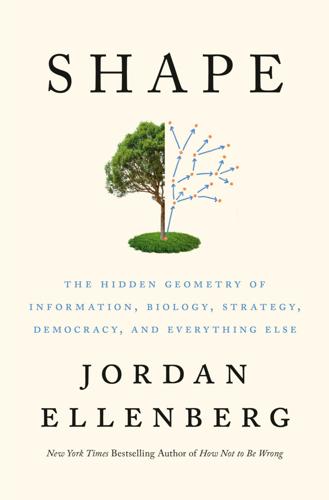
Shape: The Hidden Geometry of Information, Biology, Strategy, Democracy, and Everything Else
by
Jordan Ellenberg
Published 14 May 2021
Geometrically, the horseshoe is asserting that politics doesn’t fit in a straight line, but requires a plane: If that’s true, and if the opposite ends of the horseshoe have enough of a constituency to get elected to Congress, we’ll see that in the voting data; the one-dimensional model of Congress will start to get less and less accurate. That hasn’t happened yet. For bigger data sets, two dimensions will rarely be enough. A team of Google researchers led by Tomas Mikolov developed an ingenious mathematical device called Word2vec, which one might call a map of all words. We no longer need to rely on college students and index cards to gather numerical information on which words go together. Word2vec, trained on a body of text from Google News six billion words long, assigns to each English word a point in three-hundred-dimensional space. That’s hard to picture, but remember, just as a point in two-dimensional space can be rendered as a pair of numbers, a longitude and a latitude, a point in three-hundred-dimensional space is nothing more than a list of three hundred numbers, a longitude, a latitude, a platitude, an amplitude, an attitude, a turpitude, etc., etc., as far as your rhyming dictionary will take you.
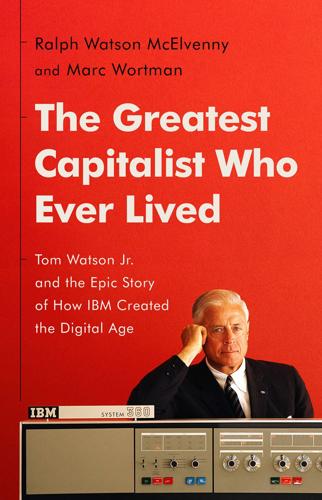
The Greatest Capitalist Who Ever Lived: Tom Watson Jr. And the Epic Story of How IBM Created the Digital Age
by
Ralph Watson McElvenny
and
Marc Wortman
Published 14 Oct 2023
After reviewing the capabilities of the Hollerith machines produced and sold by Dehomag and their census use in detail, he concludes, “Nazi organizations and bureaucratic administrations instituted and used every means and procedure to identify, locate, isolate, deprive, exclude, and deport the Jews. These institutions used ordinary office equipment and supplies: paper, forms, index cards, pencil, ink and pen, and typewriters. However,… there is no evidence that Hollerith machines and census work were used.” As he explains, “‘Pinpointing’ to a person or specific group of persons is impossible,” given the equipment then available.17 The technology, however, was eventually employed by the Nazis for their evil, murderous purposes.
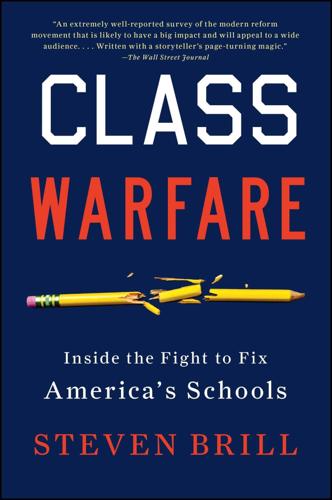
Class Warfare: Inside the Fight to Fix America's Schools
by
Steven Brill
Published 15 Aug 2011
Moving up the map and “east,” to the right, were myriad stopping off points, beginning with the places they could advance to in the eleventh grade, such as preparing for the college entrance tests, taking a sample test, making a list of possible colleges, or getting admissions materials. At the top right was College Admission, where Johnston intended to be hanging all forty-four index cards within eighteen to twenty months, in 2008. With each admission to college, the student would sign an Acceptance Board, another laminated wood plaque that Johnston had fashioned and hung in the auditorium. Johnston was also keeping his hand in politics. He was the education adviser in what would be the successful 2006 gubernatorial campaign of Colorado Democrat Bill Ritter.

The Gods of New York: Egotists, Idealists, Opportunists, and the Birth of the Modern City: 1986-1990
by
Jonathan Mahler
Published 11 Aug 2025
” * * * *** The filmmaker Spike Lee woke up early in his Fort Greene, Brooklyn, apartment on Christmas morning, sat down at his desk, and started scribbling. This is how he always started his screenplays, with raw notes on a yellow legal pad: possible characters, snatches of dialogue, set pieces, even doodles. Next, he would outline the scenes on index cards. Lee was thirty years old, and his career as a director was just beginning to take off. He’d made his first movie, She’s Gotta Have It—about a young, free-spirited Black woman in Brooklyn, named Nola Darling, juggling three very different male lovers—for just $175,000, shooting it mostly in black-and-white over the course of twelve days in the attic of a Fort Greene restaurant without insurance or location permits.
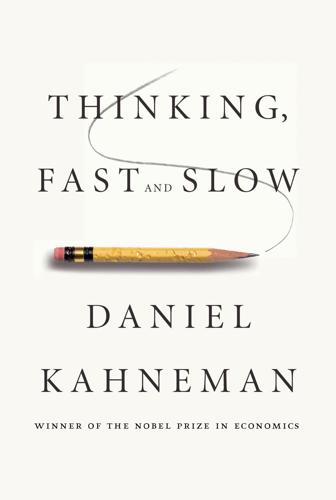
Thinking, Fast and Slow
by
Daniel Kahneman
Published 24 Oct 2011
However, there are vital tasks that only System 2 can perform because they require effort and acts of self-control in which the intuitions and impulses of System 1 are overcome. Mental Effort If you wish to experience your System 2 working at full tilt, the following exercise will do; it should br"0%e ca Tting you to the limits of your cognitive abilities within 5 seconds. To start, make up several strings of 4 digits, all different, and write each string on an index card. Place a blank card on top of the deck. The task that you will perform is called Add-1. Here is how it goes: Start beating a steady rhythm (or better yet, set a metronome at 1/sec). Remove the blank card and read the four digits aloud. Wait for two beats, then report a string in which each of the original digits is incremented by 1.

The Great Influenza: The Story of the Deadliest Pandemic in History
by
John M. Barry
Published 9 Feb 2004
a ward was sealed off: Soper, “Influenza Pandemic in the Camps.” “they had influenza”: Ibid. “not like the common broncho-pneumonia”: Adolph A. Hoehling, The Great Epidemic (1961), 21. “an outbreak of epidemic influenza”: Public Health Reports, 33, part 2 (July 26, 1918), 1259. “I am confidentially advised”: Entry 12, index card 126811, RG 52, NA. “a progressive increase in cases”: Ireland, Communicable Diseases, 83, 135. “indistinguishably blend with”: Ibid., 135. “the seamen were prostrate”: Jordan, Epidemic Influenza, 114. “a well-nourished people”: John Duffy, A History of Public Health in New York City 1866–1966 (1974), 286.

Valley of Genius: The Uncensored History of Silicon Valley (As Told by the Hackers, Founders, and Freaks Who Made It Boom)
by
Adam Fisher
Published 9 Jul 2018
Chris Agarpao: Well, first the bags would start out real small, like stacks of maybe thirty, and then sixty, gradually as we grew, and then, you know, they were really heavy bags—tons and tons of mail. Pierre Omidyar: And it just kind of grew. Within six months it was earning revenue that was paying my costs. Within nine months the revenue was more than I was making on my day job. Chris Agarpao: It wasn’t all checks. Sometimes it was nickels and dimes, that they’d tape to index cards. So that was kind of funny. But it all added up to be something big. Steve Westly: The company was profitable every quarter of its existence—every month of its existence—from day one. Now I’m not sure if any other company could say that. Pierre Omidyar: That’s kind of when the lightbulb went off.
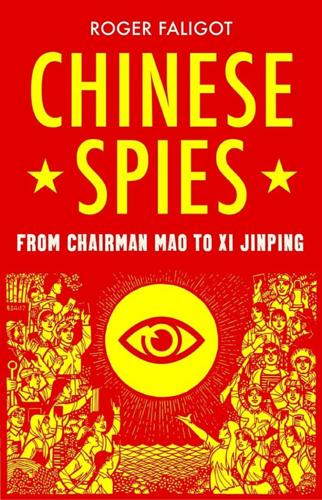
Chinese Spies: From Chairman Mao to Xi Jinping
by
Roger Faligot
Published 30 Jun 2019
Twenty years later, while researching my biography of Kang Sheng, I became convinced that this very Xiong was an important figure in the intelligence service. I had to wait another decade before I spotted Xiong’s autobiography in a Beijing bookshop. It was published by the CCP and entitled My Career in Intelligence and Diplomacy.3 Even today, I sometimes flick with a certain nostalgia through my own typed index cards, containing biographies of members of the Chinese special services, which I began collating at the end of the 1970s from books and interviews. Today regional newspapers and administrative documents are available online and for the French edition of this book I put together biographies of regional directors of the Guoanbu (to take a single example), using websites like China Vitae (which contains up-to-date biographies in English) and most of all Baidu Baike, a sort of Chinese Google through which it is possible to access many biographical details.
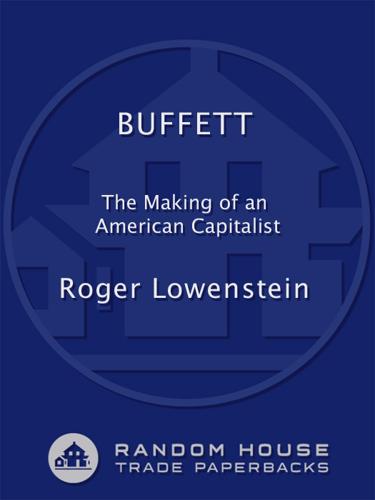
Buffett
by
Roger Lowenstein
Published 24 Jul 2013
Similarly, his ability for figures left his colleagues stunned.42 (Buffett explained his penchant for mental math by saying that if he didn’t understand a figure in his head, he didn’t “understand” it; thus, no computer.)43 People habitually referred to his mental processes in mechanical terms. Doris, herself, reflexively remarked how quickly information appeared on Warren’s “screen”; Mike Goldberg spoke of his “iterating” insurance policies through his memory. This agile sifting of mental index cards enabled him to recognize past patterns and, through untold repetitions, develop an investing instinct. Alas, the average investor is not endowed with a mental calculator or an on-line encyclopedia. This does not imply that Buffett could not be a useful model. (A clinic with Ted Williams should make one a better hitter, even if not a .400 hitter.)

This Is How They Tell Me the World Ends: The Cyberweapons Arms Race
by
Nicole Perlroth
Published 9 Feb 2021
Unlike his predecessors at the agency, he was a hacker in his own right. At West Point he’d toiled on computers in the electrical engineering and physics departments. In the 1980s, at the Naval Postgraduate School in Monterey, he’d built his own computer and developed his own programs to move the army’s clunky index-card system onto automated databases. On his first assignment to the Army Intelligence Center in Fort Huachuca, Arizona, he’d made it a point to memorize the technical specifications for each and every army computer, then mapped out the center’s first intelligence and digital warfare data programs. As he worked his way up the chain of command, he’d picked up master’s degrees in electronic warfare, physics, national security strategy, and business.
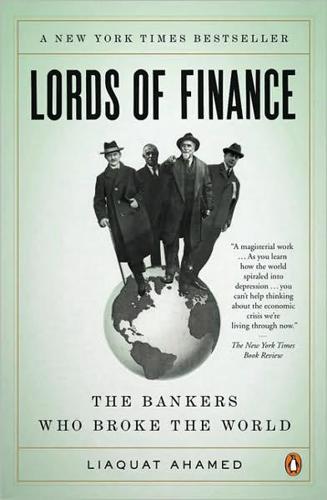
Lords of Finance: The Bankers Who Broke the World
by
Liaquat Ahamed
Published 22 Jan 2009
He was also a proponent of selective breeding and was secretary of the American Eugenics Society; he believed that mental illness originated from infections of the roots of the teeth and of the bowels and, like Babson, was a fervent advocate of Prohibition—by 1929, he had even written two books on the economic benefits of Prohibition. Again like Babson, he was a wealthy man, having invented a machine for storing index cards—a precursor of the Rolodex—the patent of which he sold to Remington Rand in 1925 for several million dollars. By 1929, he was worth some $10 million, all of it invested in the stock market. Prefacing his remarks with the concession that “none of us are infallible,” Professor Fisher declared, “Stock prices are not too high, and Wall Street will not experience anything in the nature of a crash.”

Apollo
by
Charles Murray
and
Catherine Bly Cox
Published 1 Jan 1989
In 1968, Sherrod, war correspondent for Time and Life magazines from World War II through Vietnam, began research for a major history of the Apollo Program. In the process, he gained access to the major figures of the program while the program was ongoing. His collection of interviews and a voluminous file of index cards are kept at the NASA history offices in Washington. He gave us full access to them and to his handwritten notebooks with their day-by-day chronicle of events. Even this vast collection of interviews, valuable as they were, only occasionally contained the relaxed, unofficial recountings of what it was like to be part of the Apollo Program that we sought.
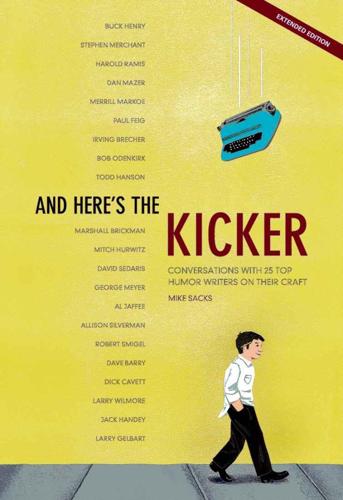
And Here's the Kicker: Conversations with 21 Top Humor Writers on Their Craft
by
Mike Sacks
Published 8 Jul 2009
But as soon as I'd see one I didn't recognize, I wouldn't even finish reading it — I'd set it aside to savor it later, just because it was new. Not because it was necessarily good, just different. What percentage of these Playboy-joke contributors actually wrote their own jokes? Most didn't. There were some submissions from people who considered themselves professional joke writers. The jokes would usually arrive on indexed cards that had a serial number on the side, like “C35.” The next card would be “C36.” The one after that, “C37.” They'd just grab a section of their joke file and send it. How did you not lose your mind with a job like that? It was just cool being at Playboy. But wasn't the magazine already sort of behind the times by the late sixties?

Berlin 1961: Kennedy, Khrushchev, and the Most Dangerous Place on Earth
by
Frederick Kempe
Published 30 Apr 2011
At that point, Kennedy threw in a German line that had not appeared in his original text, but one that he had practiced before the event with Robert Lochner, the head of Radio in the American Sector of Berlin, or RIAS, and Adenauer’s interpreter Heinz Weber. He had written out what he wished to say phonetically on index cards. “Let them come to Berlin…Lasst sie nach Berlin kommen,” he said. “All free men, wherever they may live, are citizens of Berlin and, therefore, as a free man, I take pride in the words ‘Ich bin ein Berliner.’” Or as Kennedy had written on his cards: “Ish bin ine Bear-LEAN-er.” Years later, amateur linguists would argue that Kennedy had misspoken and by using the article ein in front of Berliner, which was the name of a German pastry, he had actually told the crowd, “I am a jelly doughnut.”

The Innovators: How a Group of Inventors, Hackers, Geniuses and Geeks Created the Digital Revolution
by
Walter Isaacson
Published 6 Oct 2014
He convinced a small Indianapolis company that built TV antenna boosters to join forces on what would be called the Regency TR-1 radio. Haggerty made the deal in June 1954 and, typically, insisted that the device be on the market by that November. It was. The Regency radio, the size of a pack of index cards, used four transistors and sold for $49.95. It was initially marketed partly as a security item, now that the Russians had the atom bomb. “In event of an enemy attack, your Regency TR-1 will become one of your most valued possessions,” the first owner’s manual declared. But it quickly became an object of consumer desire and teenage obsession.

Free Speech: Ten Principles for a Connected World
by
Timothy Garton Ash
Published 23 May 2016
By this, he presumably meant keeping multiple copies in different places, perhaps with the aid of a mimeograph or spirit duplicator, and he mentions the very latest new technology: microfilm.30 Wells was not the first to envisage bringing it all together. The ancient Great Library of Alexandria already had something of this aspiration, and Wells himself refers to the French Enlightenment scholar Denis Diderot’s Encyclopédie. You can still view in Mons, Belgium, giant wooden filing cabinets holding the 12 million index cards of the Mundaneum, a project founded by two Belgian lawyers to collect all the world’s knowledge. In the early twenty-first century we have come closer to this dream than ever before. As I sit at my computer, I am surrounded by printed reference books. To check a quotation, however, I will start by googling it on screen, rather than reaching just an arm’s length for my faded blue Oxford Dictionary of Quotations.
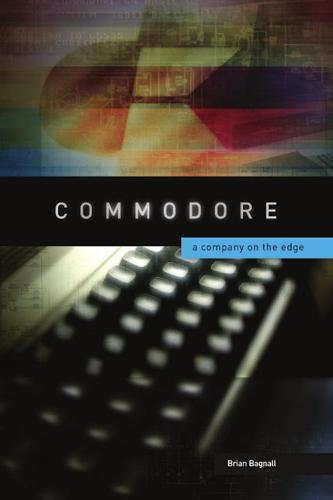
Commodore: A Company on the Edge
by
Brian Bagnall
Published 13 Sep 2005
Nevertheless, Feagans did his best to implement the GUI in a project for Commodore. “I was playing with GUI concepts on a PET,” he says. “My first GUI was an animated filing cabinet done entirely in PET graphics characters.” Feagans’ GUI shared similarities with a common menu bar. It borrowed from the index card paradigm, such as library card catalogues found at libraries at the time. His GUI for opening files literally looked like something in an office setting. “Open a drawer and you saw tabbed folders,” he explains. “Select a tabbed folder and pages with file names appeared.” After the closure of the Moorpark R&D office in 1982, Feagans had little structured work to do and he began developing his GUI project for the C64.

Look Homeward, Angel
by
Thomas Wolfe
Published 9 Oct 2006
But there was no word here of the loud raucous voice of America, political conventions and the Big Brass Band, Tweed, Tammany, the Big Stick, lynching bees and black barbecue parties, the Boston Irish, and the damnable machinations of the Pope as exposed by the Babylon Hollow Trumpet (Dem.), the rape of the Belgian virgins, rum, oil, Wall Street and Mexico. All that, Mr. Torrington would have said, was temporary and accidental. It was unsound. Mr. Torrington smiled moistly at Eugene and urged him tenderly into a chair drawn intimately to his desk. "Mr.--? Mr.--?--" he said, fumbling at his index cards. "Gant," said Eugene. "Ah, yes--Mr. Gant," he smiled his contrition. "Now--about your outside reading?" he began. But what, thought Eugene, about my inside reading? Did he like to read? Ah--that was good. He was so glad to hear it. The true university in these days, said Carlyle (he did hope Eugene liked rugged old Thomas), was a collection of books.
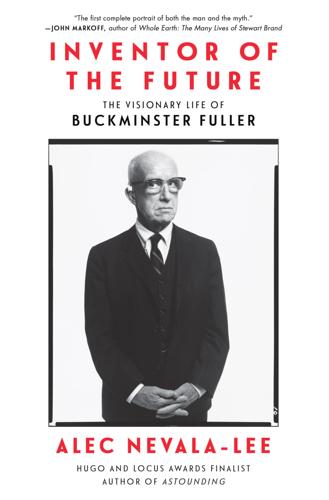
Inventor of the Future: The Visionary Life of Buckminster Fuller
by
Alec Nevala-Lee
Published 1 Aug 2022
“He had proposed all his life to write a book attempting to describe all physical and metaphysical experiences in terms of the tetrahedron,” Applewhite recalled. “What I proposed was to help him complete this task and to discover whether I would become a convert in the process.” Reviewing the material that already existed, Applewhite compiled an immense file of alphabetized excerpts on index cards, and at their first working session, he agreed to assemble the extracts into a rough draft, with the goal of producing the print equivalent of Fuller’s “thinking out loud.” Fuller had spent his life assigning impossible tasks to collaborators, leaving them to put together thousands of pieces, and Applewhite—like Sadao—neither took a salary nor sought credit as his coauthor.

Foucault's Pendulum
by
Umberto Eco
Published 15 Dec 1990
But then my friends in publishing began sending me manuscripts and foreign books to read—naturally, the least appealing and for little money. Still, I was accumulating experience and information, and I never threw anything away. I kept files on everything. I didn’t think to use a computer (they were coming on the market just then; Belbo was to be a pioneer). Instead, I had cross-referenced index cards. Nebulae, Laplace; Laplace, Kant; Kant, Konigs-berg, the seven bridges of Konigsberg, theorems of topology...It was a little like that game where you have to go from sausage to Plato in five steps, by association of ideas. Let’s see: sausage, pig bristle, paintbrush, Mannerism, Idea, Plato. Easy.
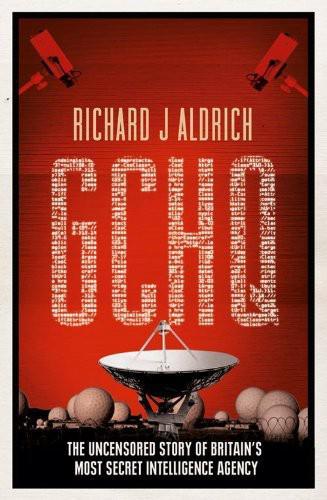
GCHQ
by
Richard Aldrich
Published 10 Jun 2010
In 1967, Ken Sly, who had commanded the sigint unit at Hong Kong, took over from Nicodemus Doniach as head of a GCHQ branch called the Joint Technical Language Service, a group of thirty highly qualified linguists who not only undertook translations, but also compiled material ranging from dictionaries of Soviet military terms to handbooks of Arab names. When Sly took over they were working from a vast wall of index cards thirty yards long. He began a determined programme of computerisation, so this vast body of knowledge gradually became available to everyone in GCHQ.40 This change was of the first importance. GCHQ could see that computers were the shape of the future, and wanted to use them to improve every stage of the intelligence process.

The Warmth of Other Suns: The Epic Story of America's Great Migration
by
Isabel Wilkerson
Published 6 Sep 2010
About twenty people, including Ida Mae, James, and Betty, are still going over their hot sheets as they take their seats in the gray metal folding chairs in a basement with yellow cinder-block walls and a red-painted concrete floor, when the meeting is called to order. The moderator asks what new problems there are. James and several others reach for the index cards being distributed to write out the things they have witnessed. The residents often do not put their names on the cards for fear of reprisal. Ida Mae rarely speaks up because she is convinced the gangs send moles to the meetings, which are public after all, to see who is snitching. In the meeting, the people learn that Beat 422 held a march against gangs and crime, but they are not certain if they can muster such a march.

The Portable Atheist: Essential Readings for the Nonbeliever
by
Christopher Hitchens
Published 14 Jun 2007
It has prevented me, and still prevents me, from conceiving of any form of providence or transcendent justice…I must nevertheless admit that I experienced (and again only once) the temptation to yield, to seek refuge in prayer. This happened in October 1944, in the one moment in which I lucidly perceived the imminence of death…naked and compressed among my naked companions with my personal index card in hand, I was waiting to file past the ‘commission’ that with one glance would decide whether I should go immediately into the gas chamber or was instead strong enough to go on working. For one instance I felt the need to ask for help and asylum; then, despite my anguish, equanimity prevailed: one does not change the rules of the game at the end of the match, nor when you are losing.

The Art of SEO
by
Eric Enge
,
Stephan Spencer
,
Jessie Stricchiola
and
Rand Fishkin
Published 7 Mar 2012
, The canonical tag, The canonical tag including directly within HTTP response header for your page, The canonical tag using to eliminate duplicate pages, How to Avoid Duplicate Content on Your Own Site using with content sorted in multiple ways, Why Would You Want to Use Cookies or Session IDs to Control Search Engine Access? CAPTCHA, Using login/password protection, Multimedia Is Becoming Indexable card sorting, Taxonomy and ontology Cascading Style Sheets, Glossary (see CSS) category structuring on websites, Category structuring, Content Management System (CMS) Issues CC (Creative Commons) licensed content, finding, Finding Creative Commons (CC) licensed content CDNs (Content Delivery Networks), search engines crawling sites on, Search engine–friendly navigation guidelines celebrity watchers, attracting, Optimizing Your Website for Local Search Engines Cemper.com, link-building toolkit, Link Research Tools Chambers of Commerce, Additional local info guides Change of Address tool, Google Webmaster Tools, Expectations for Content Moves charitable donations, buying links with, Methods for buying links charitable initiative, Second Chance Trees, as link bait, How far should you go with link bait?

Rick Steves Florence & Tuscany 2017
by
Rick Steves
Published 8 Nov 2016
It has the feel of a Renaissance church, with its high ceiling, rows of ergonomic “pews,” and stained-glass windows. But instead of religious scenes, the windows are filled with Medici heraldic emblems. Knowledge is power, and this was like a public library—but the Medici were firmly in control. Various books were literally chained to the pews as the information was organized by subject (notice the proto-“index cards” at the front of each pew). The library includes special exhibits on historic books (in back room). Nearby: Around the back end of the church is the entrance to the Medici Chapels and the New Sacristy, designed by Michelangelo for a later generation of dead Medici. And the lanes leading to Mercato Centrale (one block north) are clogged with the vendor stalls of San Lorenzo Market.
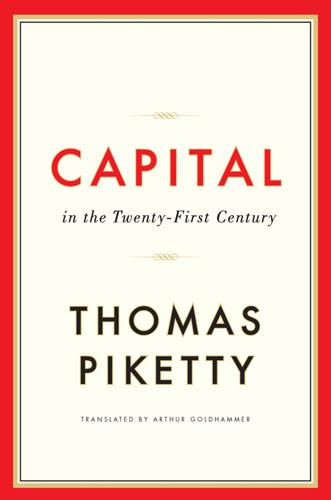
Capital in the Twenty-First Century
by
Thomas Piketty
Published 10 Mar 2014
Objectively speaking, it was far more difficult to deal with large volumes of historical data in Kuznets’s time than it is today. This was true to a large extent as recently as the 1980s. In the 1970s, when Alice Hanson Jones collected US estate inventories from the colonial era and Adeline Daumard worked on French estate records from the nineteenth century,33 they worked mainly by hand, using index cards. When we reread their remarkable work today, or look at François Siminad’s work on the evolution of wages in the nineteenth century or Ernest Labrousse’s work on the history of prices and incomes in the eighteenth century or Jean Bouvier and François Furet’s work on the variability of profits in the nineteenth century, it is clear that these scholars had to overcome major material difficulties in order to compile and process their data.34 In many cases, the technical difficulties absorbed much of their energy, taking precedence over analysis and interpretation, especially since the technical problems imposed strict limits on their ability to make international and temporal comparisons.
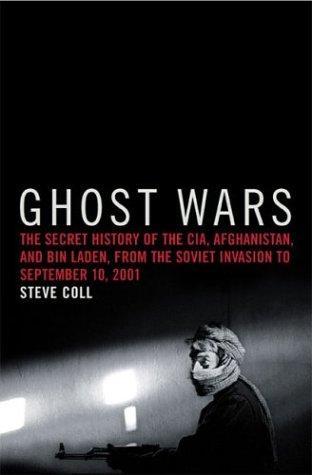
Ghost Wars: The Secret History of the CIA, Afghanistan, and Bin Laden, from the Soviet Invasion to September 10, 2011
by
Steve Coll
Published 23 Feb 2004
The diplomats and CIA officers in Islamabad had spent much of December burning compromised documents and reorganizing their shattered offices in makeshift quarters at a U.S. Agency for International Development (AID) compound near the burned embassy grounds. Worried about another attack on their offices by rioters, the CIA had shipped back to Langley decades’ worth of index cards filled with names and details of contacts and agents. It took more diplomatic fortitude than many of them possessed to suddenly embrace Zia as a strategic partner. As many inside the embassy saw it, the Pakistani general had left them for dead on that Wednesday afternoon in November. As Soviet armor rolled into Afghanistan, there were sarcastic suggestions from the Islamabad CIA station of an alternative new American policy toward Pakistan: the secret export of hundreds of thousands of Russian dictionaries and phrase books to Islamabad for government use after the Soviet regional occupation was complete.

Golden Holocaust: Origins of the Cigarette Catastrophe and the Case for Abolition
by
Robert N. Proctor
Published 28 Feb 2012
Casing materials typically include flavorants such as licorice, sugar, and coumarin but also moistening agents such diethylene glycol and oxidants such as potassium citrate. And freebasing agents such as urea or ammonia. Central File Also referred to as “Cenfile” or “Tobacco Litigation File.” Central repository of smoking and health documents maintained as index cards in the 1950s and computerized from the 1960s on. Contained 96,558 documents as of 1984. Committee of Counsel Also known as the “Policy Committee of Lawyers” or “the Secret Six,” the powerful group of lawyers from the six largest U.S. tobacco firms—American Tobacco, Philip Morris, Lorillard, Brown & Williamson, Liggett & Myers, and R.
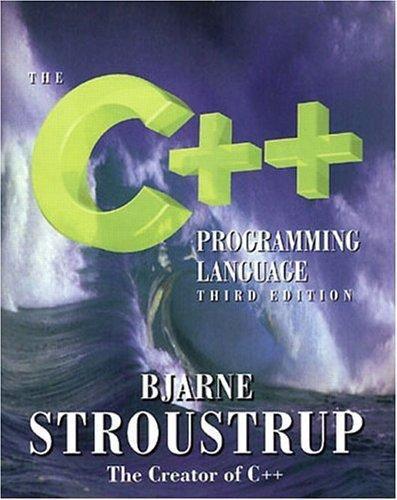
The C++ Programming Language
by
Bjarne Stroustrup
Published 2 Jan 1986
One way to evolve a set of useful classes from an initial set of candidates is to simulate a system, with designers taking the roles of classes. This brings the inevitable absurdities of the initial ideas out into the open, stimulates discussion of alternatives, and creates a shared understanding of the evolving design. This activity can be supported by and documented by notes on index cards. Such cards are usually called CRC cards (‘‘Class, Responsibility, and Collaborators’’; [Wirfs-Brock,1990]) because of the information they record. The C++ Programming Language, Third Edition by Bjarne Stroustrup. Copyright ©1997 by AT&T. Published by Addison Wesley Longman, Inc. ISBN 0-201-88954-4.

Empire of Things: How We Became a World of Consumers, From the Fifteenth Century to the Twenty-First
by
Frank Trentmann
Published 1 Dec 2015
After the war, department stores began to experiment with ‘customer control’. This technique was driven by credit departments, which compiled ledgers of inactive customers and then targeted them directly to lure them back to the store. Managers knew that customers who used credit tended to spend more. Stores kept index cards with tabs to indicate whether customers had bought hats or shoes, at what cost and time of year, at which branch, and whether they were married or single. Instead of just checking accounts, credit managers moved into the business of promoting sales. In the 1930s, the punch card and data processing arrived, which enabled shops to segment customers by income.
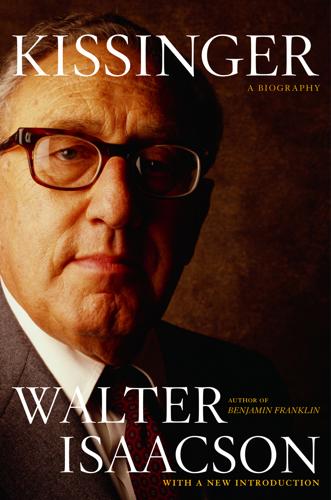
Kissinger: A Biography
by
Walter Isaacson
Published 26 Sep 2005
Kissinger wandered in and introduced them to Halperin. It was the first time, Halperin later noted, that he met the attorney general.4 While Halperin was being walked down the beach, an FBI agent in Washington named James Gaffney was heading to the headquarters of the Chesapeake and Potomac Telephone Company. Written on an index card he carried was 469–7818, the telephone number for 8215 Stone Trail Drive in suburban Bethesda—the home of Morton and Ina Halperin and their three sons. Gaffney did not need anything else—no court order, no letter from the attorney general. It was urgent, he told his contact at the phone company.
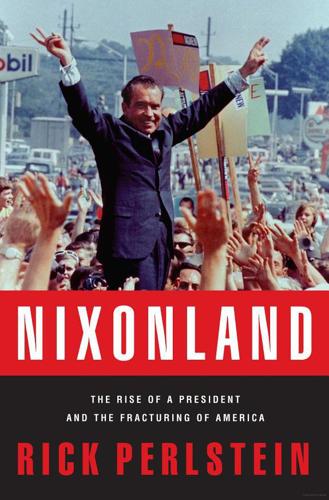
Nixonland: The Rise of a President and the Fracturing of America
by
Rick Perlstein
Published 1 Jan 2008
He was underwhelmed by the event at any rate. “Television is not as effective as it was in 1952,” he had told a journalist. “The novelty has worn off.” Kennedy prepared like a monk. The afternoon of the showdown, he capped off the last of three intensified practice sessions with a fortifying nap, piles of index cards covering him like a security blanket. While Kennedy slept, Nixon campaigned in front of another hostile union crowd. His TV advisers became increasingly frenzied as the appointed hour approached; they were kept away from him, and weren’t able to brief him on the debate format. Nixon took a single phone call of advice, from his vice-presidential candidate, Henry Cabot Lodge.

Rationality: From AI to Zombies
by
Eliezer Yudkowsky
Published 11 Mar 2015
* 38 Positive Bias: Look into the Dark I am teaching a class, and I write upon the blackboard three numbers: 2-4-6. “I am thinking of a rule,” I say, “which governs sequences of three numbers. The sequence 2-4-6, as it so happens, obeys this rule. Each of you will find, on your desk, a pile of index cards. Write down a sequence of three numbers on a card, and I’ll mark it ‘Yes’ for fits the rule, or ‘No’ for not fitting the rule. Then you can write down another set of three numbers and ask whether it fits again, and so on. When you’re confident that you know the rule, write down the rule on a card.
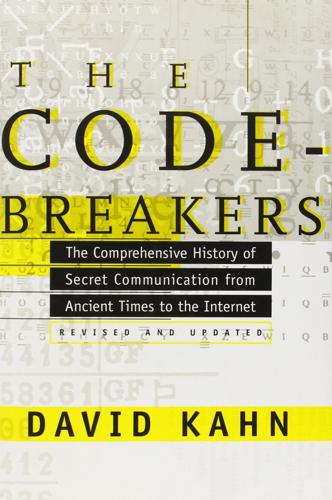
The Codebreakers: The Comprehensive History of Secret Communication From Ancient Times to the Internet
by
David Kahn
Published 1 Feb 1963
Then one hot morning in the summer of 1953, newsboy James Bozart, who had just received it as part of 50 cents in change from a customer on his route at 3403 Foster Avenue in Brooklyn, dropped it with four other nickels and a quarter on the staircase. When he bent over to pick it up, he found that it had split in half. One of the hollowed-out halves held a piece of microfilm five-sixteenths of an inch square, wrapped in tissue paper. “It was a picture of a file card, or an index card,” Bozart said. “There appeared to be a row of numbers on it.” He turned it over to police, who gave it to the F.B.I. , who must have immediately begun trying to crack it. They failed. Four years later, Reino Hayhanen defected to the U.S. embassy in Paris as he was being sent back to the Soviet Union by the dissatisfied Abel for a “vacation.”